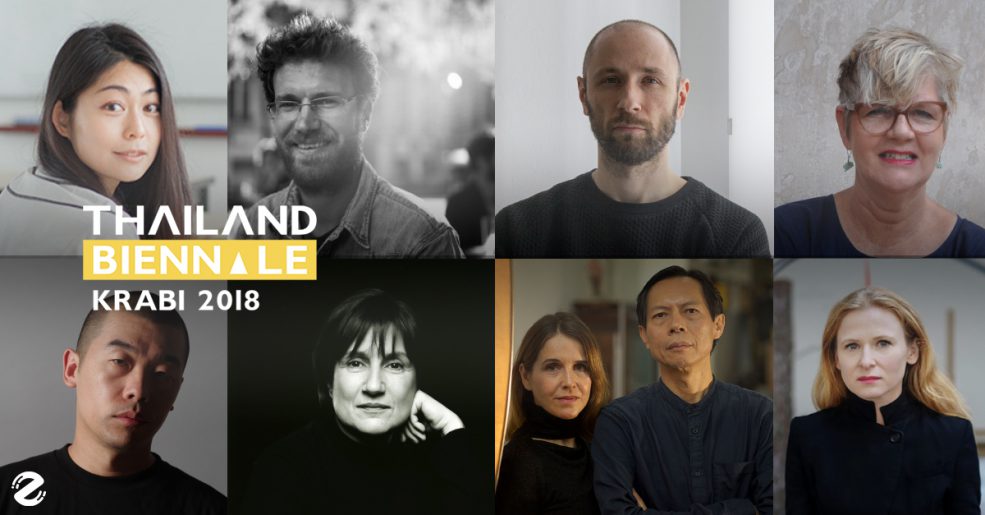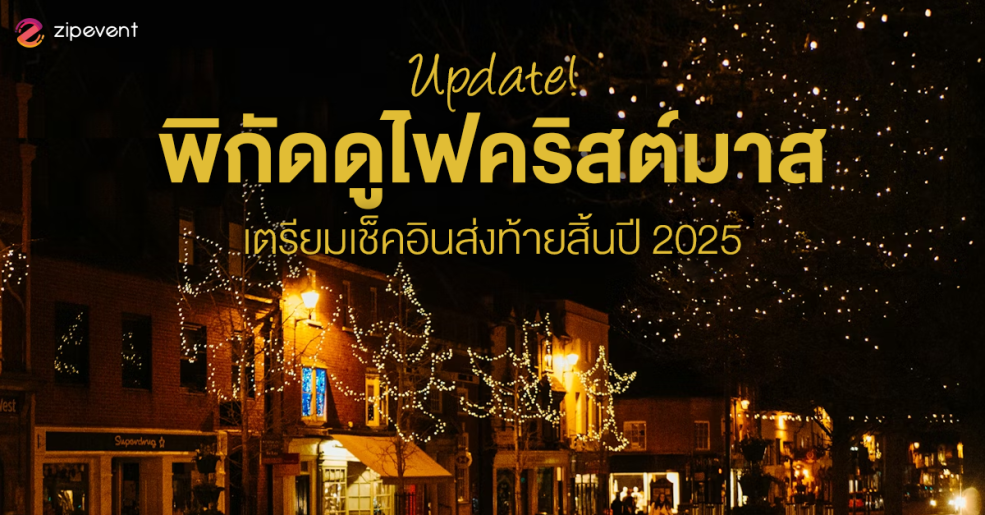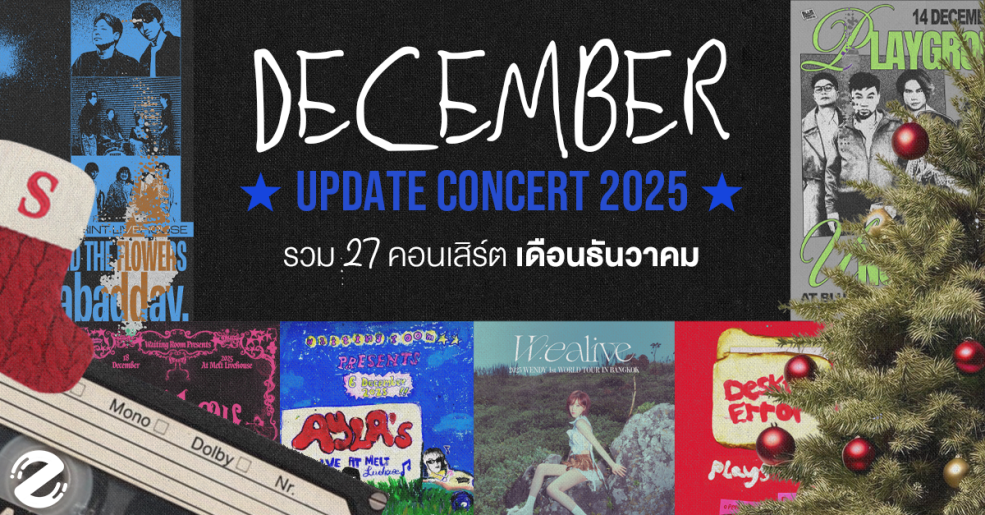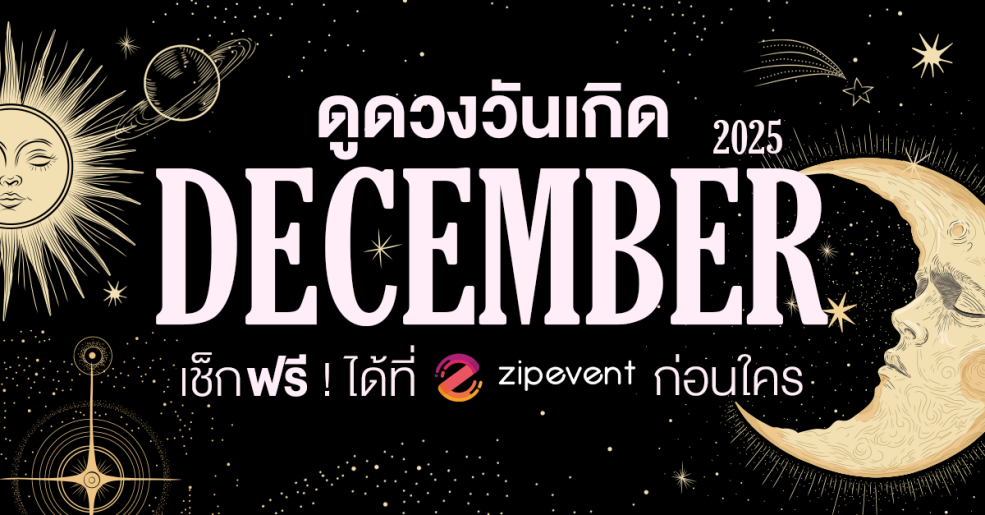Thailand Biennale 2018 has been initiated to promote Krabi as a global art city which involves the following three sections; Section 1 is an international art competition. An open call will be announced for emerging artists from worldwide. An international jury together with lead curator will select artists to exhibit in an outdoor site – specific exhibition. Section 2 is an exhibition of artworks of Thai and international artists under the theme of “Edge of the Wonderland”. The chosen artworks will be exhibited at several sites in Krabi that have historical, natural, and cultural significance including Than Bok Khorani National Park, Hat Noppharat Thara – Mu Koh Phi Phi National Park, and other public places around Krabi town. Only one prize will be awarded to the most talented artist. Section 3 is academic activities comprised mythoof educational and art–knowledge exchange such as curator talk panel, art workshops for Thai and international artists and art students. The four-month exhibition is set to launch on 2nd November 2018 and will take place in many splendid sites all over Krabi until 28th February 2019.
The first edition, Edge of the Wonderland, presents site-specifically commissioned work by 57 artists, including 50 artists (groups) from 25 countries and areas, invited through our curatorial research. Additionally, 3 artists (groups) were selected by the Jury Panel through the Artist Open Call and 4 National Artists of Thailand were recommended by OCAC. This Biennale encourages visual explorations, engenders a new way of thinking, and invites everyone to join the journey, an adventure, and to reflect on the relationship between art, nature and everyday life.
Site : Ao Nang Beach
Kamin LERTCHAIPRASERT & Suriya UMPANSIRIRATANA
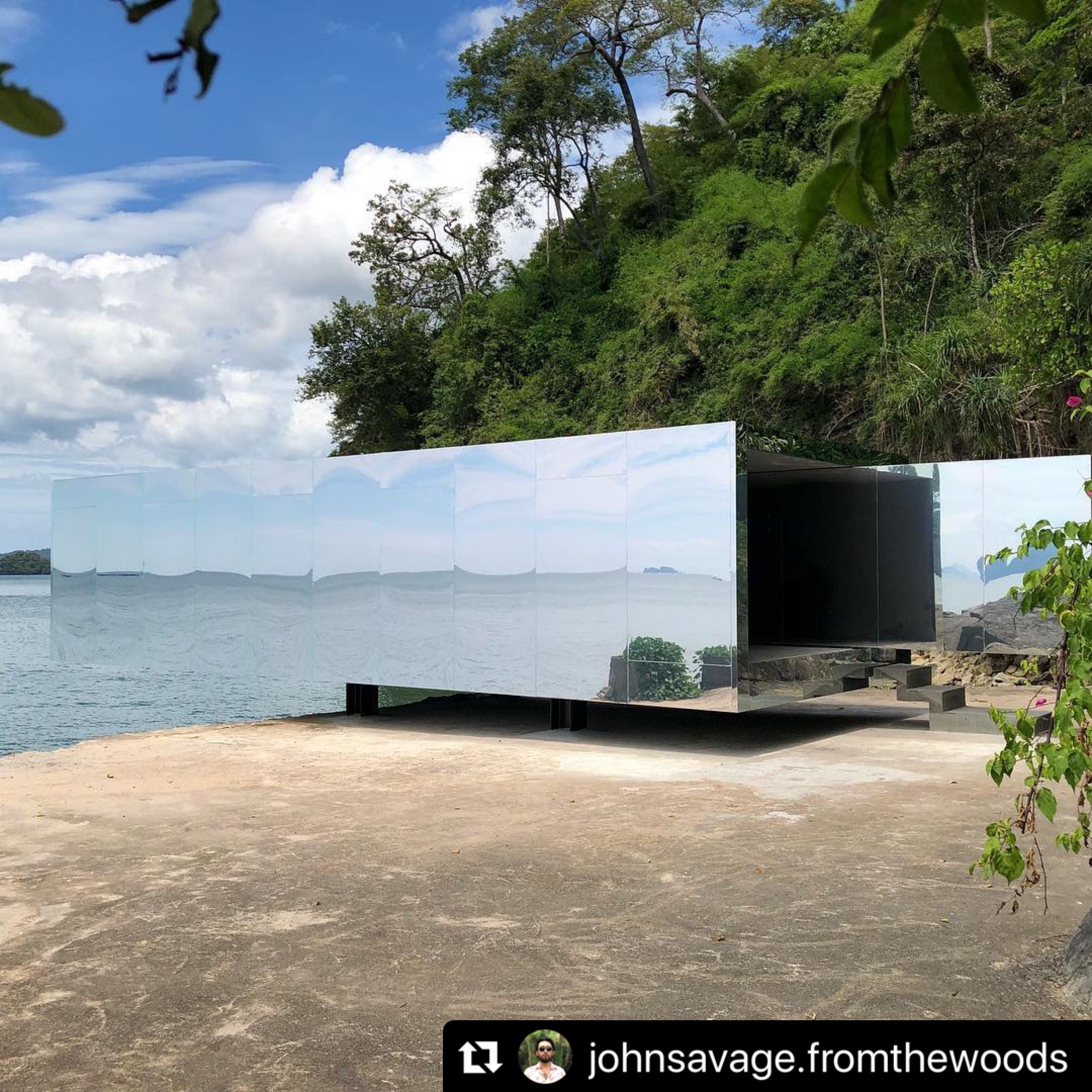
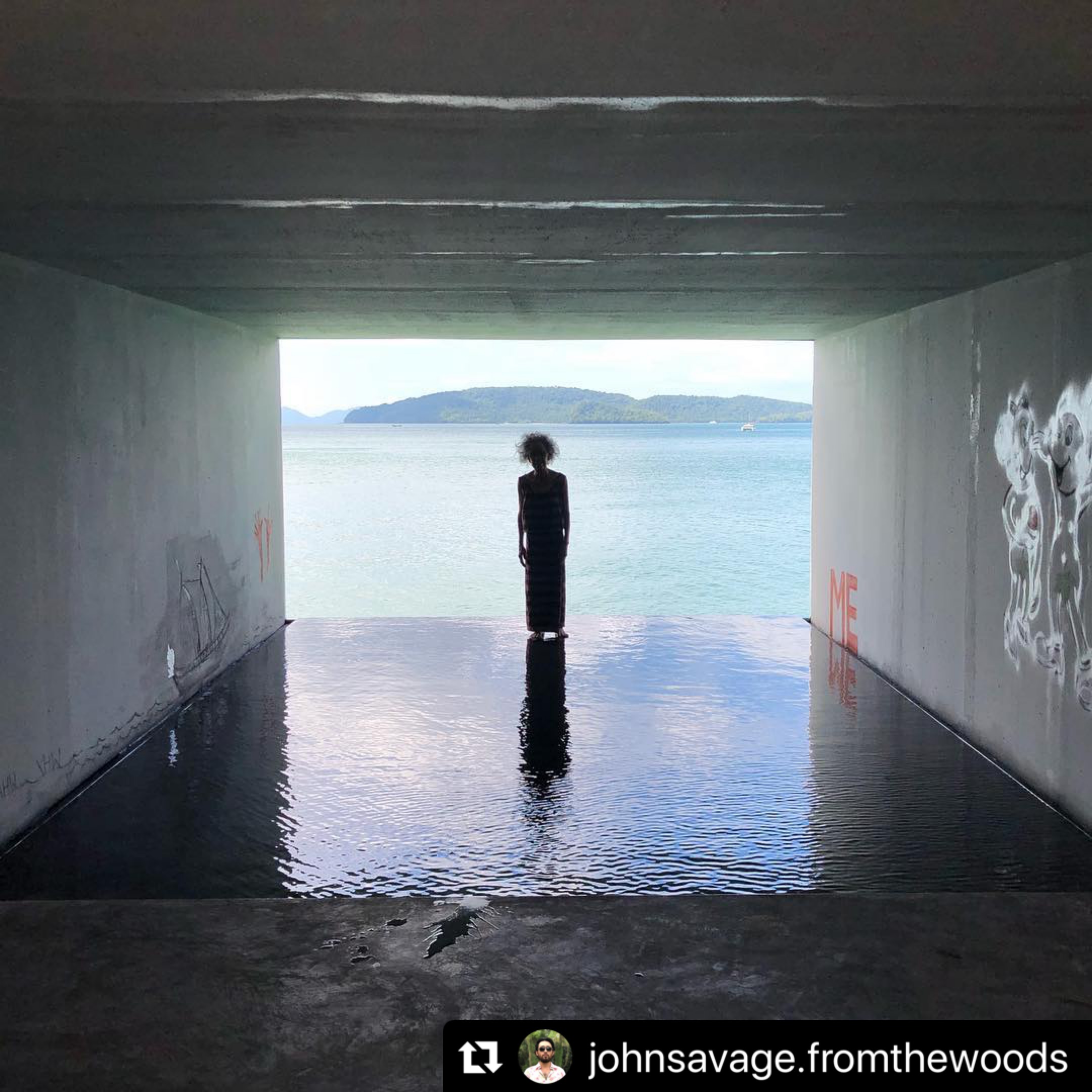
Rather than consider his projects as site- specific art, Lertchaiprasert has named them Life-specific. His approach combines the contextualisation of the physicality of the space and the spiritual aspects of life in general. Inspire by Krabi, Lertchaiprasert collaborated with Umpansiriratana, a renowned architect, to create a cave where conditions can be highlighted. In the cave stands a sculpture of Yai Sa, an elder lady who has been waiting for her partner who left home to find the ultimate truth. For Lertchaiprasert, she is the symbol of love and awaiting, which are human qualities. The artist chose a hidden clift where tourists and locals alike find a peaceful refuge from the business of the resort town. Not only does No Sunrise No Sunset respond to Krabi and Ao Nang but is also a response to the condition of living itself. The artist argues that the work can also be installed everywhere because “The sun doesn’t move, but the world is spinning by itself.” It urges us to take a different perspective in order to see the nature world anew in the way it is, and not from our subjective point of view.
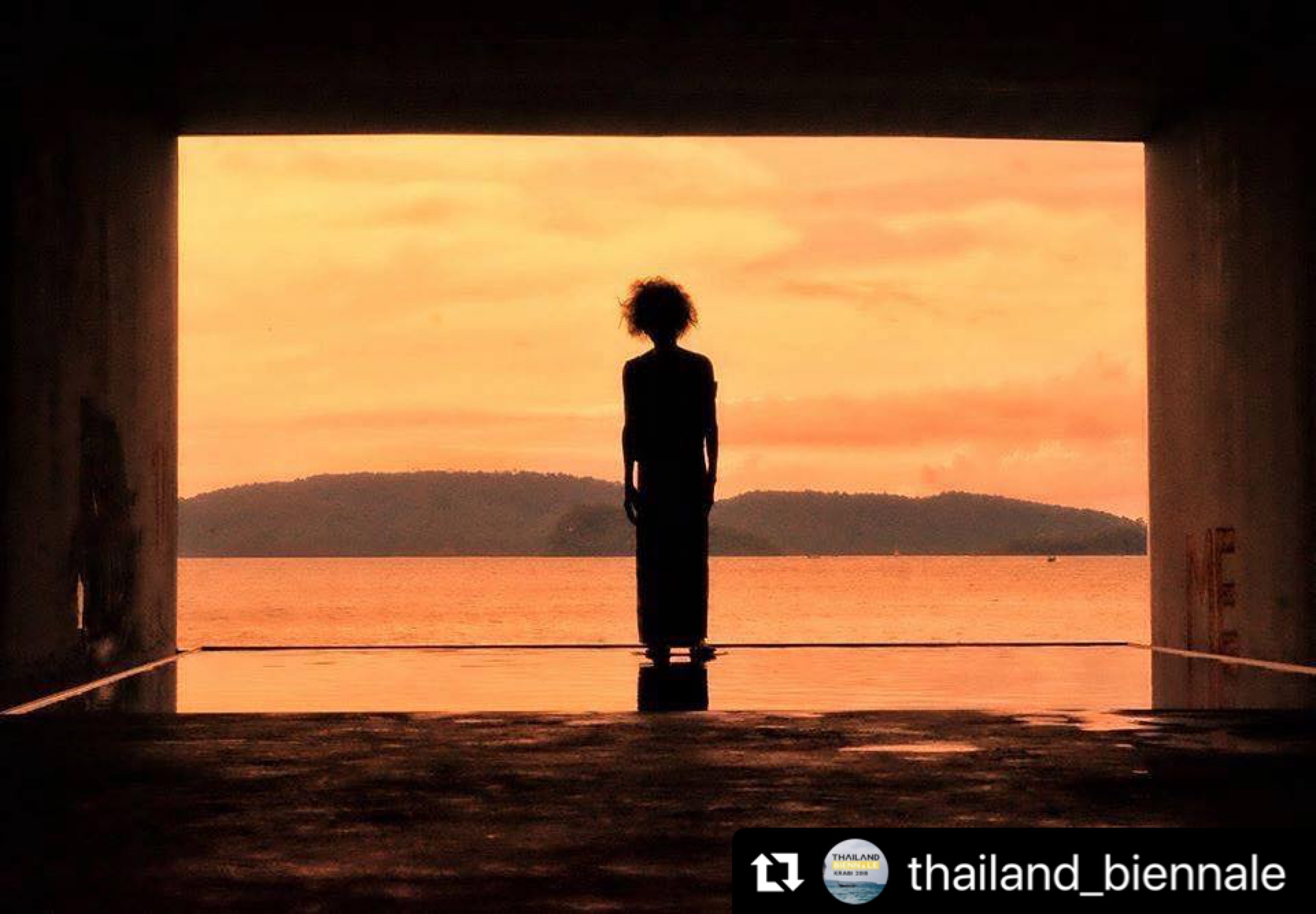
TRAN Luong
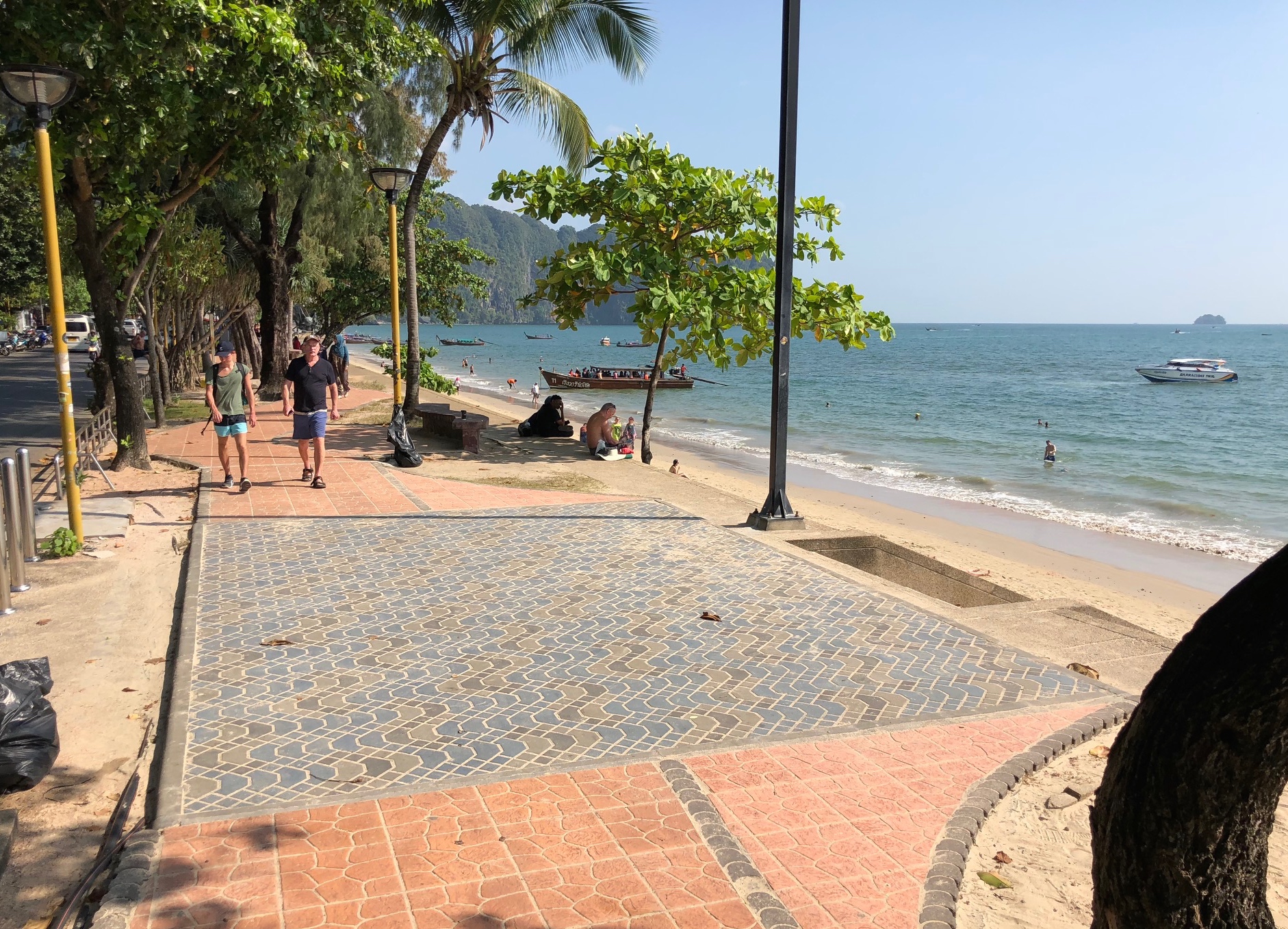
When travelling, most travelers would enjoy the beauty of nature and the scenery surrounding them. About the Hiding of the Giant Jellyfish is an artwork that calls for a sensation of a sudden wakefulness to inner matters that are often invisible to visitors. Jellyfish are transparent but omniscient creatures in the ocean. They are hard to see, quiet, untouchable, and always unconsciously afloat. For Thailand Biennale, Tran places a hidden “jellyfish” underneath the footpath of Ao Nang beach. Although there is initially nothing to be seen at the site, it is only when stepped upon the artwork appears. As tourists walk on this footpath, the floor will slightly sink and it feels as if they are stepping on an enormous moving creature underneath. Dealing with the feeling of imbalance, the human’s neurotic balance system will immediately alert, sending a glimpse of flashback into the viewer’s biological existence, and physically wake up their conscious mind to the surroundings. Thus, the jellyfish is there to scintillate hidden issues that otherwise are easily missed.
Site : Khao Khanab Nam Caves
Donna ONG
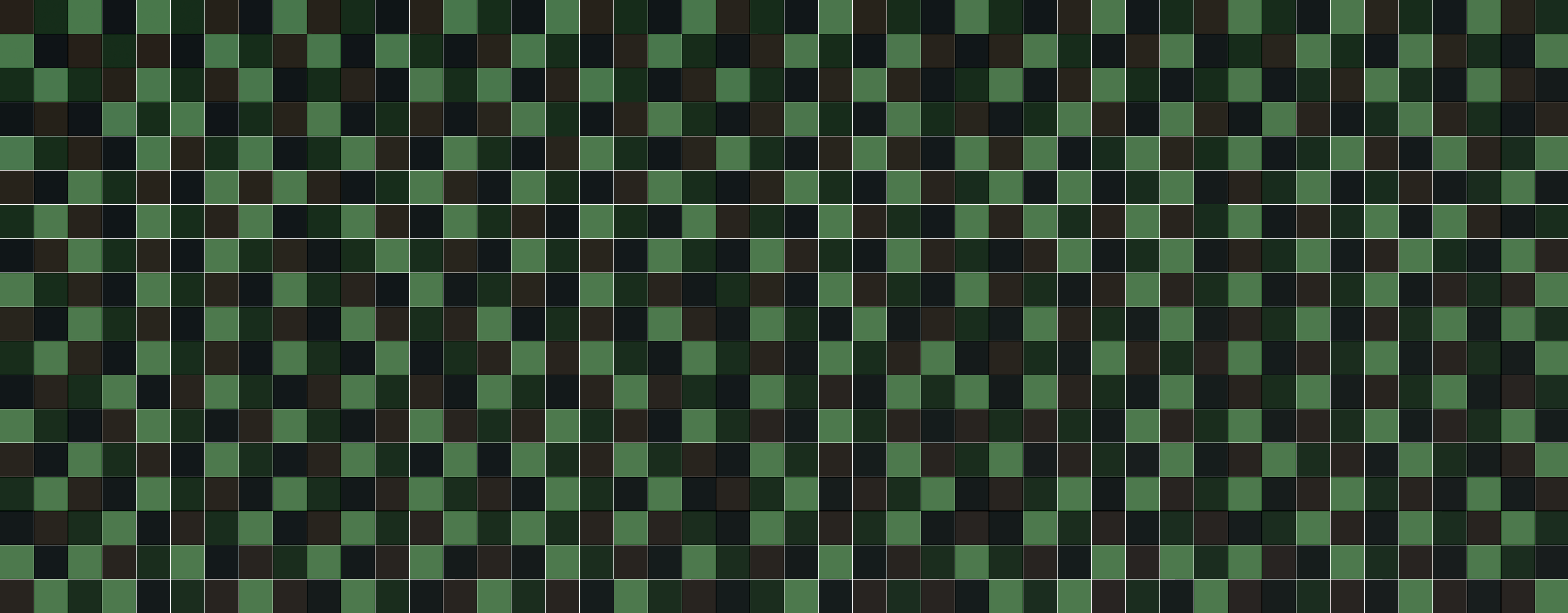
Donna Ong’s practice is inspired not only by the tropical flora and assumed, but also the colonial gaze that presupposed our vision of them. Her artworks always traces into the historical images of tropical landscapes. One of her primary sources is a collection of stylized lithographs produced in the 18th century by the western explorers for their audiences who lived in temperate zones. Four Colours Make a Forest focuses on the relationship between these historical re- presentations, romanticisation and idealisation through the production of tropical images and our embedded escapist desire to buy into these imagined paradises. She built a wire mesh fence that also resembles a typical commercial billboard. It presents a collage that consist of images of tropical landscapes from her archive on one side. On the other side of the artwork is an image that is a Digital Camouflage pattern used by the military, which is the simplest representation of the tropics though it signifies a very different meaning.
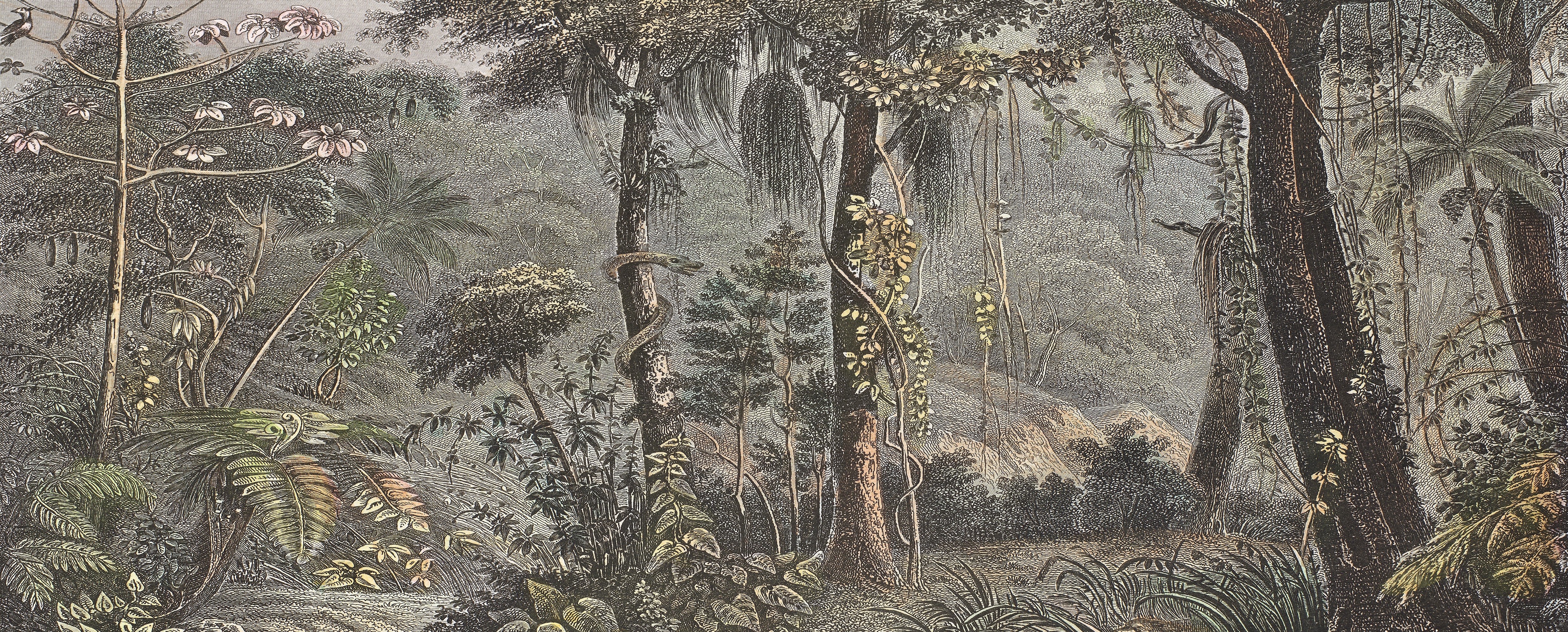
Chulayarnnon SIRIPHOL
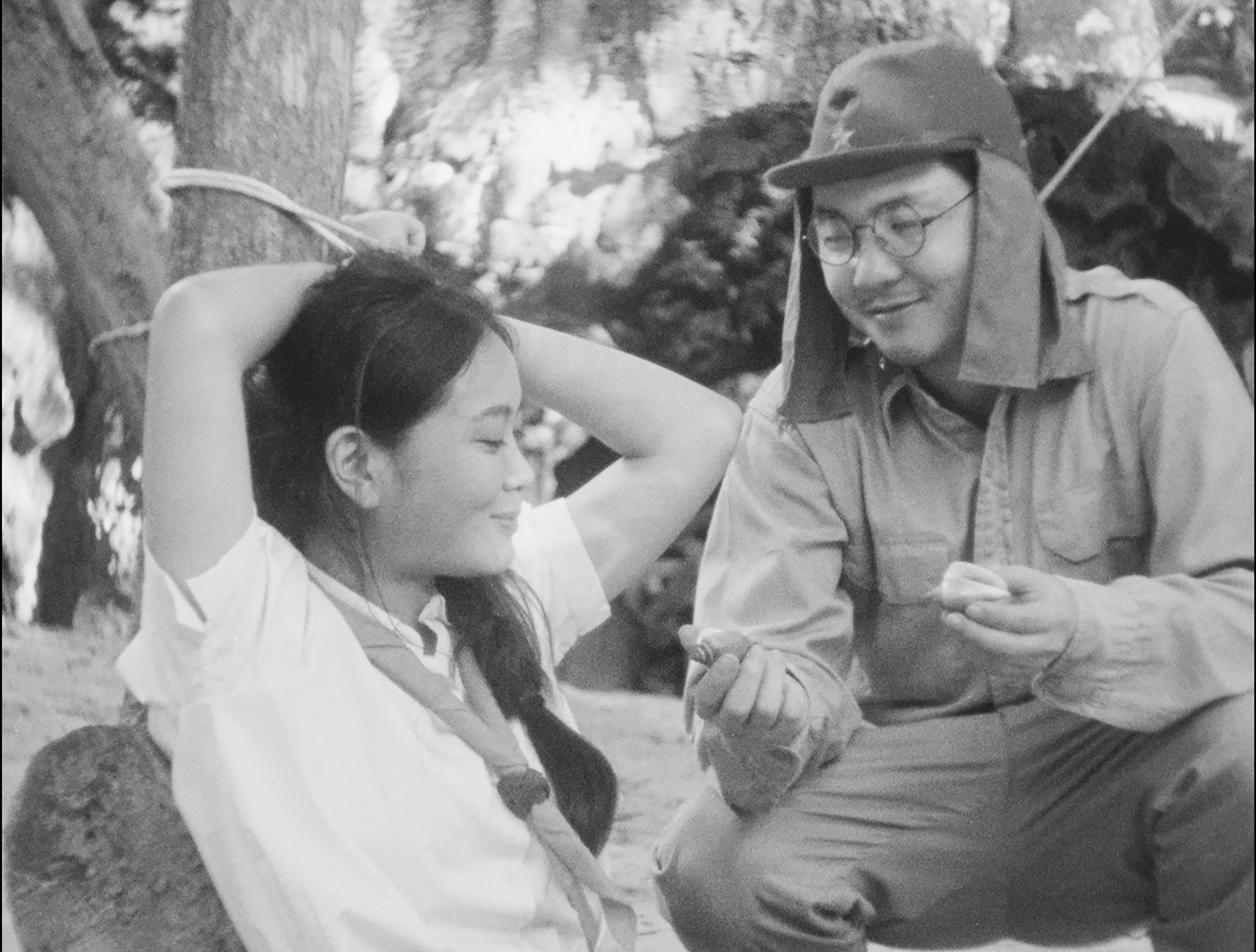
Birth of Golden Snail is a short film based on the history of Khao Kha Nab Nam during the pre-historic and WWII. It navigates the boundaries between fiction and folktale, that are filled with fantasy, and historical facts. It also plays with the physicality of the natural cave being transformed into a screening space and the internal spaces within the film. Similar to early cinema, using 16 mm black and white film and its projector conveys a metaphor about the origin of early films and the origin of human beings; starting from the dark cave of motherhood into the illumination of the outer world.
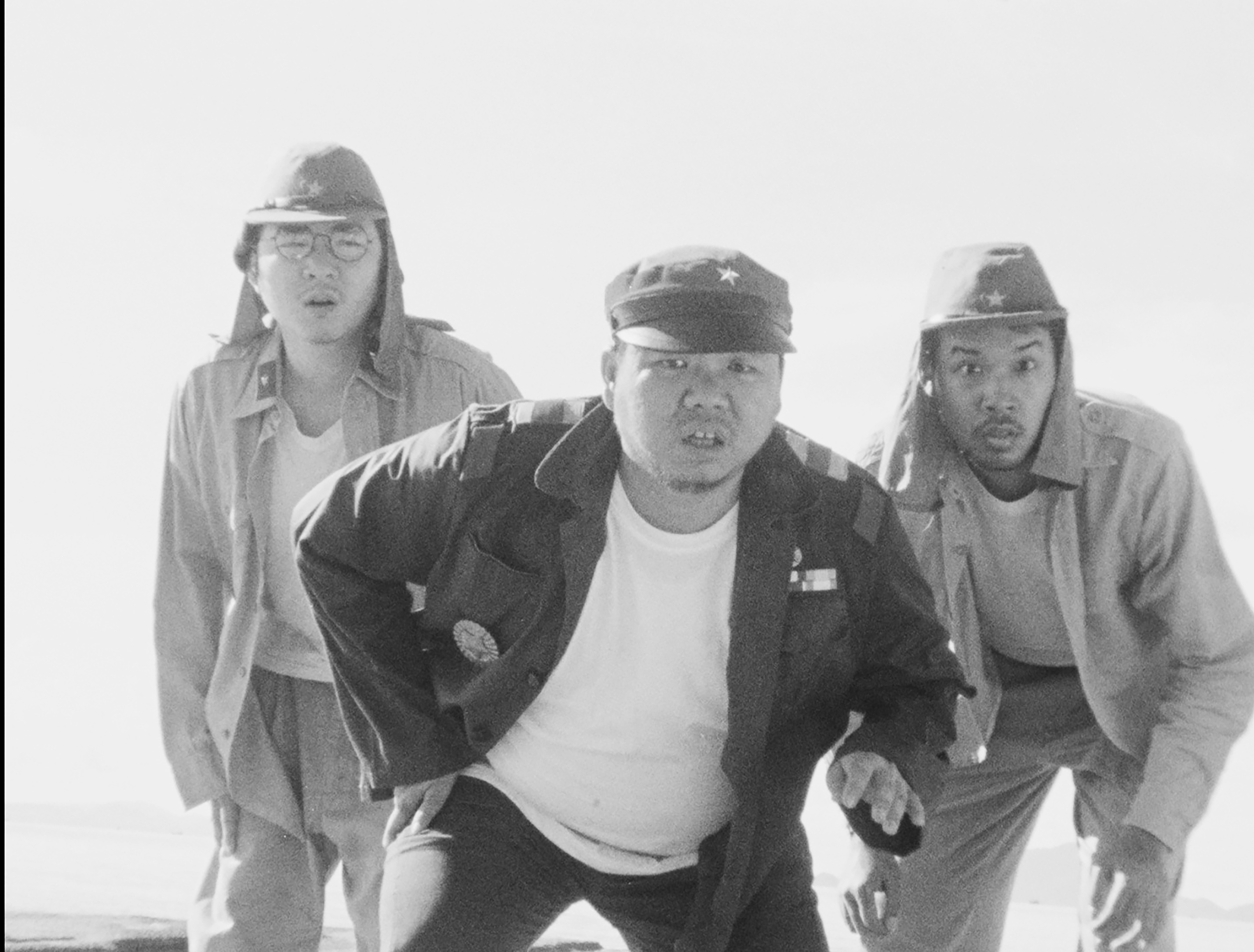
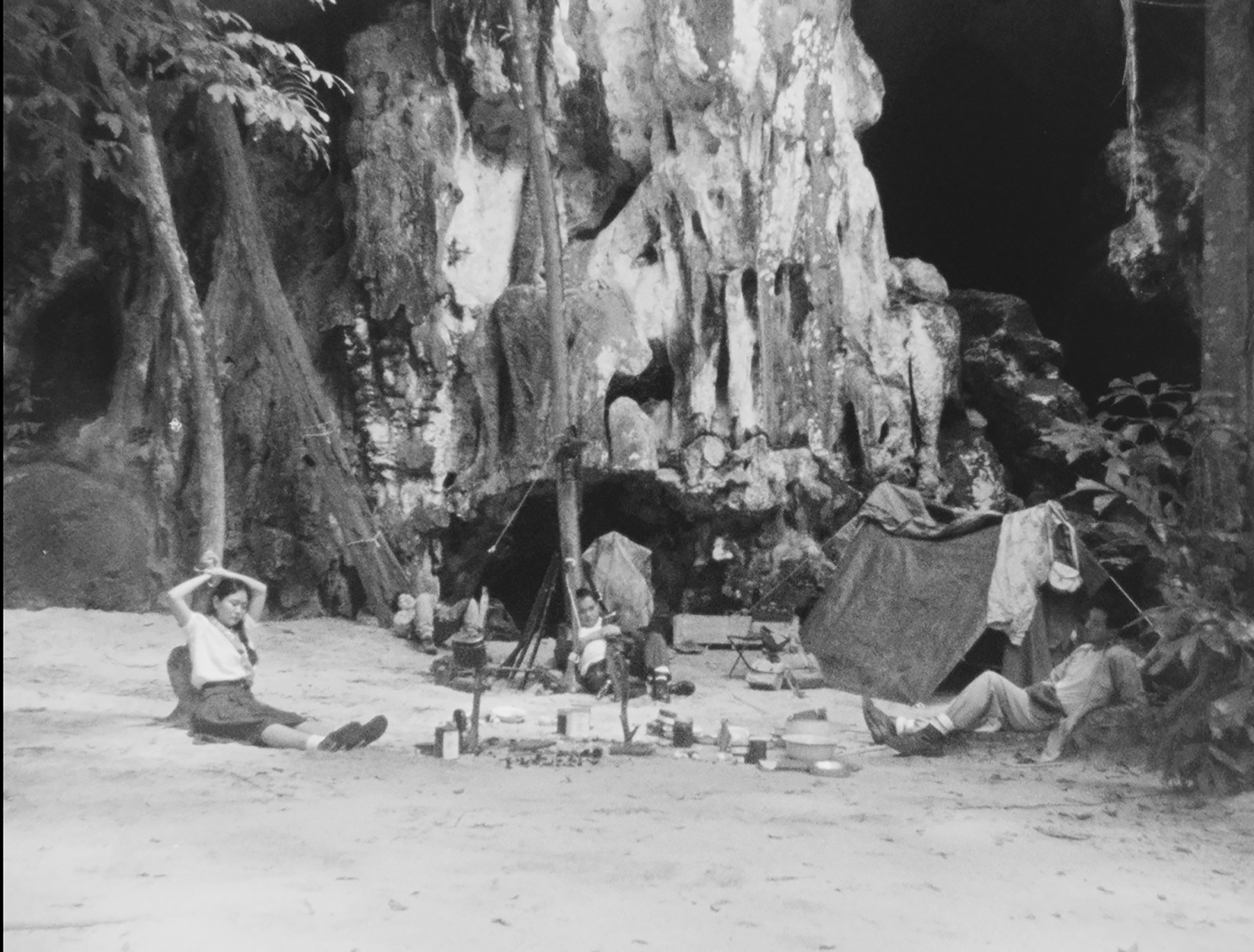
TU Wei-cheng
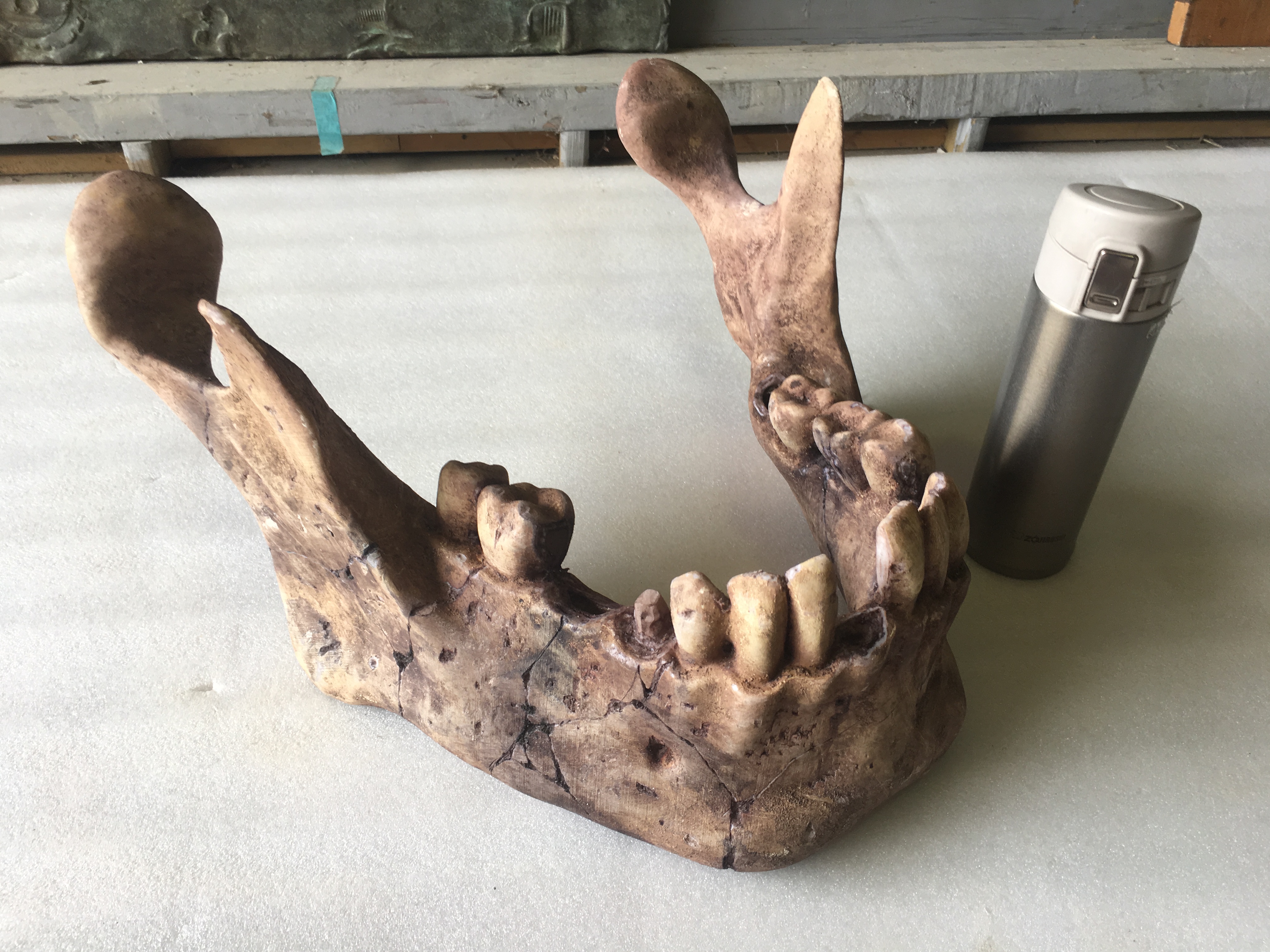
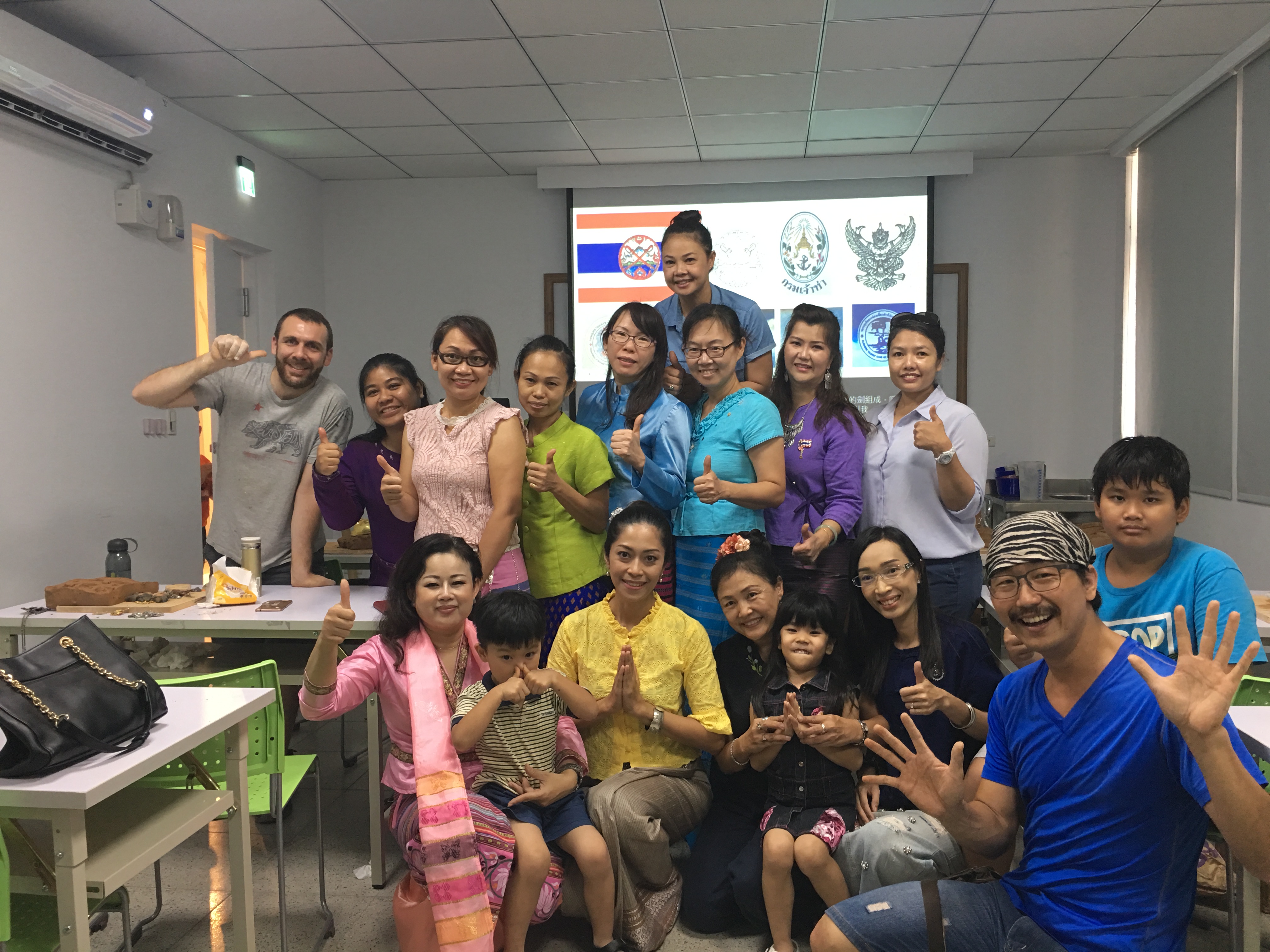
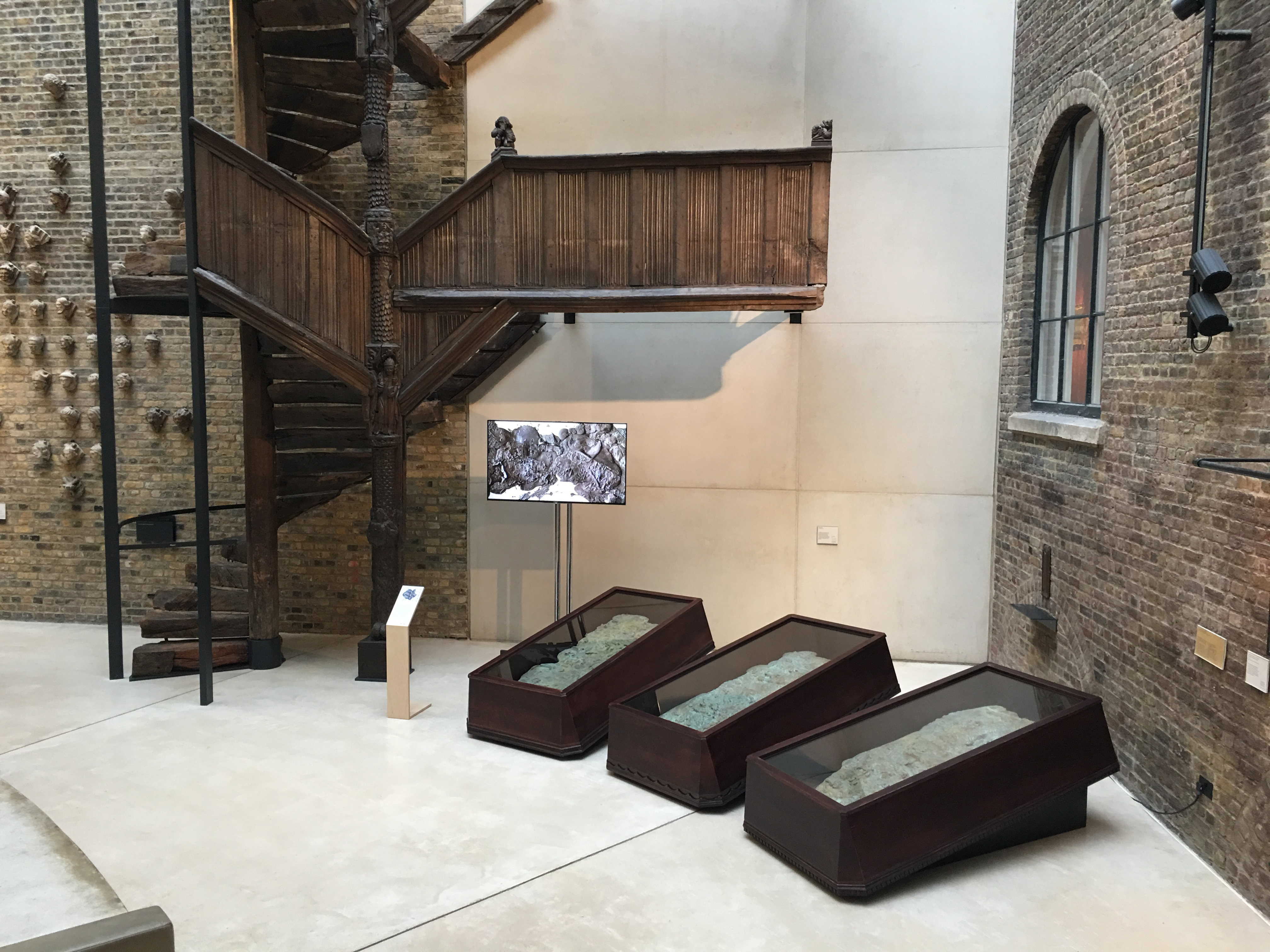
In Thai culture, traditional and popular myths insinuate themselves in history. Tu Wei- cheng explores the boundaries between the realms of the real and fictional to rethink history. His installation includes an information board relating the past and popular beliefs around the region of Krabi, which replaces the fake archaeological ruins previously displayed outside the cave. Inside of the cave the artist further challenges our expectations of exhibiting spaces through archaeological replicas. He recreates excavation works and written plates to document Thai history. A series of fictitious artefacts are ennobled by glass displays that include bronze ware, clay statues and tools traditionally belonging to Thai culture and legends. It becomes hard to distinguish the fake and the authentic. Archaeology, through the reproduction of accurate looking fakes and their preservation in museum-like glass cases, testify a past that is situated on the edge between reality and myth.
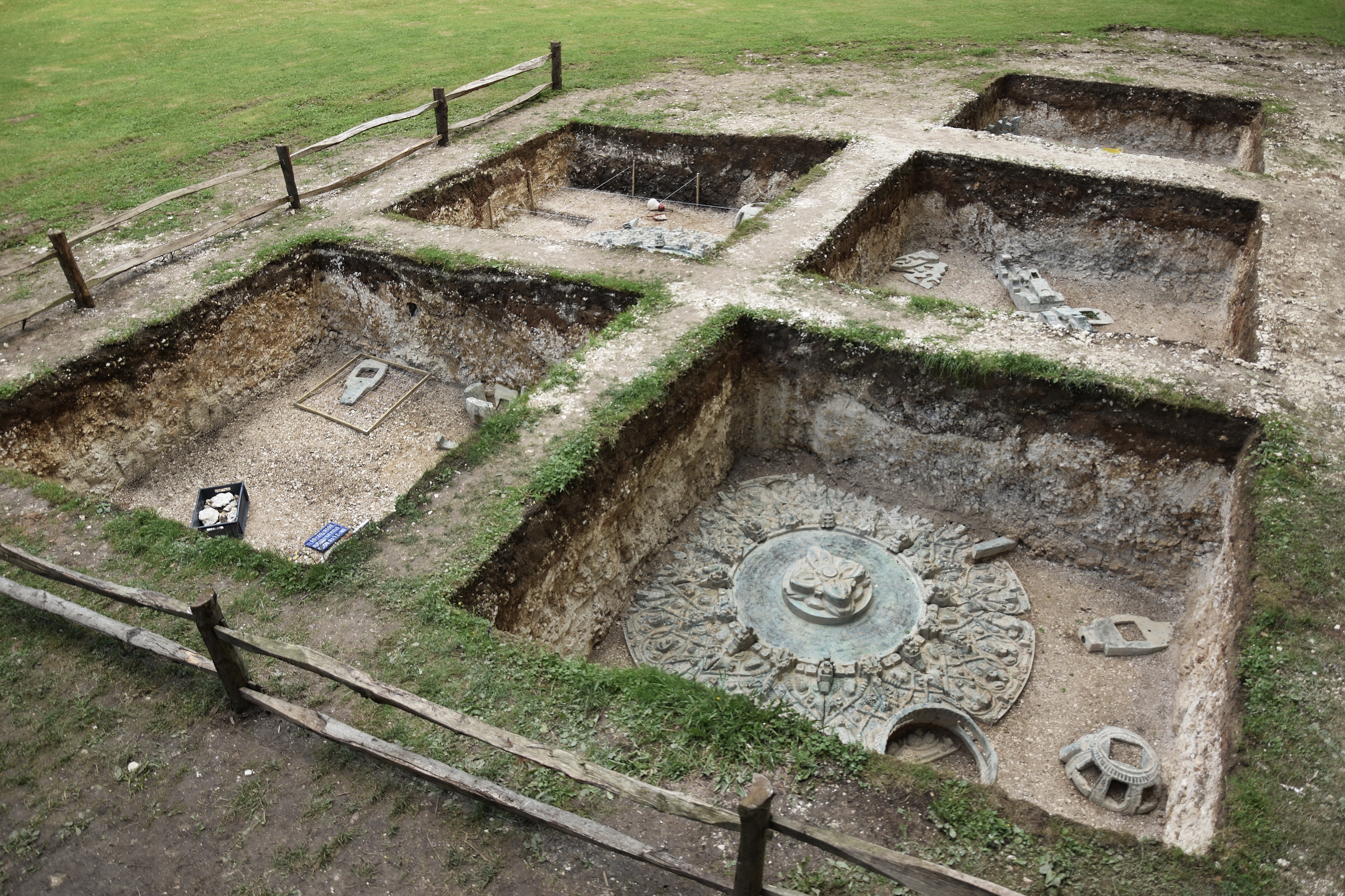
ZHANG Peili
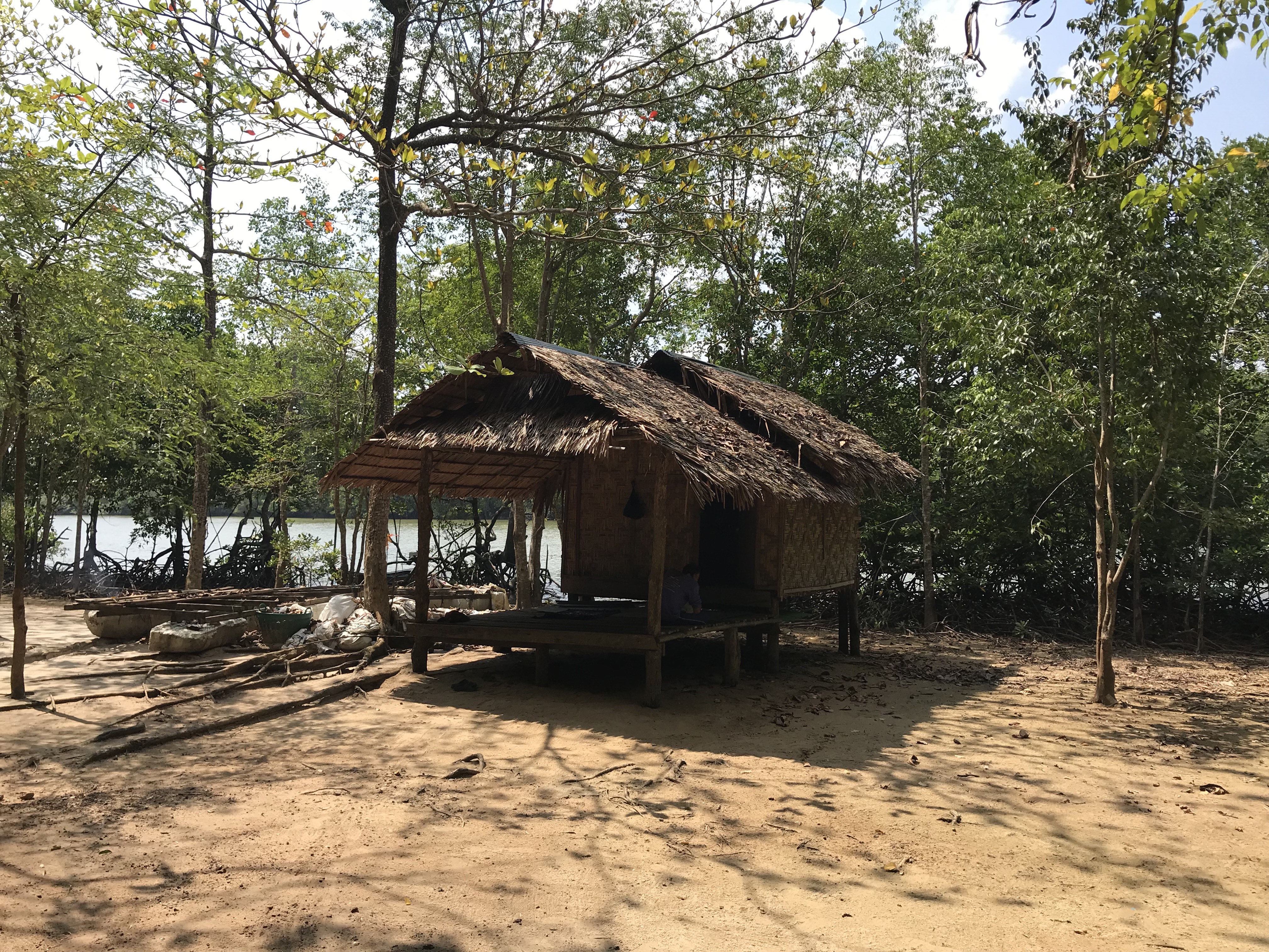
Only a few minutes away from the city centre, Khao Khanab Nam Cave is a very small island where both flora and fauna grow abundantly. Zhang Peili’s work challenges visitors’ expectations of finding an undisturbed natural paradise. As visitors approach the installation they are confronted with a façade that looks like a poor and dismissed house, yet its interiors have been refurbished with a luxurious and modern look. Silver paper with an elegant design runs along the four sides of the room and a sophisticated ceiling lamp delicately lights the environment. This is not the only contradiction. The outer façade hints at an old building in which one would expect to find local, everyday objects. Instead, all of the furniture was made in China and imported to transform the interiors into a boutique hotel. The two paradoxical realities, outside/inside, invite us to experience the contradictions of everyday life and to question our perceptions.
Site : Khlong Muang Beach
Felix BLUME
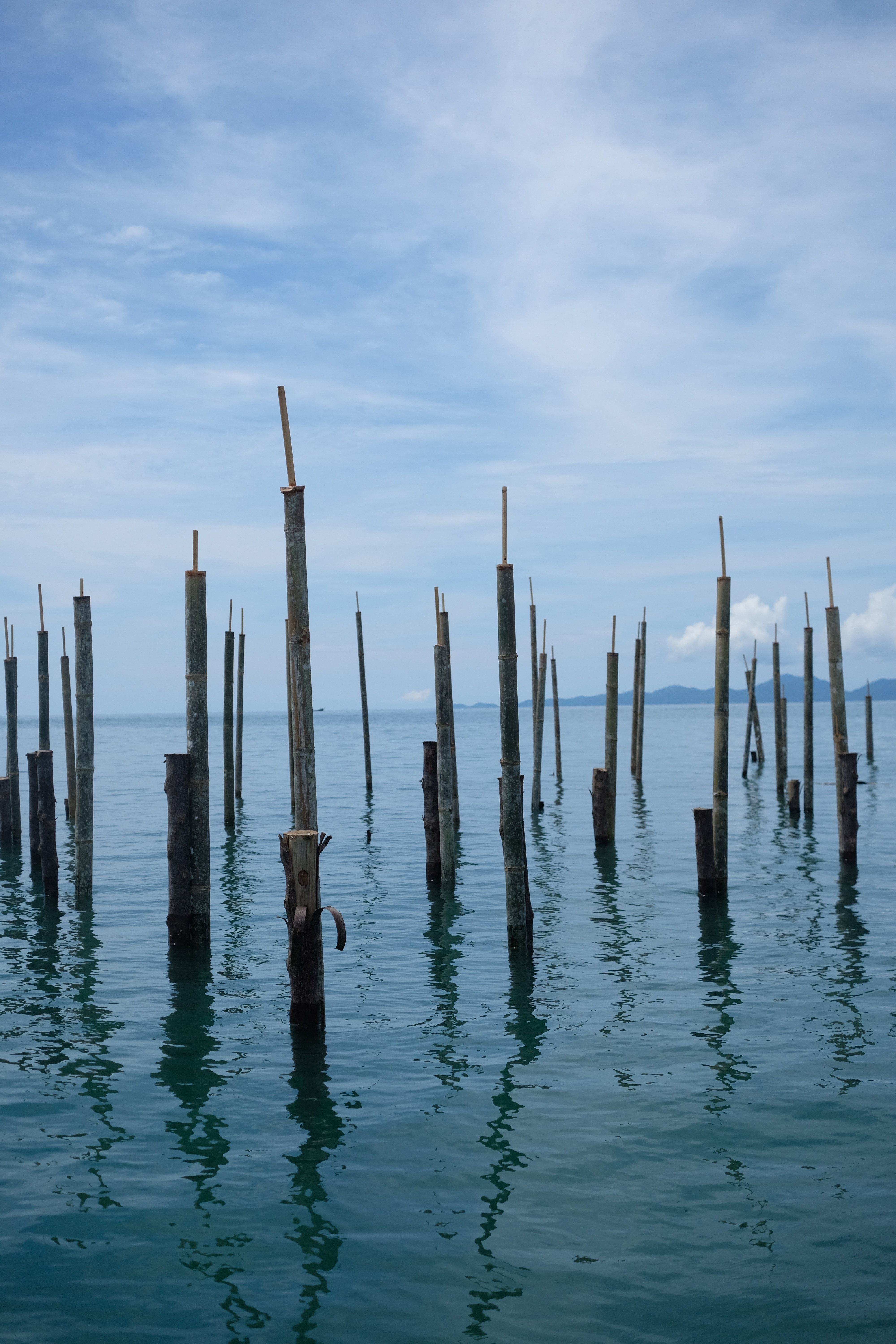
Narbonne / Mexico City 01 Rumors from the Sea is a site-specific sound installation inspired by the form of the bamboo seawalls used in Thailand as a simple method to battle against coastal erosion. The installation, consists of hundreds of flute devices made from bamboo, similar to the material used to slow down the current from hitting and eroding the shore. The project is a tribute to the perseverance of those communities. Simultaneously, working with students from the Baan Khlong Muang school, the artist will organise a workshop to enable each to make their own bamboo flute. These devices will be used to generate a sound composition for a bamboo-flute orchestra/ installation, played by the waves.
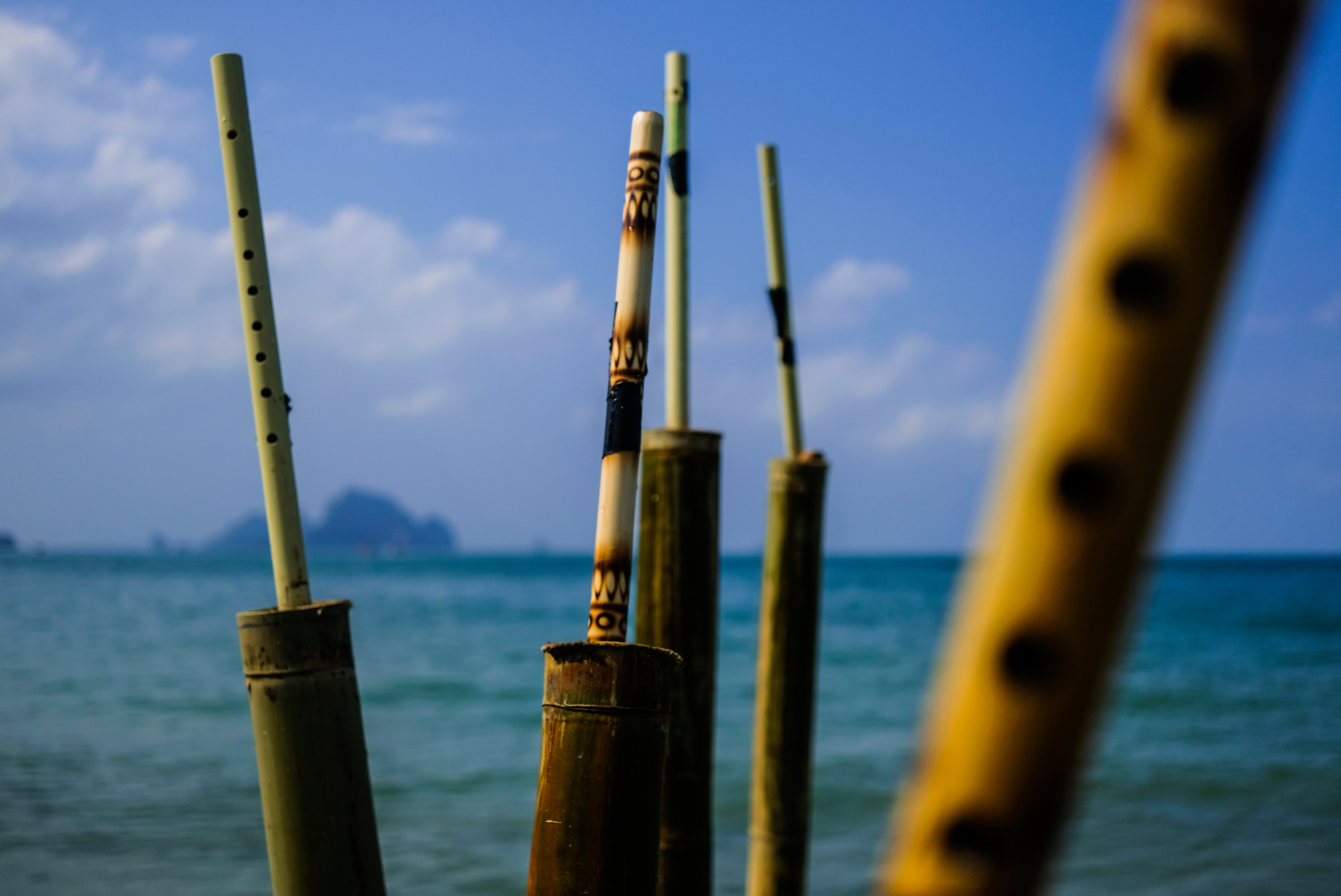
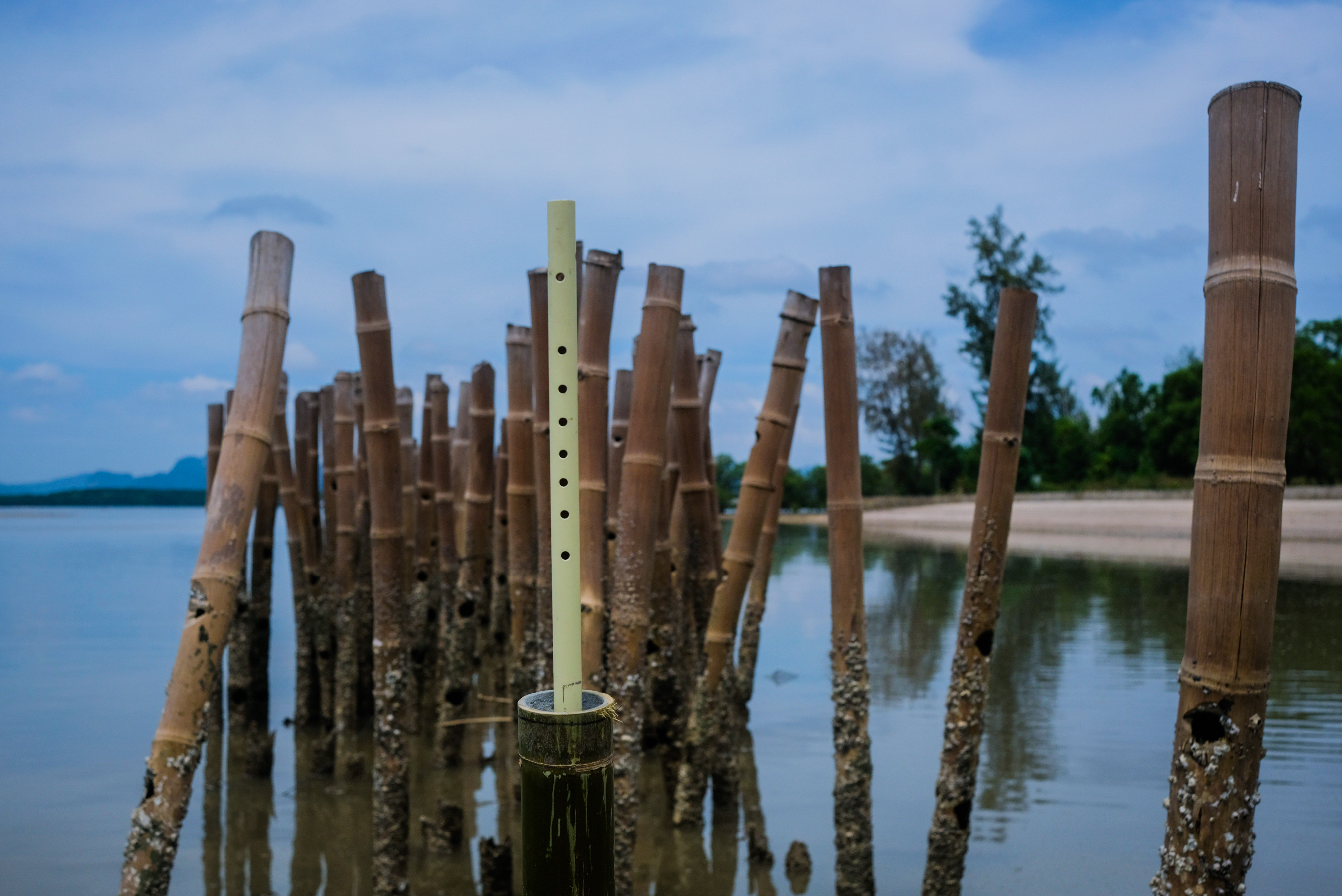
Dane MITCHELL
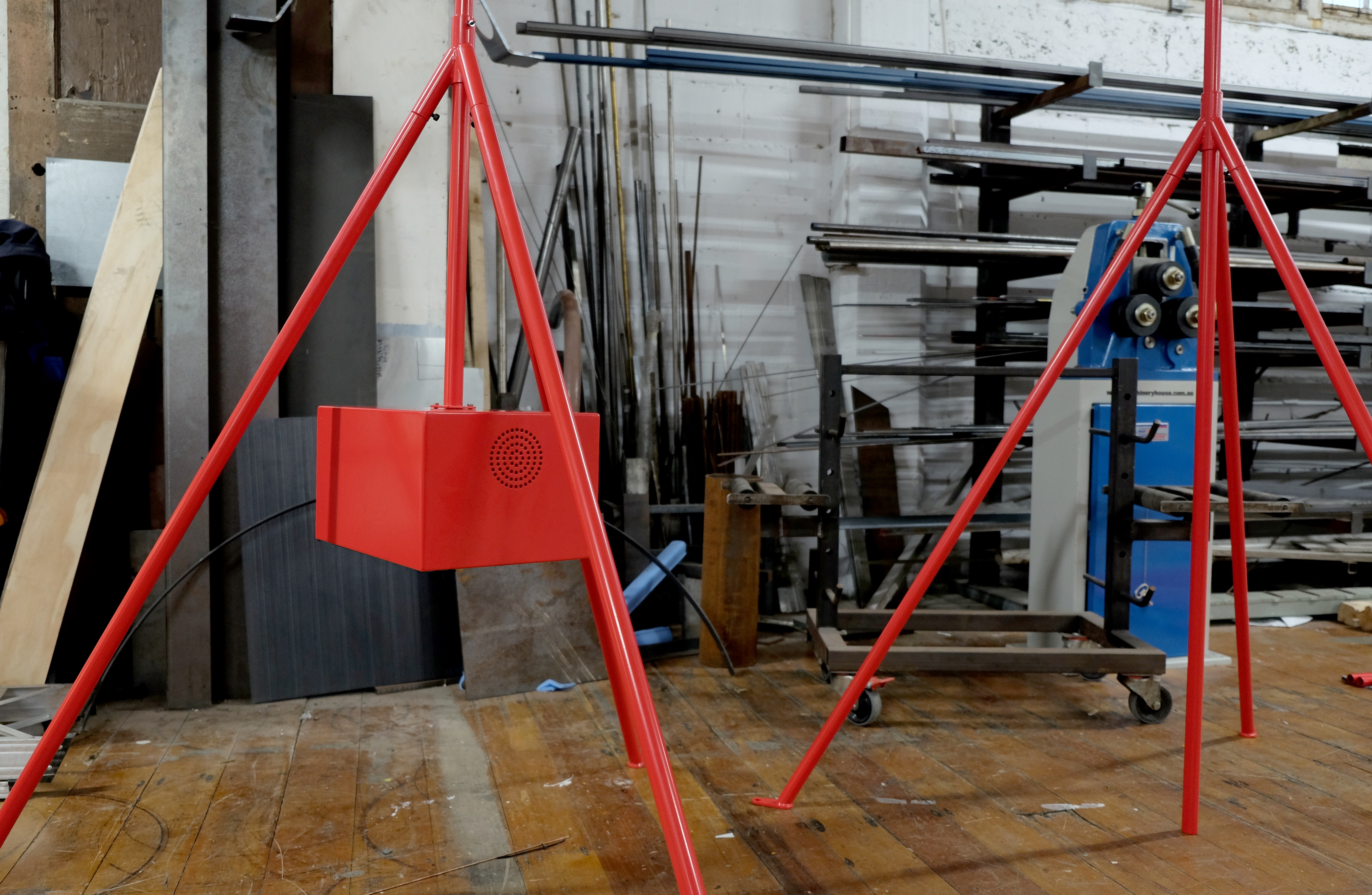
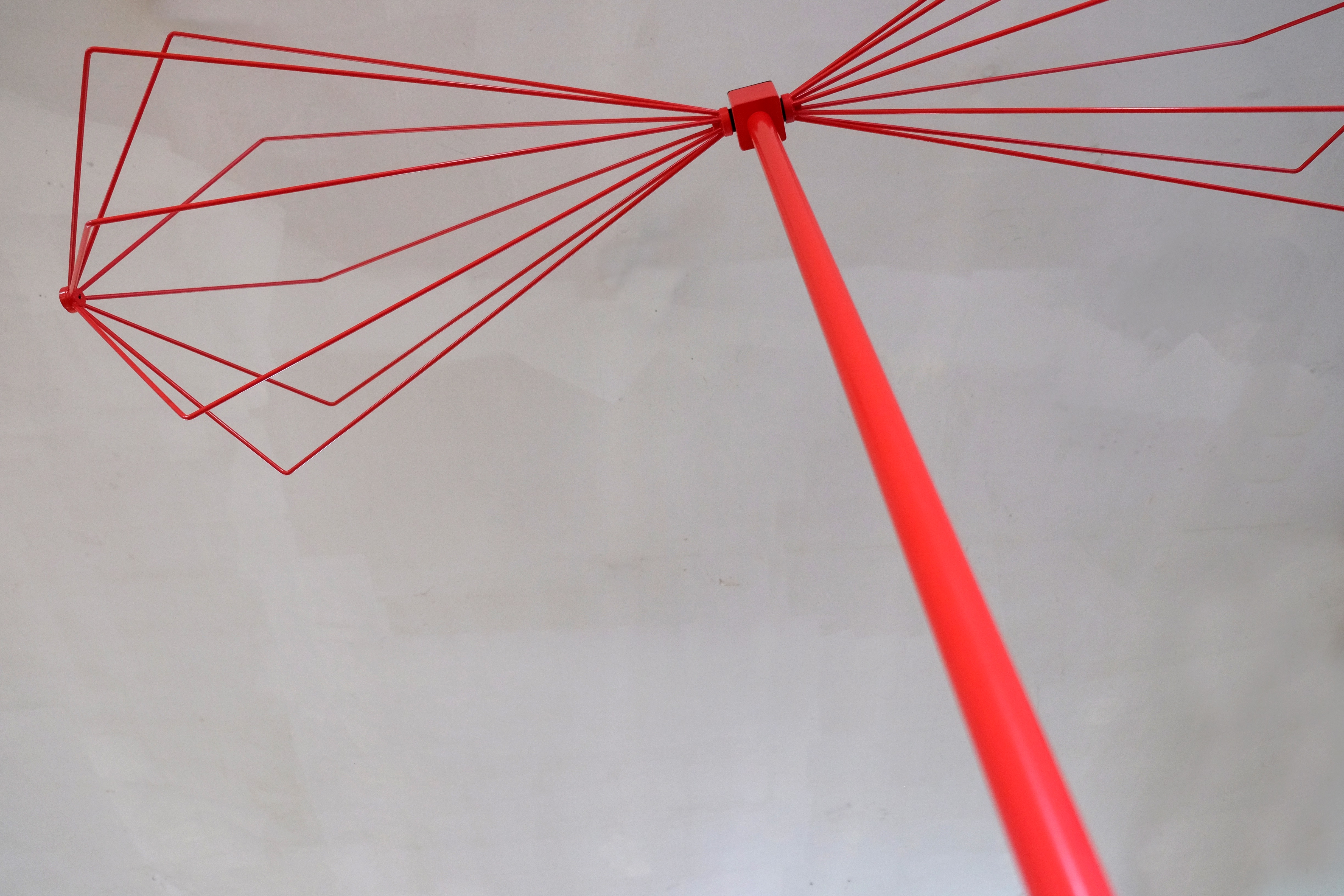
Auckland 02 For the Thailand Biennale, the artist has produced a newly commissioned work, Lost Bandwidth (Canopy), which consists of four biconical antennas, each tethered to an operational FM transmitter. Located in National Parks across Krabi, Lost Bandwidth (Canopy) broadcasts the songs of extinct birds that Mitchell collected from archives that are available online. These tripodal antennas are paired with a second shorter tripod which generates power from the sunlight. One aspect of Lost Bandwidth (Canopy) can be seen as a series of physical objects each painted bright red, an adaptation of ‘international orange’, to differentiate them from their surroundings and to underline both their status as an exotic visitor and their existence on the physical plane. Another aspect is that each antenna generates an electromagnetic field across FM bandwidth and creates a radial sphere of activity — a signal —across the airwaves, demonstrating that these objects extend beyond their physical edges and produce an unseen, yet heard effect of transmitting.
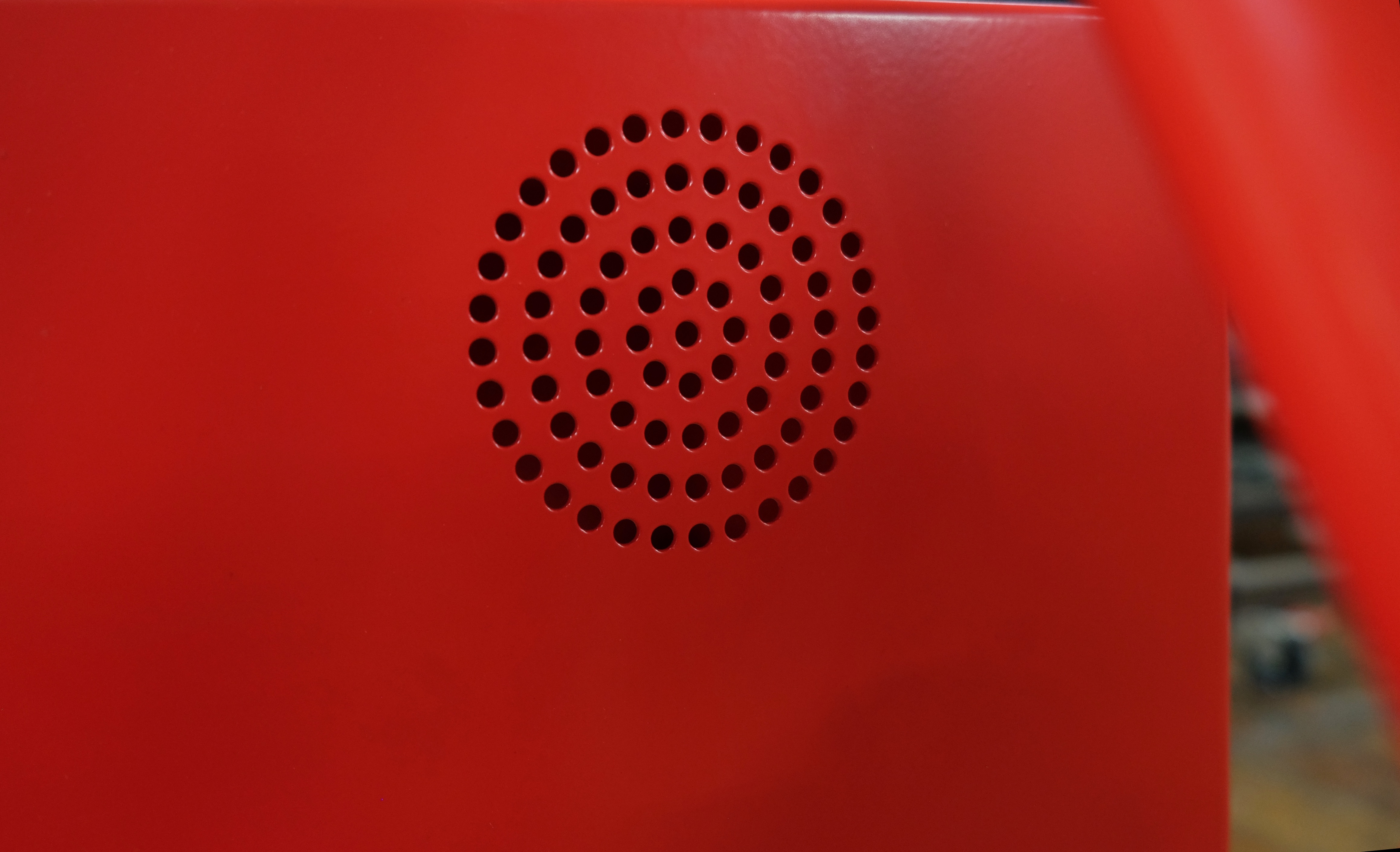
Site : Koh Klang
Takafumi FUKASAWA
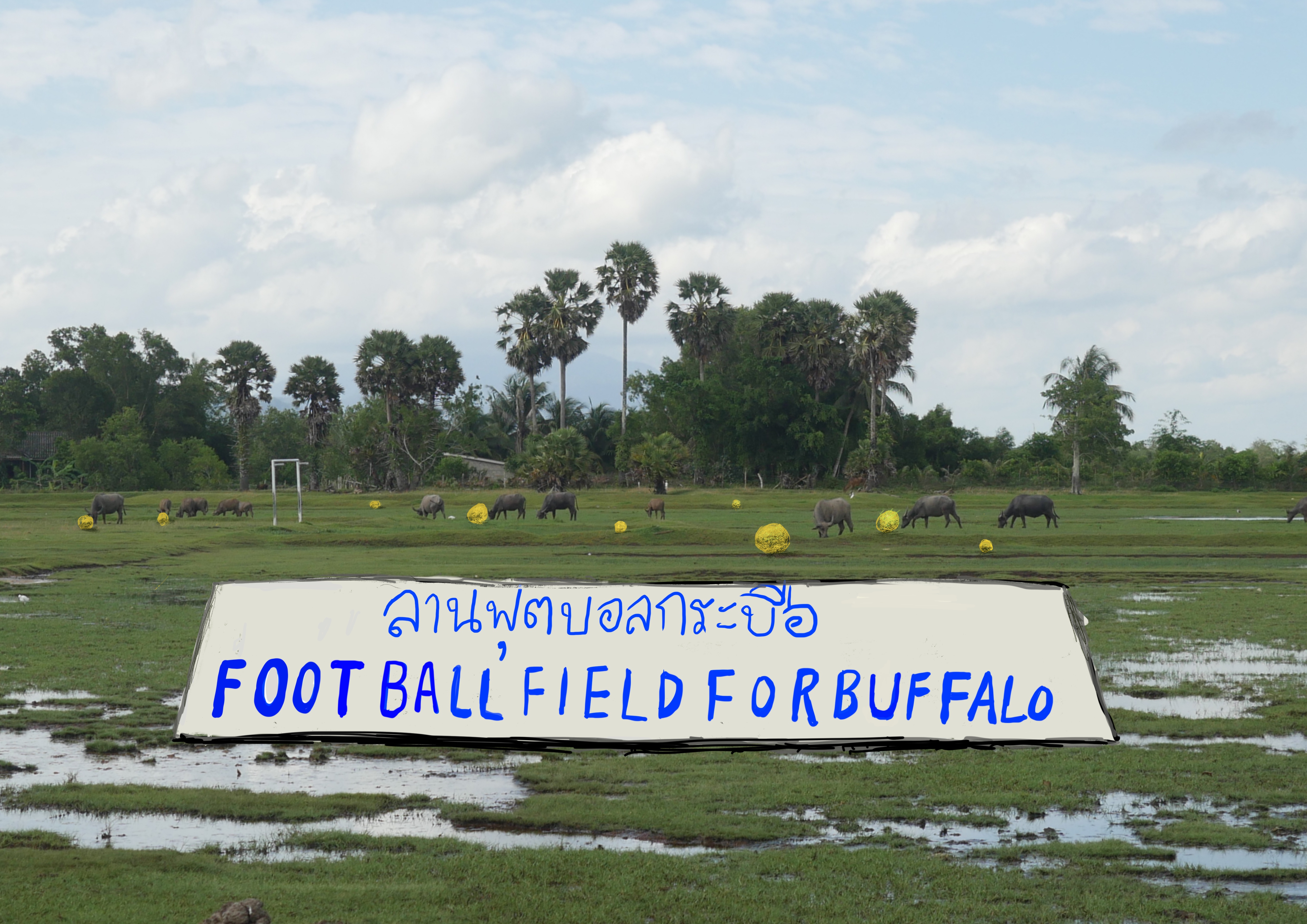
The artist is interested in the traditional lifestyle of the Koh Klang people. Although the island’s residents have become very engaged with eco-tourism in recent years, he found that the people continue to take pleasure in sports and nature. In particular, they still maintain their connections with animals, mainly chickens, goats and buffaloes. At the same time, Fukasawa also interested in the oral history of the island. He learned that the sports of boat racing, kite flying and football plays a significant role in bringing the community together. Inspired by the popular chicken competition, where competition and animal meets, the artist creates a football field for buffalo and an amphitheater on an abandoned, rich field for the audience. His work gives an opportunity for the communal buffaloes, who are the regular workers in the field, to become key players. Thus highlighting the unique bounds between humans and nature on this island.
Mella JAARSMA
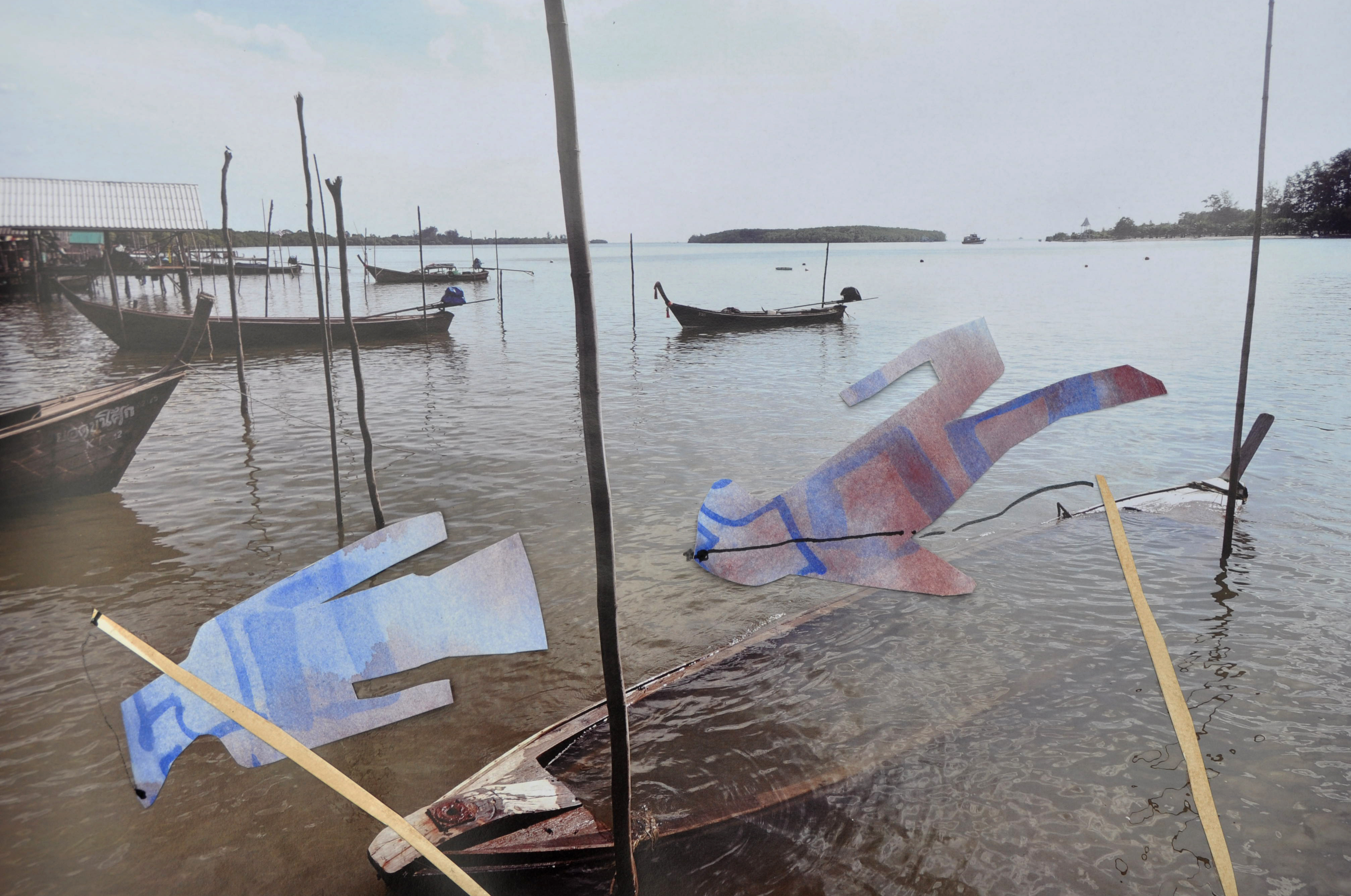
Mella Jaarsma was drawn to a ferry pier at Koh Klang, which connects the island to Krabi Town. It is a location where the everyday commute between the dominant Muslim fisherman community and the tourist town intersect. Tourists, who are not only interested in the beaches, finds themselves at home within the rich culture of the inhabitants. Jaarsma creates an installation with fishing rods in a line that hide her works under the water. She invites visitors, locals and tourists, to pull the fishing rods up and retrieve the artwork from the water. After viewing the visitor will cast the line into the water and the art will disappear underwater again. Movements between emerging and submerging of the artworks tell the story of the period where Thailand underwent an intense cultural revolution. Batik makers were forced to throw away their treasured copper stamps, which they used to create unique patterns on fabrics, into the river because Batik was considered ‘uncivilised’. Silver Souls was made to recall this cultural memory, which has been buried in the river basin of Krabi.
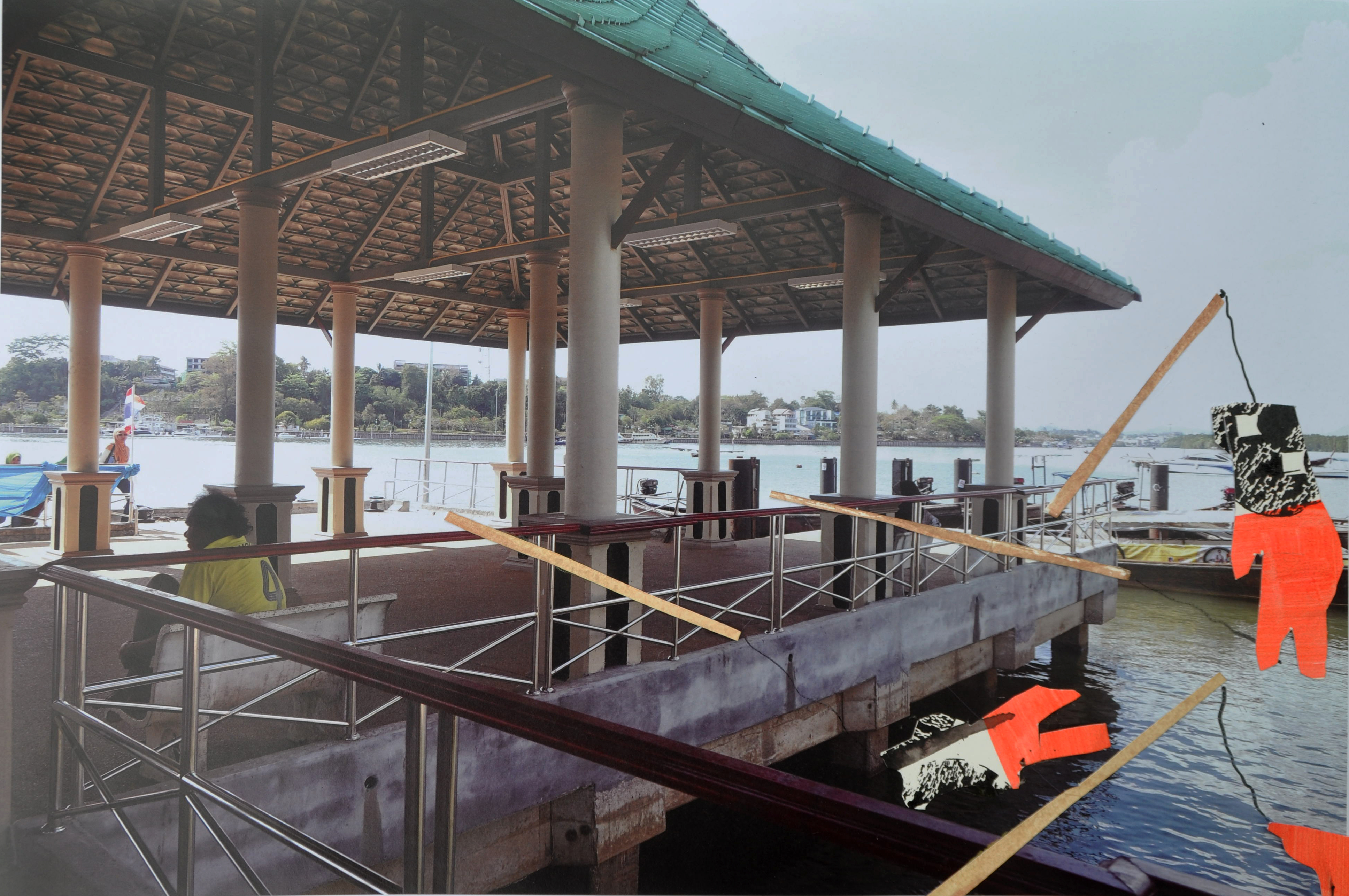
Valentina KARGA
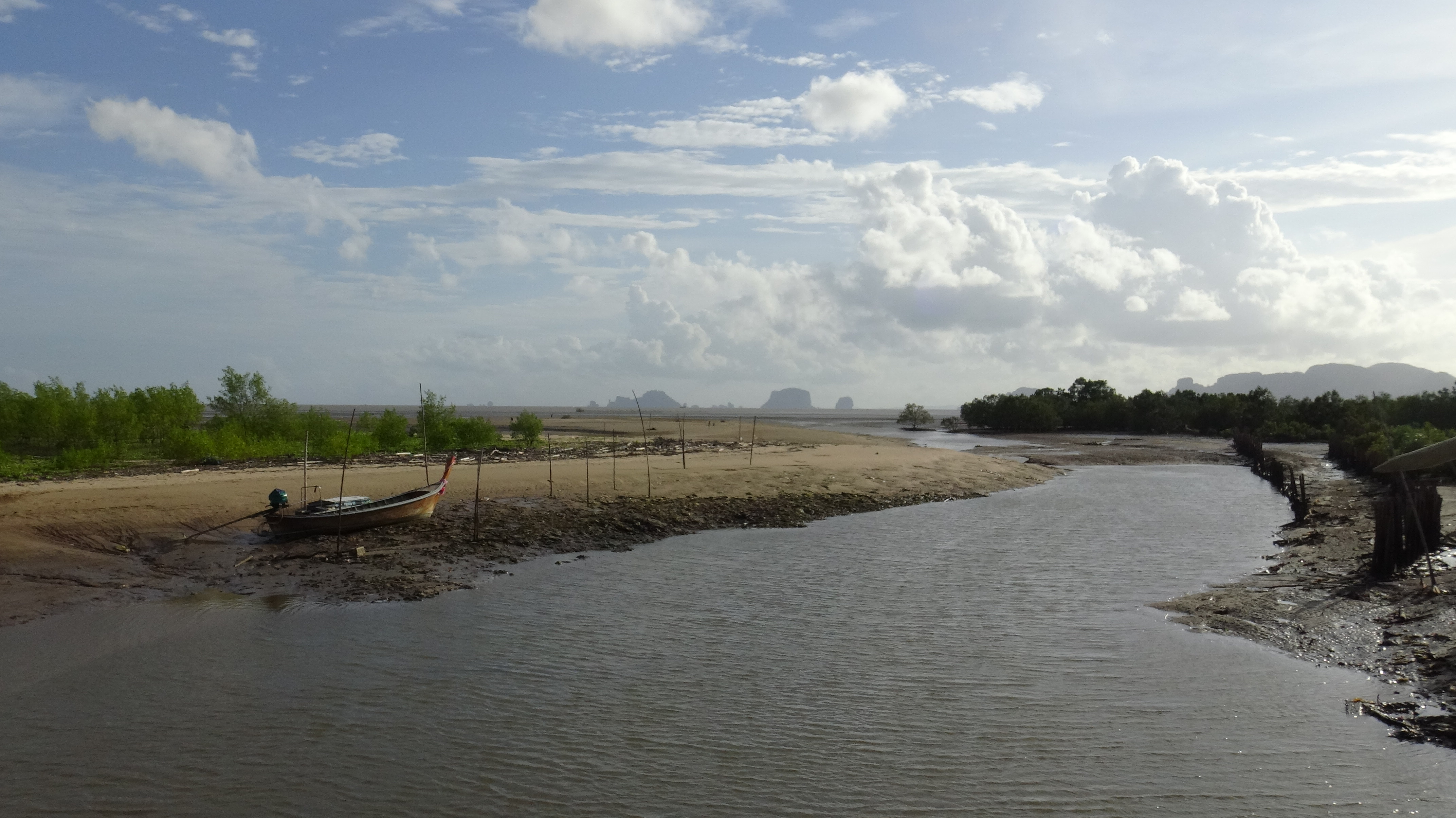
Coming Community is Valentina Karga’s on-going project, a mapping narrative, that began in Helsinki in 2016, and has now travelled to Krabi for the first Thailand Biennale. The multiple crises we face, socially, politically, economically and ecologically reveal the world, as we know it, slowly coming to an end. We are at the ‘Edge of the Wonderland’. At a time of utter fear and negativity about this change, Coming Community sets the foundation for an alternative imagination to seek a non-anthro- pocentric worldview in ‘the anthropocene’, the historical moment when humans have become a geological force capable of affecting all life on this planet. Karga spent a month on site, collaborating with local craftspeople and a group of children in Koh Klang, Krabi to imagine and create four pillars, built entirely with local materials and craftsmanship, to represent the different values and ideas which will support the community during this time of change.
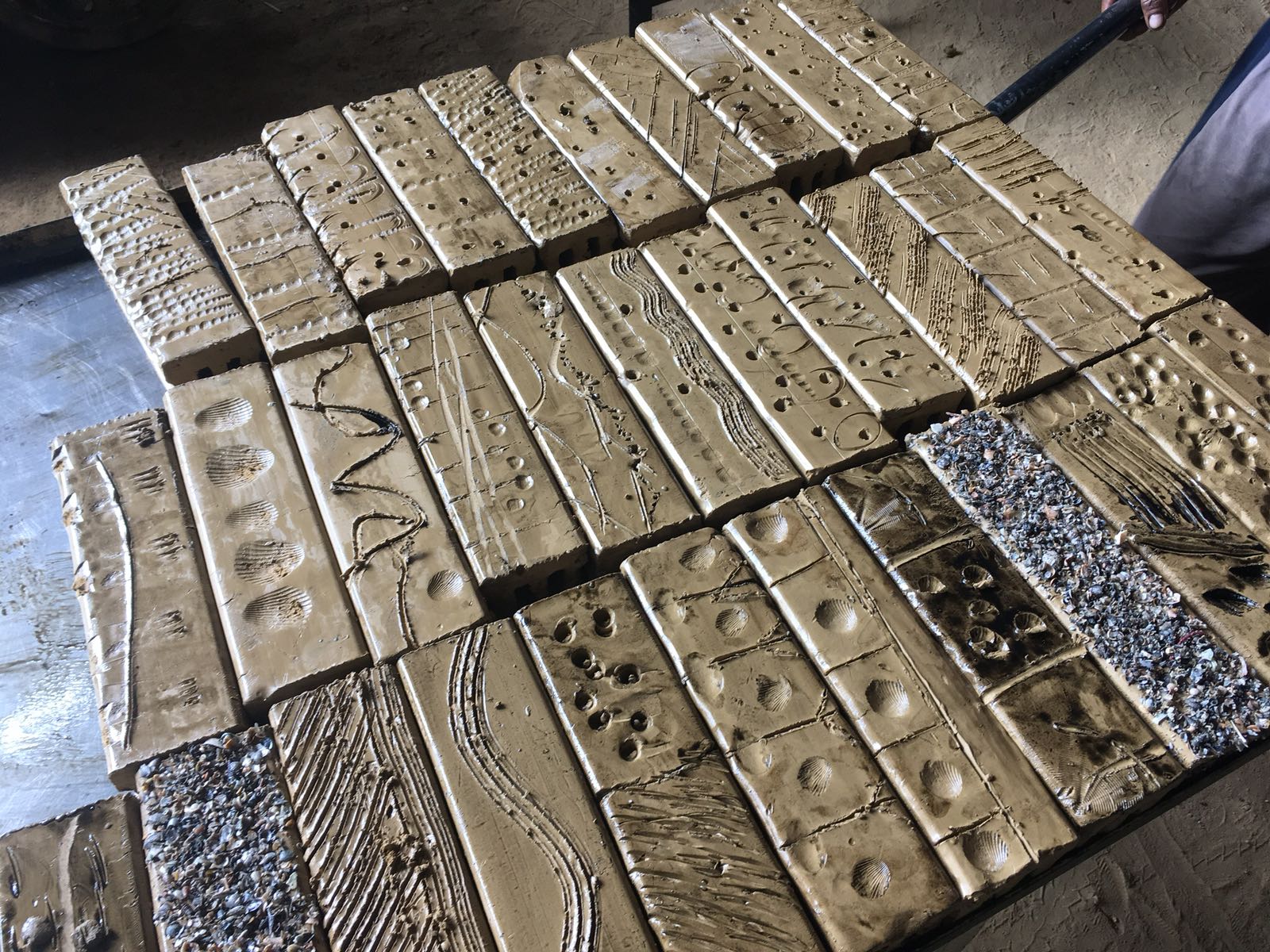
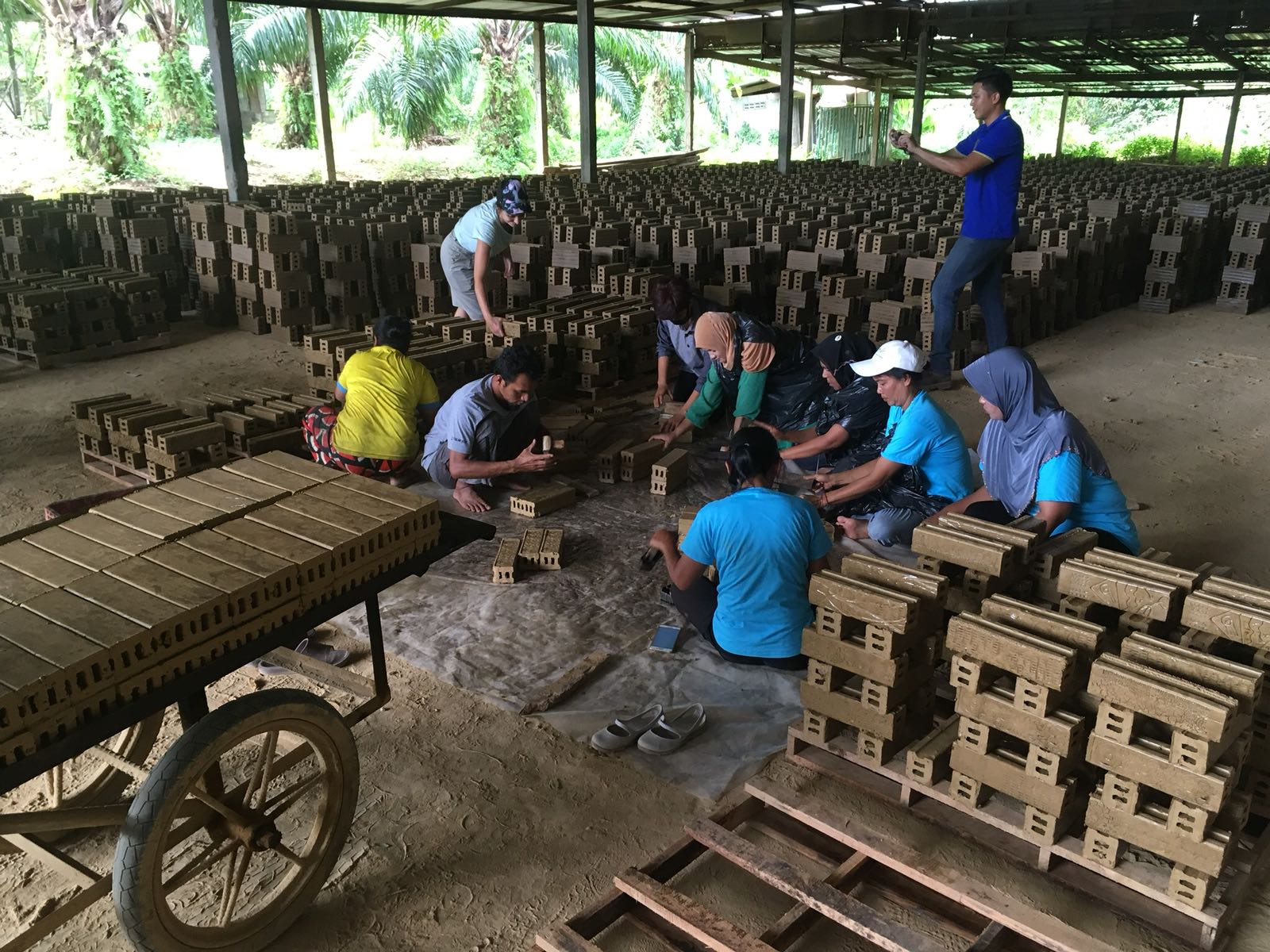
WANG Wei
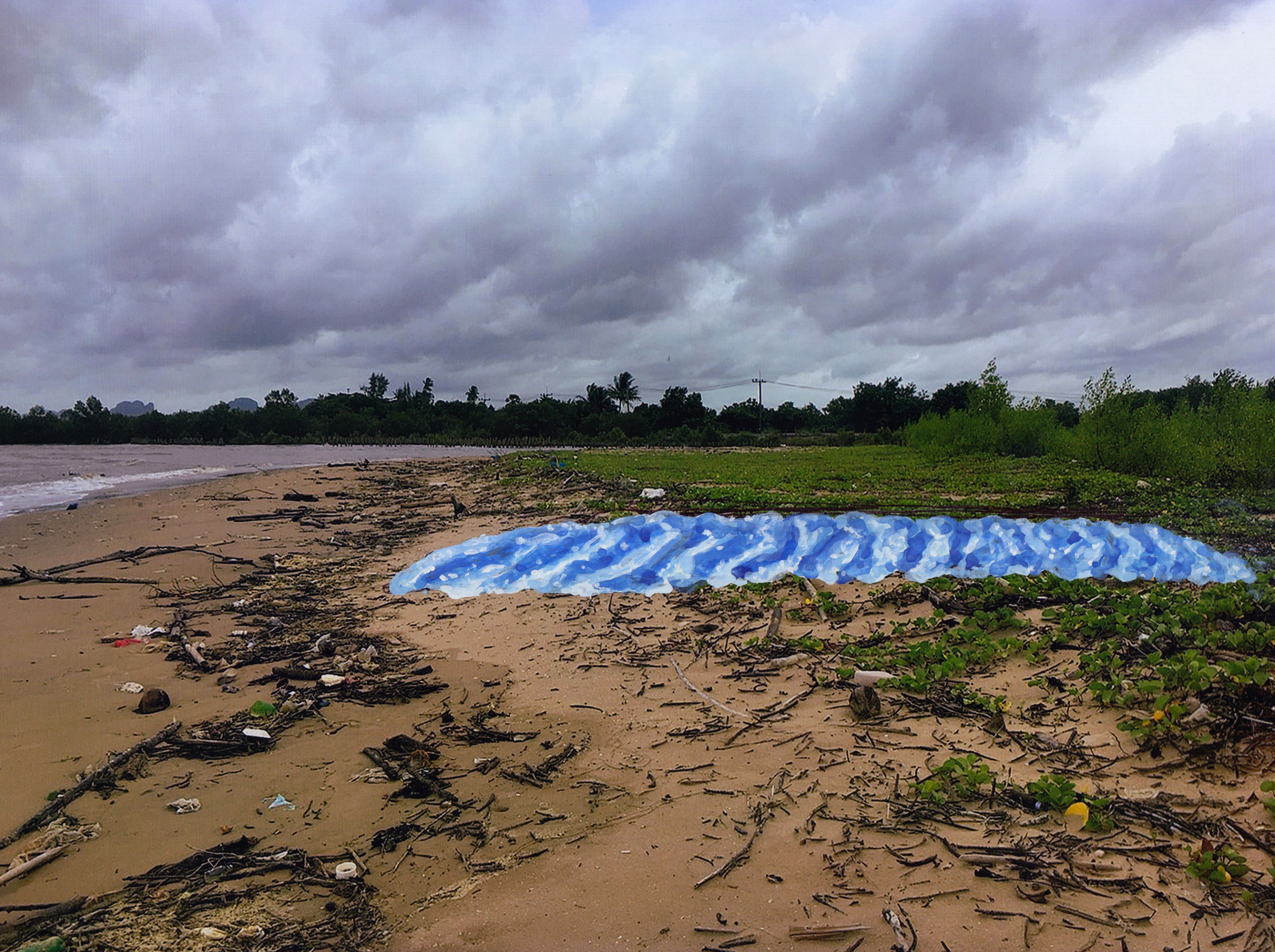
Mosaic tiles are a signature of Wang Wei’s recent work. He engages the challenges of space and its architect, in this case, the beach. Laying pieces of sea-colored mosaic tiles on a beach area next to the ocean, Elevated Sea Level imitates the sea’s surface emerging from a strange, yet familiar area. Koh Klang is an unusual area in Krabi – a hidden gem within a fairly closed community, approachable by tourists, yet still welcoming to outsiders. The location, together with the presentation of this work, portrays a natural phenomenon that absurdly acknowledges the unstable relationships between man and nature. Here, a man-made object is introduced into the environment that responds to the surrounding nature itself. The work is a layering of contradictions, bringing the viewer a step closer to the ‘Edge of the Wonderland.’
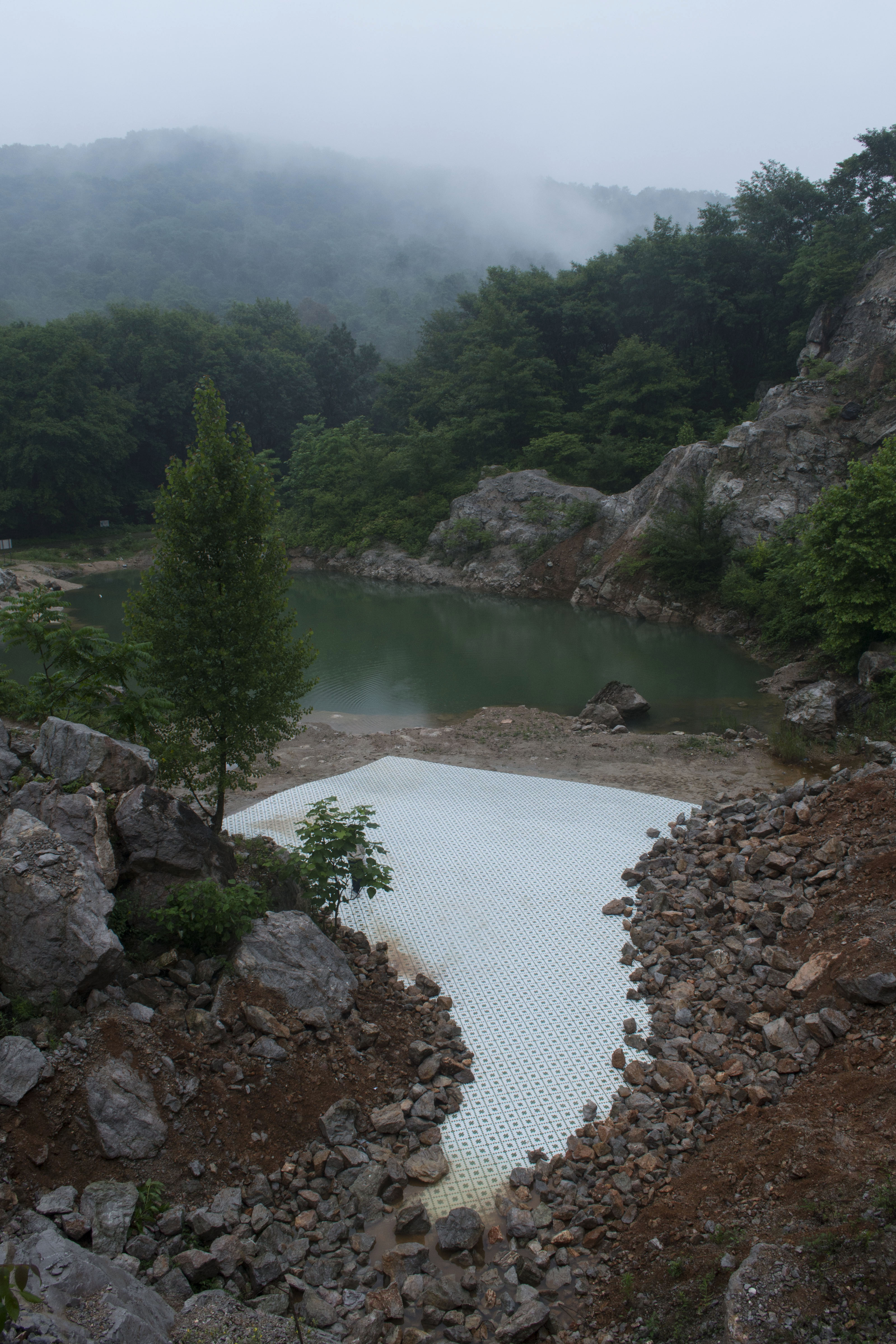
Site : Krabi Town (North)
Lucy BEECH
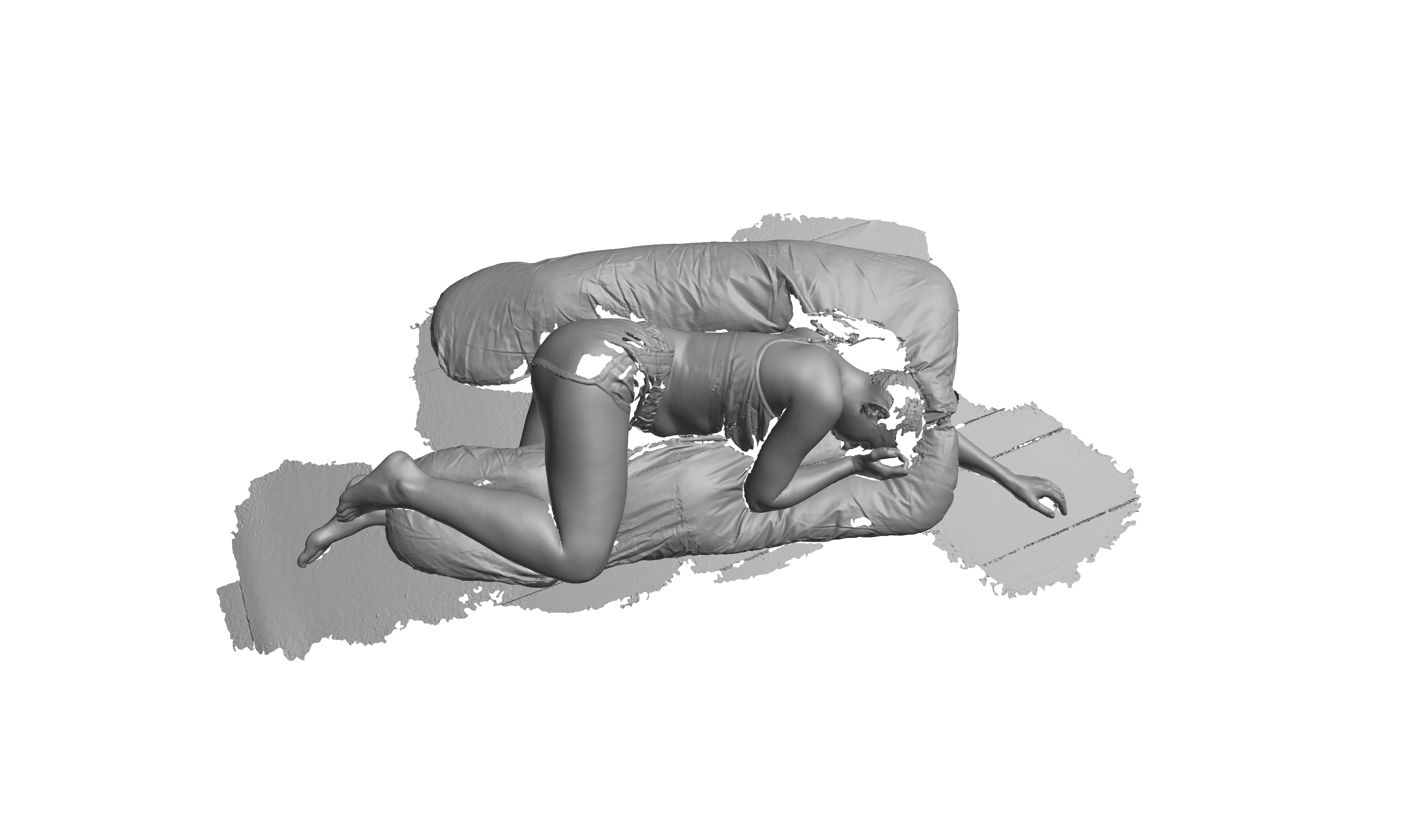
Lucy Beech is presenting a film developed from her recent work entitled Untitled The film is a fictional story of a woman travelling internationally to become a surrogate mother. Many women travel across borders for many different reasons ranging from social, political and economic concerns. Beech’s work questions the ethical approaches of global fertility industries. The film also responds to the context of Thailand Biennale 2018; Thailand closed its borders to reproductive tourism in 2015. The film will be shown on screens located in the transportation center in Krabi. This will allow audiences, who are travelling across provinces or from other countries, to link the experience of their journeys to the contents of the film.
Saravudth DUANGJUMPA
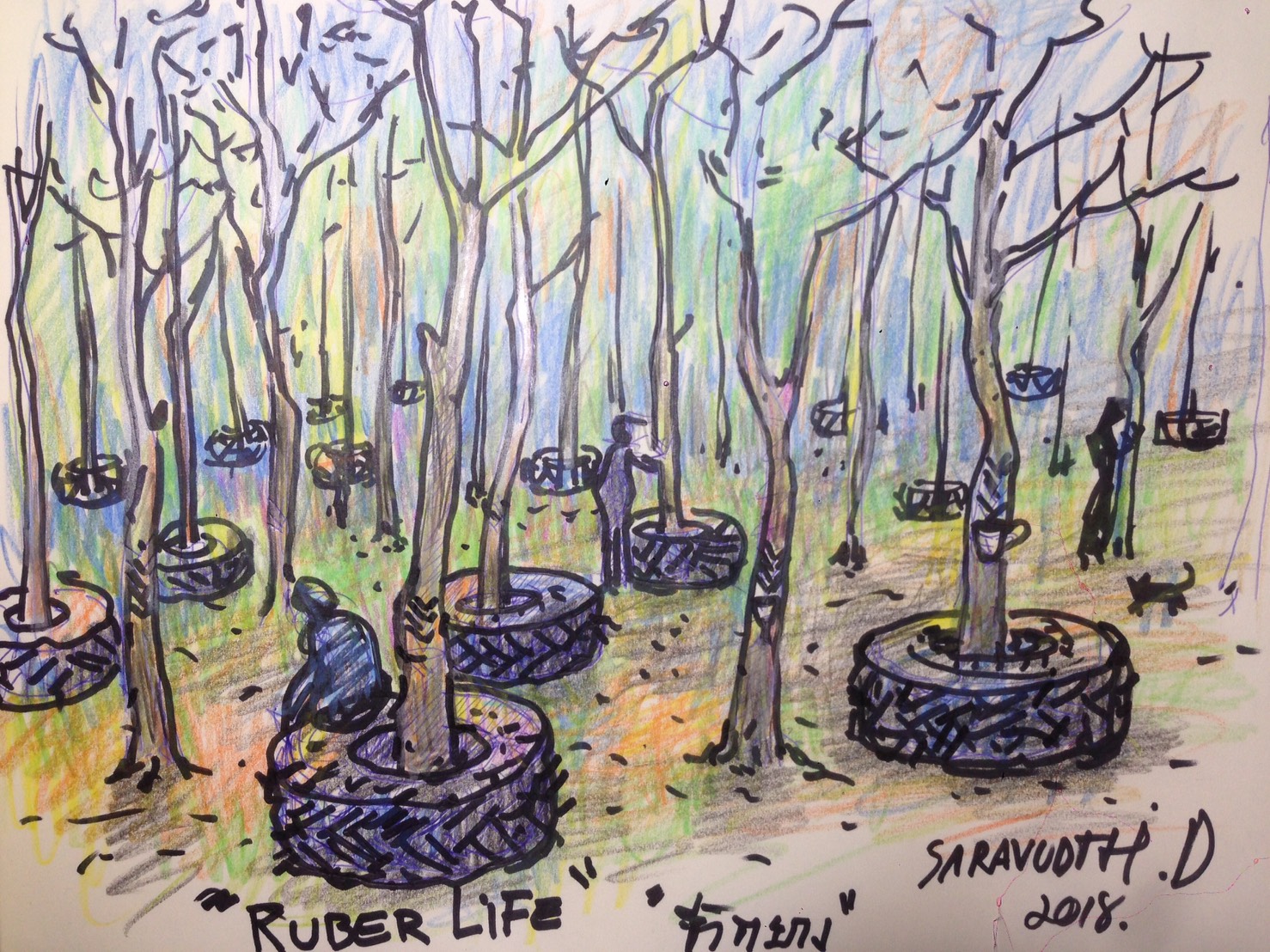
Saravudth Duangjumpa is a sculptor who was awarded the title of Thai National Artist in 2017. Recently he has generated installations with art and found objects. The artist explored Krabi and has become fascinated by the industrial crop of rubber trees. Rubber farmers in Thailand have faced economic issues for quite some time. Due to extensive cultivation of rubber trees across the country, the cost estimations tend to be very low despite the difficulty of producing rubber. Working with local materials and being located within rubber tree plantations, Rubber Life emphasizes the importance and value of rubber trees by showcasing products and outcomes. The objects Saravudth chose are not random but are chosen through his research and working with local authorities who specialise in rubber. Deriving from his past practice with traditional material, this installation is also beautifully planned, but was later spontaneously altered according to the nature of the space during installation.
Aki INOMATA
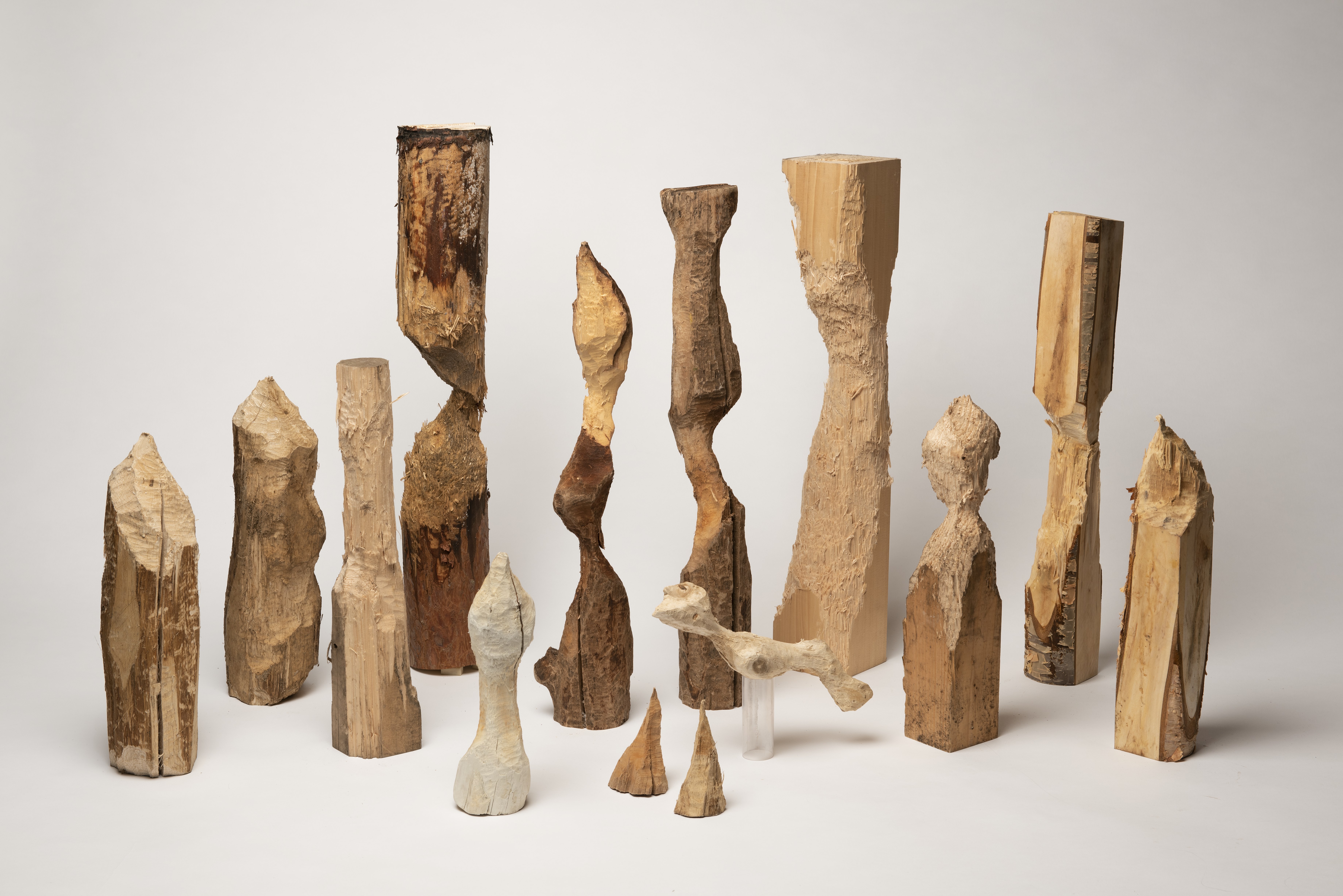
Beavers chew on trees, sharpening their constantly-growing teeth. After it is felled, a tree becomes building material for the beaver’s dams. The marks left on the tree stump are a side- product of this activity, but they remind the artist of sculptures carved by human artists.
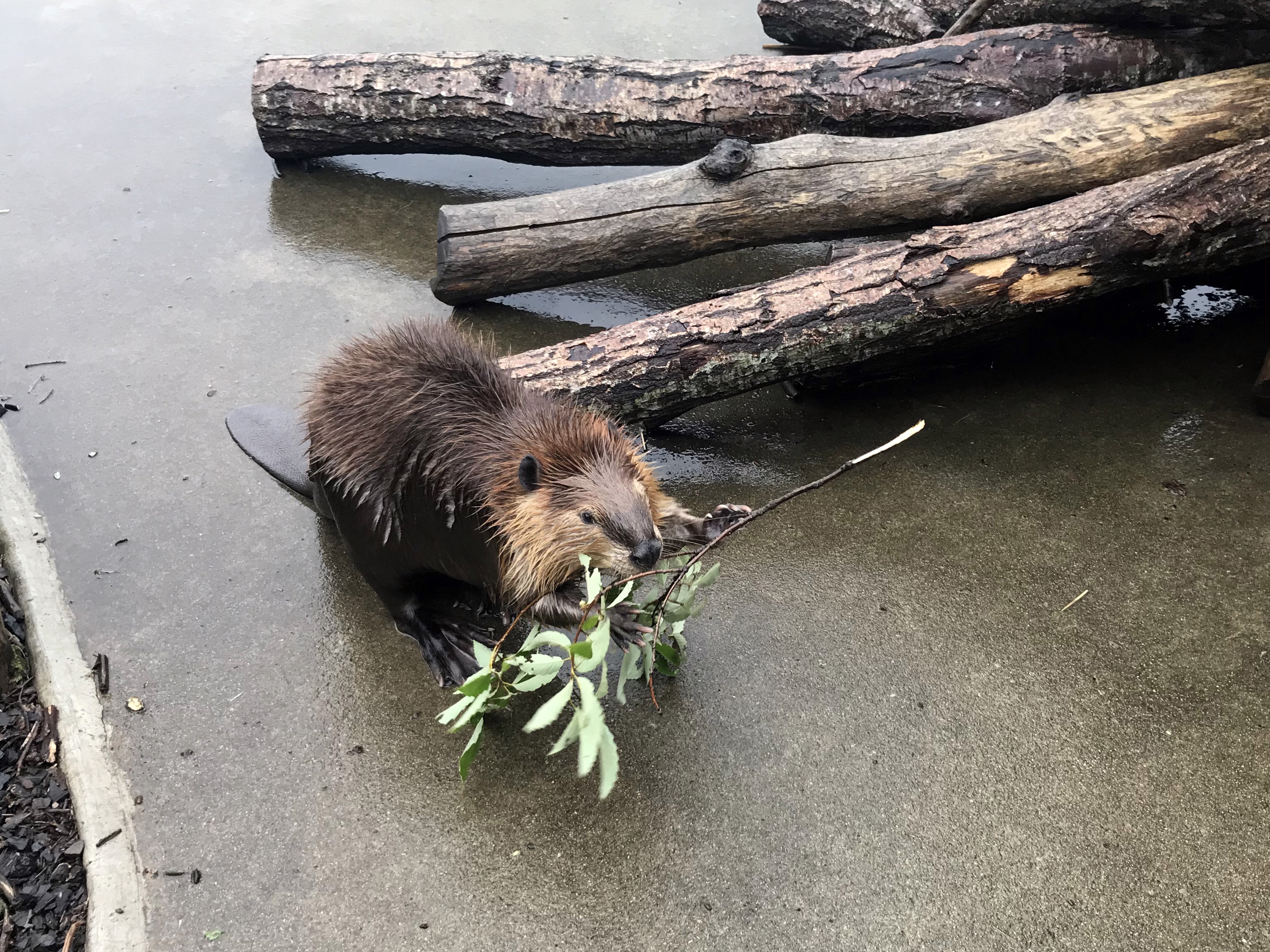
Beavers, like humans, are one of the few animals that actively modify their environment, reforming it to suit their own requirements. They create artificial ponds by cutting down the surrounding trees and assembling them into dams to catch and hold stream water. These beaver ponds provide a distinctive environment that attracts moose, herons, and many other creatures. It is fascinating to think about how an environment constructed by beavers differs from an environment constructed by humans.
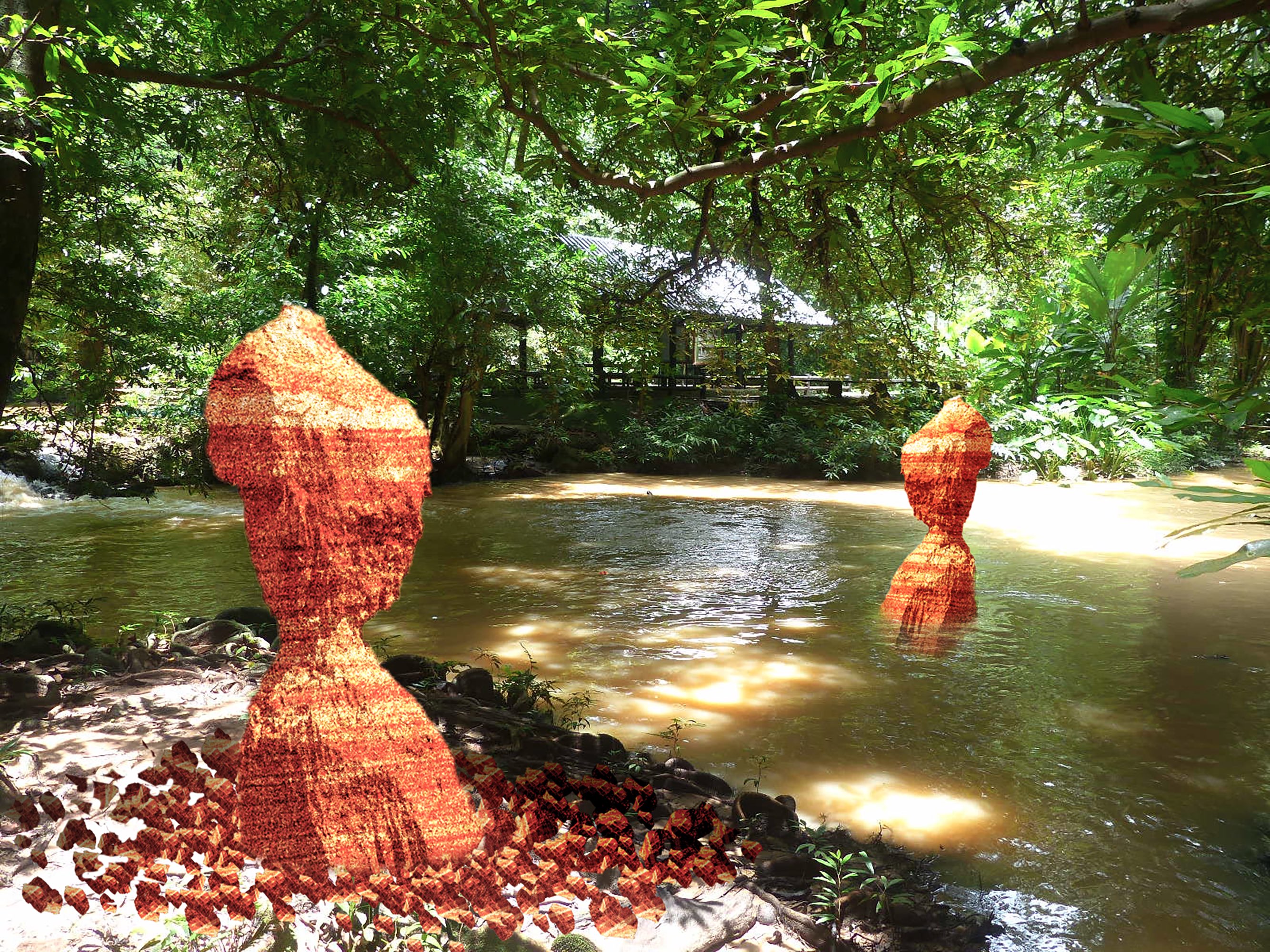
For Thailand Biennale 2018, Inomata provides a beaver with part of a tree to work on, and uses the gnawed wood that it produced as a reference to create sculptures. Inomata commissioned a sculptor in Thailand to carve human-scale models of the beaver’s work in sand stone, and installed them around a pond. The result is a sculptural work created by two artists, with humans imitating the beavers’ creation.
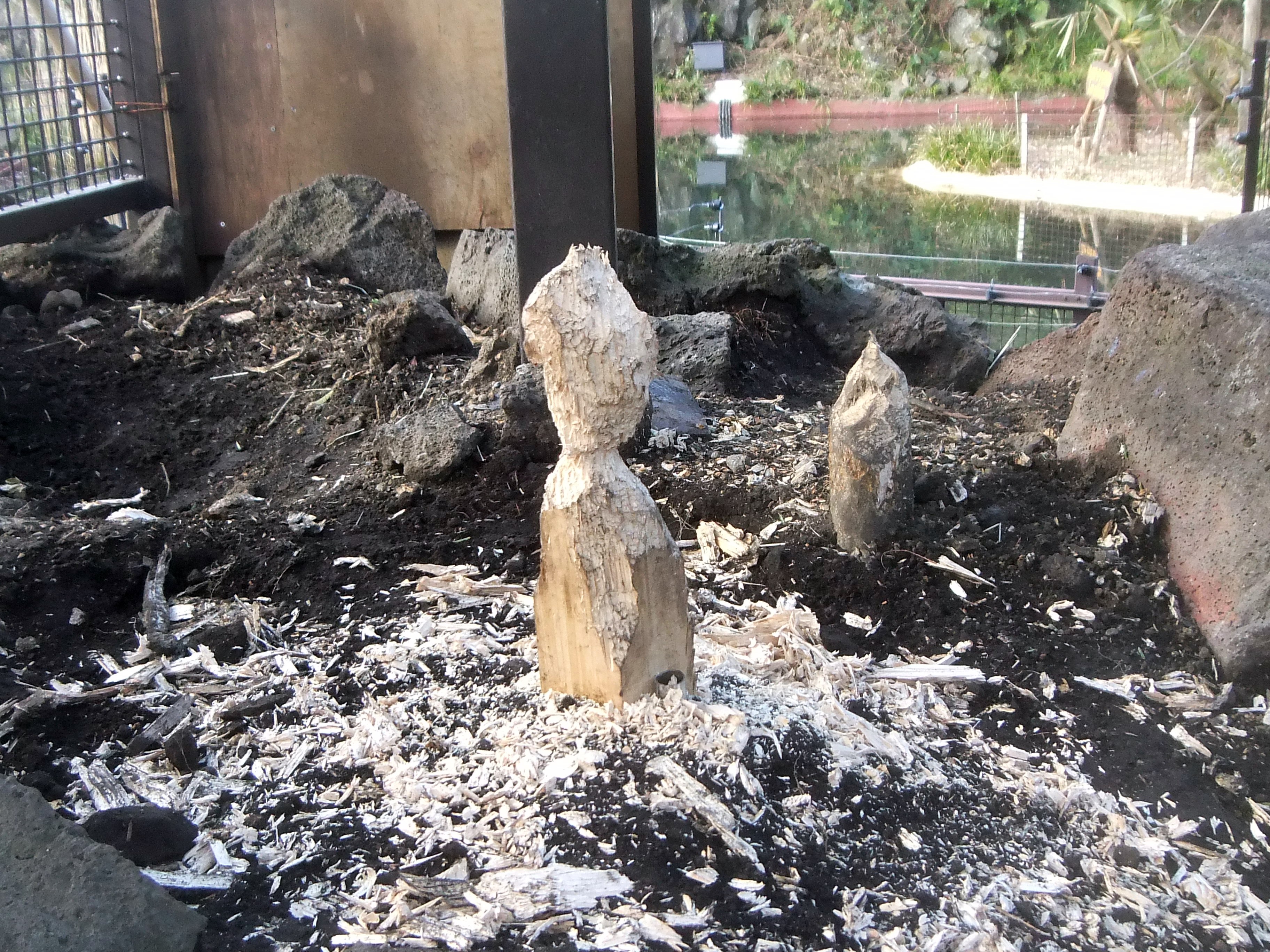
Yuree KENSAKU
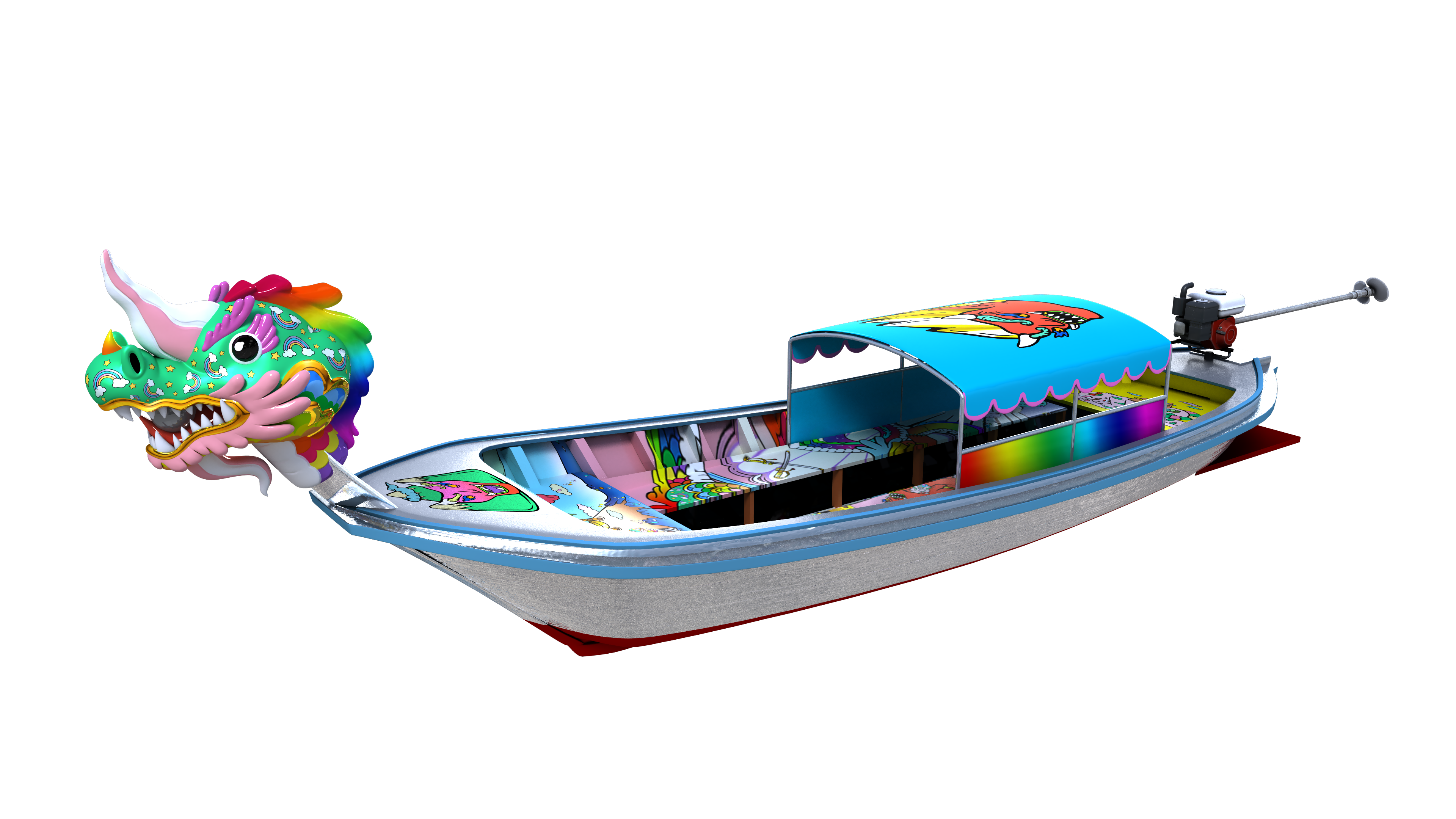
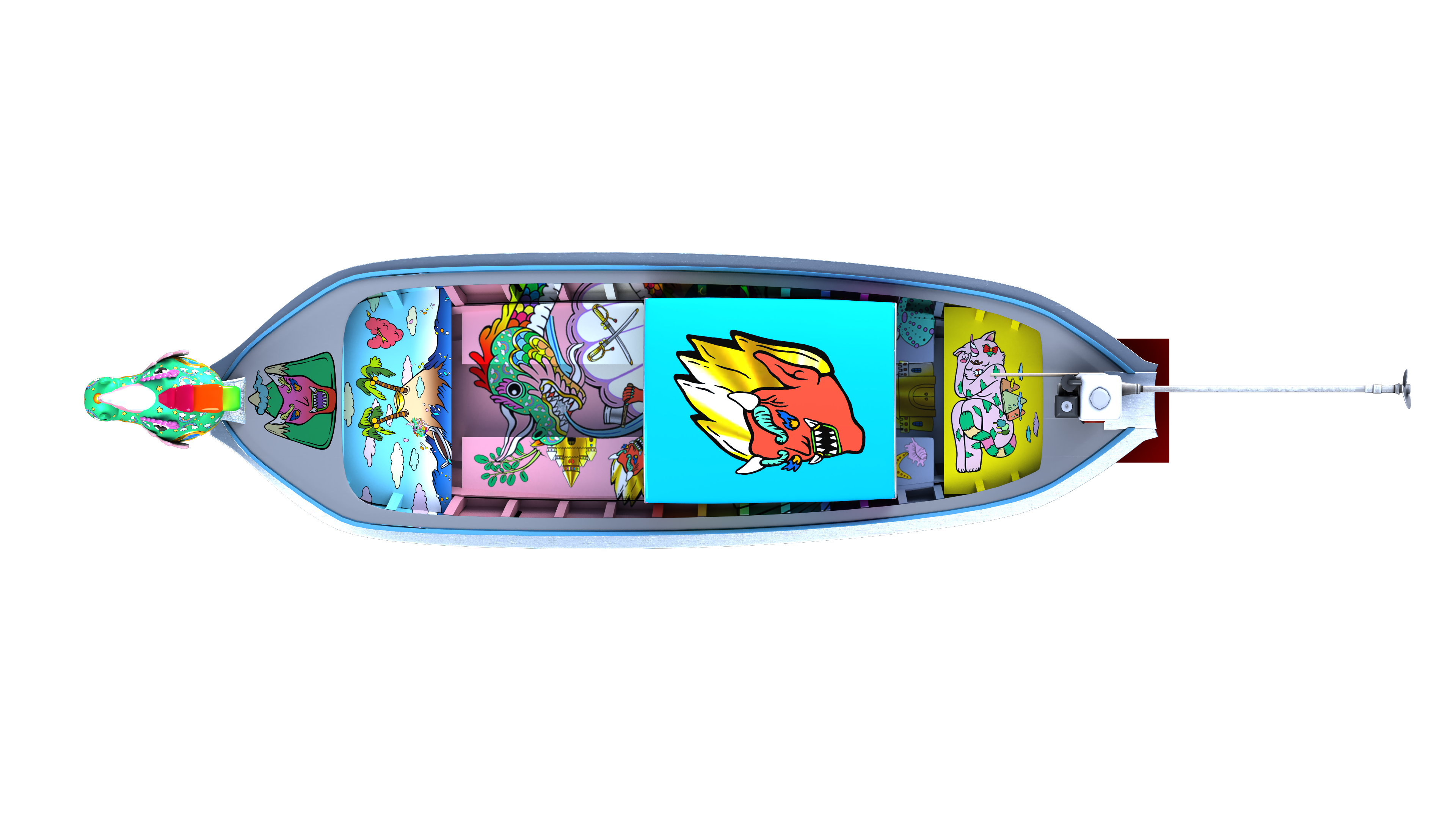
Yuree Kensaku’s paintings are created from the artist’s unique hypersensitivity. Her practices are always influenced by her various lifelong phobias and allergies. Ironically she depicts her perspective of the chaotic world with colourful figurative paintings. Nagabi Transferry is a project that connects to Thalassophobia — a persistent fear of sea travel. It has been one of driving-forces behind Kensaku’s practice and one which she creatively converts into a productive force. The artist painted and decorated the cockpit of a Hua Thong boat, a local boat of Krabi. She welcomes it to be a holder of her world which is similar to what she usually does on her canvas. In addition, she also revisited the boat figurehead and its roof. Combining the long-standing tradition of boat-making with contemporary pop culture, the boat becomes a threshold of her wonderland. Invited to step on board, the audiences will appreciate Kensaku’s interpretation of Krabi folklore and her imagination of local mythical beings while traveling through the landscape of the biennale. Nagabi, the name of the boat that combines Naga with Krabi, will be used as a transferry throughout the four months duration of the viewing period.
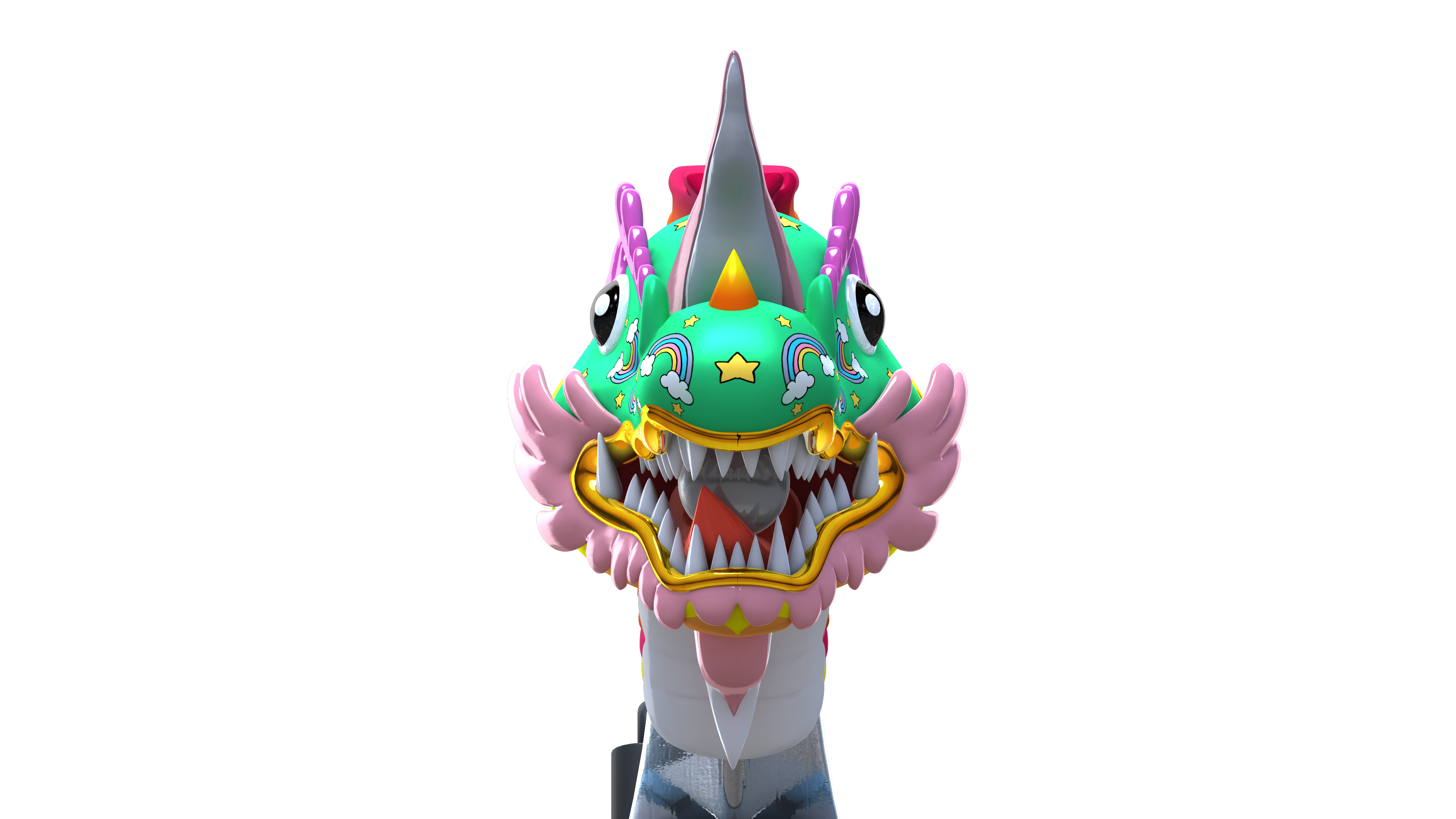
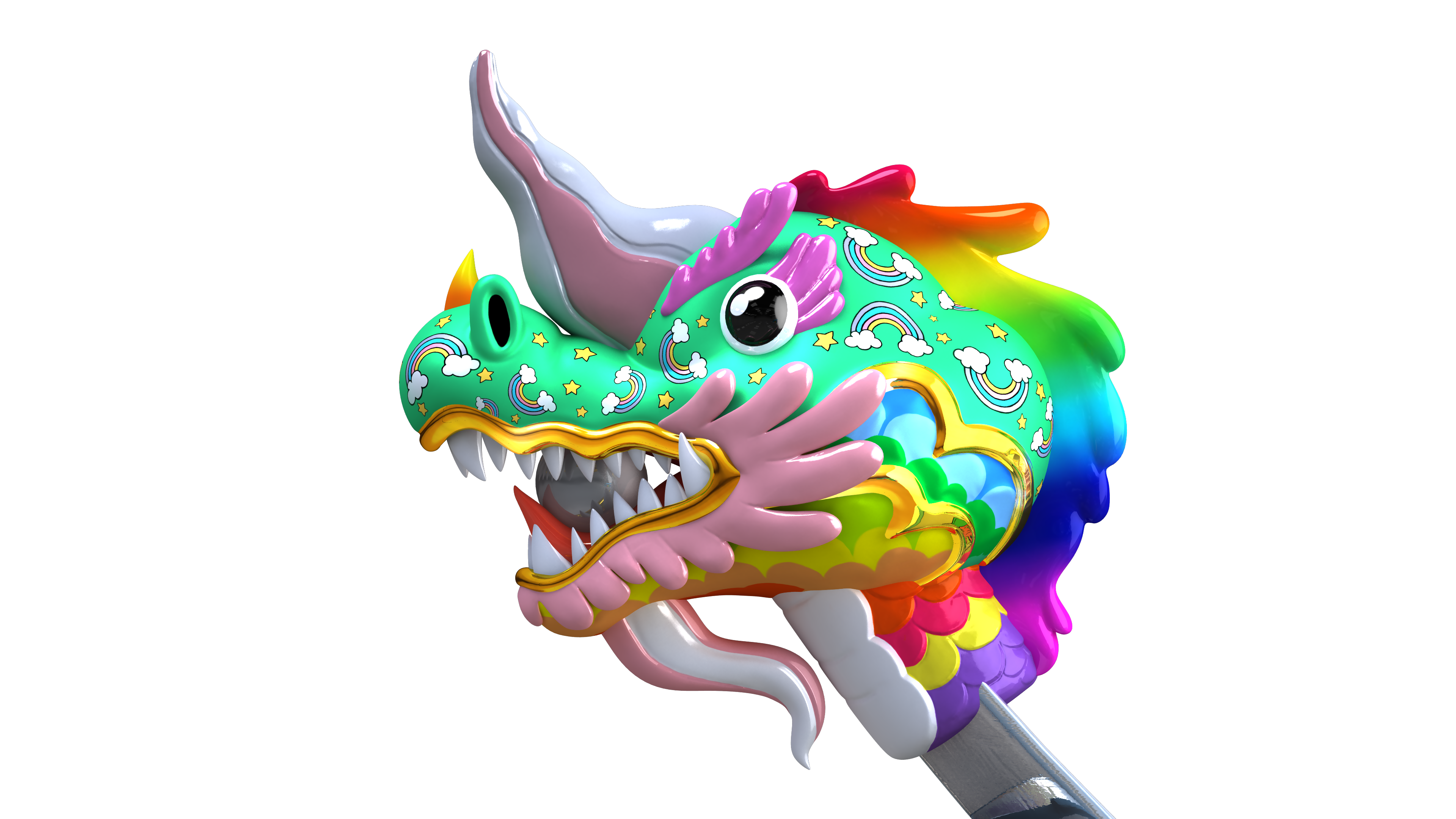
Oliver LARIC
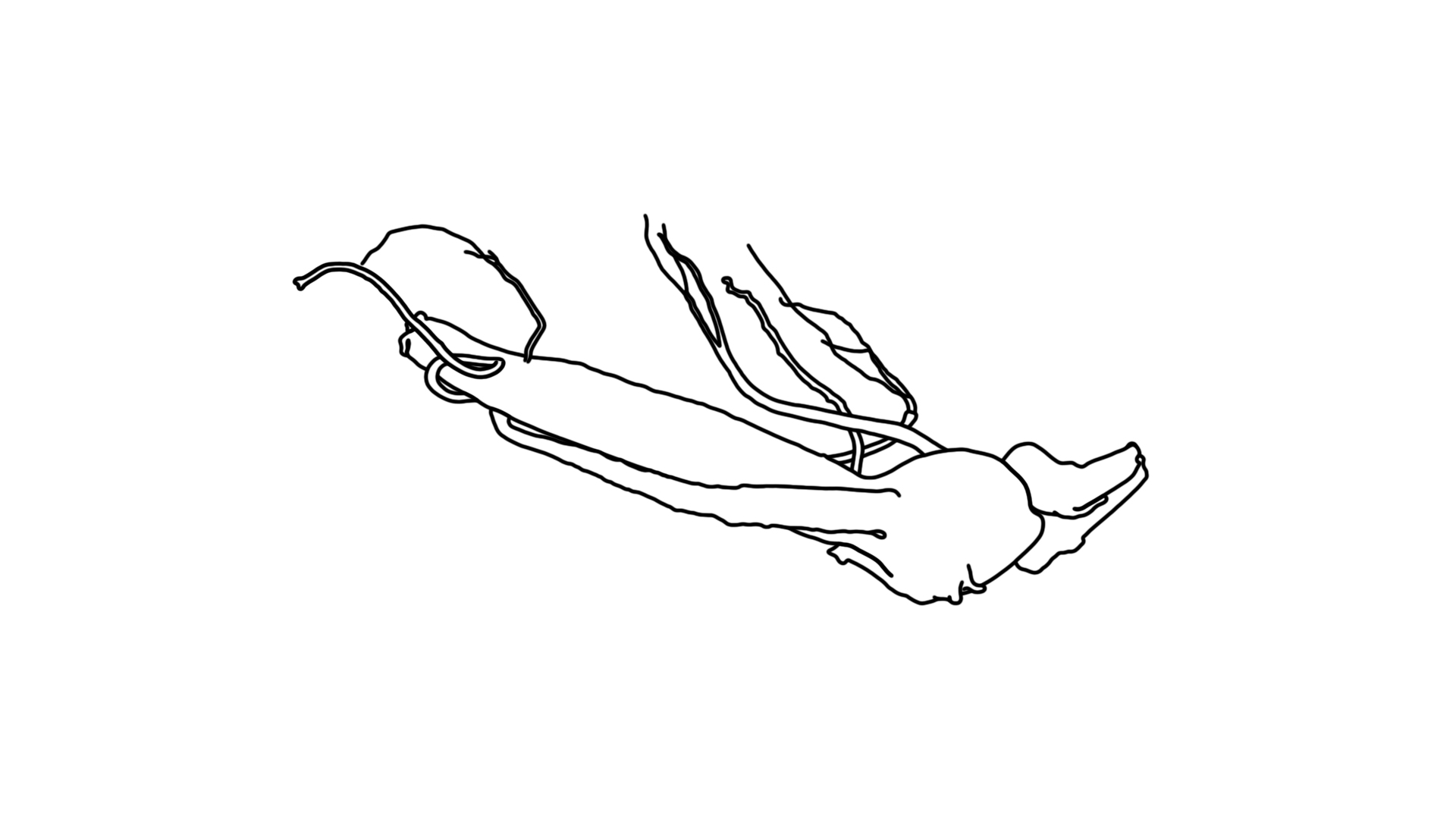
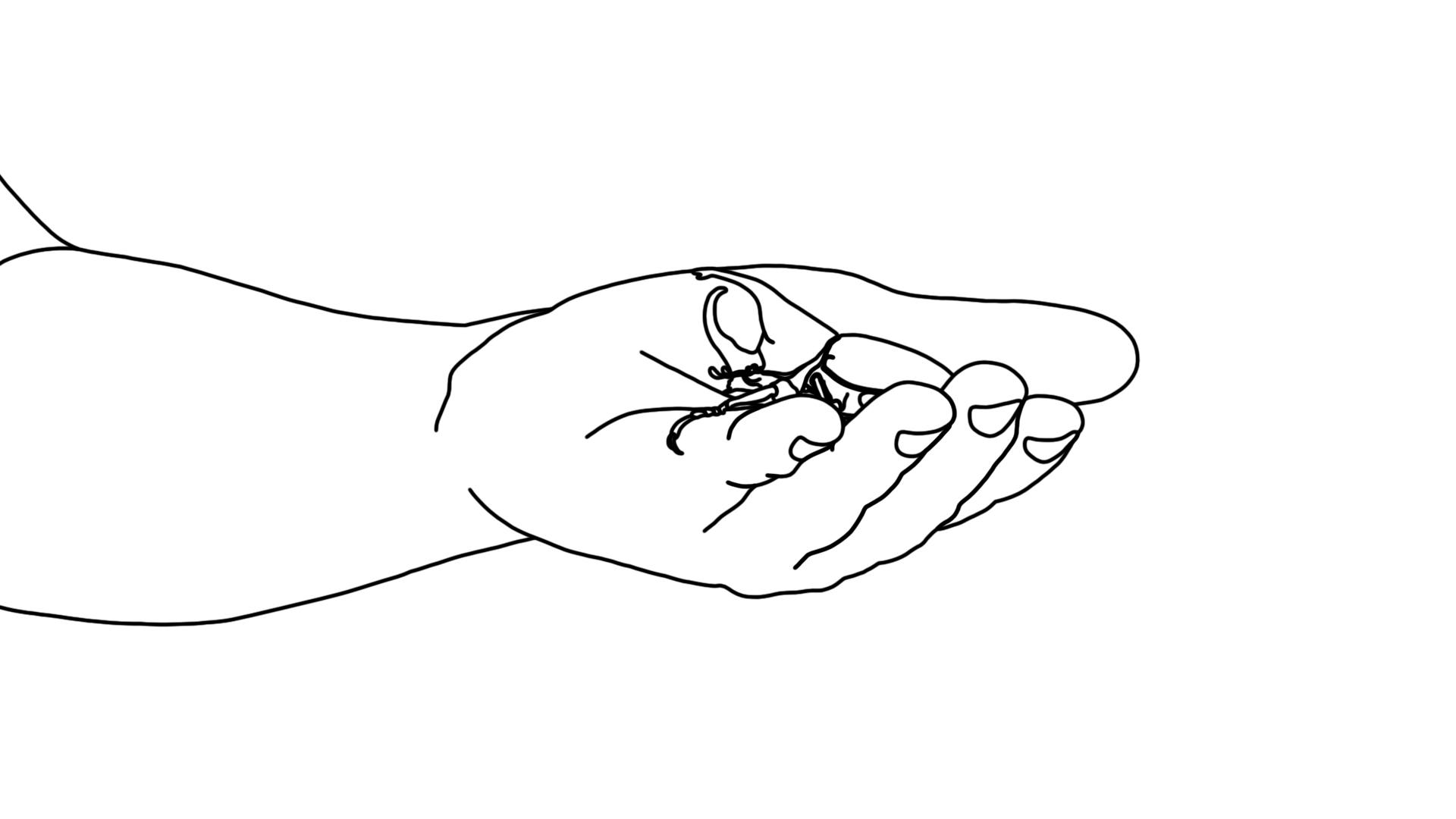
Oliver Laric projects his video on a LED screen located at one of the busiest traffic junctions in the heart of Krabi City. The artist uses simple black lines on a white background to create several animation clips depicting the transformations of animal, objects, and people. Every scene continually happens without closure or resolve. The artist’s inspiration and references come from images found in history. All of the cartoon characters Laric includes can be seen as archaeological evidence that keeps changing and adapting to fit any kind of circumstance. The video does not focus on what the creatures have become, but rather explores the moment during every transforming process. As one looks at the small lines and dots moving, bending, and twisting, to create a new outline of the new character, one realizes that, no matter how enormous things exist in nature, all of them only start from a small element. Big things have small beginnings.
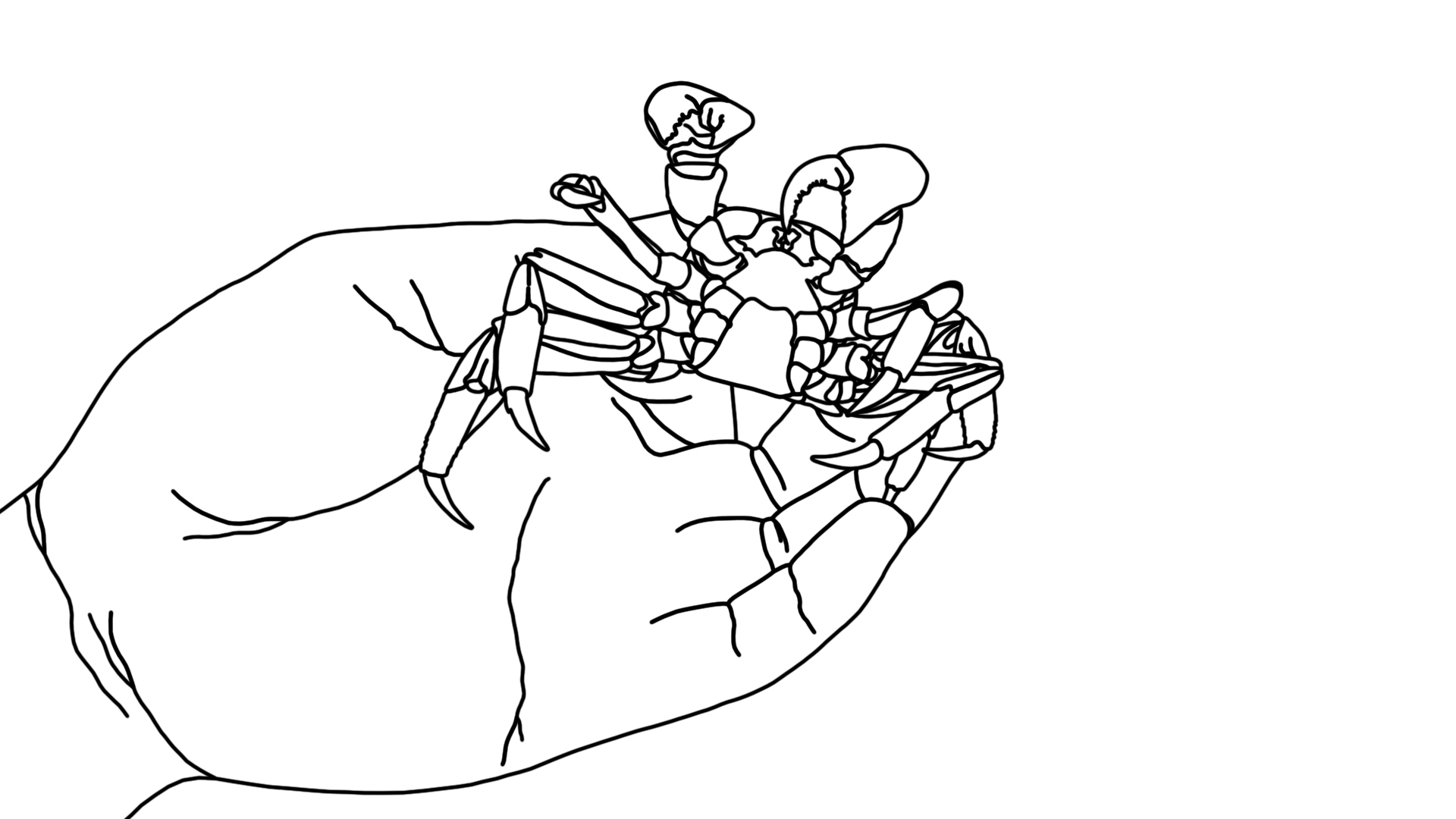
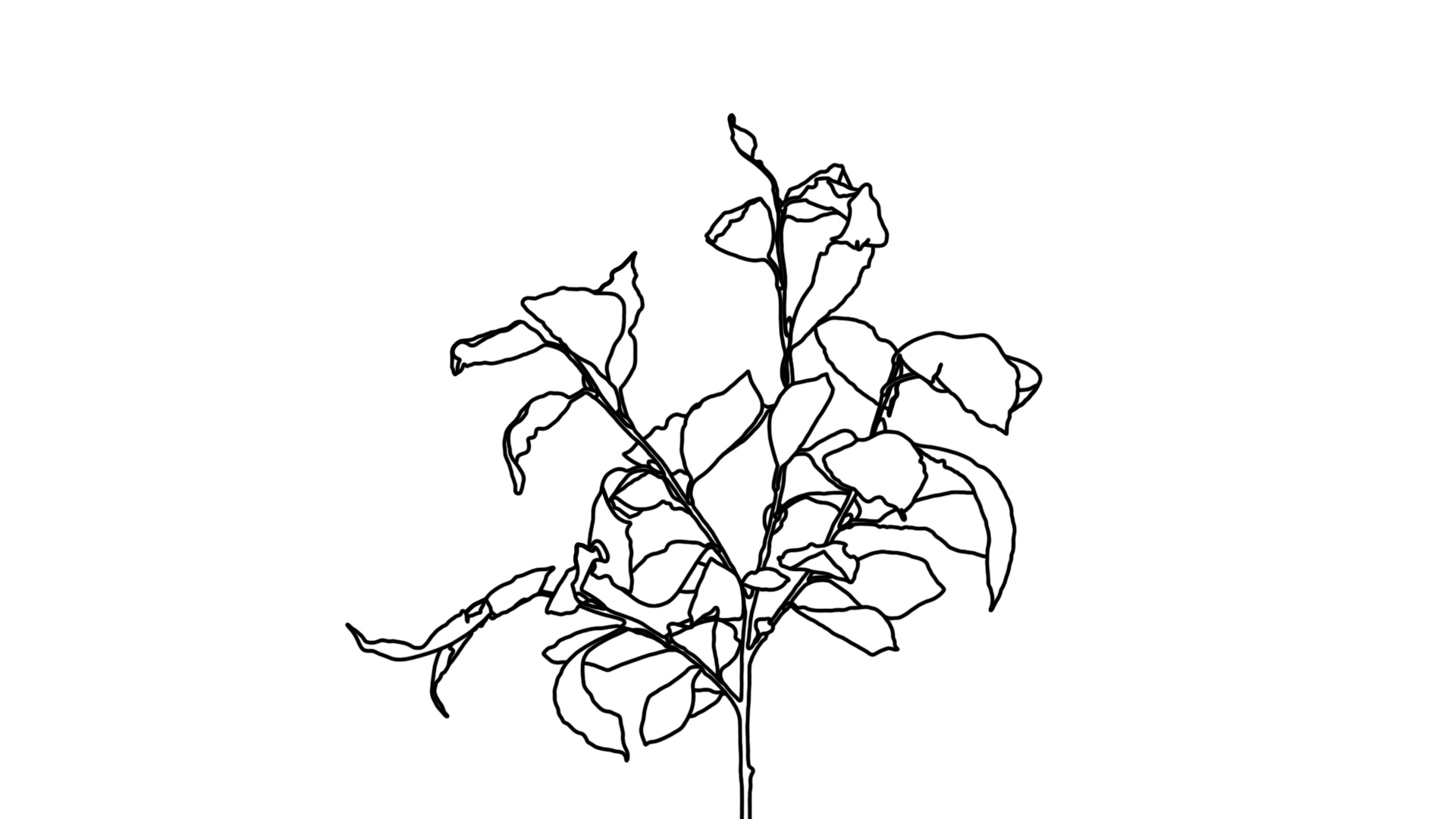
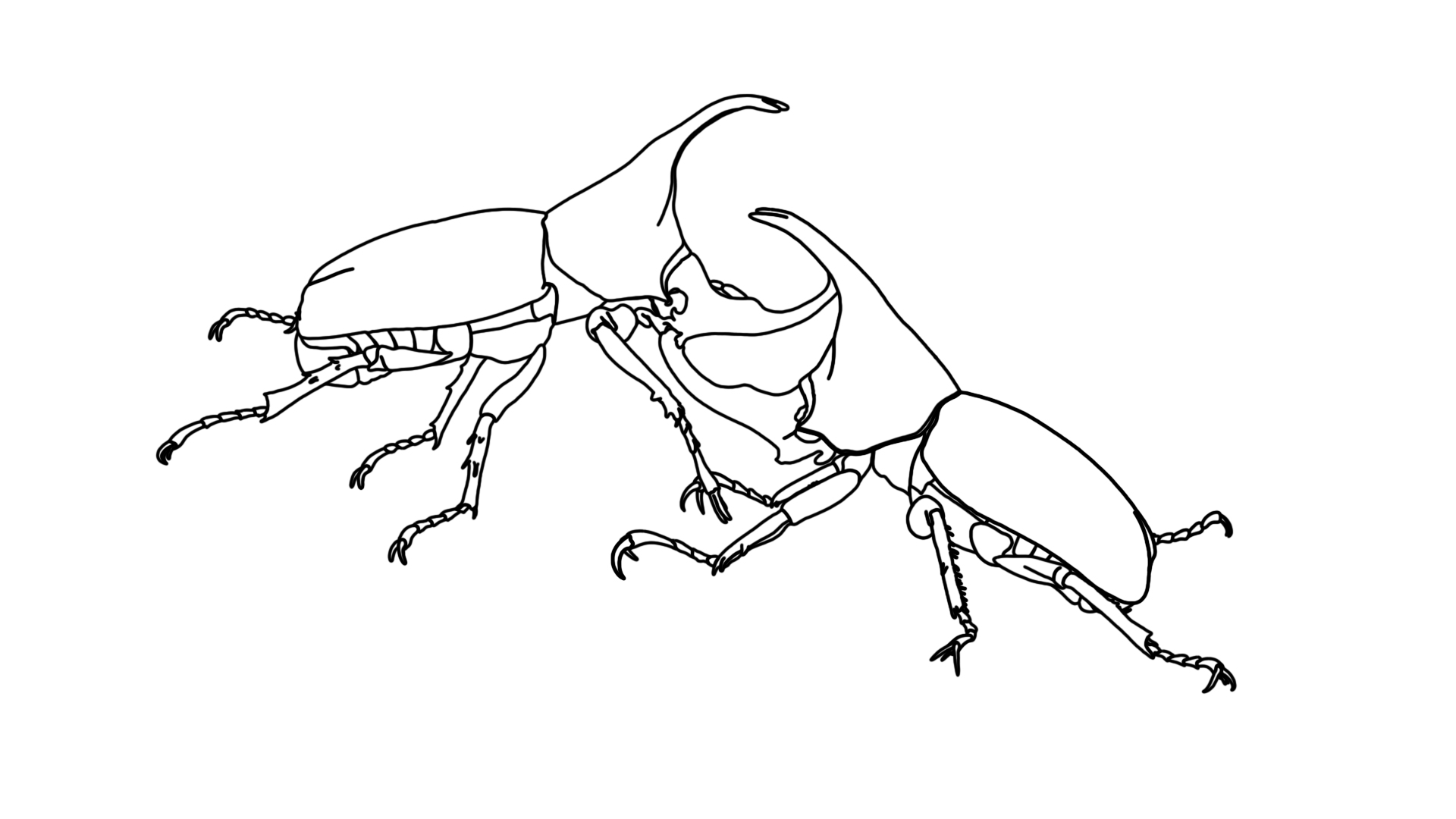
Giuseppe PENONE
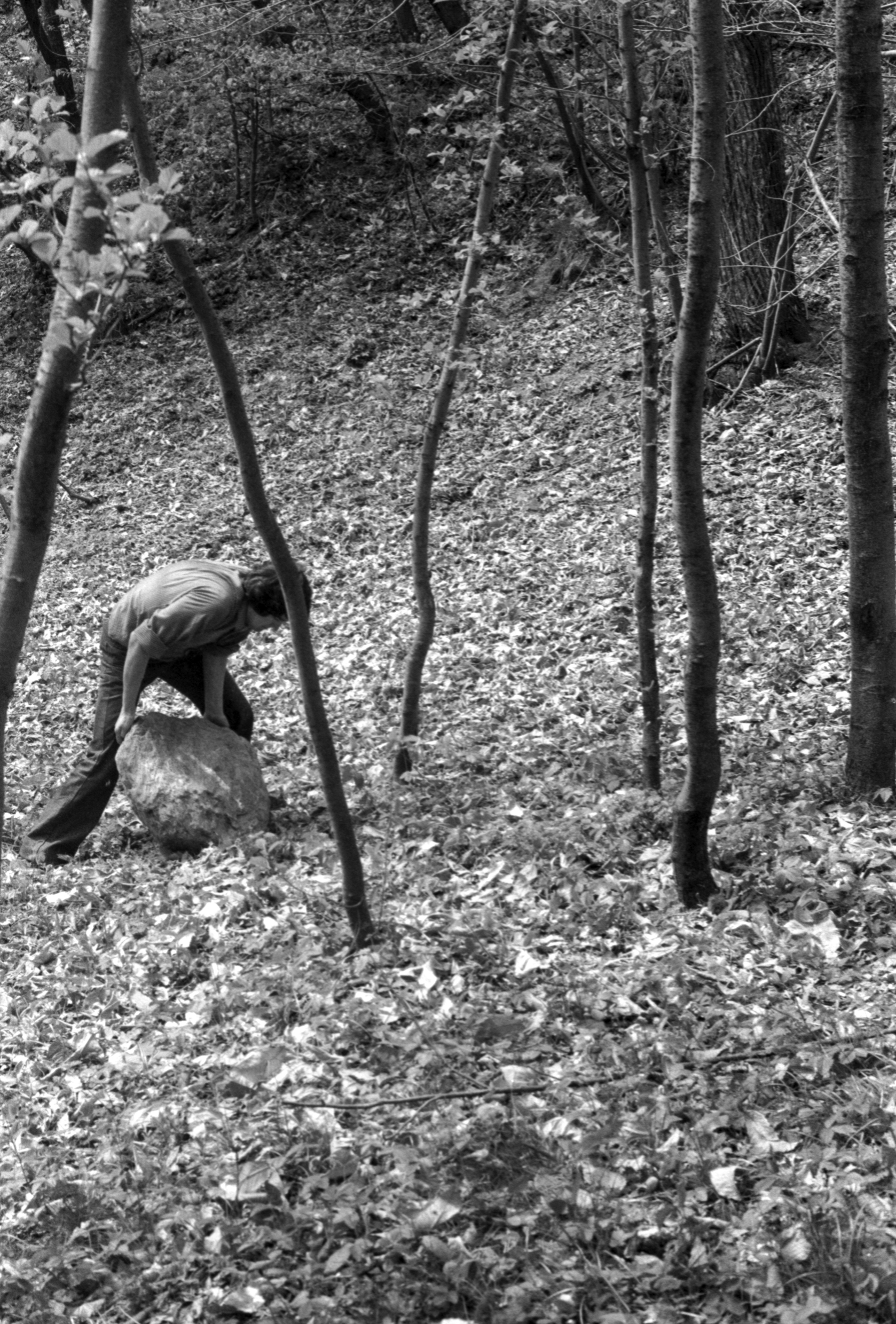
Albero e pietra, 1969, cod. 1235. Bosco, Garessio. Documentazione della realizzazione da parte dell’artista.
Turin 06 As in many other countries, tourism, as well as globalization is threatening the natural landscape of Thailand. Alberi e pietre (Trees and Stones), the series Penone started in 1969, sets forth his interest in the relationship between nature and men. The site-specific installation, located in the Kong Ka Pier Pak Nam park, is comprised of five Javanese cassia trees and five stones of different sizes and dimensions. They are leaning into each other and arranged in a straight line according to their decreasing dimensions. It is a visualization of the trees’ growth. The natural elements were all collected from the surrounding area by a local gardener and positioned according to the artist’s design. At the end of the exhibition, as suddenly as it appeared, the art work will vanish, and its elements will be returned to their original place. Unlike nature, men-made creations produce alternative and ephemeral imaginaries.
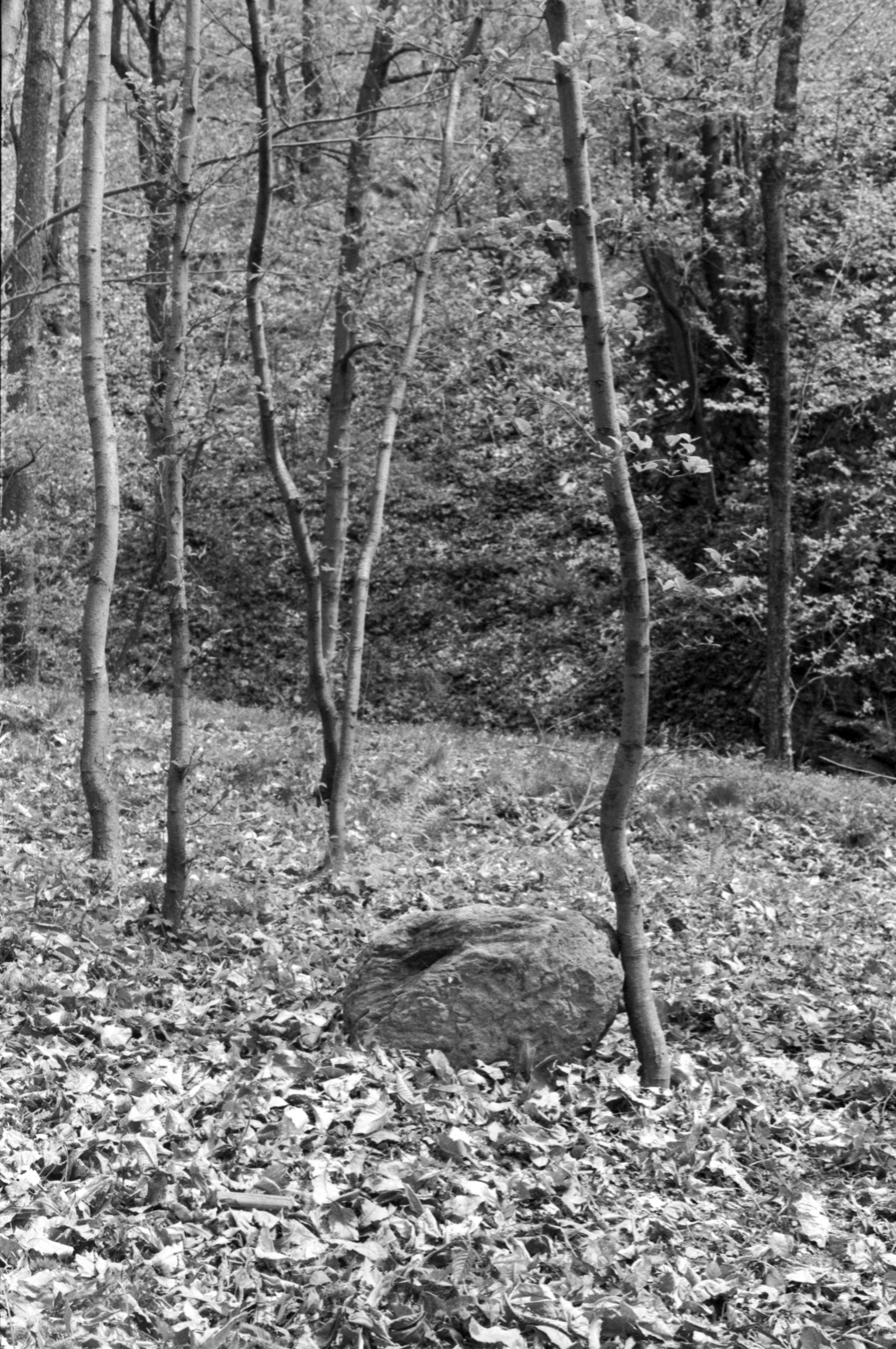
Albero e pietra_1969_cod1235 – bosco di Garessio
Ben RIVERS & Anocha SUWICHAKORNPONG
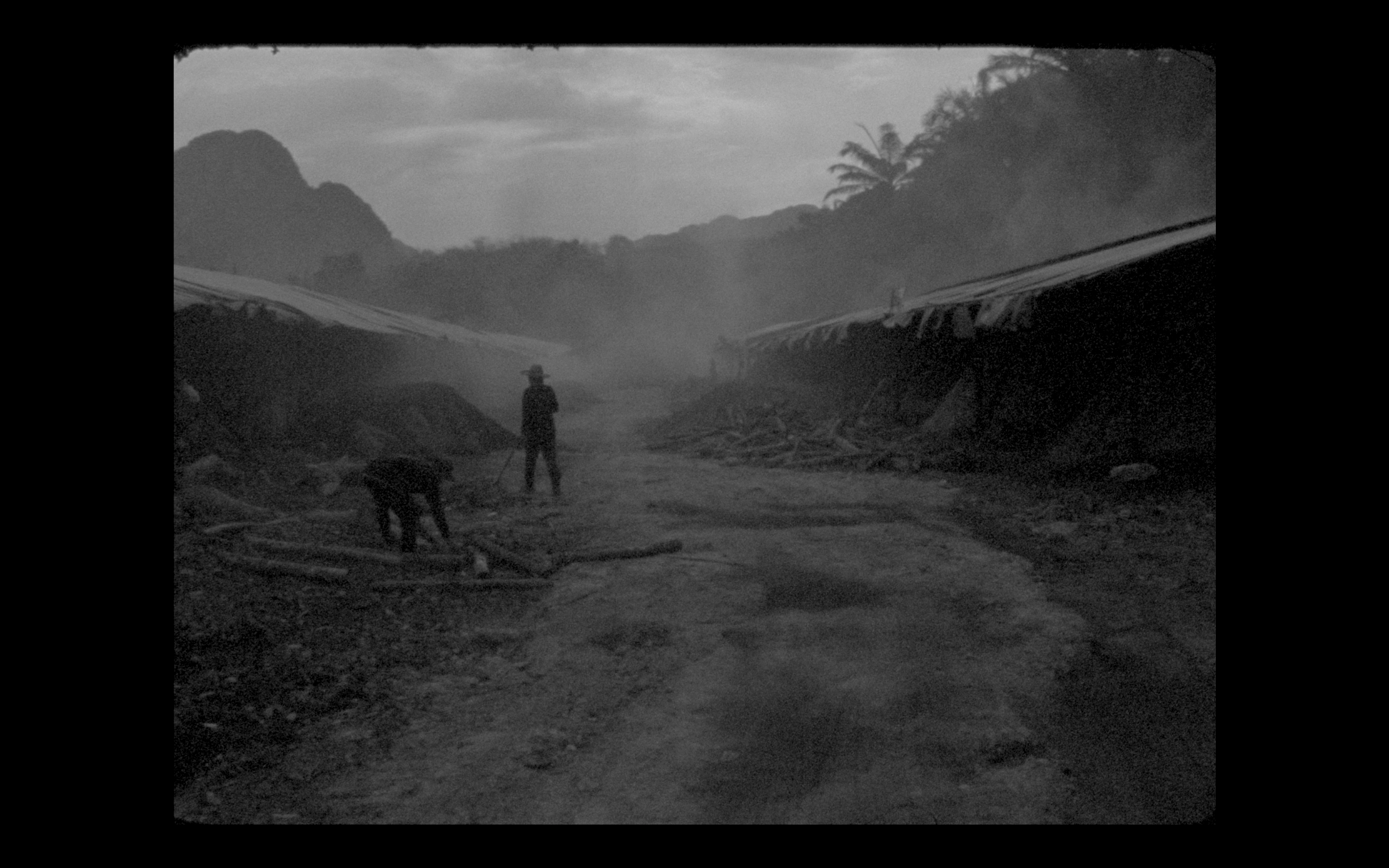
In the Holocene is a short film about the landscape work and stories from Krabi. The film is written and directed by two renowned directors Ben Rivers and Anocha Suwichakornpong. This is the first time that two artists have collaborated. Rivers is known for his experimental work that falls between documentary and fiction. His films usually involve exploring the wilderness and intimate portrayals of real-life subjects. Suwichakornpong’s films range from short film essays to feature films. She is interested in portraying the hidden side of history or mundane perspectives of the daily life. The artists have collaborated to create a feature film based on the landscape of Krabi and stories relating to the Thailand Biennale experience of the artists, curators and coordinators. This version of In the Holocene presented in the first Thailand Biennale will be expanded as two directors continue to shoot footage during the Biennale’s duration.
Kamol TASSANANCHALEE
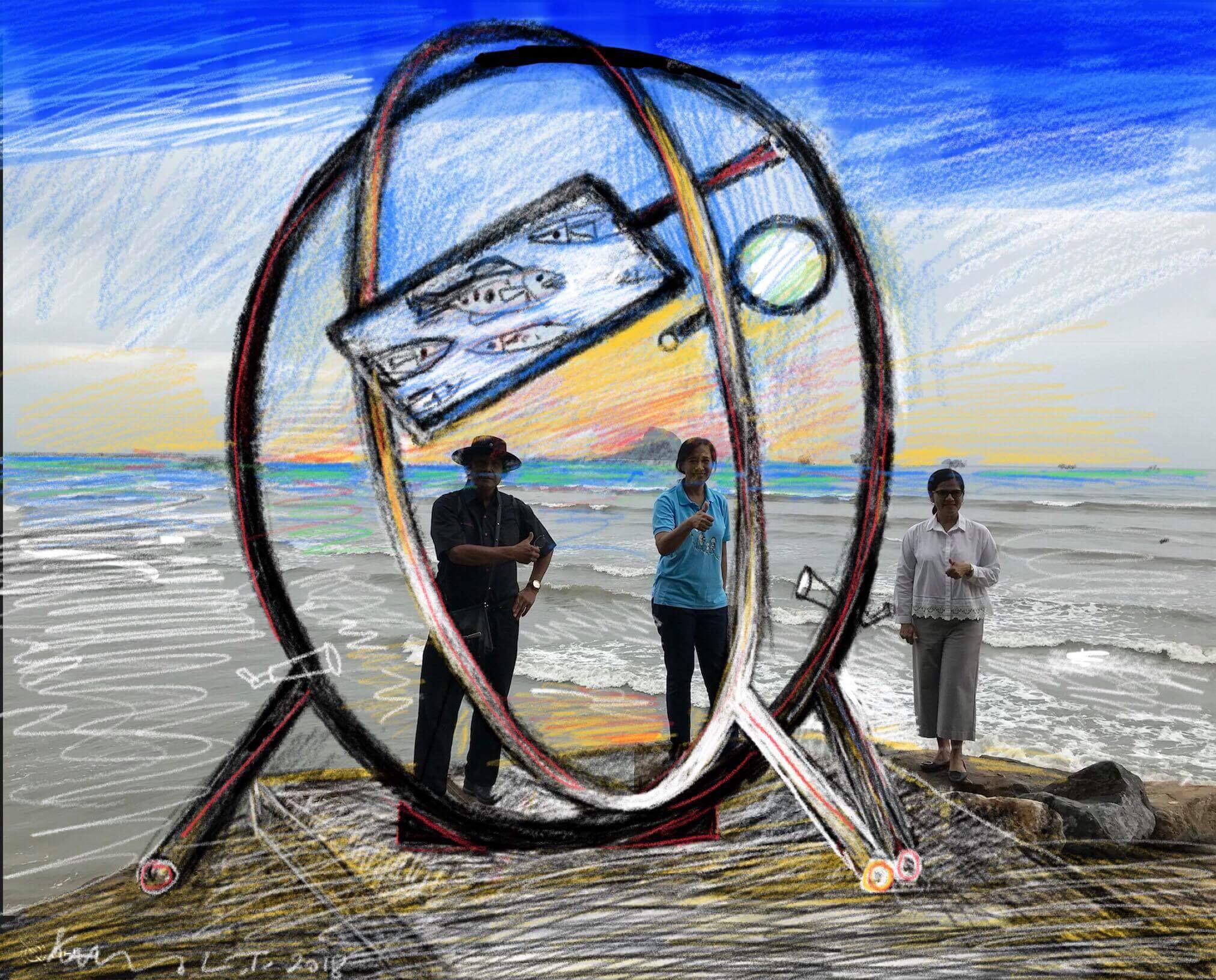
Kamol Tassananchalee, a Thai National Artist, creates artworks in various media to represent the relationship between life, experience, cultures, environment, and art. Many of Tassananchalee’s works are commissioned to be installed in public spaces. Responding to the concept of Thailand Biennale 2018’s Edge of the Wonderland Tassananchalee creates a large-scale sculptural structure inspired by the shape of two magnifying glass and installed it on the bank of Krabi River in the heart of Krabi City. By placing the work to face the beautiful scenery of a natural site, the artist urges the audience to explore the magnificent environment of Krabi. In addition, he also displays the mirror to reflect images of the audience and the pictures of underwater scenes in the LED screen attached at the base of the artwork. The artwork connects the audience to the multiple visions of the wonderland; the visions to reality of the surrounding space, the vision of themselves surrounded by Krabi’s environment, and the vision that contains an unreal experience of the underwater world.
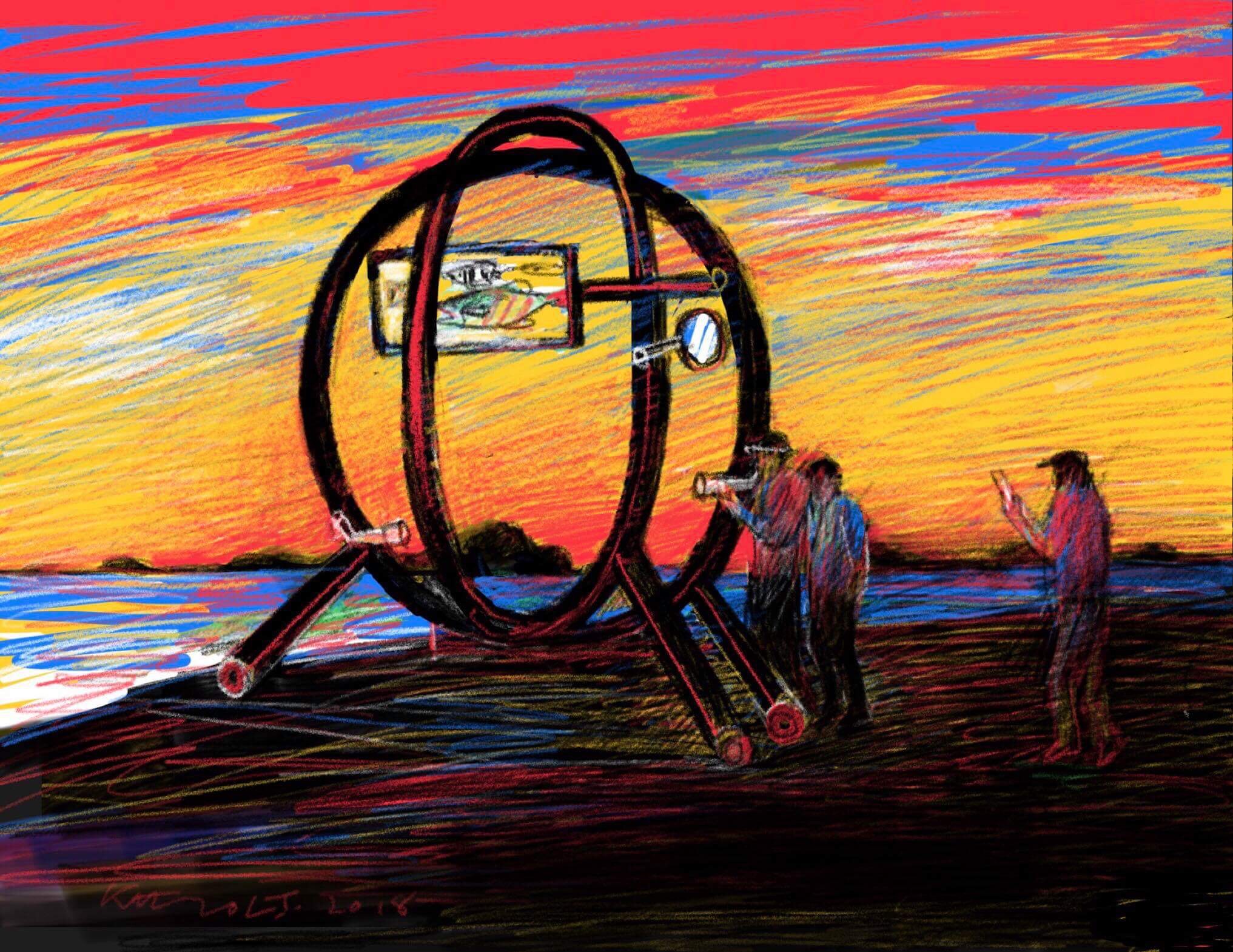
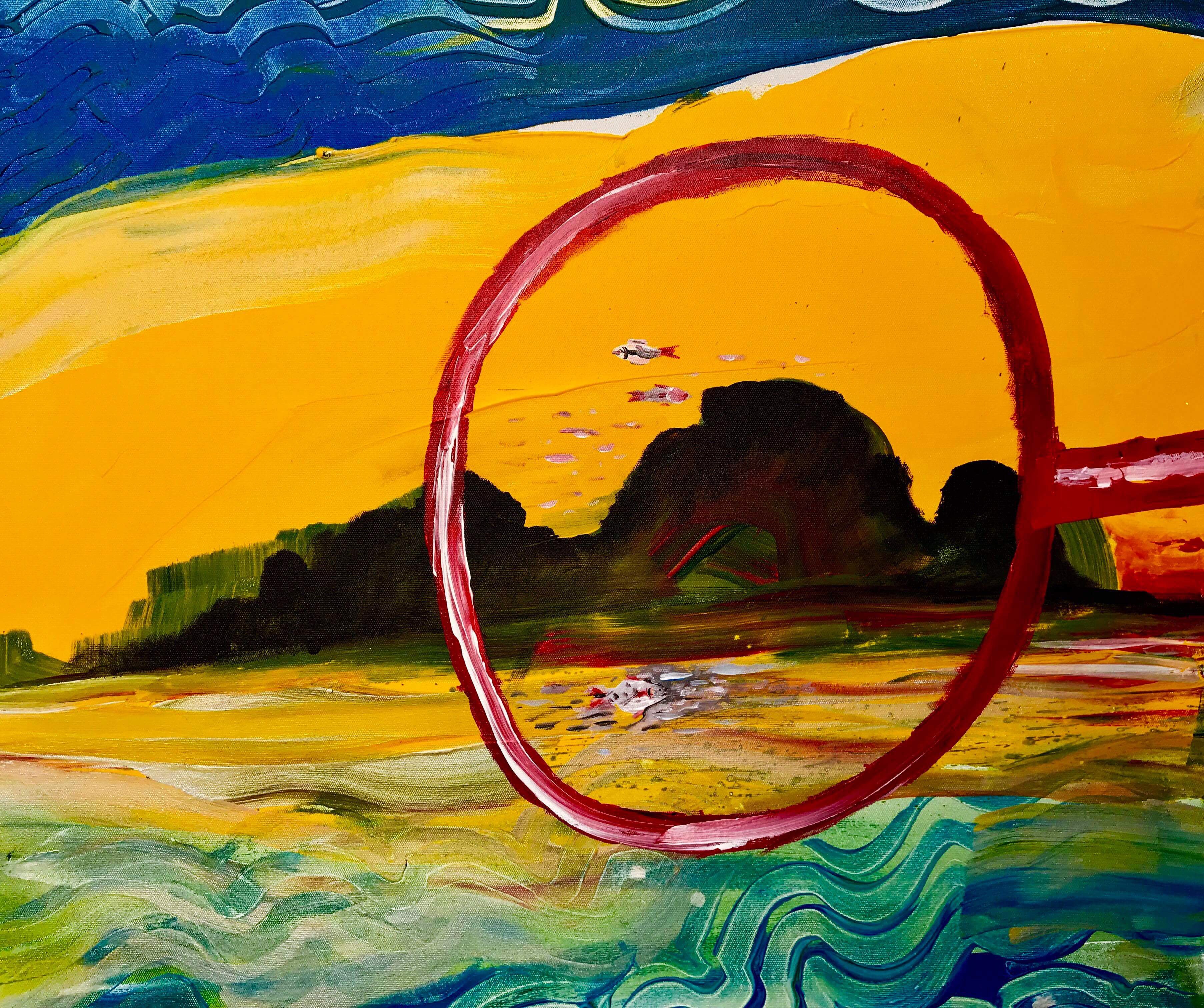
Panya VIJINTHANASARN
Panya Vijinthanasarn creates a largescale installation using parts from a car as the main material. This work, created for Thailand Biennale 2018, is installed next to a gigantic tree located along the Krabi River bank near the city, where the nature merges with the city. The shape of the assemblage is inspired by the characteristics of spiders and centipedes to reflect how lives are affected by changes in the environment caused by human behavior. Multiples oval shapes are interpreted as the eggs of these animals, as the creatures multiply and spread without control. Vijinthanasarn’s new creature conveys the artist’s message of seeing industrialisation and modern society as the invasion. Humans consume nature and the world has lost its balance for forever. Lives have no other choice but to adapt into these new surroundings. We are entering the actual wonderland where lives have to exist within a destroyed nature.
WANG Yuyang
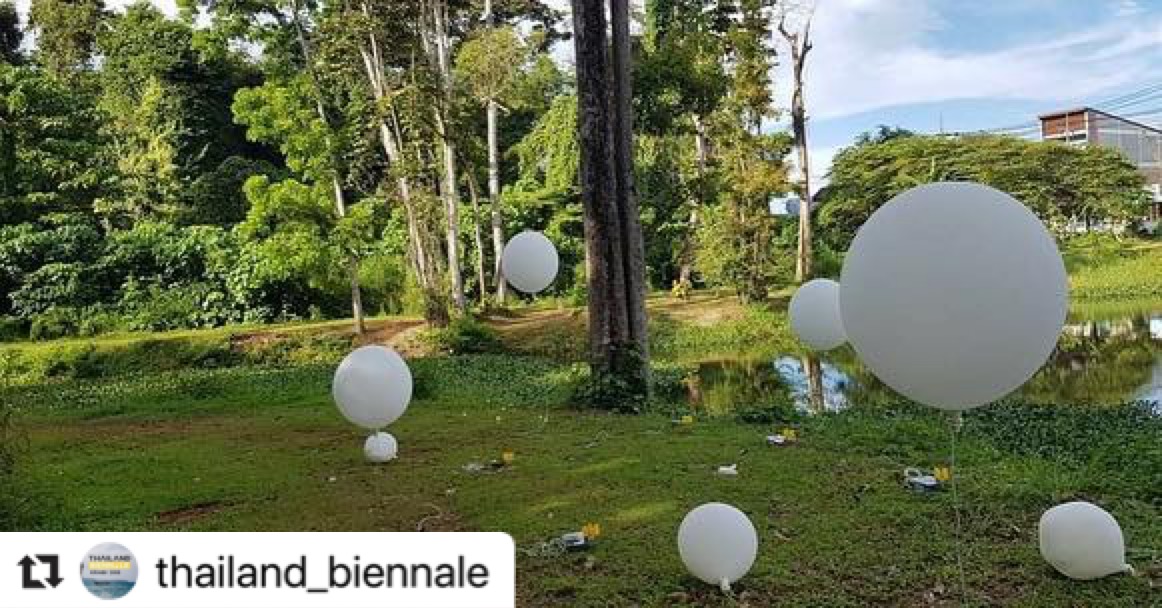
Wang Yuyang includes modern technology in his work and Gone with Wind explores the future possibilities for exhibiting outdoors. As the night arrives one hundred white balloons float in the air and appear as a blaze of coloured lights. Their luminosity depends on the sunlight they have stored during the day and the wind determines their colours. Due to a system registering the movement of the balloons, the LED lights inside the balloons assume a range of different colours, from red, yellow, to light blue and green according to the wind power and the intensity of the balloons’ flow. In addition to providing the public with a spectacular and touching work that illuminates the dark, the installation will mark the different weather conditions across the four months of the exhibition, as well as being a site-specific and eco-friendly work.
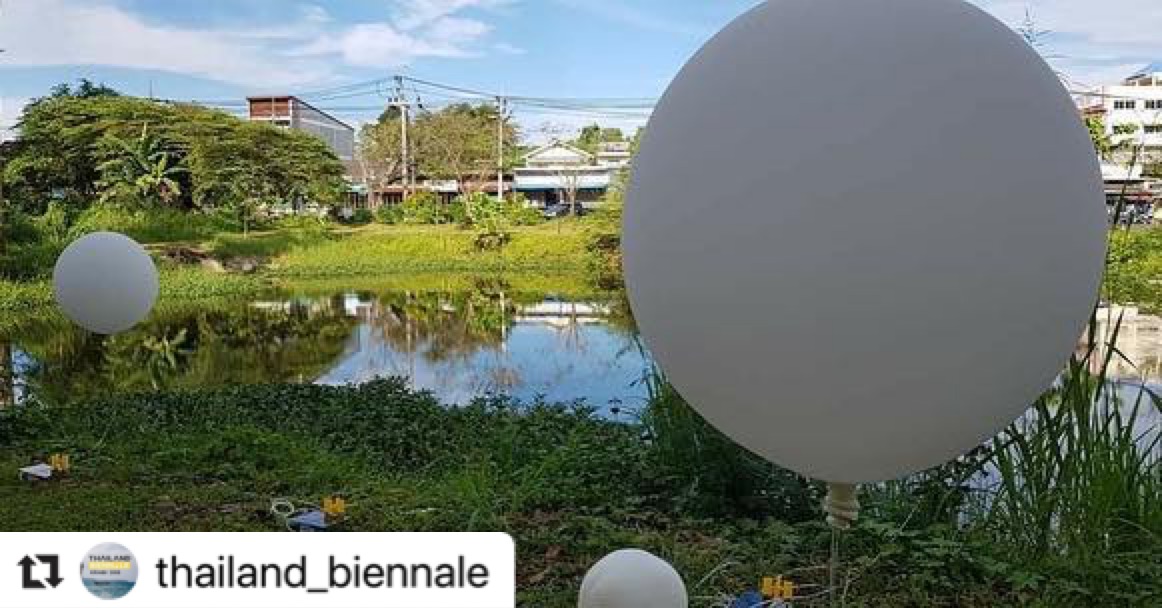
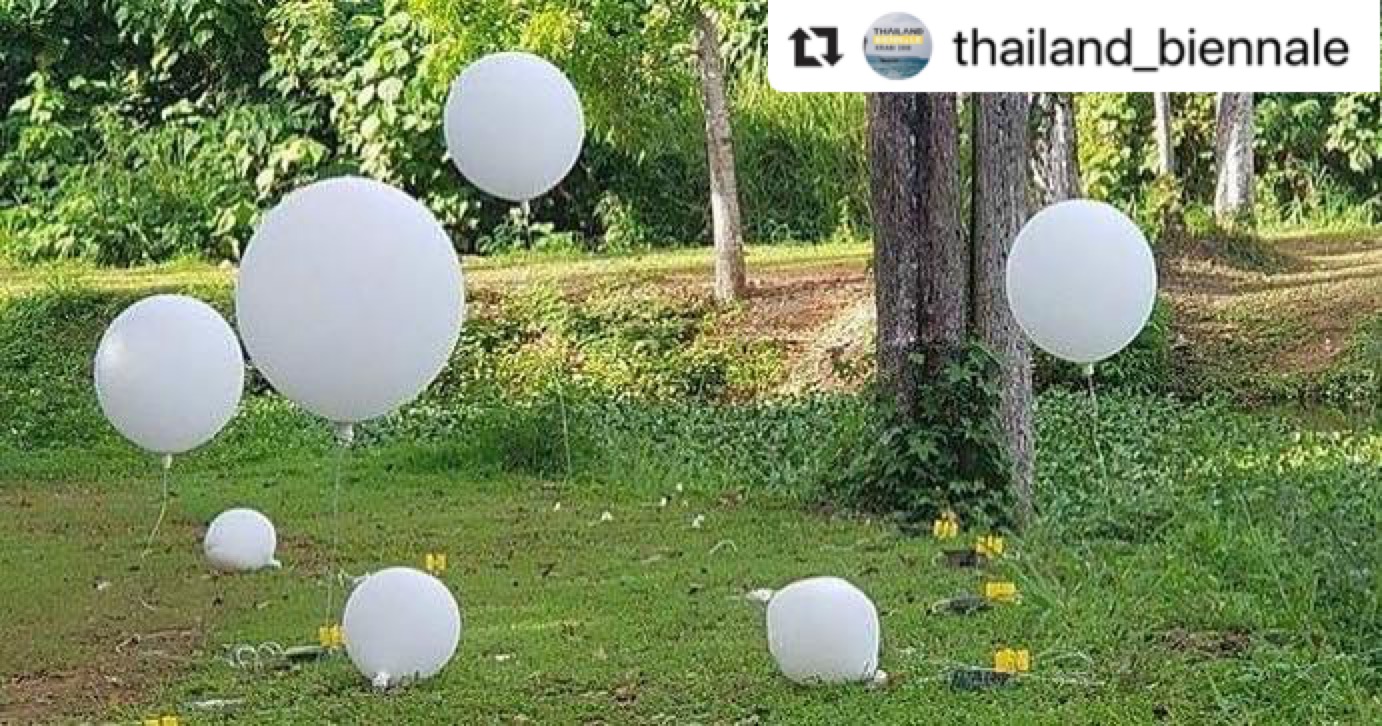
YANG Zhenzhong
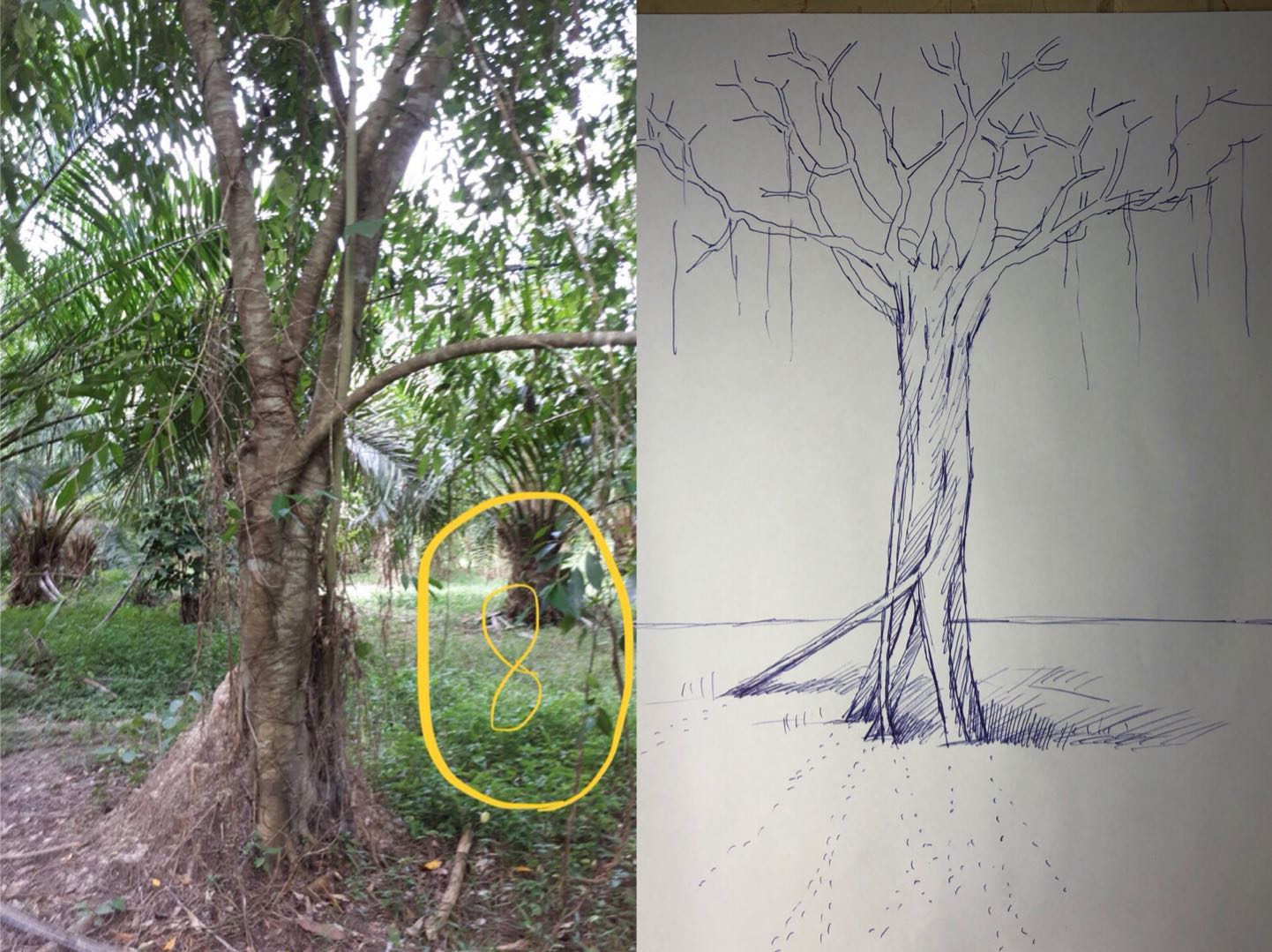
Located on the lawn beside the pathway of Kong Ka Pier, Yang Zhenzhong’s imposing installation tests the laws of nature. To be or not to be comprises ten banyan trees planted upside down in a straight line. The naked and entwined roots contradict the natural foliage normally found on tree branches and the typical lush vegetation of Thailand. This is not the artwork’s only paradox. The artist digs the trees from the soil, inverts them and plants their branches in the ground to challenge and probe the capability of both nature and plants to nourish themselves in extreme and abnormal conditions. The logic of the work operates beyond the actual reality to pervade a parallel land where buried trees and intricate root leafage constitute the quotidian landscape.
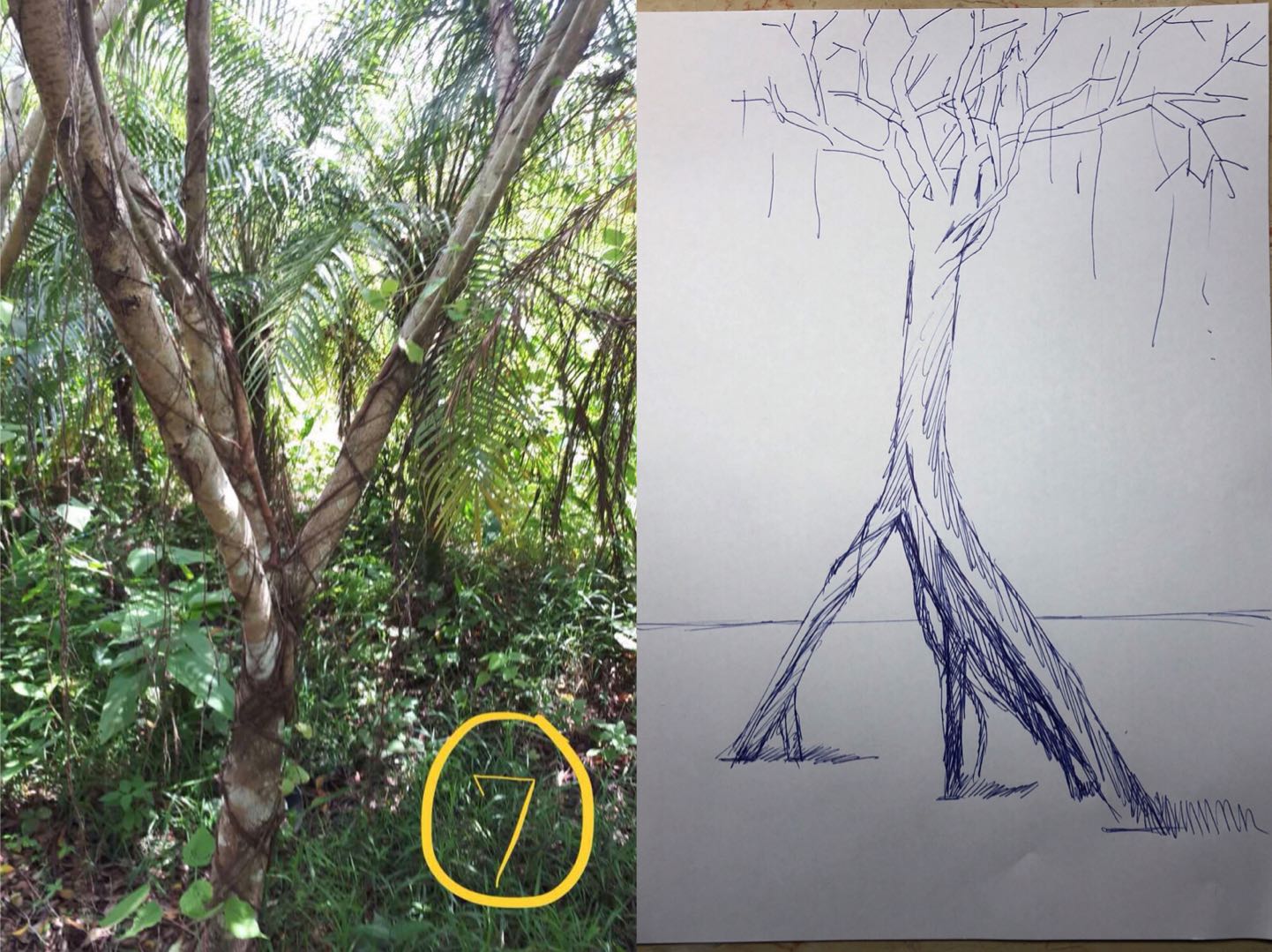
Site : Krabi Town (South)
Dusadee HUNTRAKUL
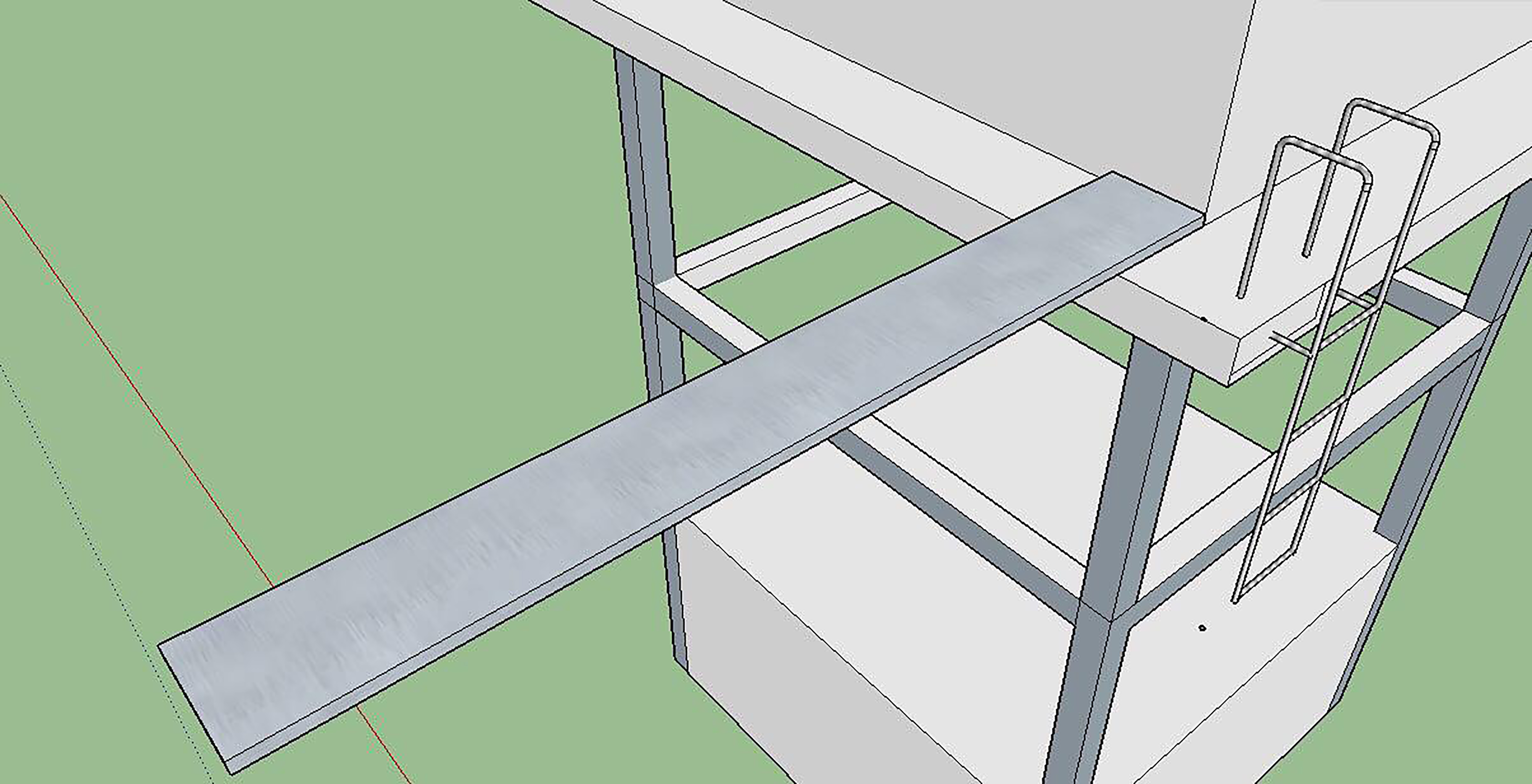
A peculiar sight of a diving board, sitting atop an obsolete, abandoned structure in the middle of Thara Park by the Krabi estuary, is, in fact, a site-specific sculpture by Dusadee Huntrakul. Hidden behind the seeming absurdity of its existence, the title of the sculpture I’m waiting on for the future of more water to come hints at the predictions that sea levels will rise in the future due to the relationships of global warming, climate change and the failure of humanity to prevent it
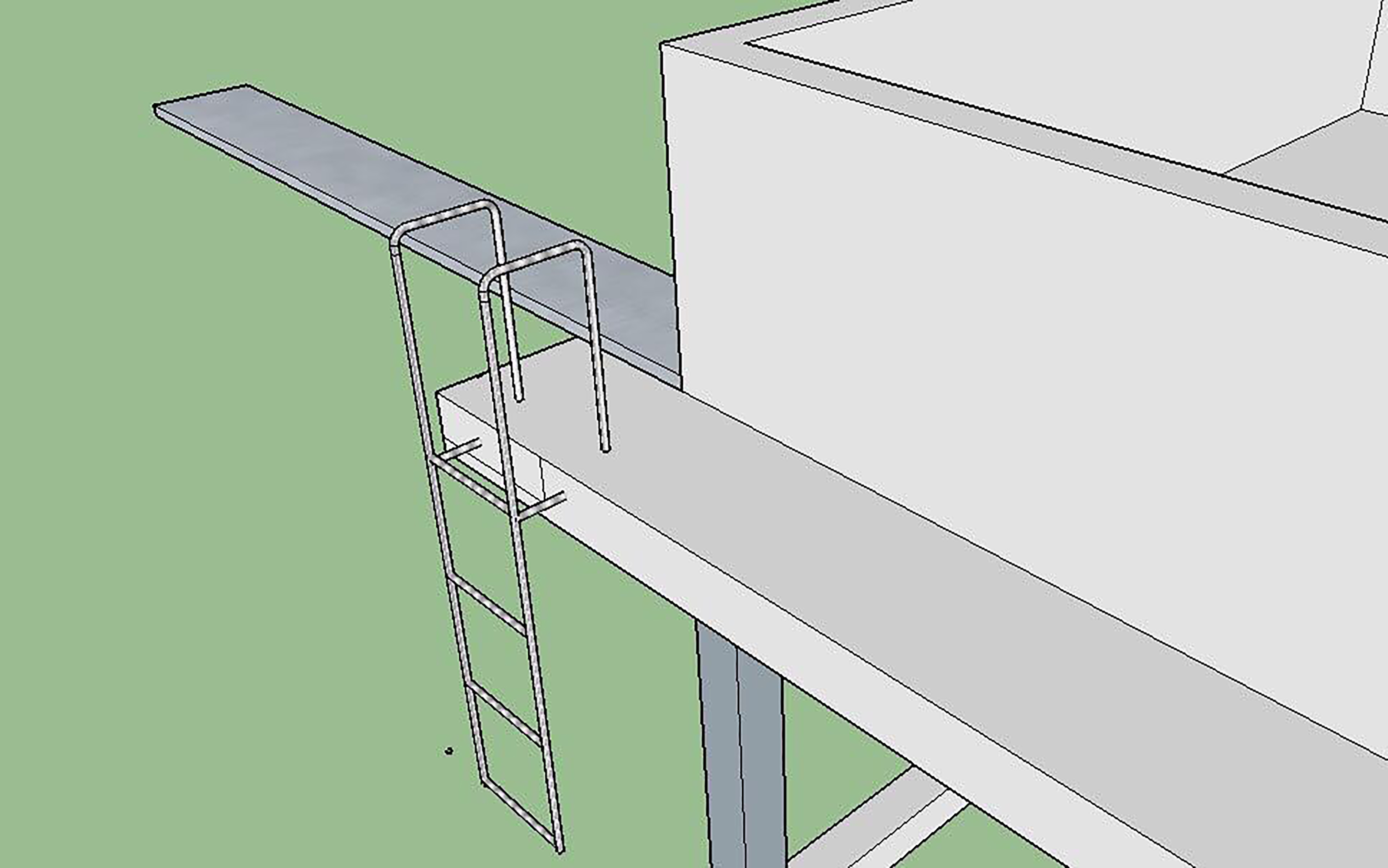
LUXURYLOGICO
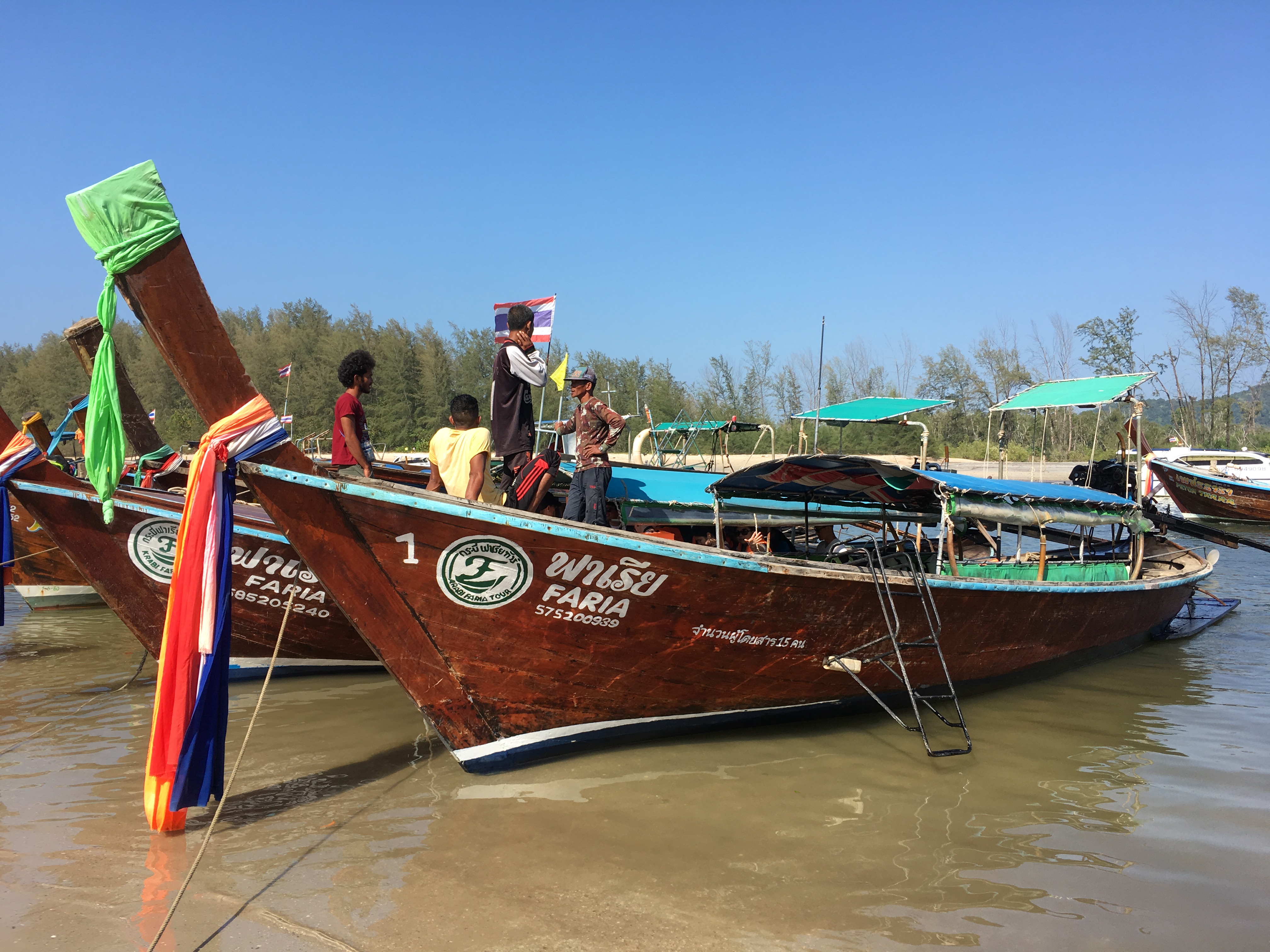
Thailand, known for its tropical beaches and golden temples, often evokes dreams of a peaceful and idyllic land. The duo Luxury Logico explores the realms of imagination through their installation at Thara Park. Located on the seashore, the work consists of a traditional wooden boat of approximately twenty metres, ornamented by various decorations. Its unexpected shape and motifs challenge our expectations and stimulate our imagination. The work also tests the possibility of combining local crafts and technology. Using computer technology and 3D printing, the artists create a model in collaboration with local boat builders. The boat symbolises the participation of local communities and traditional craftsmanship, tackling the relevance of the intersecting flows that shape our everyday realities. At a first glance, the boat’s extreme and hybrid design provides us with what appears to be an optical illusion and instils doubts about our intelligibility.
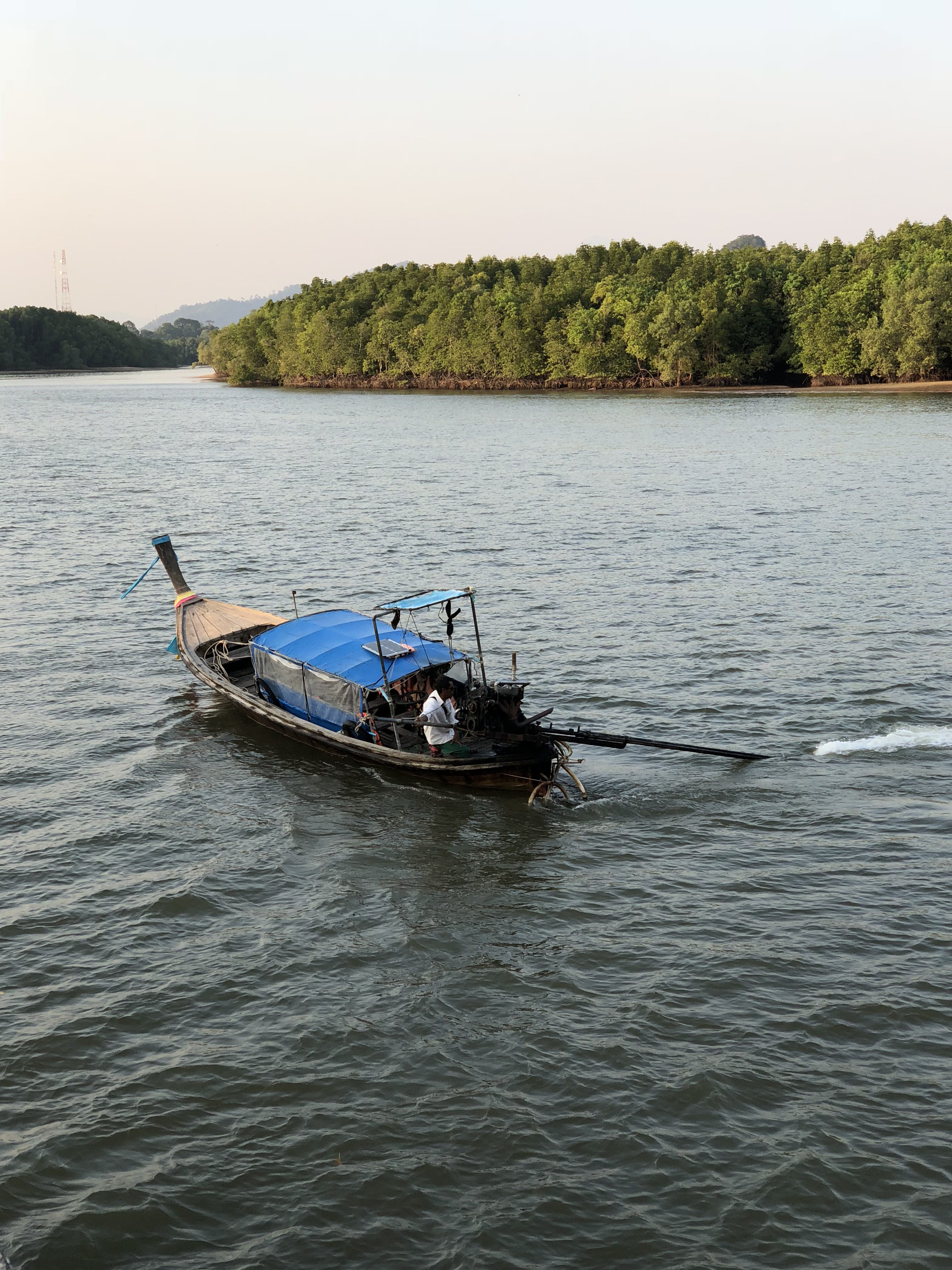
MAYRHOFER-OHATA
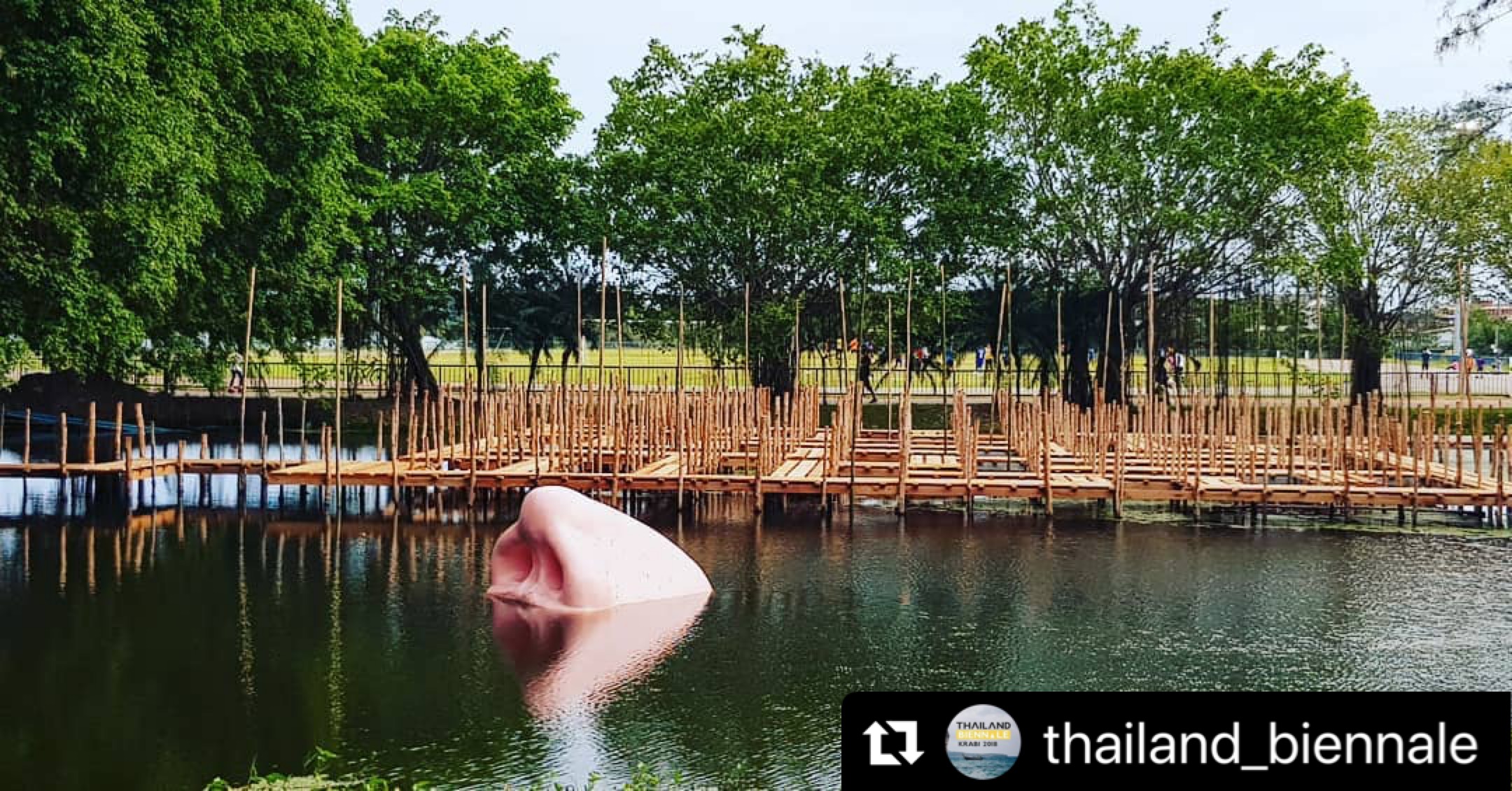
Mayrhofer-Ohata’s new work for the first Thailand Biennale, Nobody Nose: Based on a Fake Story, is a fictional extension into the real. The artist-duo created a fictional nose-character to contaminate a small lake and its landscape with symbolic and imaginary meaning. The floating, large-scale nose sculpture plays with the search for information and implicated ethics. The myth-making object mainly addresses environmental issues, inviting the viewers to explore the artwork as a placeholder for reality. A nose sculpture keeps itself above the water. It is very simple but purified by contemplation, the winds of the heavens dance between heads and hearts. The project presents a nose imagined as a bridge between outside and inside, the edge where exchange happens, where something is breathing the breath of life. Even if one is deeply asleep or meditating at the highest level of the mind, one is always breathing. A living soul needs a mindful breath, there is a spirit who dwells in one’s soul: let it take you wherever it takes you.
Vichoke MUKDAMANEE
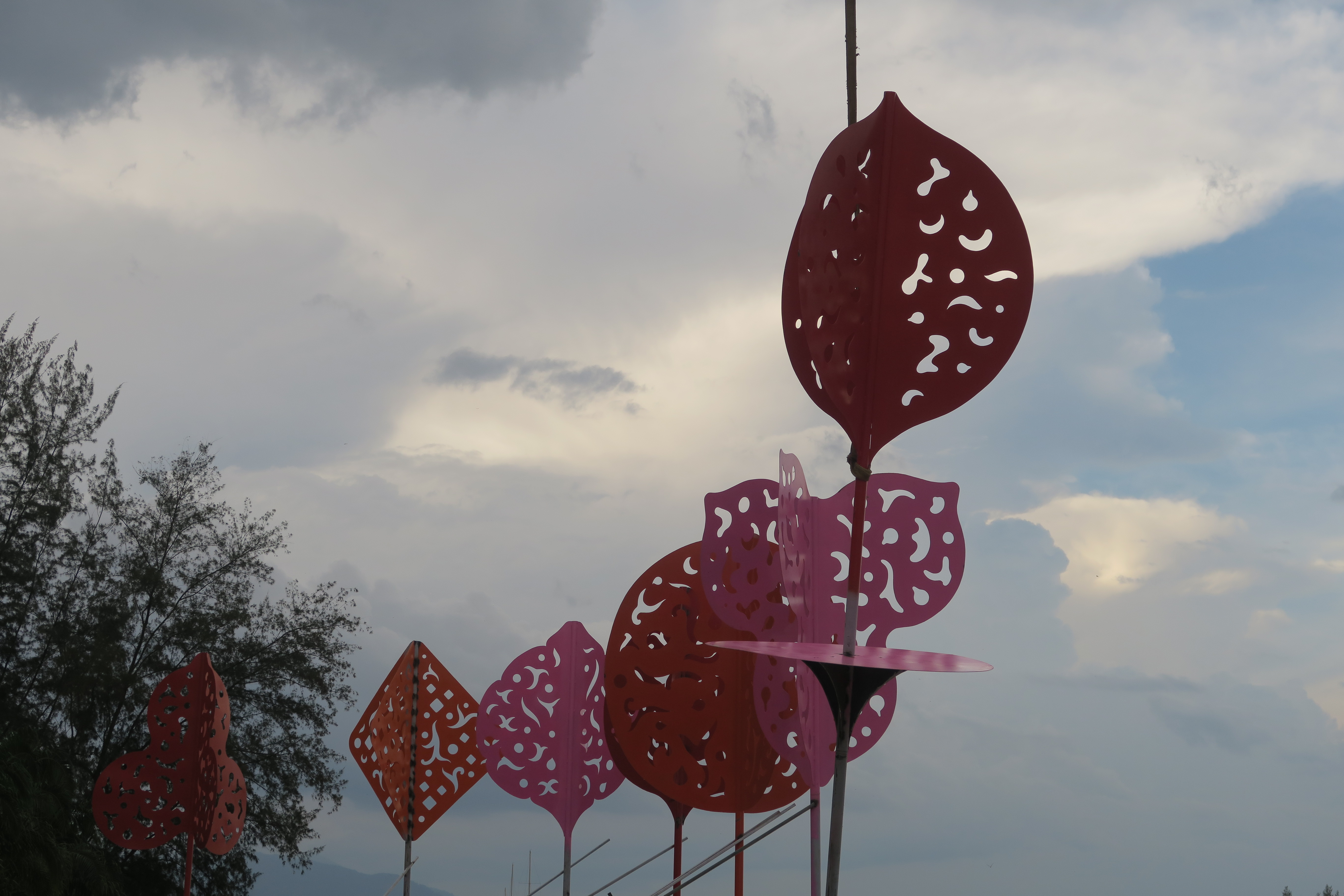
Vichoke Mukdamanee, a Thai National Artist, is inspired by the story of love between Naga, the mythical creature that has the form of a great snake, and a local human. The story is part of the famous folk tale that relates to the mythical belief regarding the beginning of several landmarks and island in Krabi and nearby provinces. Using objects from local wedding ceremonies, Mukdamanee creates semi-abstract metal sculptures and animates the forms. The multiple, sculptural structures are lined up to imitate a ceremony or ritual on the sandy bank of the Krabi River, which the artist sees as the connecting space between water and land, the imaginative world and reality, and between nature and humans. Story of Love brings audiences back to local narratives and recalls the harmonious feelings among people, no matter how different they are.
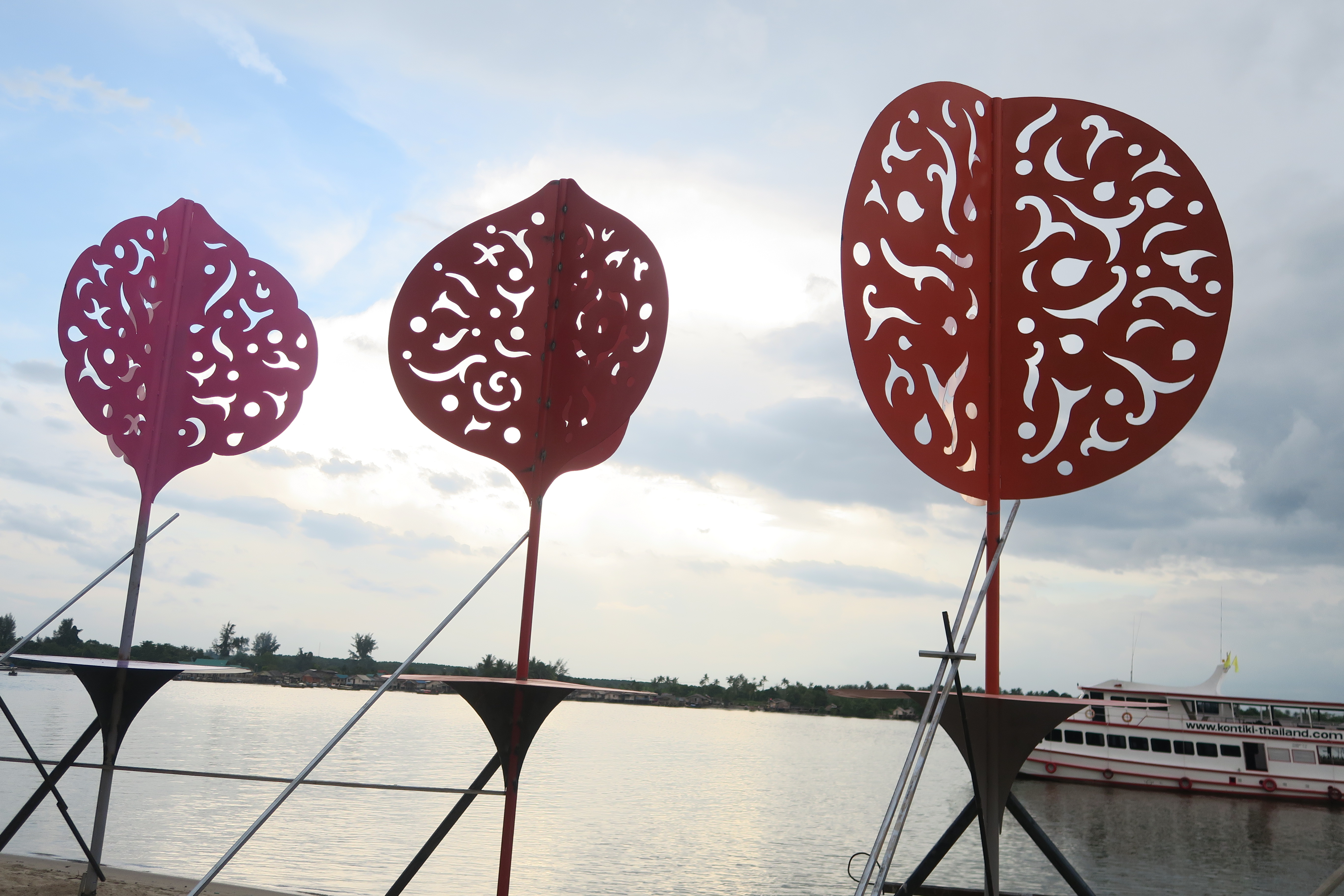
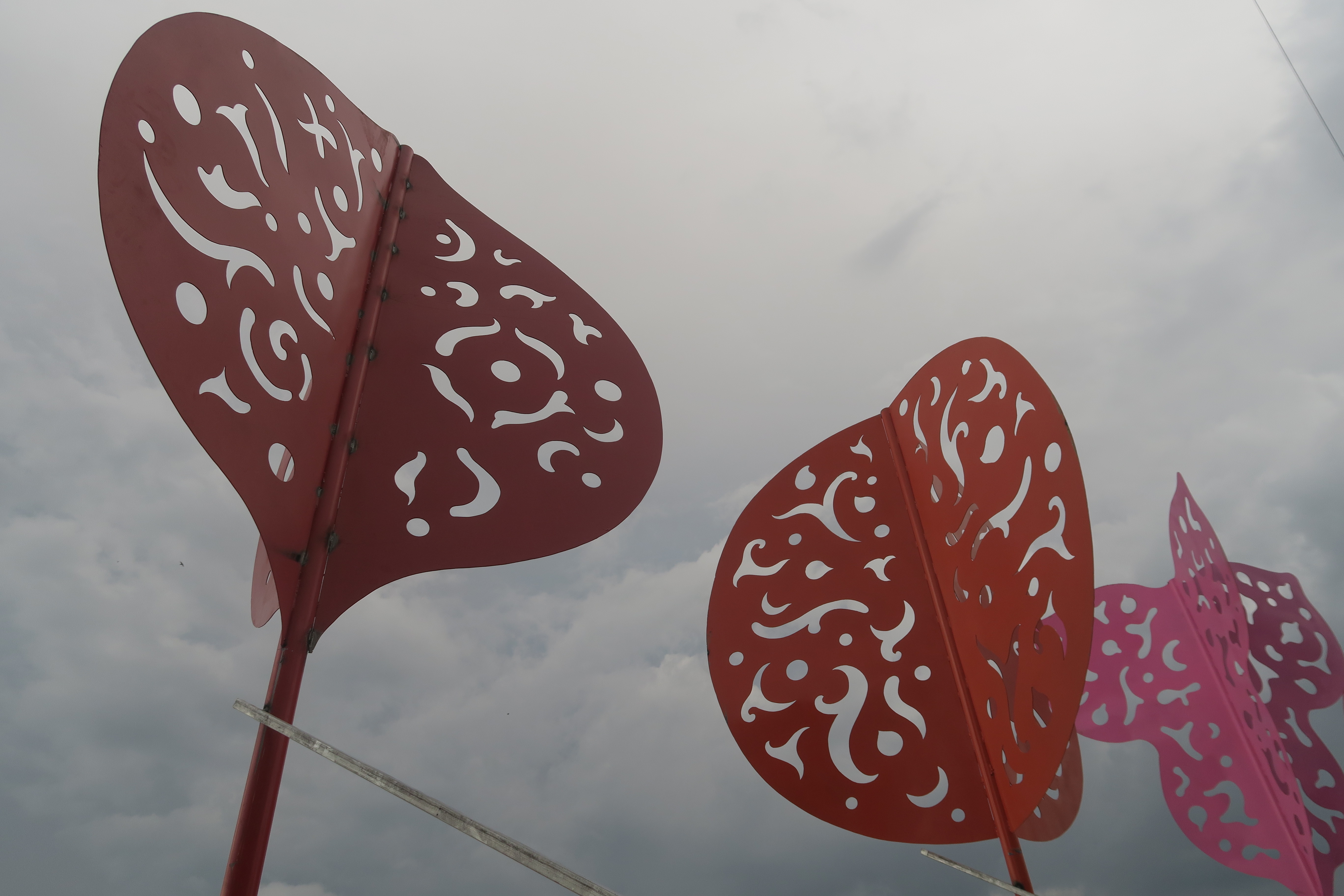
Chong Boon POK
Wandering at the Edge of the Wonderland is inspired by jetties commonly found in some of Southeast Asia’s fishing villages. The idea of a jetty suggests an inner and outer connection of a family living in a fishing village. The jetty functions as a bridge connecting the family to the sea by leading from their home to where they dock their fishing boat. The use of recycled timber found in and around the Krabi area denotes the dramatic transformation of its rural landscape, culture, and daily life. It explores memory, social and economic changes and marks the agitation and contradictory experiences due to progress and modernisation. Members of the public are invited to walk the maze shaped jetty as a way to celebrate the traditional while standing at the edge of the newly built wonderland. Walking in the maze is an introspective suggesting exploration.
Chemi ROSADO-SEIJO
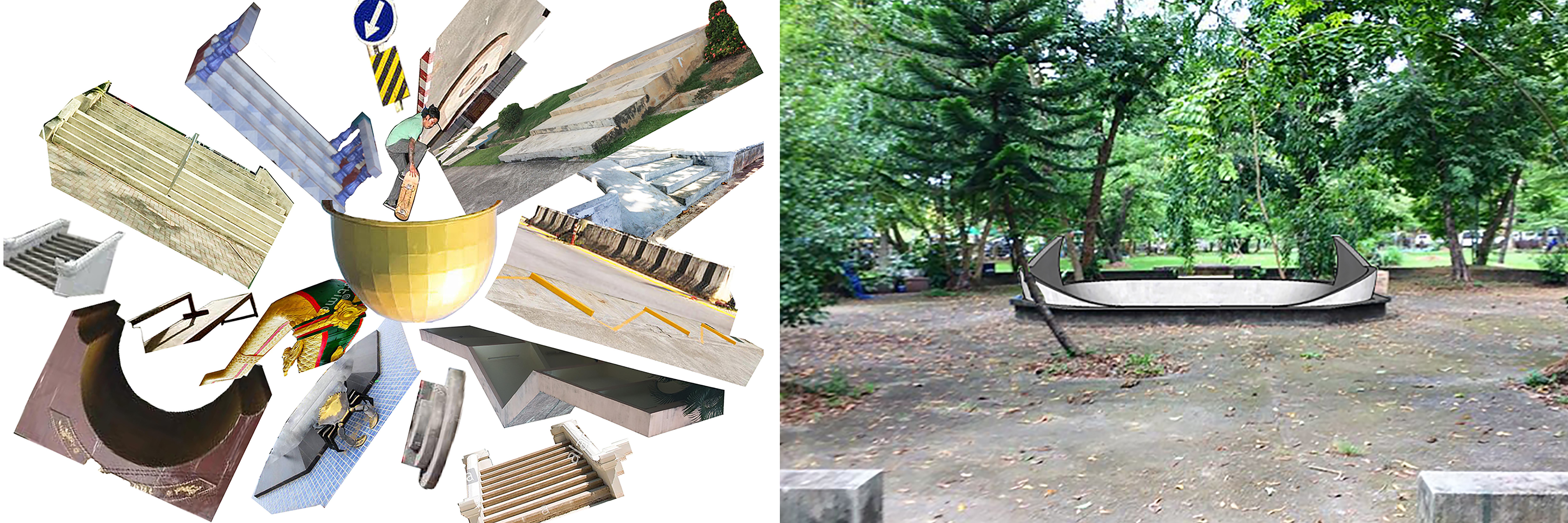
San Juan 17 Bridging contemporary art and skate- boarding, or vice versa, and aiming to make connections between various people within the community, Chemi Rosado-Seijo visited Krabi. The artist met the local skateboarders who are a small, marginalised group still striving against the lack of proper space and resources. After making their acquaintance, Rosado-Seijo decided to work with them in designing a skateboarding plaza within the city’s Thara park. The site is an unfinished and deserted fountain project. By re-appropriating the existing structure, the artist turns an obsolete “readymade” space into a functional art installation for the local skateboarder community.
Site : Noppharat Thara Beach
Vladimir ARKHIPOV
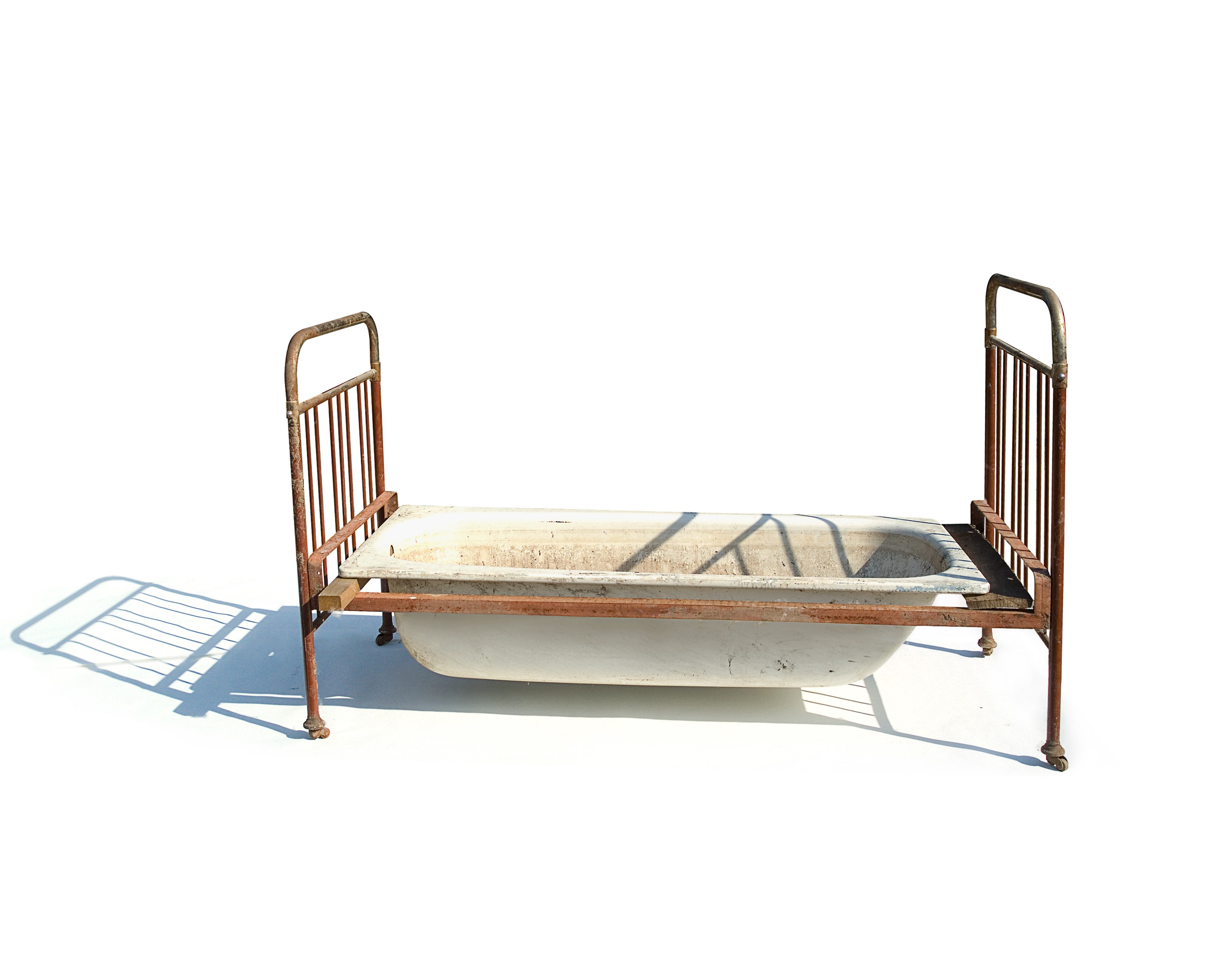
Moscow 01 To create this work, Vladimir Arkhipov looks for “invisible” homemade, functional items that people make for themselves but the artist sees it as a sculpture, as a subject of research. He knows those objects have never been commodities, never been copied, however, they have their “authors” that time and place of their creation are known, before this, nobody knows it. They’re not created as an art, for the art market, and this is why their frankness is amazing. Arkhipov aims to interact with authors, take interviews, make an archive, then exhibiting those objects as living outdoor museum. After Thailand Biennale, the exhibits will be returned to authors, thus, homemade thing twice changes their status; household items to sculptures and to household items again.
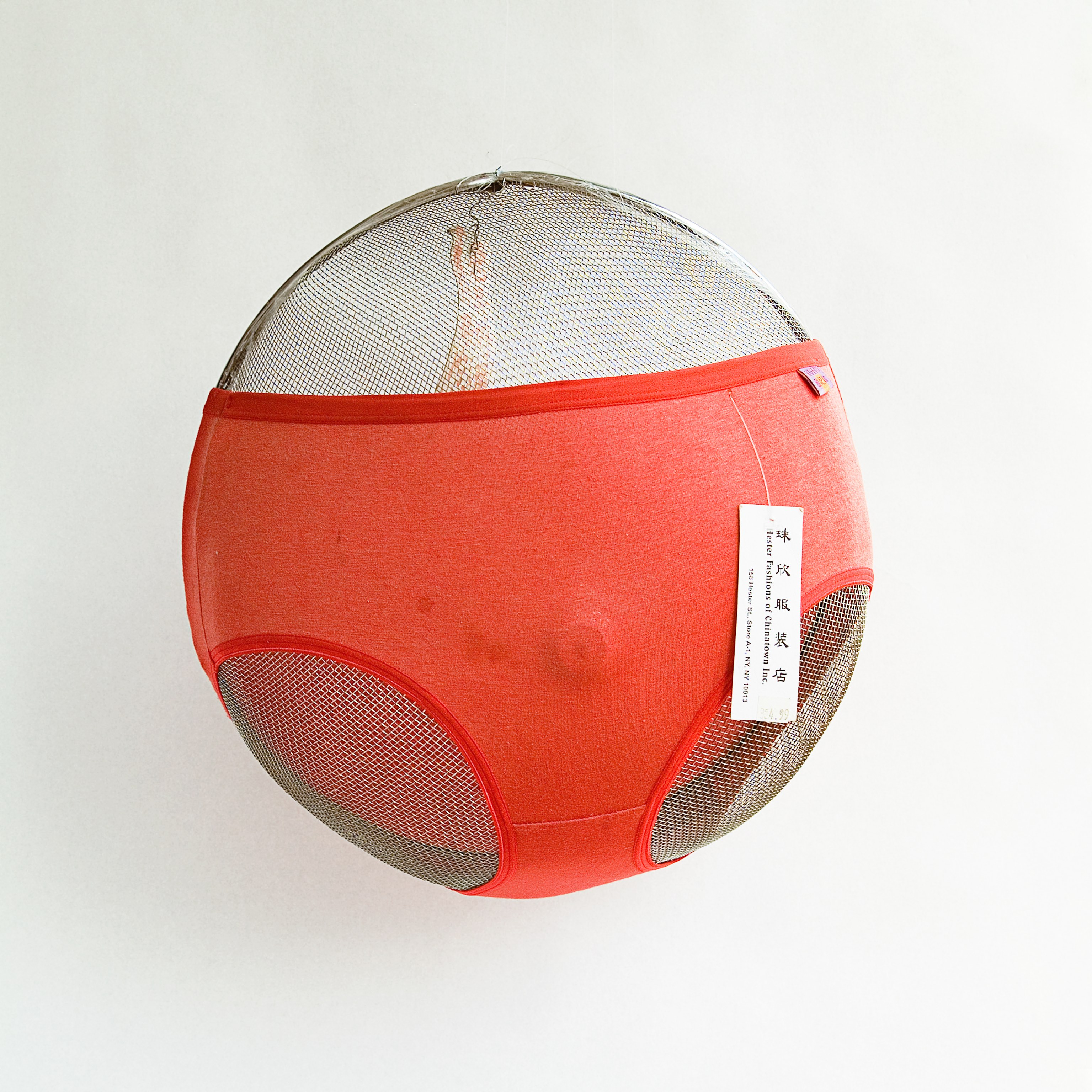
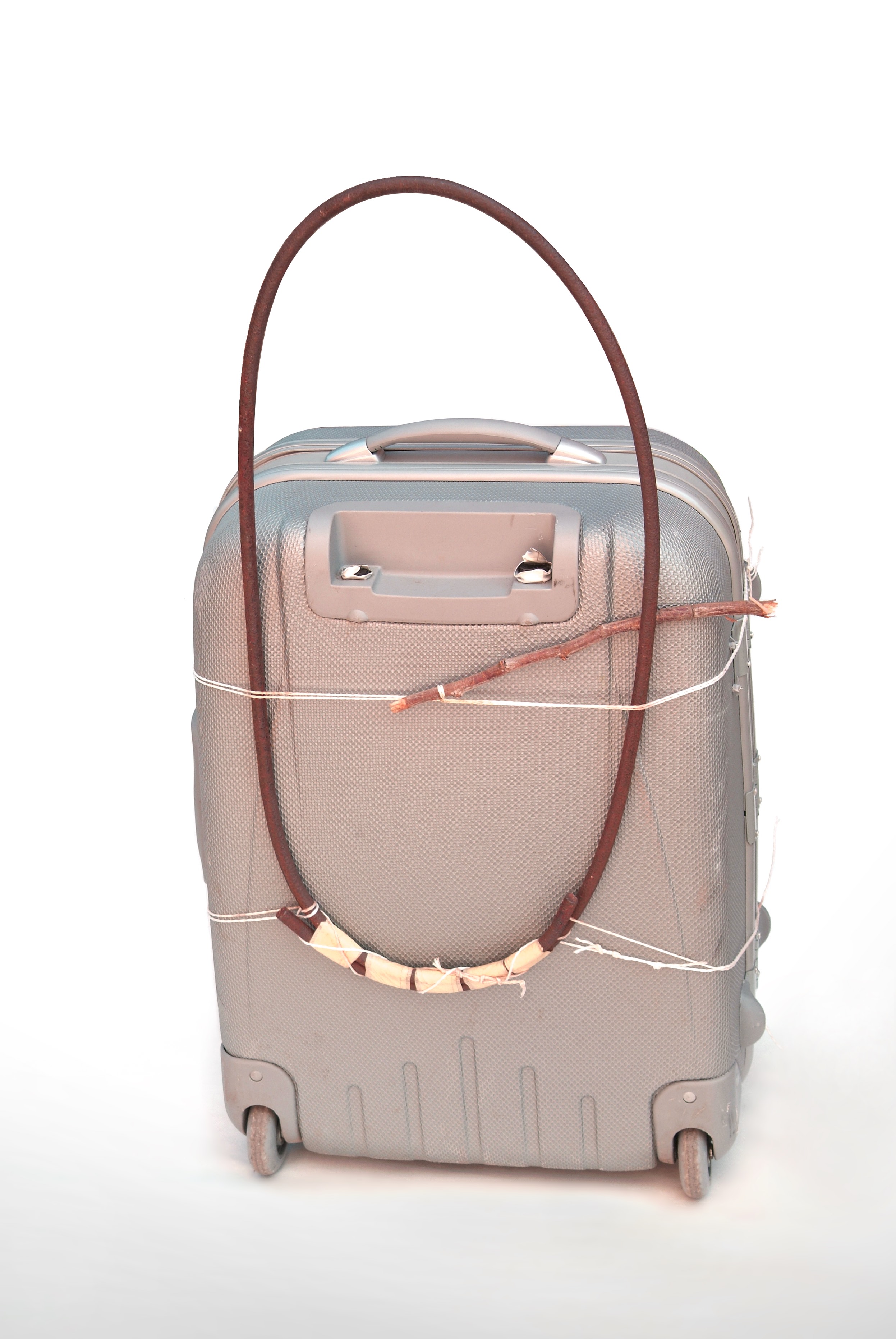
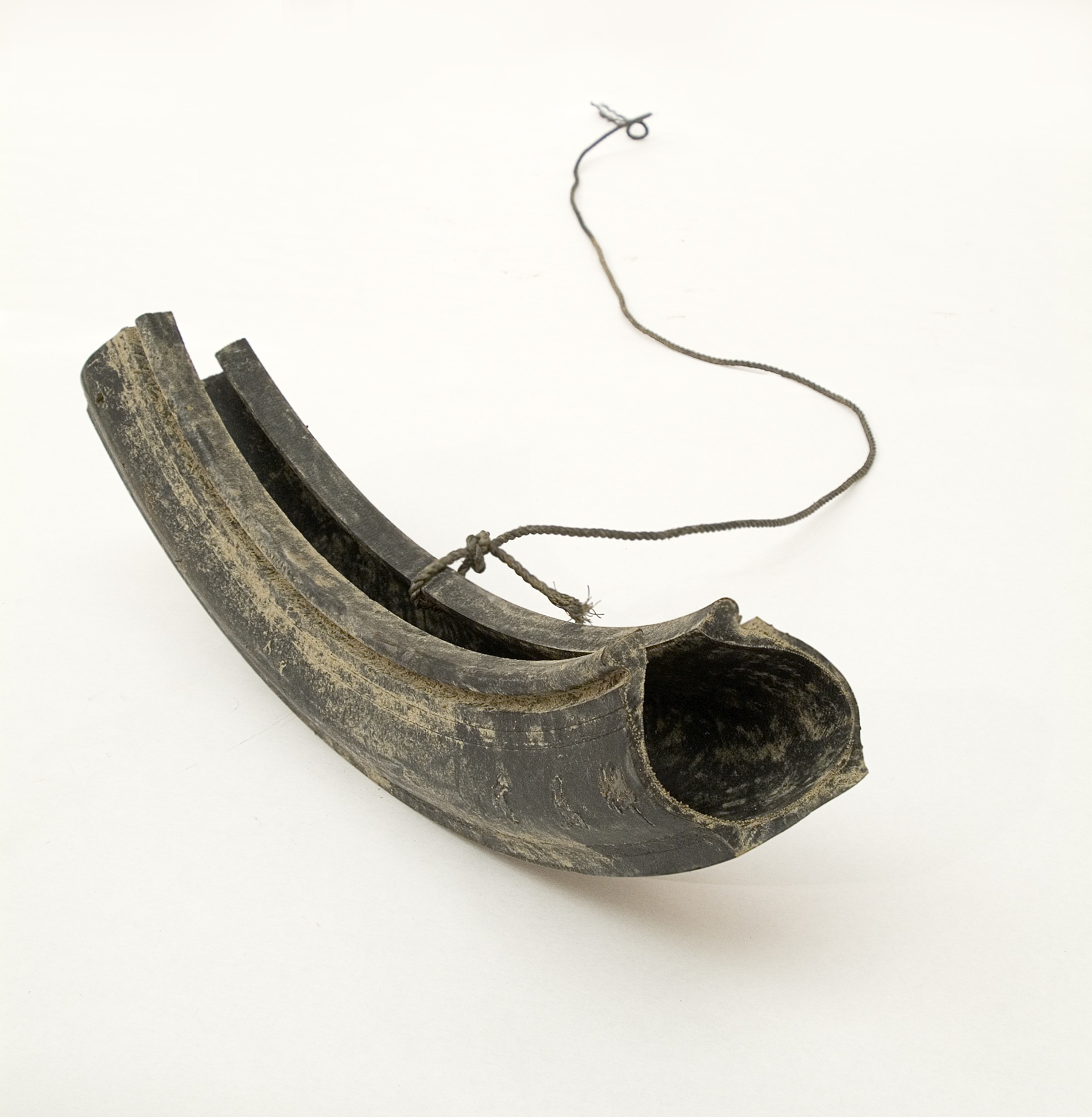
A K DOLVEN
On her flight to Krabi in 2017, A K Dolven sat next to a Thai woman who travelled to bring back 200 books to a Buddhist temple in Kristiansand, Norway, where she has been living for 13 years. Both exchanged personal experiences of Norway, while anticipating their arrival to a country of which was to be discovered by one and re-discovered by the other. For Thailand Biennale, Dolven proposes a site that exists in between: a site to engage with fragments of memories and to discover the unknown. Located between two rocks at the end of Noppharat Thara beach, the work is a house that is only accessible during low-tide, but at high-tide shifts into a isolated, dream-like vision for onlookers ashore. The interior is decorated with a few ubiquitous items from Krabi, with windows framing parts of the landscape. Visitors will hear the voices in Thai, English and Norwegian, reading a poem based on the artists conver- sations with Thai people living in Norway. The poem reflects on the places you leave behind, the ones you travel to and end up settling in.
Rania HO
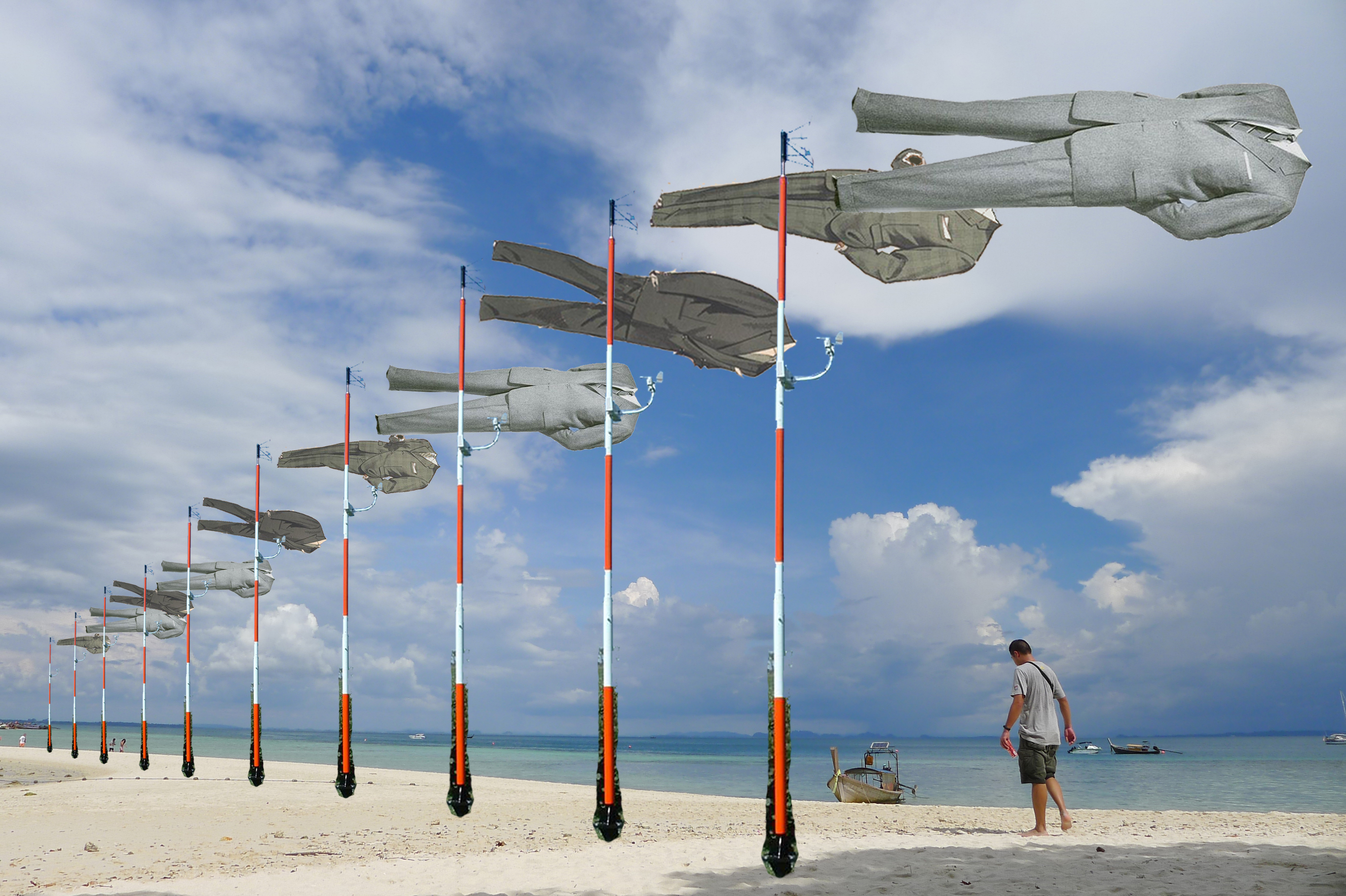
Along Noppharat Thara Pier, where tourists are ferried back and forth to Krabi’s outlying islands, a series of inflatable men’s business suits flutter atop a line of flagpoles. The suits are inspired by an oral history of Rania Ho’s uncle who was conned into travelling from Hong Kong to Germany for medical school and found himself working for a time as a suit retailer. A Formation addresses the dynamics of globalization, geopolitics, history and gender with bemused irreverence. Nature, especially wind, is an unpredictable force. For A Formation erratic gusts are harnessed to give this work its shape, contrasting the sublime power of nature to the futile manifestations of our humanity.
Bharti KHER
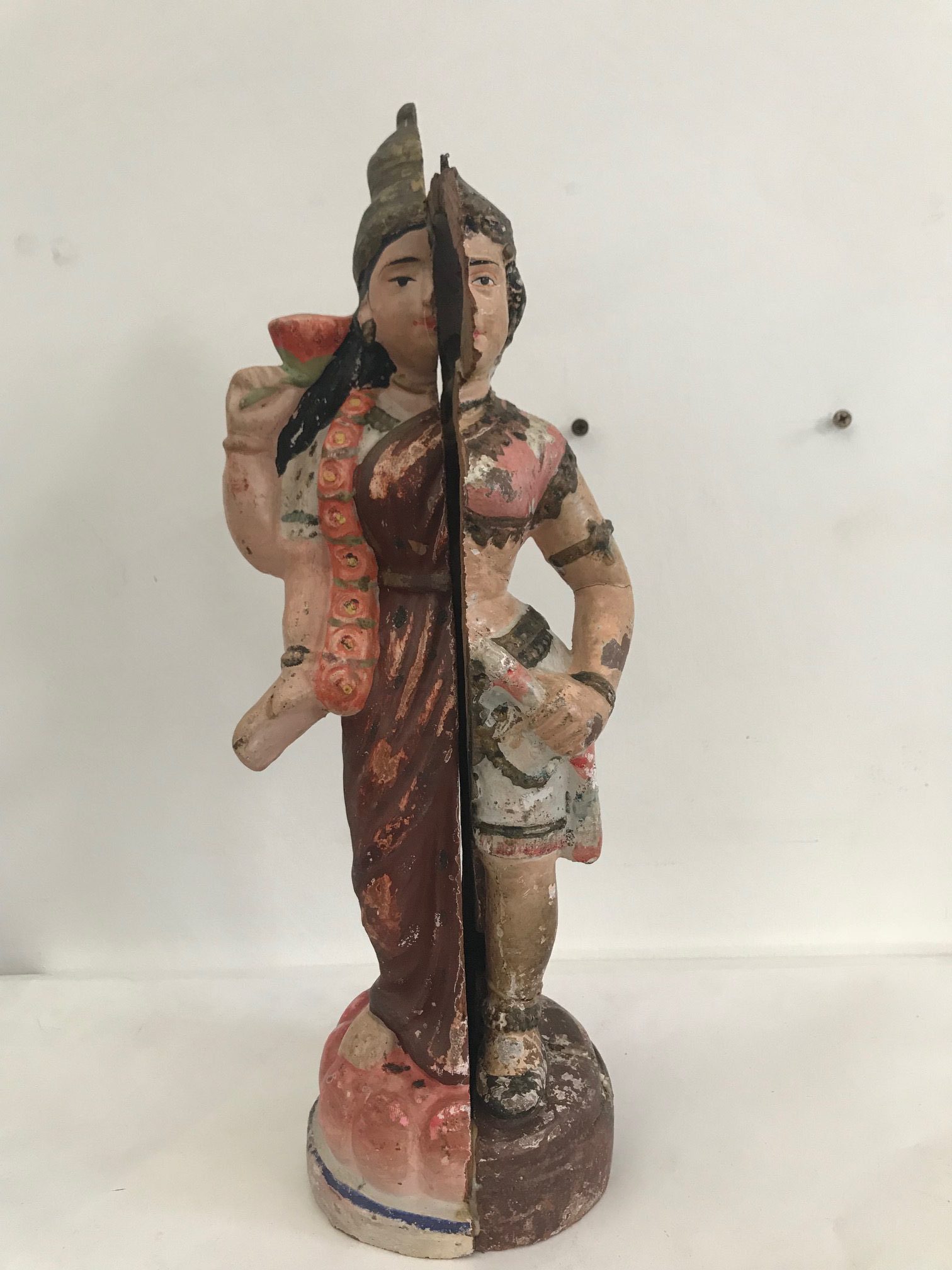
London / New Delhi 04 The Intermediaries suggest a mélange of unconventionality, ancestral complexity, and diasporic identity. One that brings with it both geographical and psychosocial dissonances. Bharti Kher describes The Intermediaries in her own words as “… a family of in-betweens. They are the outsiders, the self – created and the djinns, they are ur-halfs, crossbreeds and half bloods. They are the alchemists who deliver elixirs that will heal you and they are the magicians who disappear at will. They summon into being your trickster, your enchantress and the shaman in you.”(sic) Consciously defiant of specific religiosity and situated within a practice of activating materials that contradict themselves visually, these “half spectral things” then fit in and add to Kher’s work of a narrative building for hybrid beings. For an oeuvre that repeatedly provokes linguistic pirouettes, Kher is concerned not with identifying the disparate figures that form The Intermediaries series, but rather with positing them as accumulated warnings for the indifferent.
Alicja KWADE
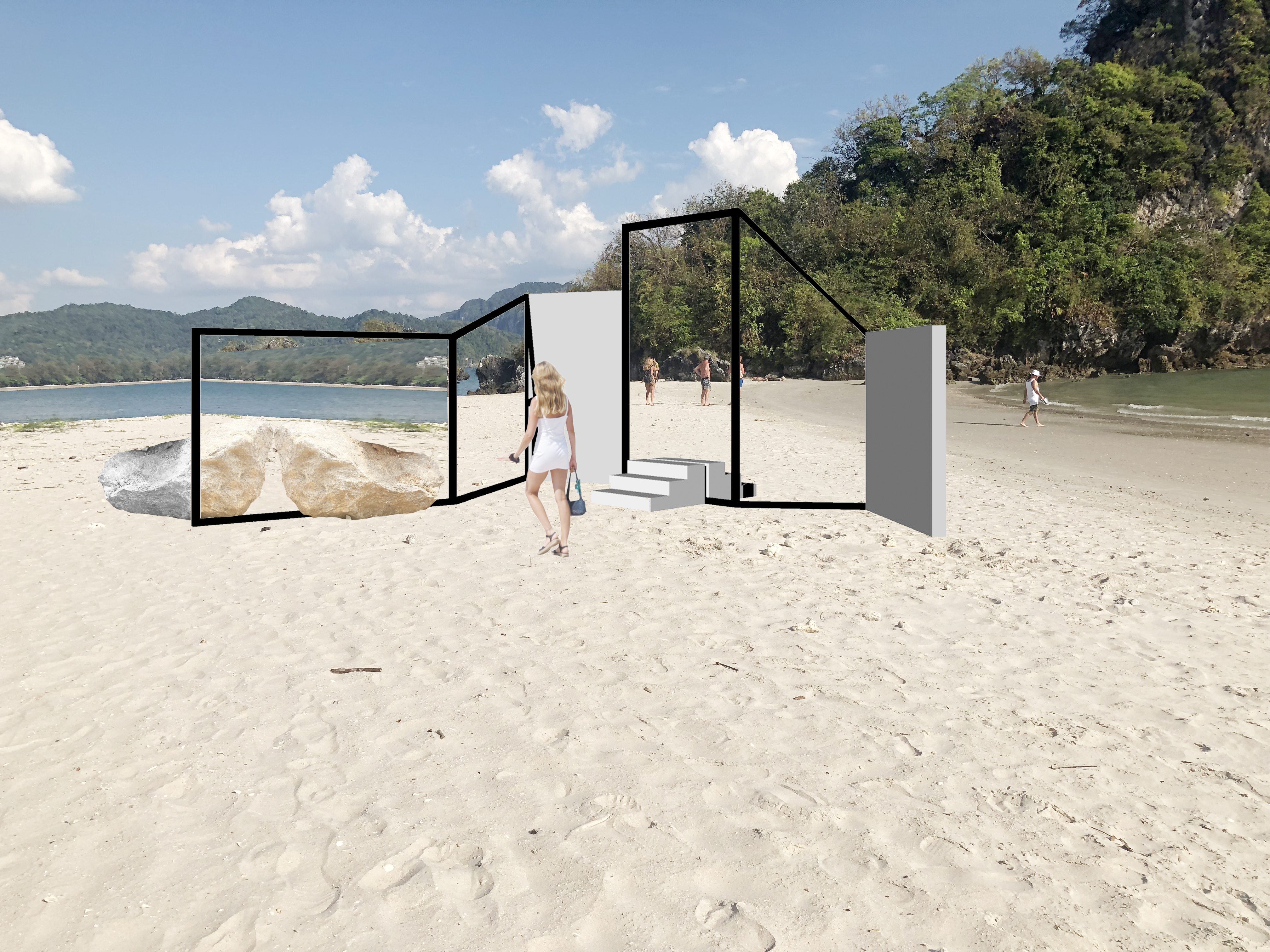
Alicja Kwade’s sculptures offer a chance to meditate on how reality is structured through human perception of time, space and the nature of objects. For the first Thailand Biennale, concrete walls and reflecting panels of mirror-polished stainless steel build the basic structure of Kwade’s site-specific installation on Noppharat Thara beach, transforming the space into different dimensions to extend the limits of observable reality. A limestone boulder found at quarry in Krabi is reproduced as its own mirror-image by being cast in aluminium. Both versions of the object – the found original and its mirrored copy – are connected through the mirror-polished panels that enable the installation to melt into the surroundings. As viewers circle the work, they become part of the installation adding a performative dimension to it. The installation presents a framework that illustrates and challenges viewers’ understanding of their surroundings, emphasizing the subjectivity of perception and thus reality.
LI Wei
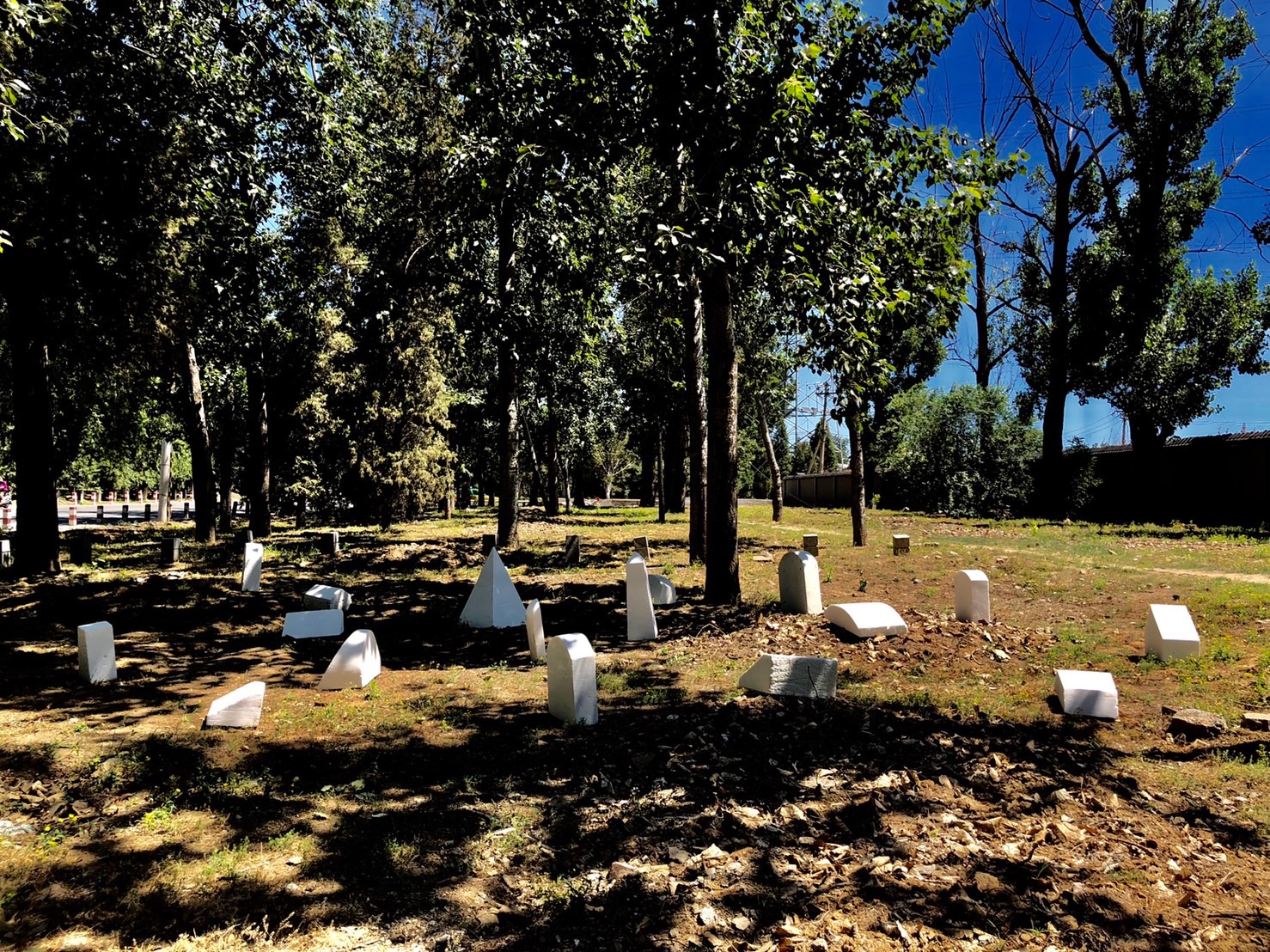
The Departure installation constitutes a series of thirty plaster tablets in a variety of geometric shapes, located in the wood area of the beach next to the pier. At first glance, the presentation of the installation is simply abstract and minimalistic, a conceptual and aesthetic tradition that can be traced back to Malevich’s Black Square in 1915. In such an exotic tourist site, the group of white tablets, short or tall, big or small, look somehow strange, absurd, and even uneasy. They take the simplest form and colour, quiet and humble. But they can generate and contain the power to disturb the holiday mood of the visitors, encouraging each of us to reflect the temporality of our lives, from the border of the other world, or, eternity.
MAP OFFICE
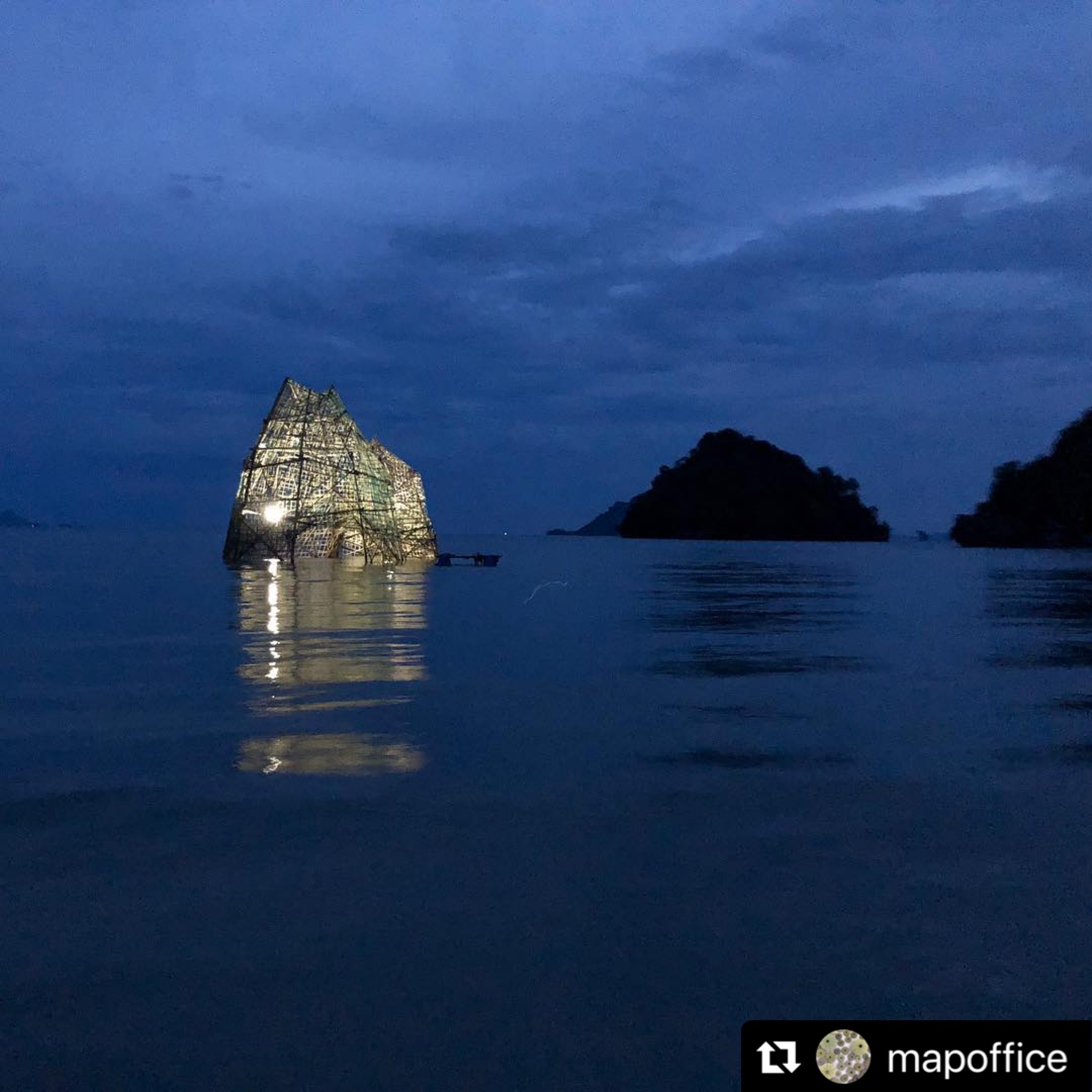
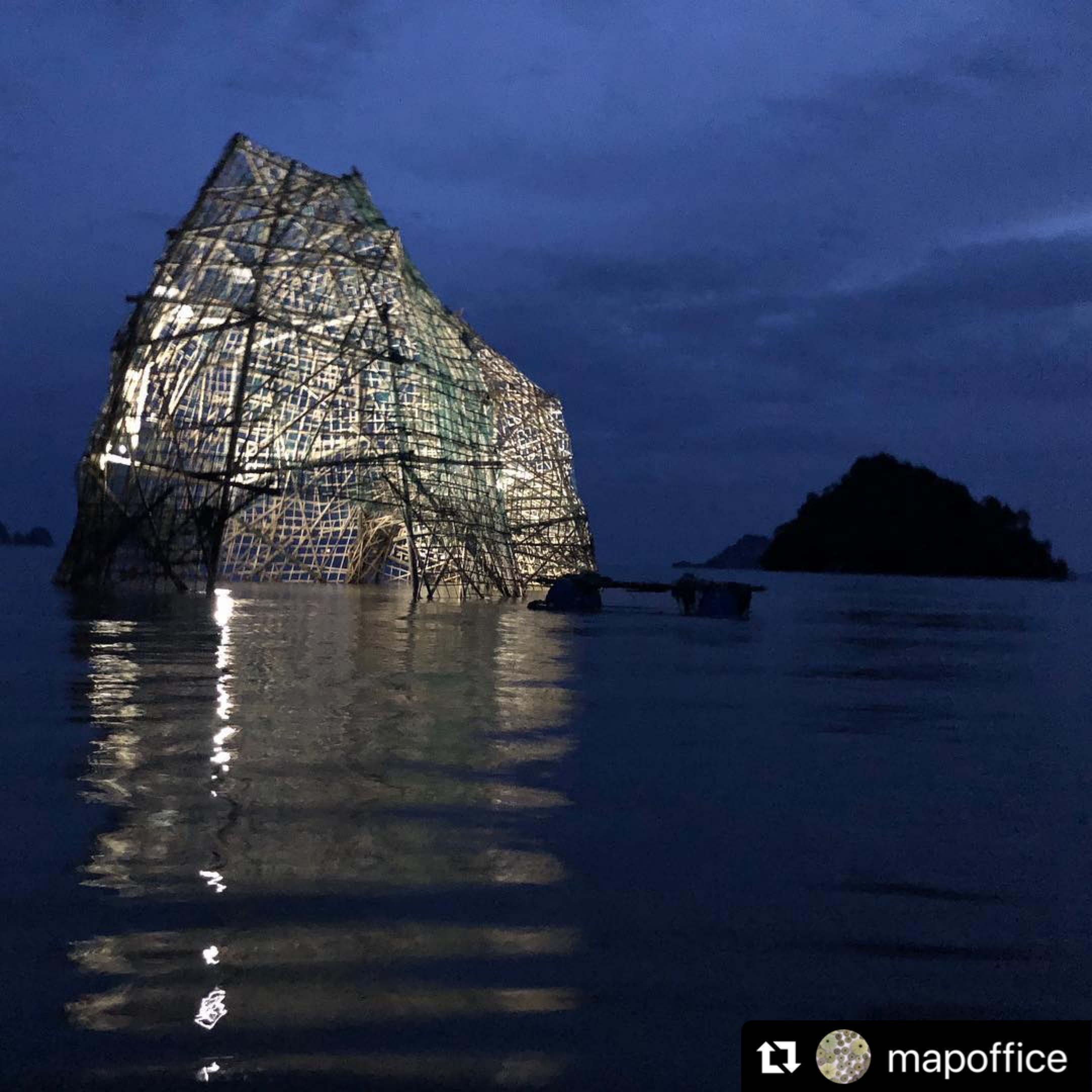
Krabi Province is renowned for its unique island landscapes and sparkling waters. Beyond the valued tourist destinations, the sea in the region also supports numerous fishing activities, invisible stories, and multiple cultures. A sign of those unseen activities is the growing number of abandoned or lost fishing nets entangling turtles and fishes, and hurting the marine environment. Ghost Island is a six-meter pile of fishing nets that are left behind in the sea around Krabi and the Andaman ocean. The installation recalls the particular geology of the surrounding islands formed by the accumulation and stratification of numerous distinct layers. Moreover, it addresses waste dumped and left in the sea, and the difficult but necessary labor needed to protect our environment. Getting closer to the sculpture, Ghost Island becomes the vehicle for the storytelling voices of the fisherman and sea gypsies’ communities. From various explorations and research done in Krabi and the nearby areas of such as Koh Lanta and Phi Phi, the artists were able to accumulate these stories. The artwork has made visible another geography, cartography, and collection of mythical stories which inlanders fail to recognize.
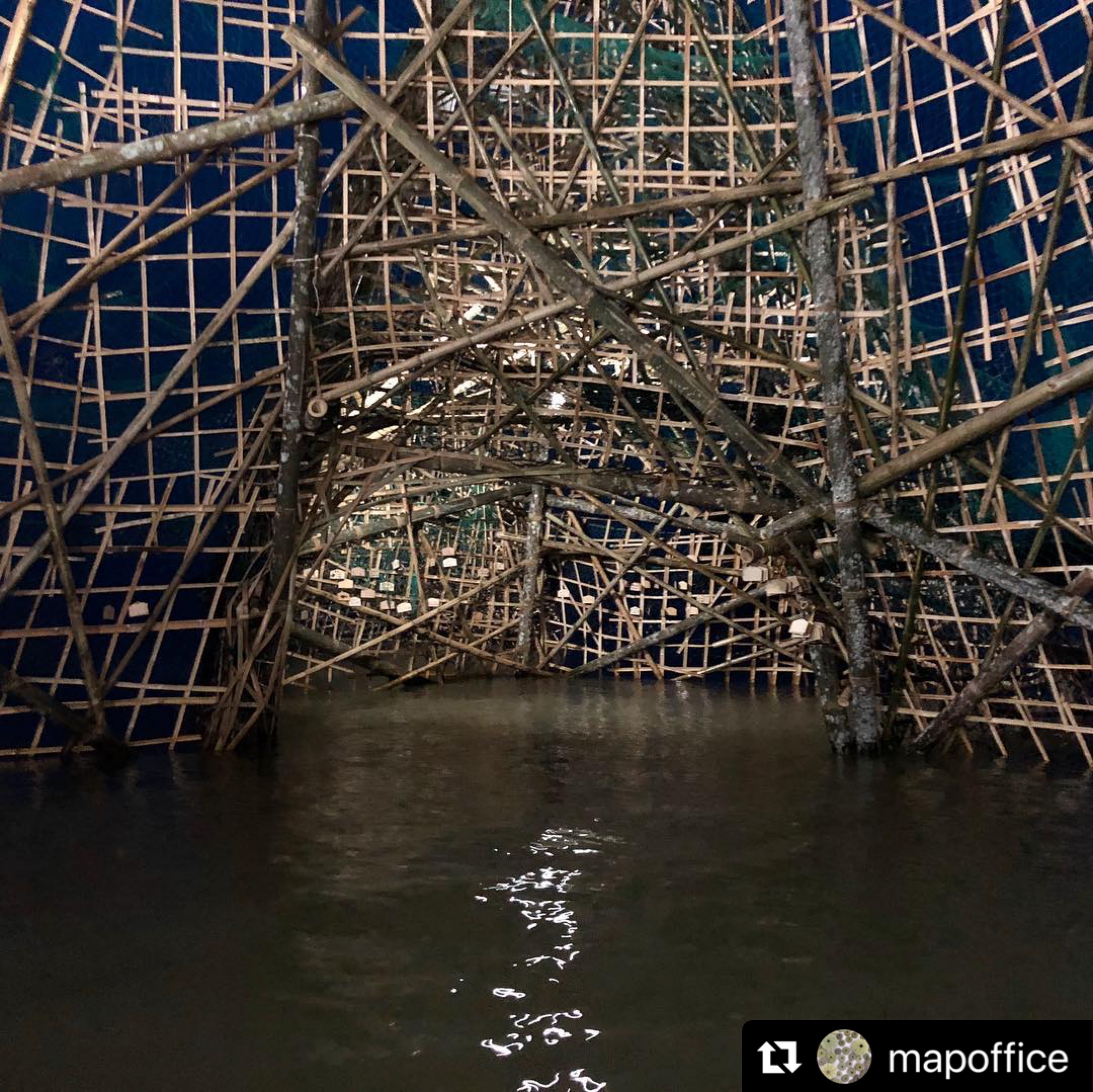
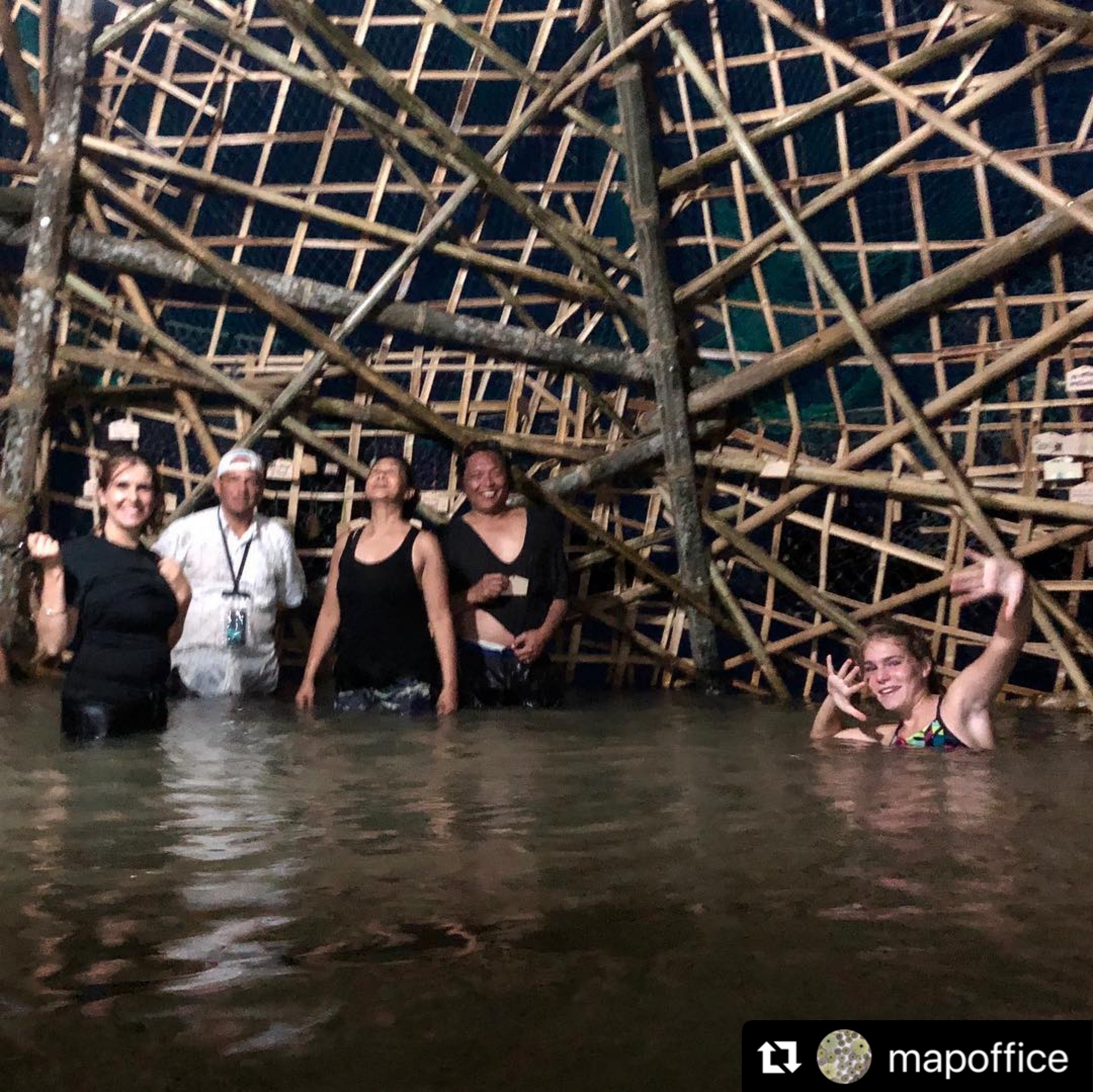
Jedsada TANGTRAKULWONG
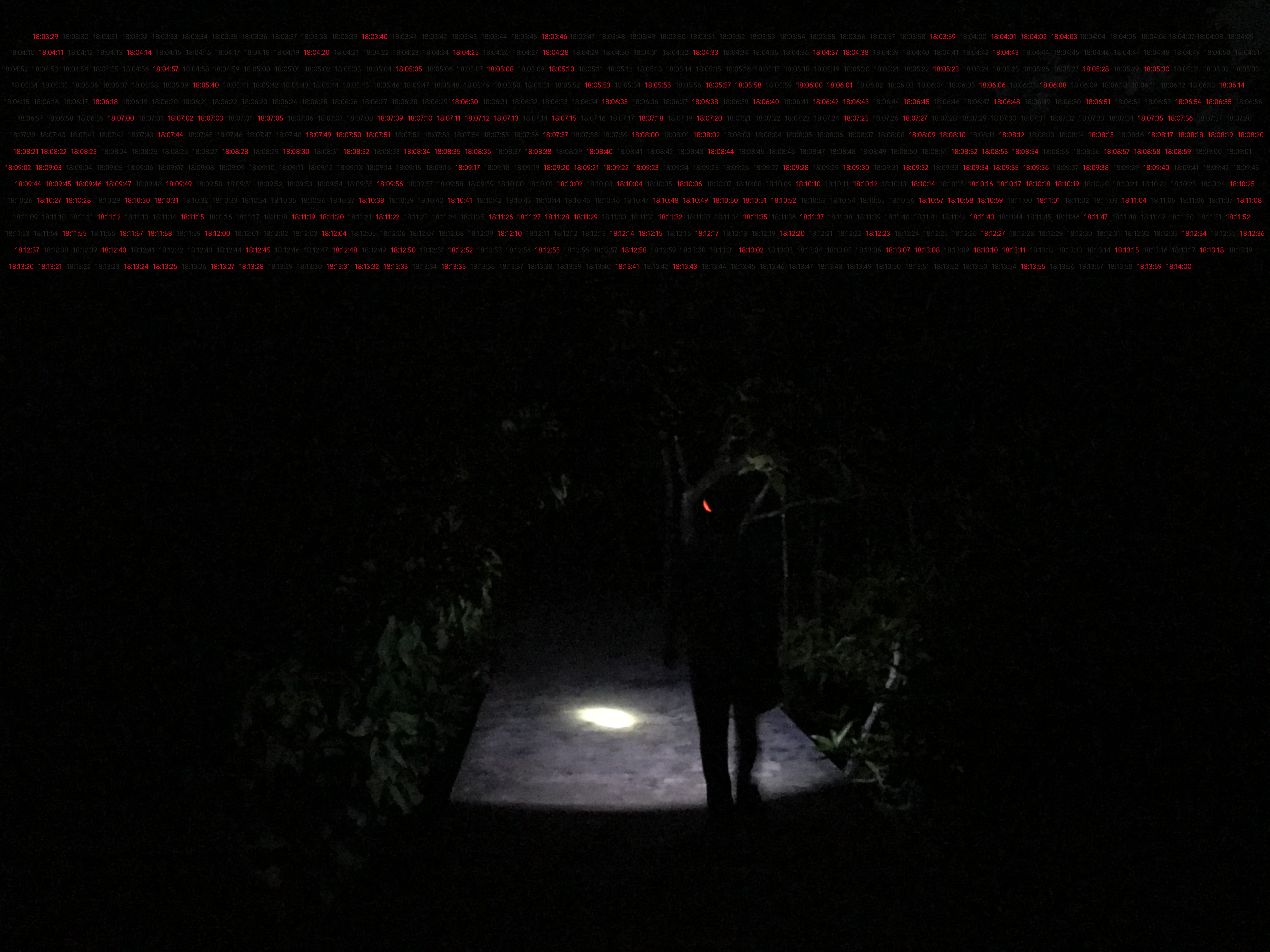
Chiang Mai 09 Jedsada Tangtrakulwong connects three of Thailand Biennale’s locations; Tha Pom Khlong Song Nam (Two Water Canal), Khao Kha Nab Nam’s small bat cave and Noppharat Thara Beach. This work utilises bats as a conductor. Over a period of one hour during twilight, bats fly out of the cave. The pattern of the bats’ movements flying out of the cave at Tha Pom Khlong Song Nam is synchronise with recorded sounds of birds and insects which can be deemed as a natural orchestra. On Noppharat Thara Beach, the sound can be heard on long-tailed boats. The passengers hear the sounds of birds and insects coordinated with the rhythms of the bats’ movements acting as a moveable concert hall. Together with the cave sculpture, the whole experience reflects the edginess of bats’ habitat and the outside world. It also creates the alienated and contradicting experience; the visible versus the invisible, planning versus improvisation, and technology versus nature.
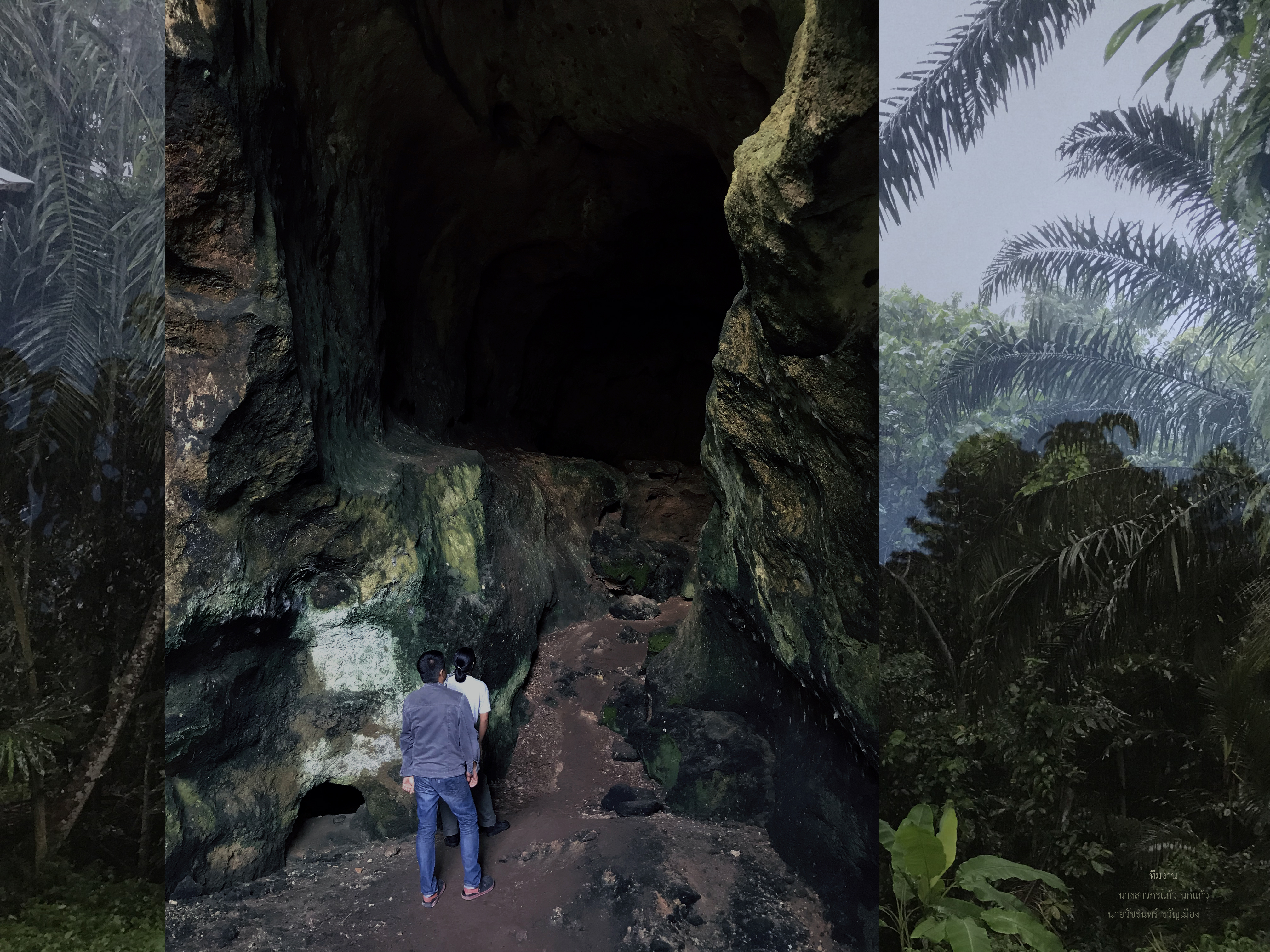
Site : Poda Island
Ayse ERKMAN
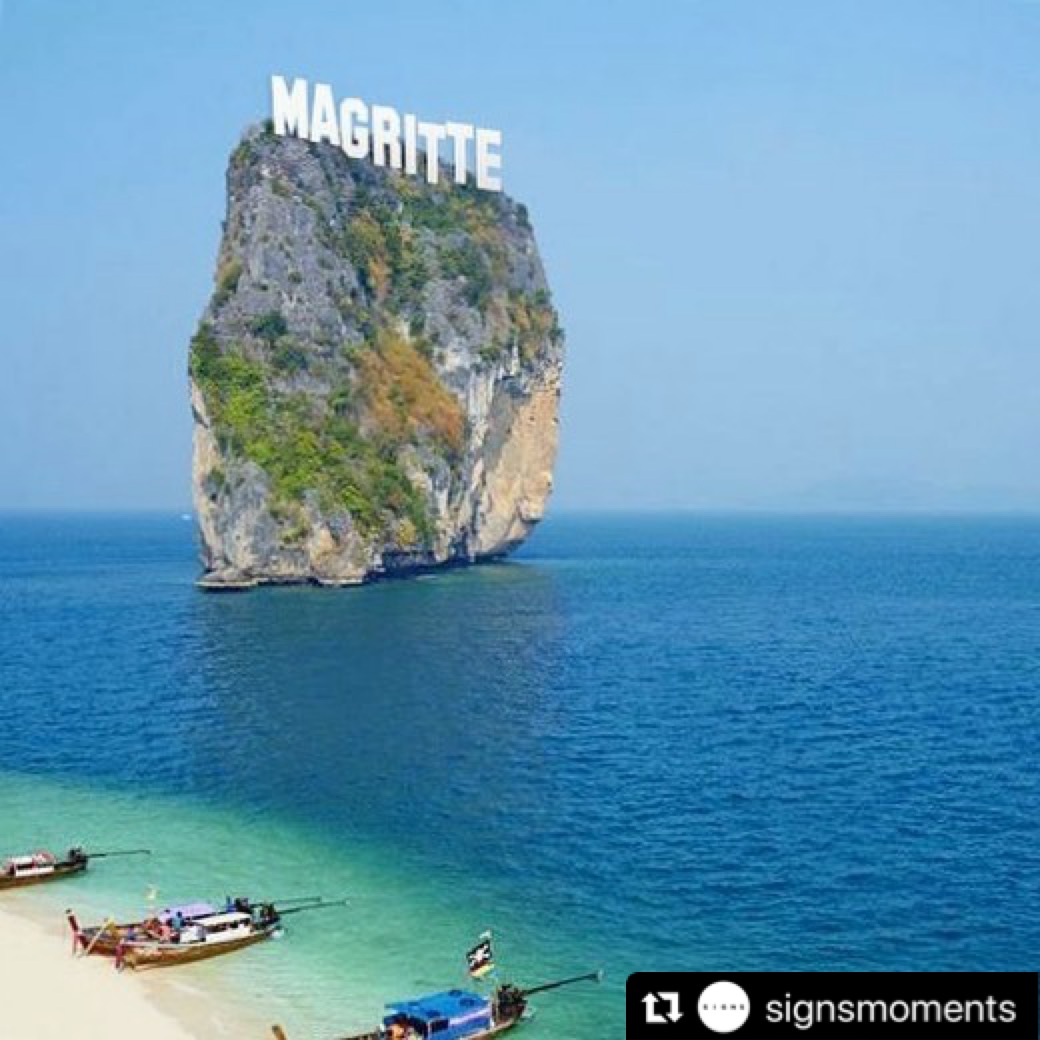
Based on the social and physical environment from which they arise, Erkmen’s projects intervene with and transpose an existing structure/situation, often creating ambiguous spaces by intertwining life and art. For this first Thailand Biennale, the artist chooses one of Krabi’s landmarks, the Poda Island. The island will be reimagined through the Belgian surrealist artist René Magritte’s masterpiece The Castle of the Pyrenees. Erkmen simply manipulated the name of Magritte as a type of Hollywood sign on top of the rock of Poda, as an homage to the master of the last century art history. At the same time, through the artistic development, it transforms that very ‘tourist’ site as an iconic example to a ‘cultural’ one. Although technically it would not be possible to materialise the installation in situ, the work will be presented on billboards across the country of Thailand beyond Krabi, to blur the boundaries between art history and popular culture, between advertisement and slogan, and between the real and the imagined.
Ignas KRUNGLEVICIUS
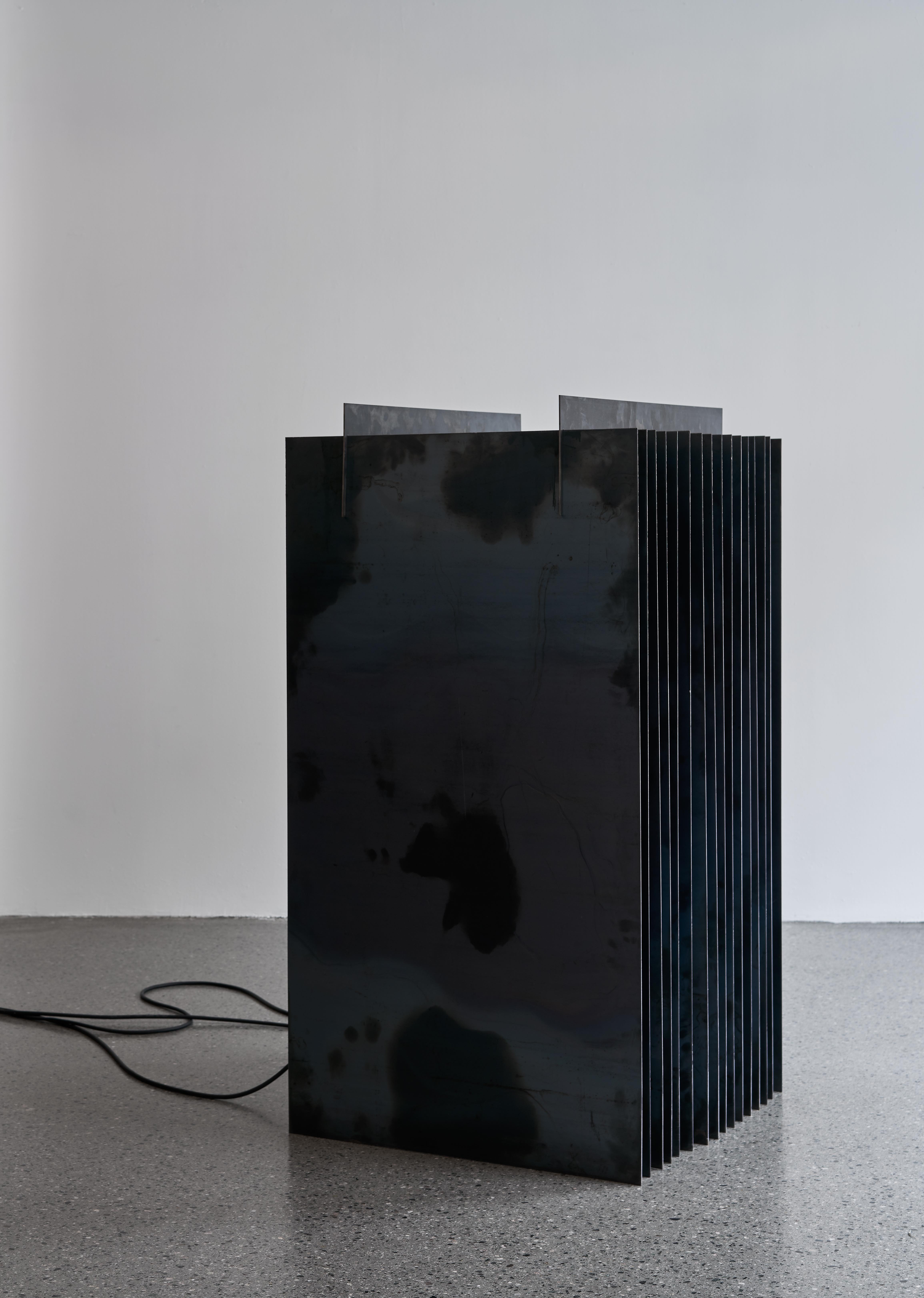
KrungleviČius’ artworks creates installations, videos, and objects from the collaboration of visuals and sounds to explore the relationship between the mechanism of the human psyche and the experience generated by technology. For Thailand Biennale 2018, KrungleviČius proposes two “sound sculptures”, both are titled Vision. Vision #1 will be a 4-meter tall metal sculpture with a sound system attached and located on the beach of Poda Island; while Vision #2 will be a set of speakers located along the waterfall inside Than Bok Khorani National Park. The metal sculpture of Vision #1 is inspired by the shape of a whistle. It captures the wind and produces a sound from a gentle breeze. The audience will hear the song as if it was sung by a young voice from far away. Vision #2 consists of four spots along the walkway where sounds will be emitted. Each is treated like an episode of the narrated story. Just like Vision #1, the sound will be like a song, but here the voice will be of an older, more experienced person. The sounds produced by both artworks can be interpreted as the encrypted message to warn us about something that is going to happen in the future.
LEUNG Chi Wo
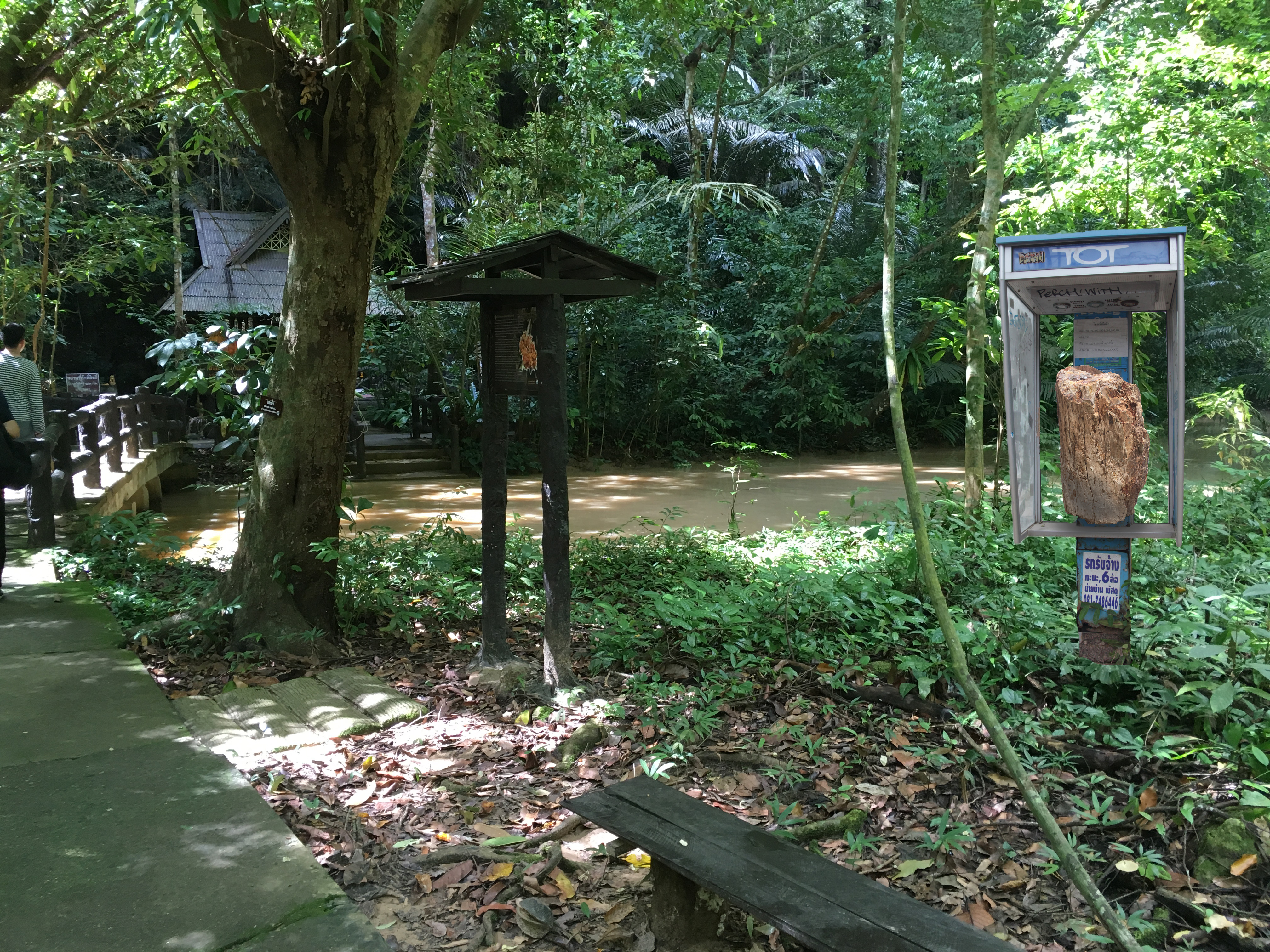
Telephones have been a groundbreaking invention connecting people separated by distance. The development of telephone booths made it possible for transit people to make phone calls. Currently, as smartphones have become the norm, these public phone booths, once ubiquitous points of connection, have become redundant. They are lonely relics of yesterday’s technology, particularly in remote areas where the cost for maintenance or removal is highly unaffordable. This project addresses these “relics” in Krabi. The artist turns these obsolete booths into a space of contemplation by reinstalling these useless phone booths in a quiet area within natural sites. The booths are not equipped with telephones, but with a pieces of petrified wood. The wood representing a de facto witness of time, replacing that generic object of communication with a mute, solemn subject for one to contemplate and to reconnect with themselves.
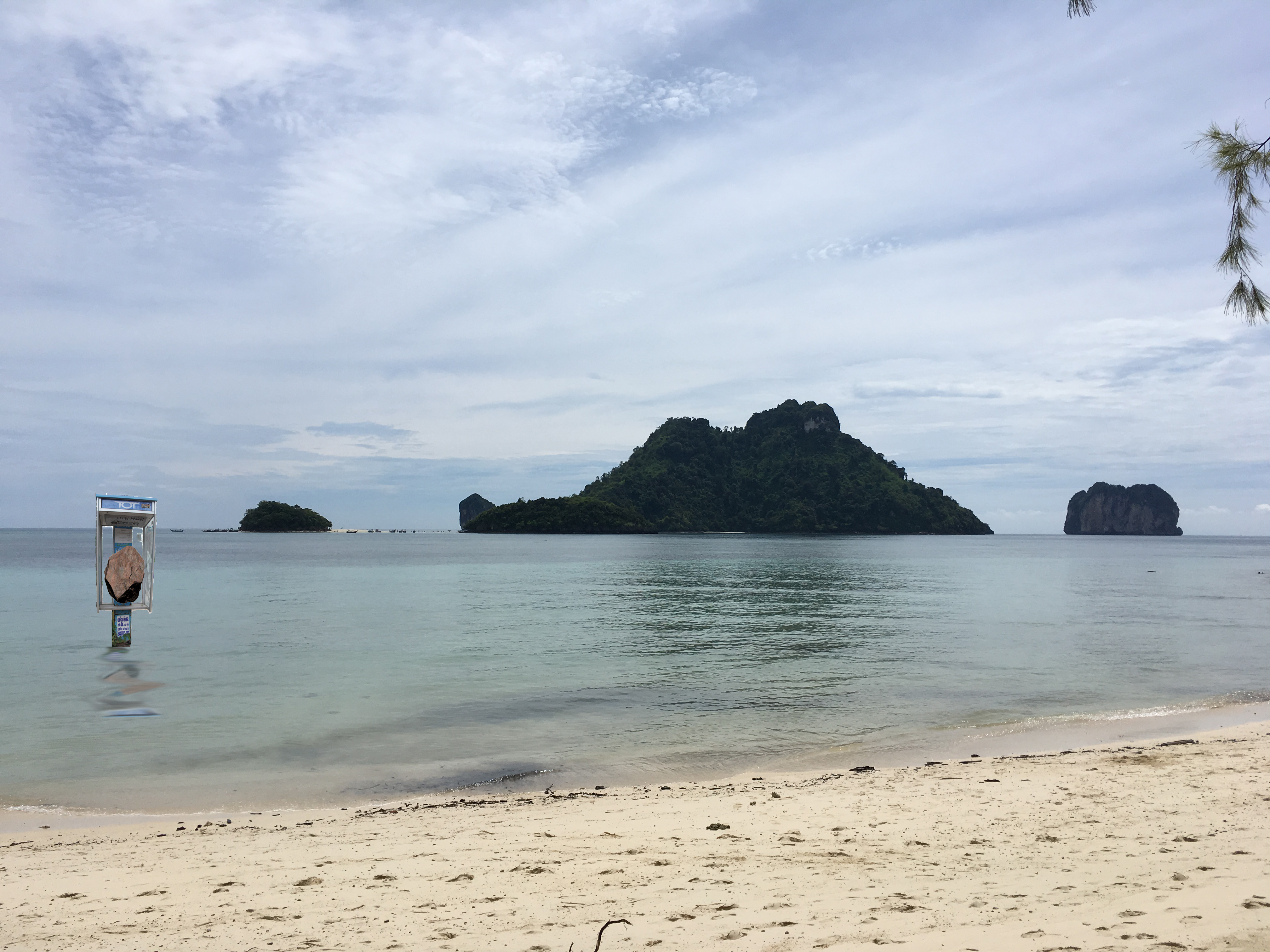
Camille NORMENT
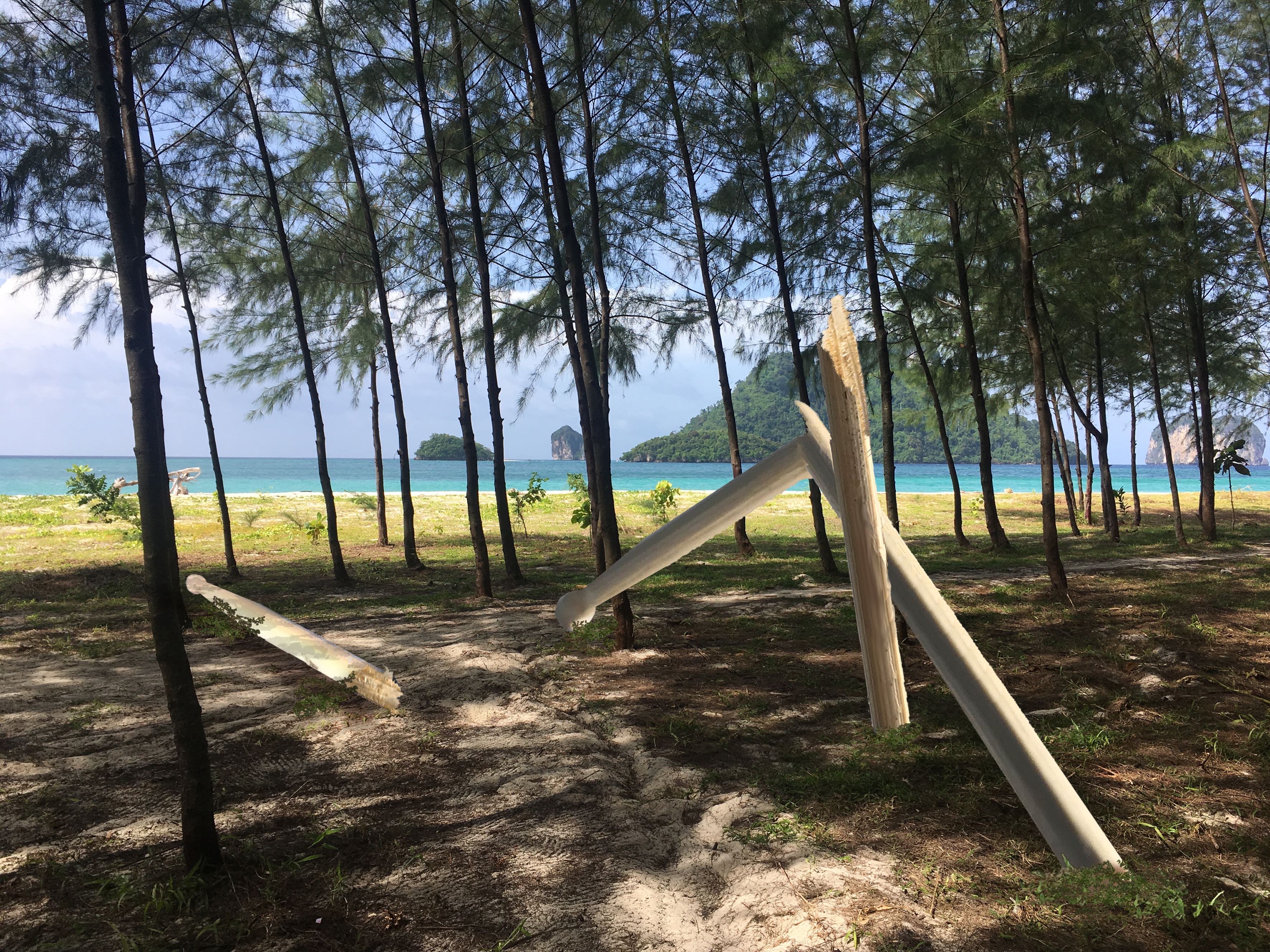
Camille Norment’s site-specific work at Poda island strikes the greatest sense of surrealistic wonder. A cluster of eight larger- than-life drumsticks emerge through the ground, interspersed between the lines of young pine trees by the beach. Many of the drumsticks are broken, like fallen trees effected by wind and time. While the dramatic sight of the drumsticks elicits the site of trees that have been felled by the wind, striking awe in the belief that some invisible force could be so strong, the appearance of drumsticks and their historical association to power structures amplify this sense of discombobulation. In the global anxiety of today, the surreal and wondrous appearance of Norment’s installation resonates with today’s bewildering sense of change, as well as the planet’s ever so fragile and volatile conditions.
Site : Railay Beach
Alfredo & Isabel AQUILIZAN
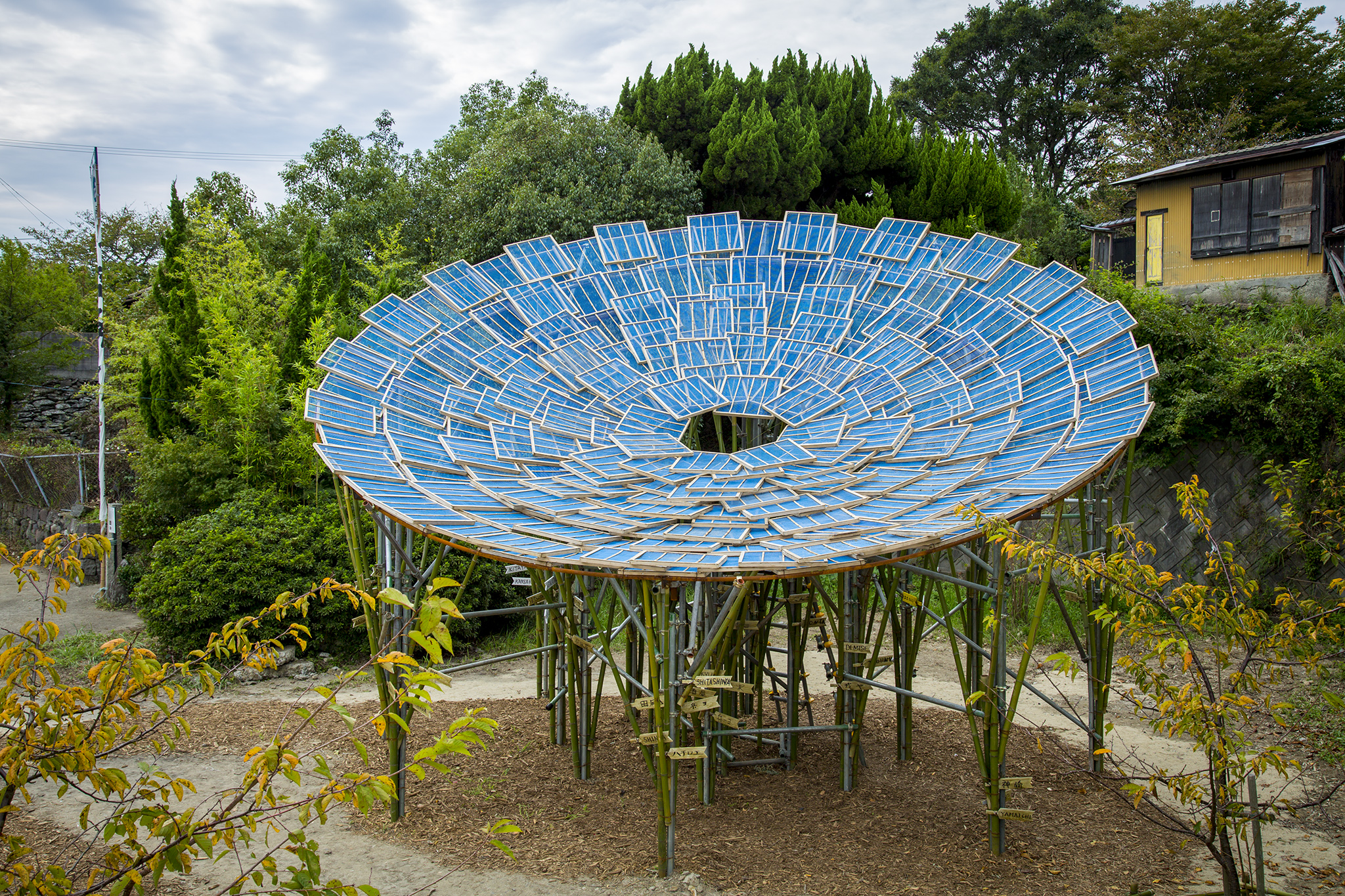
Brisbane 01 The Satellites Disk is a combination of three floating decks located in one of the distant spots of Railay Bay. Each disk consists of five small wooden Hua Tong boats that are combined to form an anise star. They are decorated in traditional multi-colored sashes, flowers and other embellishments. On top of each disk there is a platform on which audiences are welcome to use as a social and resting space. This work is another iteration of the Satellite projects that the artist has been working on for more than three years in collaboration with local artisans around Asia and Australia. It relates to a larger body of works called Another Country, which is a series of community-based work in which the artists utilised local material and craftsmanship. The satellites in Krabi connect to other ‘disks’ which create a network of public art forms that associate less with fixed identities and more toward fluctuating, renegotiable ones.
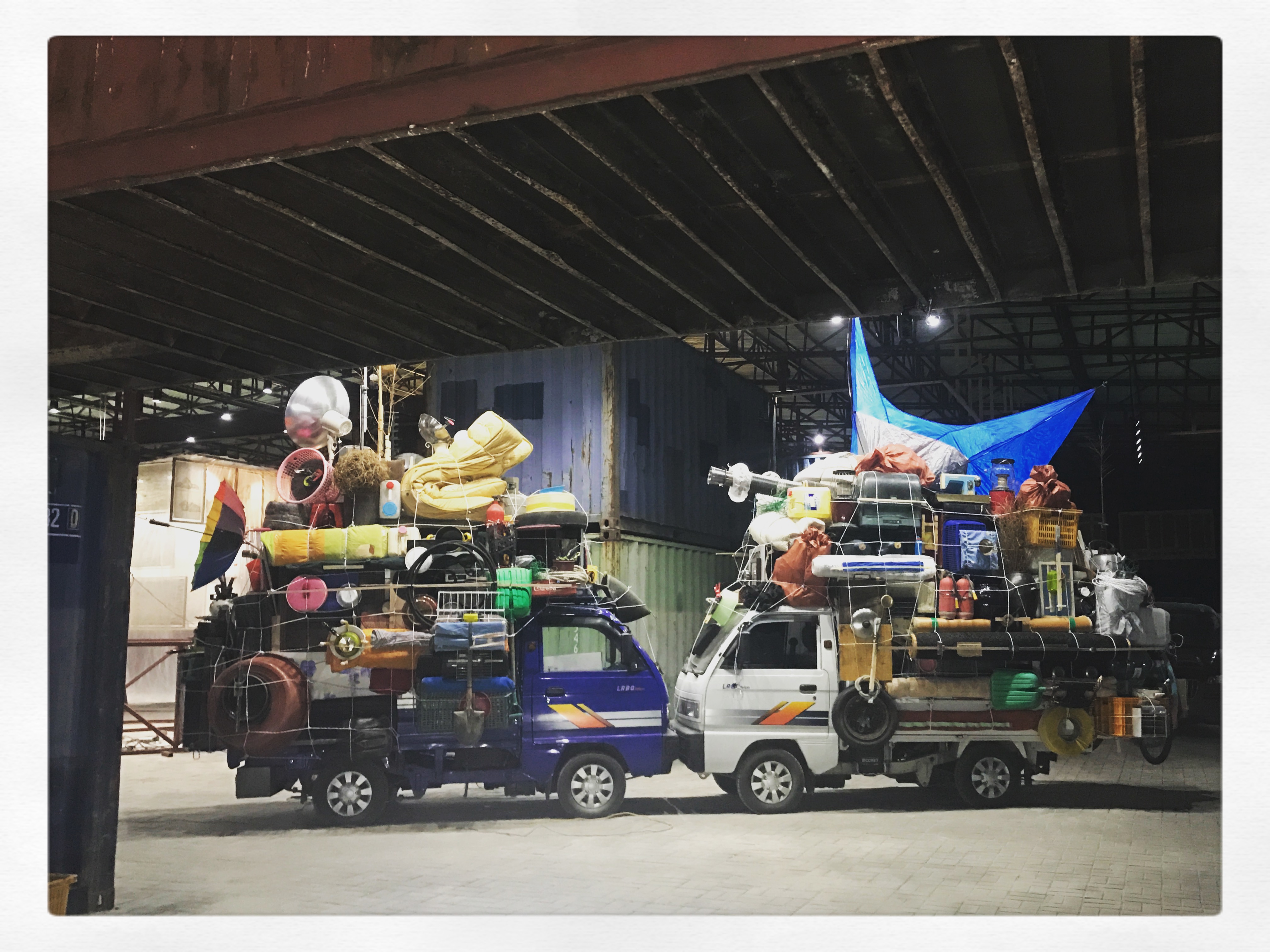
Aram BARTHOLL
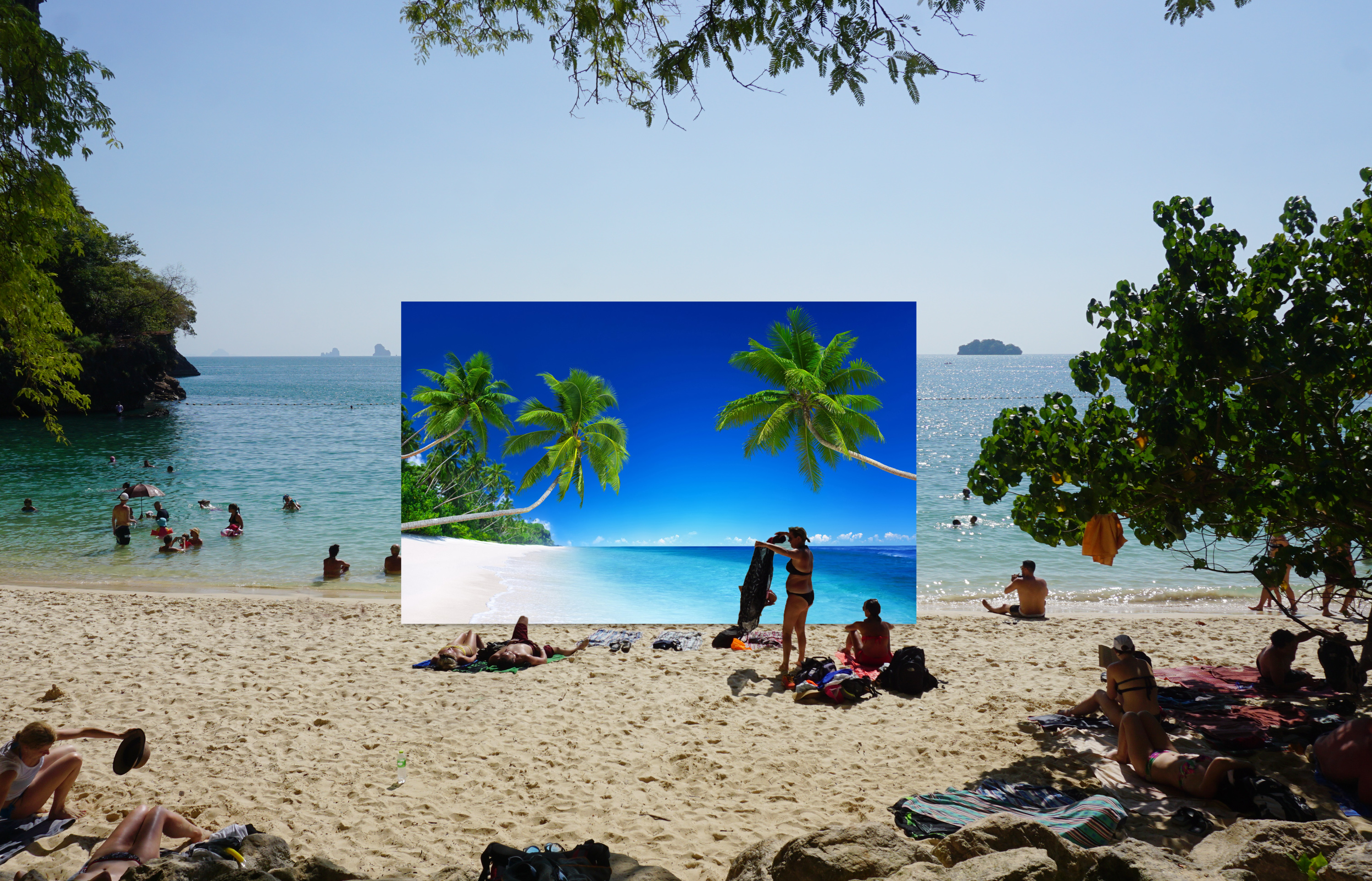
Perfect Beach HD refers to the cliché and dream of a perfect tropical beach as the ultimate exotic place for recreation and vacation. It certainly represents a form of paradise in Western culture. This work is comprised of a set of large prints displaying different tropical beaches and are carried around by two performers in several locations on Railay Beach. Often used as backgrounds on the desktop of computers, the colors of the ultimate beach photographs are extremely saturated and extra palm trees are added in Photoshop. Visitors of the Biennale and tourists are invited to pose and take pictures in front of these prototypical beach pictures while experiencing Krabi’s beautiful beach. The holiday snapshot entrapped in a beach displayed on a beach is self- referencing and questions visitors’ perception of what is real in times of monopolised social media norms. Is this really the ultimate beach?
Vong PHAOPHANIT & Claire OBOUSSIER
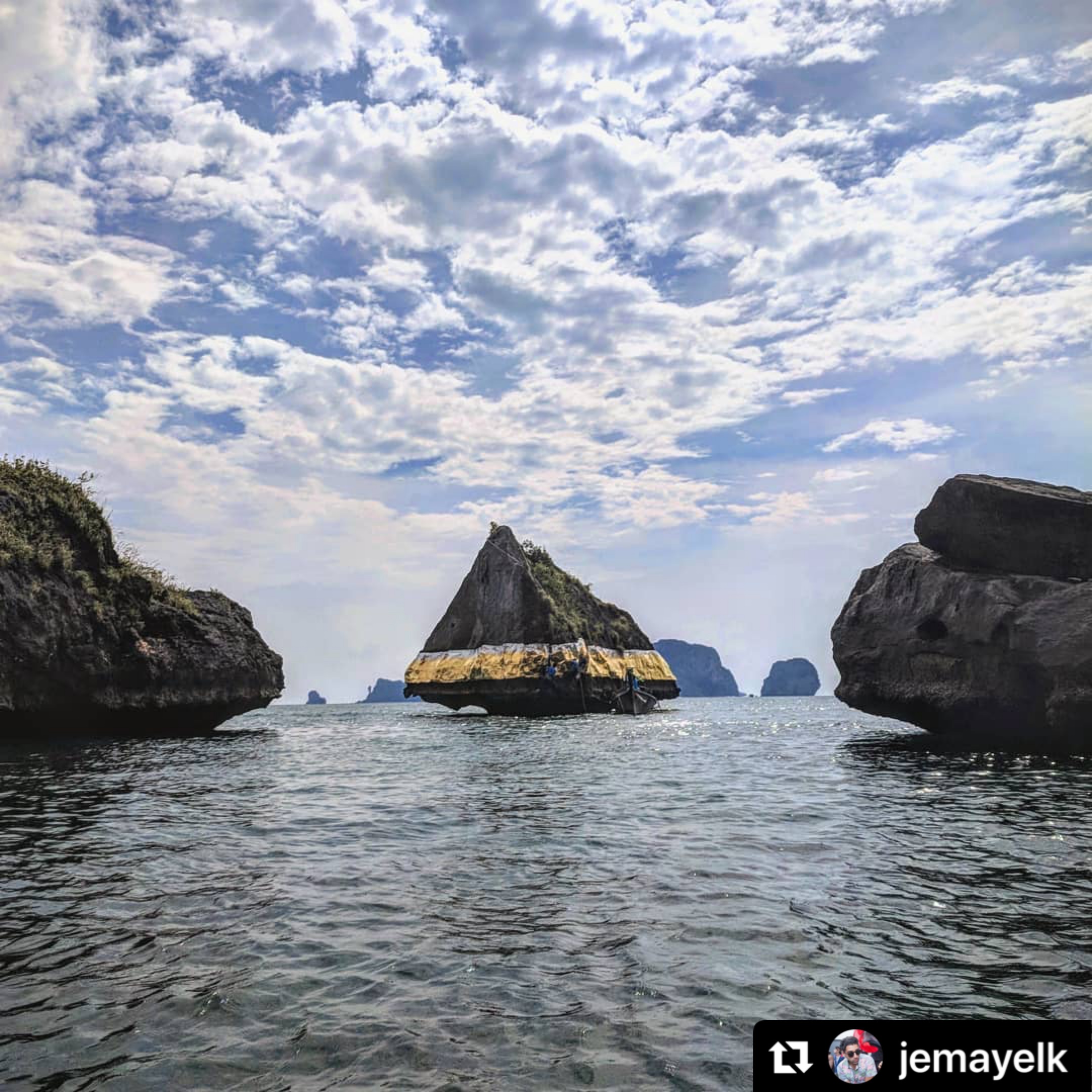
Vong Phaophanit and Claire Oboussier have worked on many socially engaged public commissions in the form of large-scale installations and sculptural works. Their collective work explores the issues of deterritorialisation and forms of meaning making that exceed national, cultural and social borders. For Thailand Biennale 2018, Phaophanit and Oboussier propose a part-performative instllation work which covers the rock surface of a small island located in front of the famous Phra Nang Cave Beach in Krabi. The gilding would start from the bottom part of the island and extend up in a diminishing gradation until it seems to diffuse entirely in to the rock surface. This will create a golden threshold between land and sea, in a natural margin that is ultimately always in transition towards disappearance. Gilding the Border uses gold to represent the connection between history, religions, rituals, and people lives. Its associa- tions range from those of mystical illumination to monetary investment, from imperishability to merit accumulation. The artwork reconnects the sacred with the earthly, the immaterial with the material, suggesting perhaps that one can find cosmic value in the natural world.
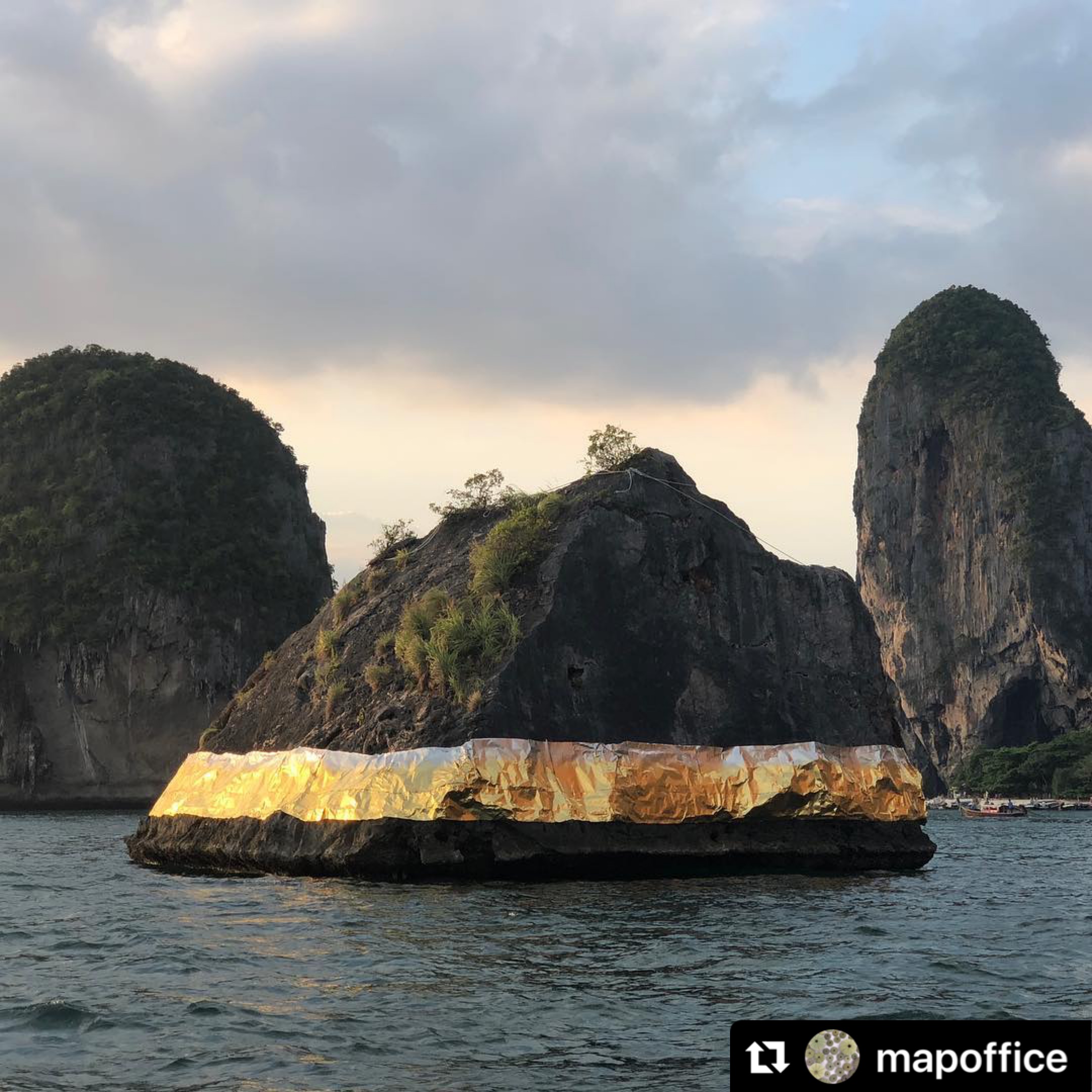
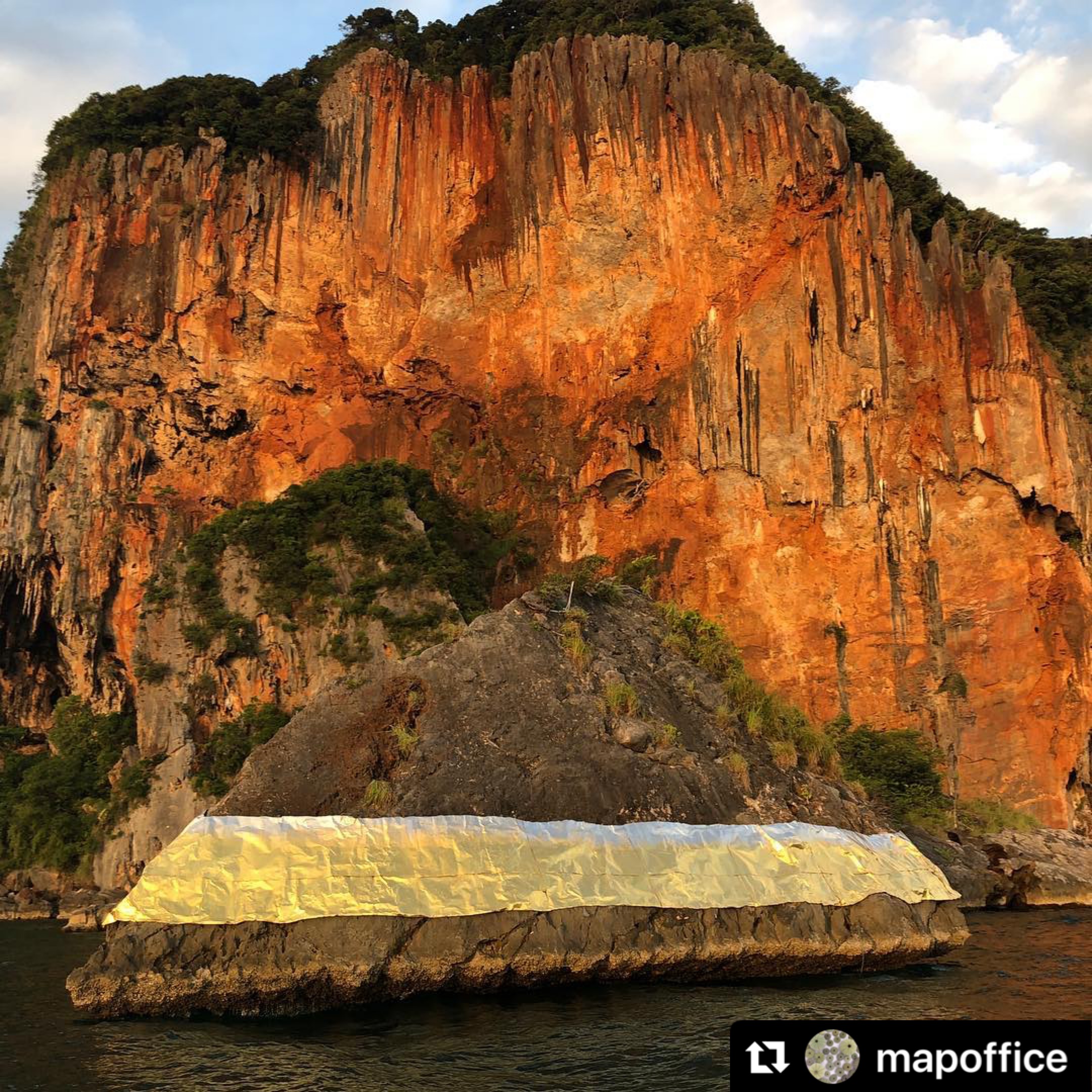
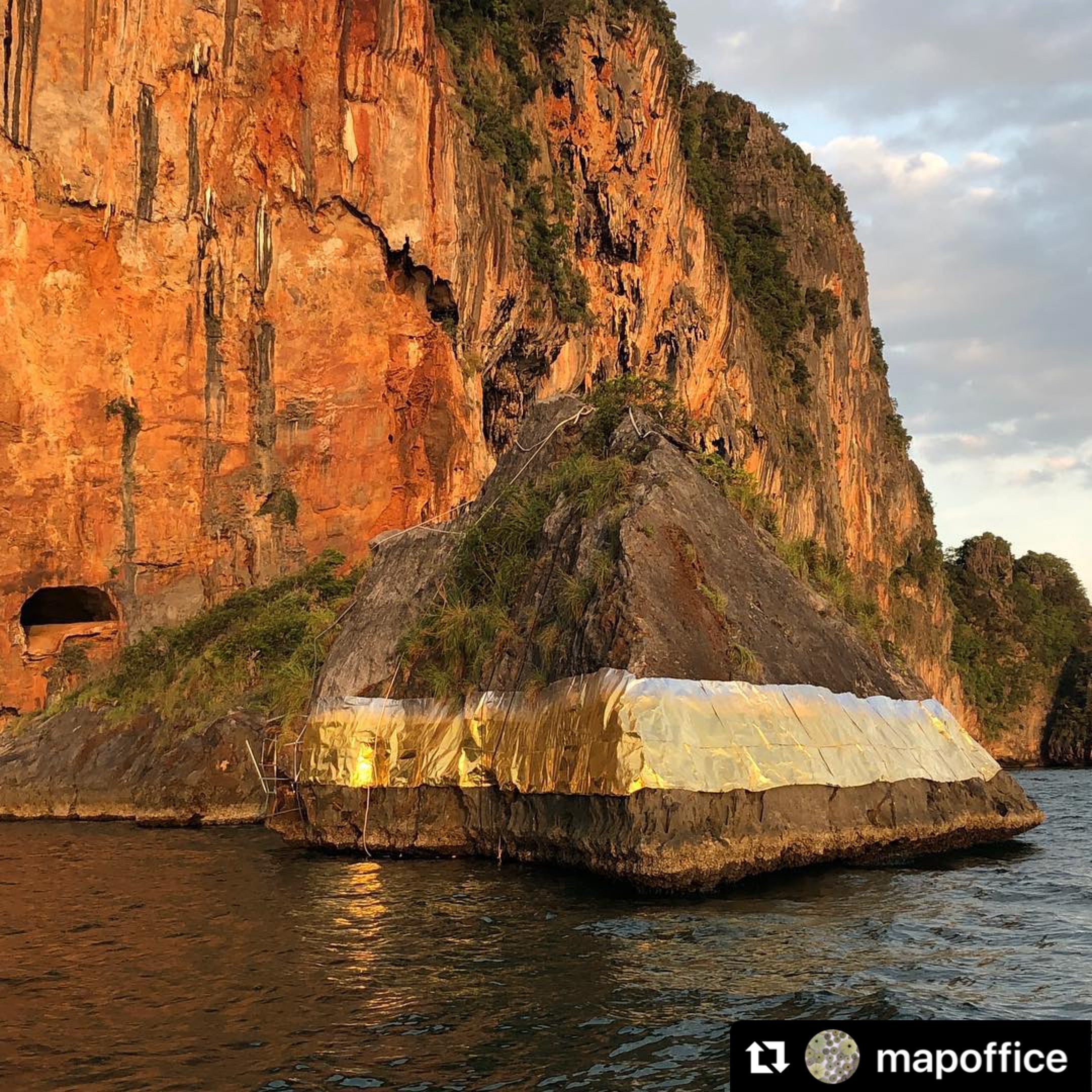
Chusak SRIKWAN
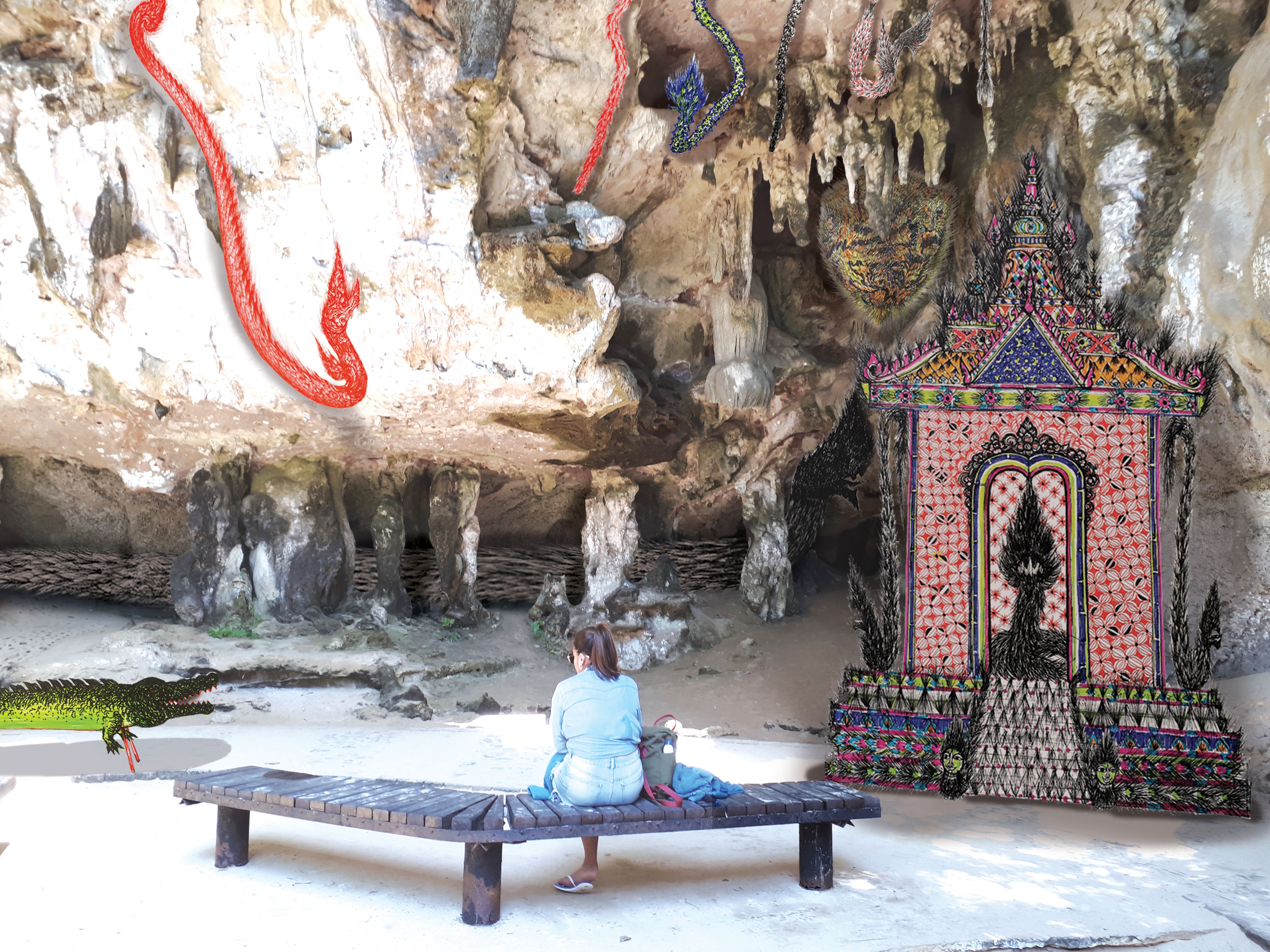
For Thailand Biennale 2018, Chusak Srikwan is fascinated by the beauty of the natural space and the old folklore about how Phra Nang Cave was created. It began from the family of Ta Yom Dueng whom the Naga agreed to help on a condition that ‘Nang’, the daughter of Ta Yom Dueng, would marry the son of the Naga. Later, Nang fell in love with the local man named ‘Boon’. The Naga found out and was very angry. On the wedding day, the Naga was transformed to be human and destroyed the ceremony. The hermit came to help but could not stop the fight, so the hermit cast a spell and made everyone turn into stone.The house of Nang and Boon became Phra Nang Cave. From this story, Srikwan creates three-dimensional characters, a Naga, a hermit, and a tiger. These are installed in the area near Phra Nang Cave. The work is done with a technique inspired by the local crafts and culture of Thailand’s southern provinces. The beauty, belief, love story, and mystery are presented in the space that exists in both the actual and mythical worlds.
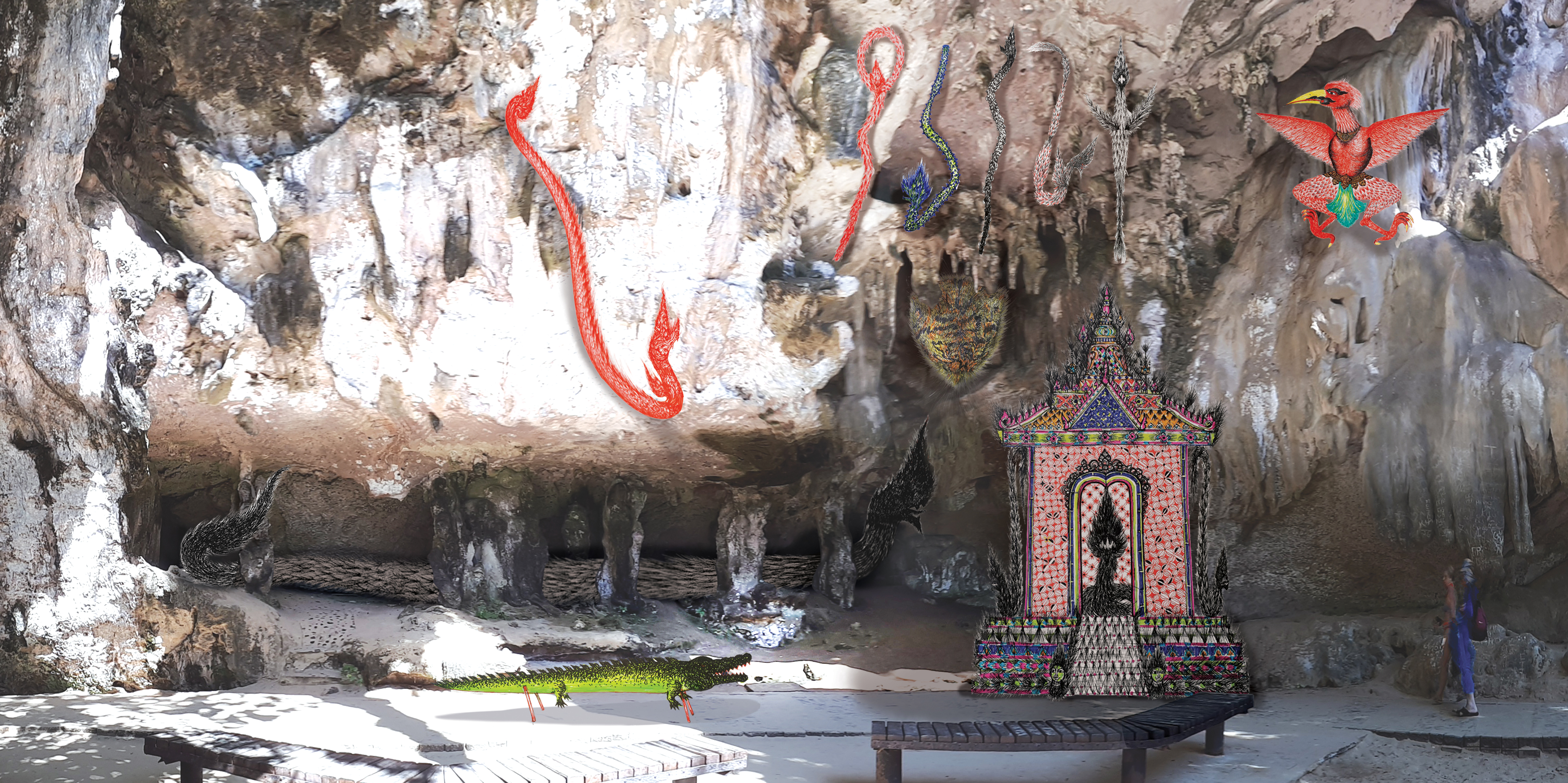
Tori WRANES
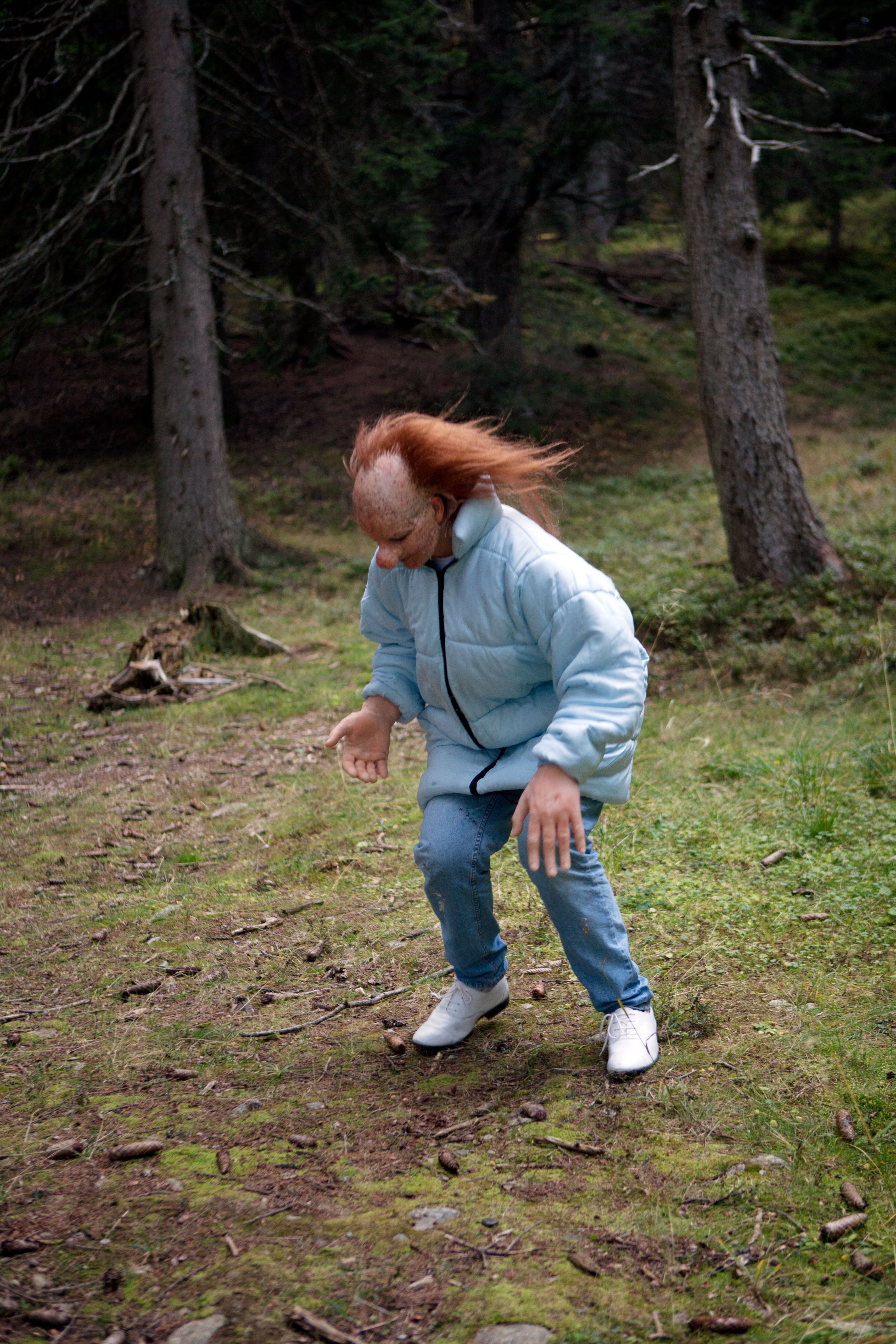
interdisciplinary. The artist combines music, visual arts and performance into one organic mix. Growing up in Norway, Wrånes believed in trolls, Norwegian folkloristic creatures who live in the woods. They are known for their grotesque appearance and nocturnal life. Trolls represent all spectres of being “human”: they exist beyond societal norms and linguistic structures which are hierarchical. Struck by the dramatic landscape of Phra Nang Cave and beach during her site visit, Wrånes imagines the presence of indigenous ‘Krabi creatures’ to interpose in daily life that occurs within this tourist destination. Throughout the four-month period of the biennale, Wrånes’ performances consist of two parts: an opening concert in collaboration with local musicians, featuring the artist’s vocals in dialogue with the Pi, a traditional Thai reed instrument; and the daily appearance of the Krabi creatures.
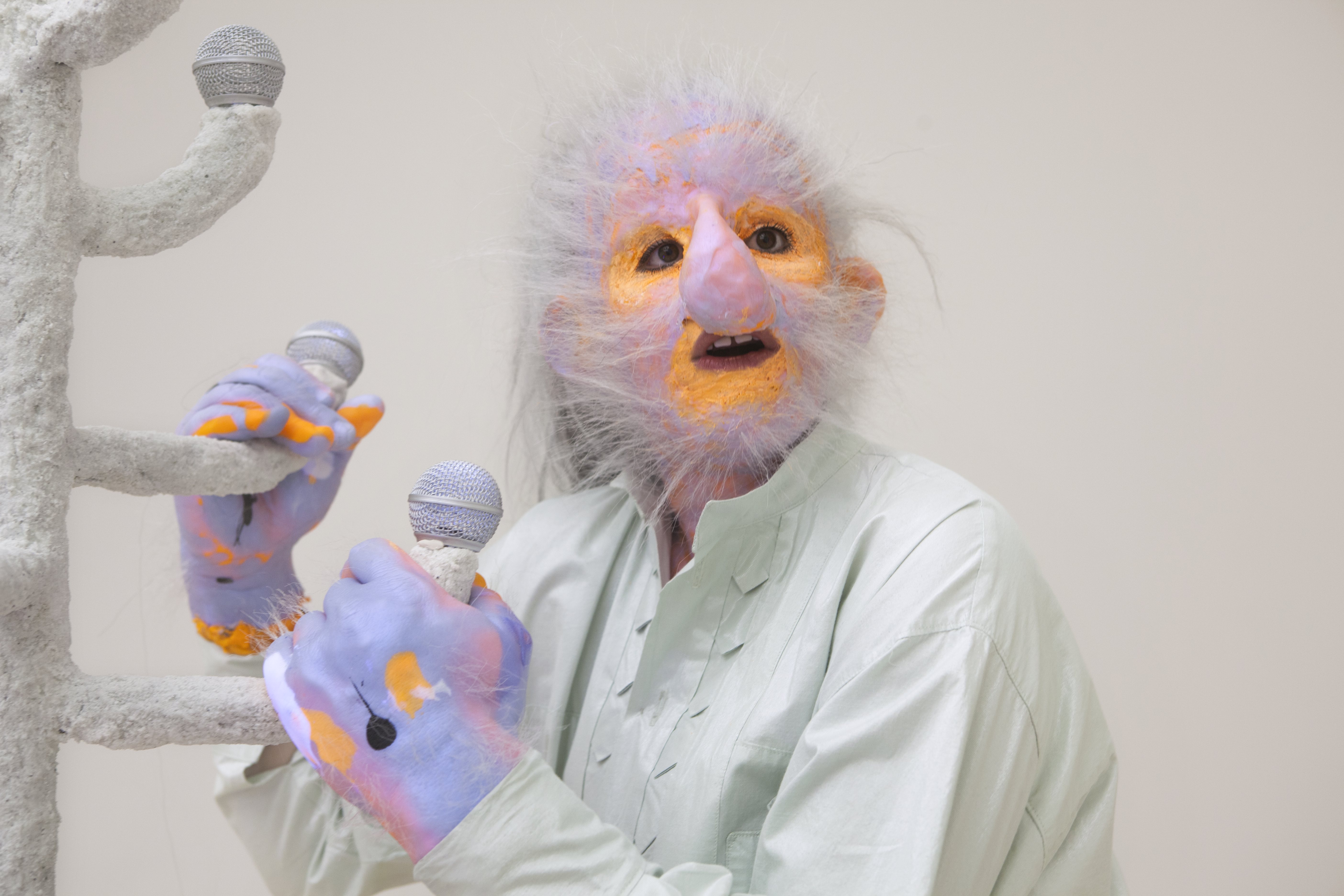
Site : Tha Pom Khlong Song Nam
Jana WINDEREN
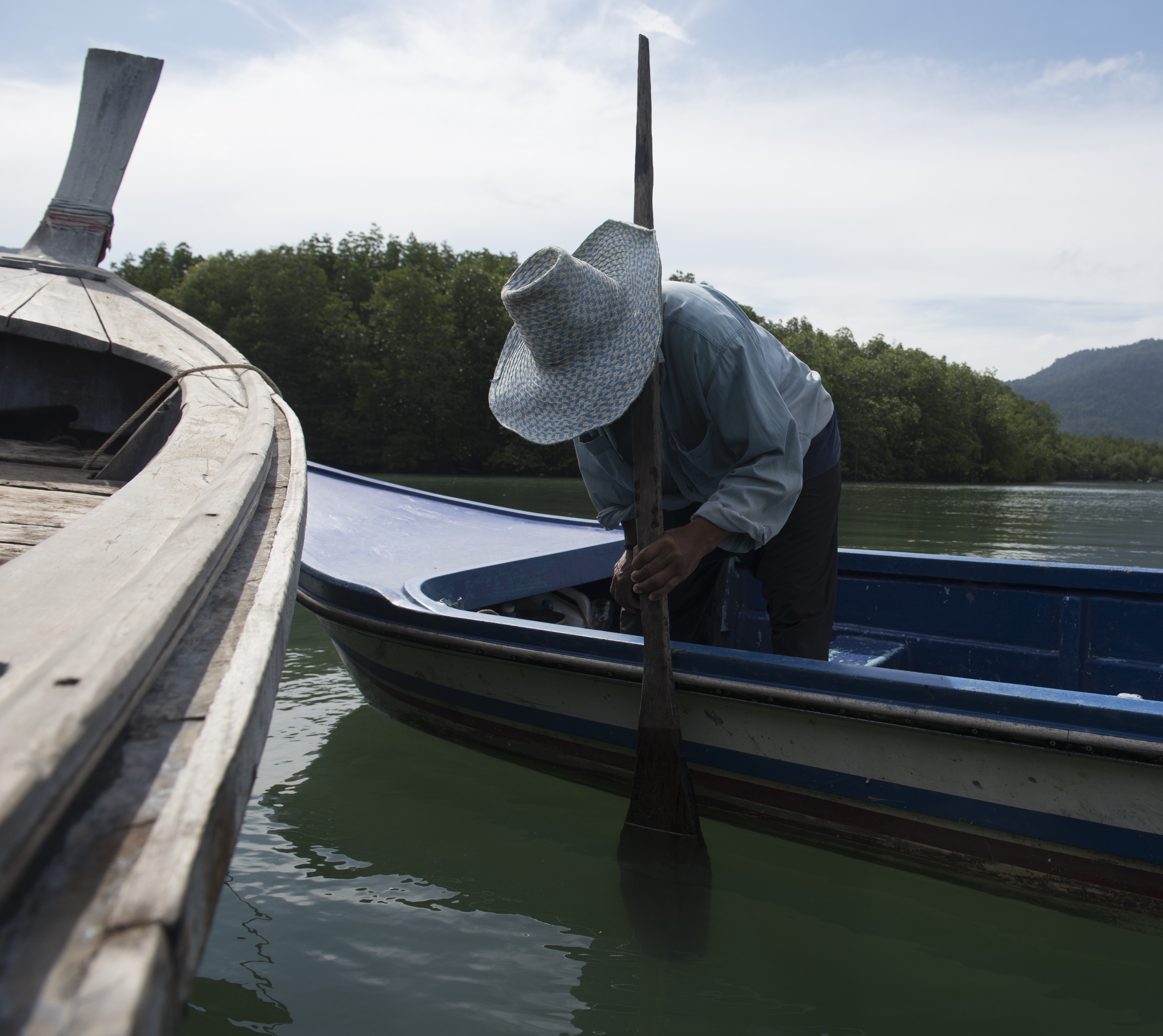
For generations, local fishermen of Tha Pom in Krabi locate fish by placing their heads on a wooden oar or the belly of a wooden boat to listen. This old knowledge is practiced across different communities around the world and circulated in the stories about Greenlanders using oars to listen to whale songs. It is through bone conduction that this way of listening is possible: the sound waves made by the creatures below is carried by the water into wooden oar, sending vibrations to the skull and directly into the inner ear; a hearing mechanism that humans share with marine mammals and fish. Through the bones invites visitors to pay acute attention to the invisible and interconnected network of signs as viewers journey along the river to listen to the underwater environment through the wooden oars and boats. Guided by the local fishermen, the journey begins at Tha Pom and ends at a pavilion at the edge of the river’s mouth, looking out onto the vast expanse of the sea. There, visitors can reflect, contemplate or simply listen to the surroundings until they are taken up river before the tides gets too low.
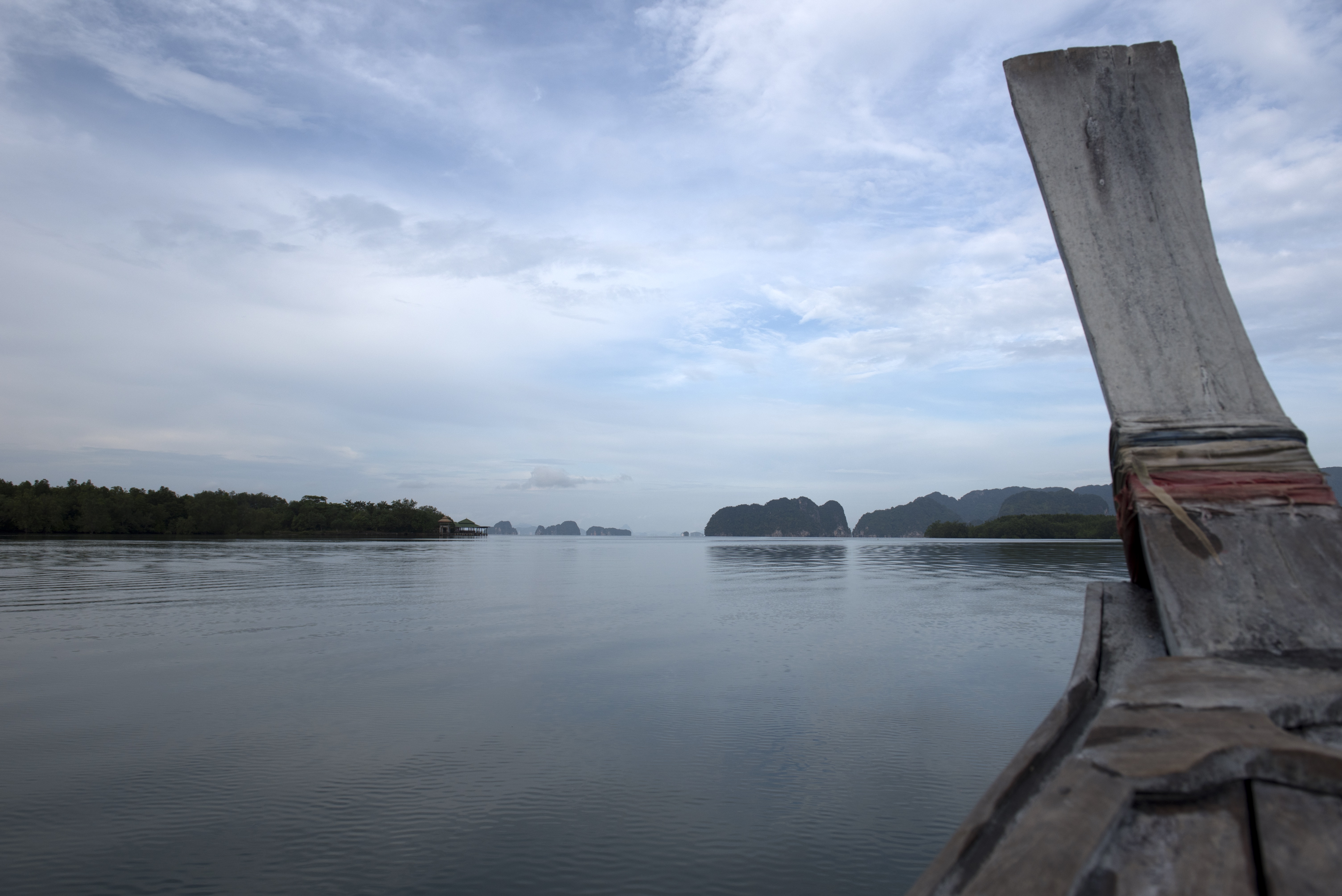
Site : Than Bok Khorani National Park
Amber GINSBURG, Sara BLACK & Charlie VINZ
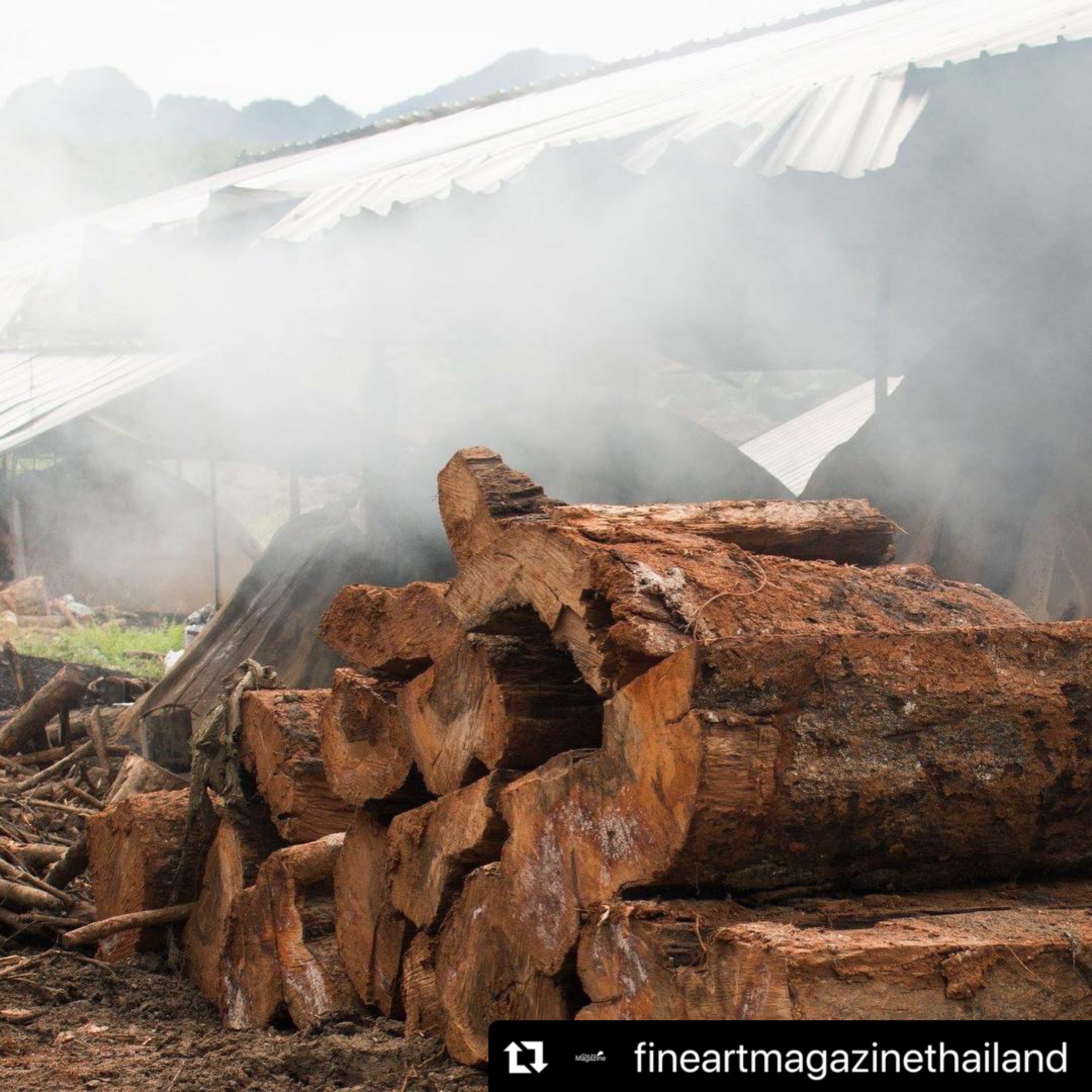
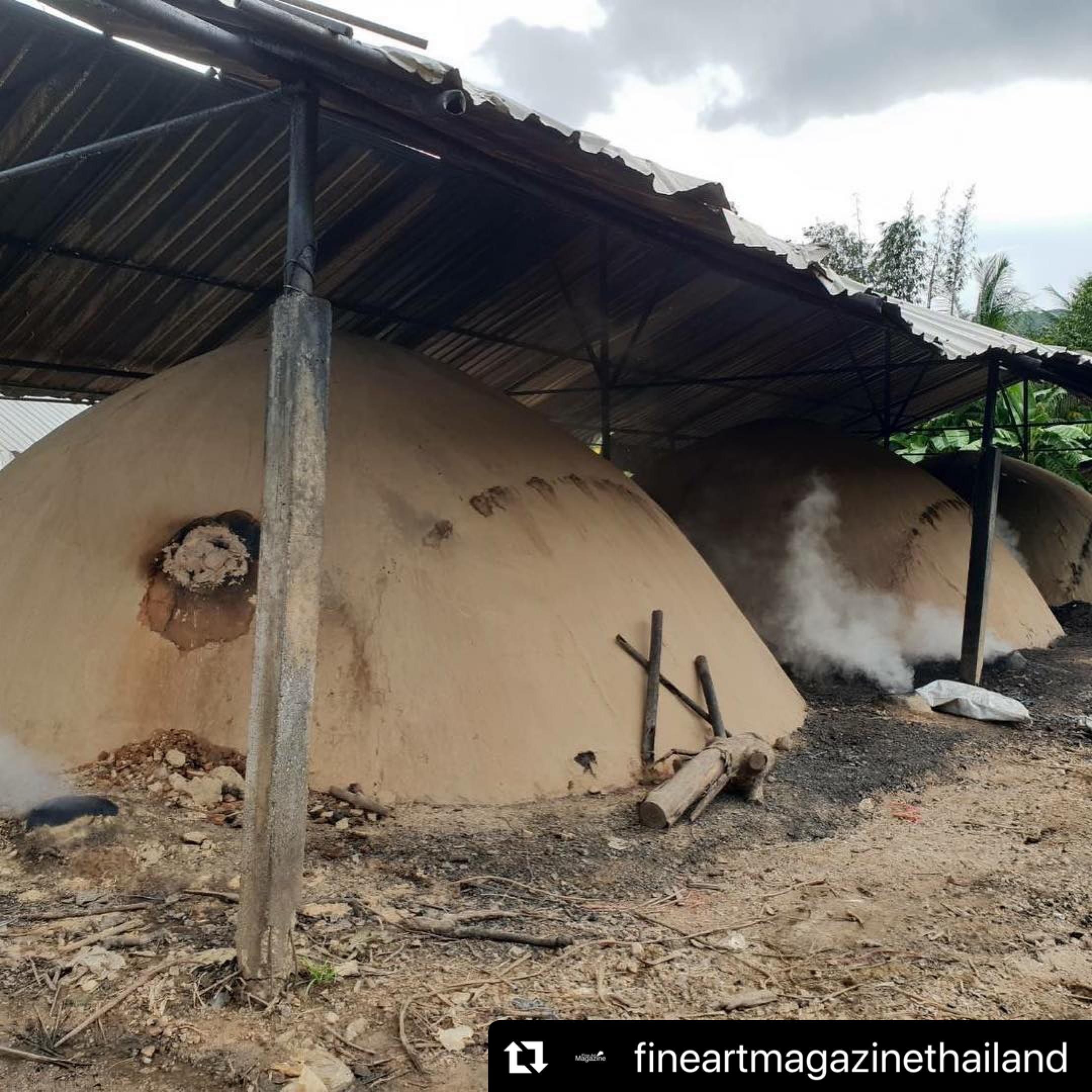
Taking as a starting point the ‘Great Outdoors’, a term by French philosopher Quentin Meillassoux, referring to that which is beyond any framework of human thinking, Le Musée du Grand Dehors attempts to offer a glimpse into this impossibility through a single material: carbon. Carbon is fundamental to all matter in the universe, allowing for a shift away from the human-centric relationship to time and nature into “deep time”. Located in Than Bok Khorani national park, the work captures a breath in the carbon respiratory cycle: a once living tree is charcoalised into pure carbon, holding it for 2,000 years. The museum’s interior reflects the changing environment of the forest. With the dimly lit interior and irregular walls covered in stucco blackened by charcoal, and designed to direct natural light from outside to subtly illuminate the sculpture, visitors have to readjust their senses in their encounter with the sculpture. Does the ‘Great Outdoors’ require one to look “outside” to nature, but does it also shift one’s relationship to it?
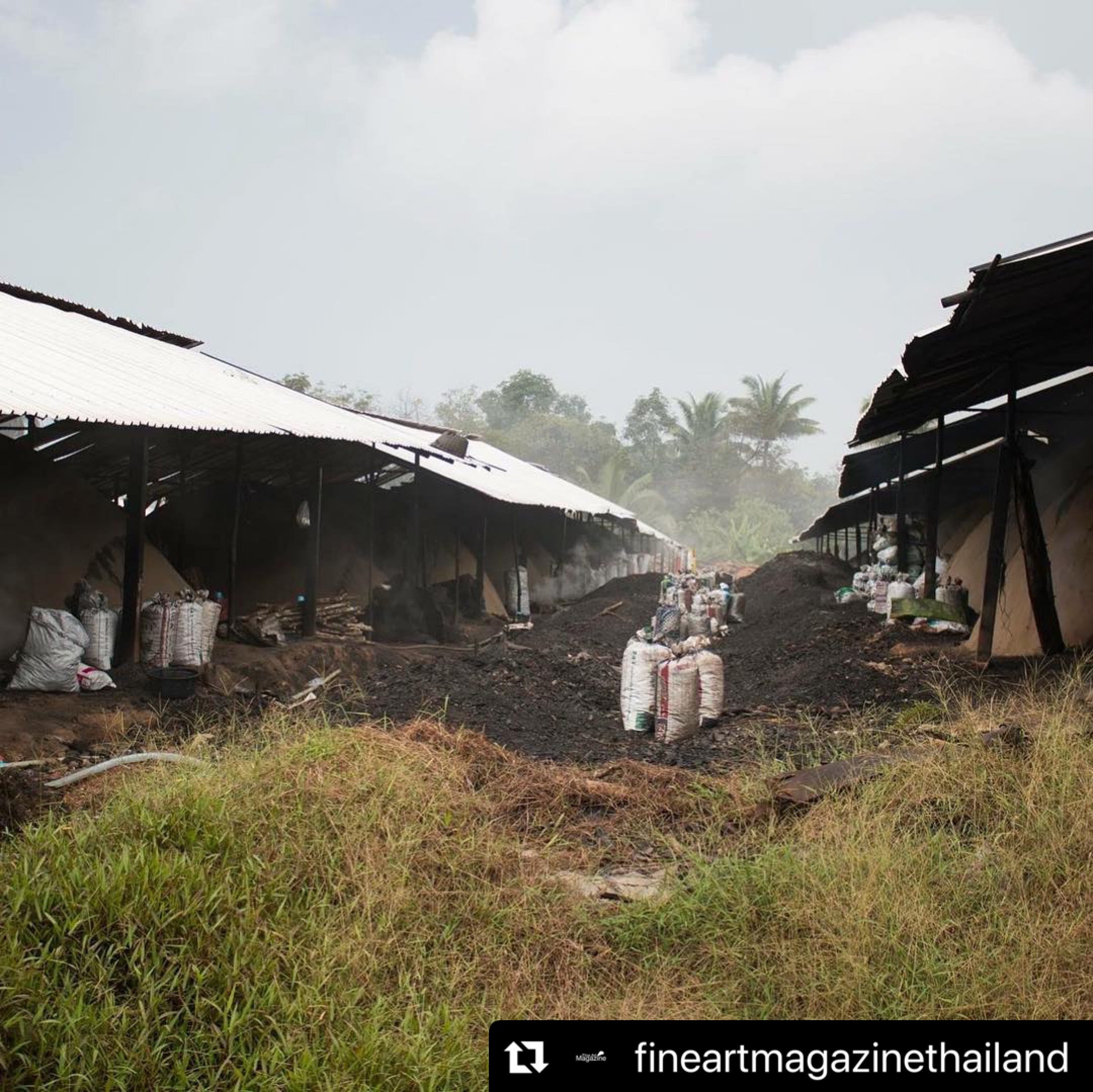
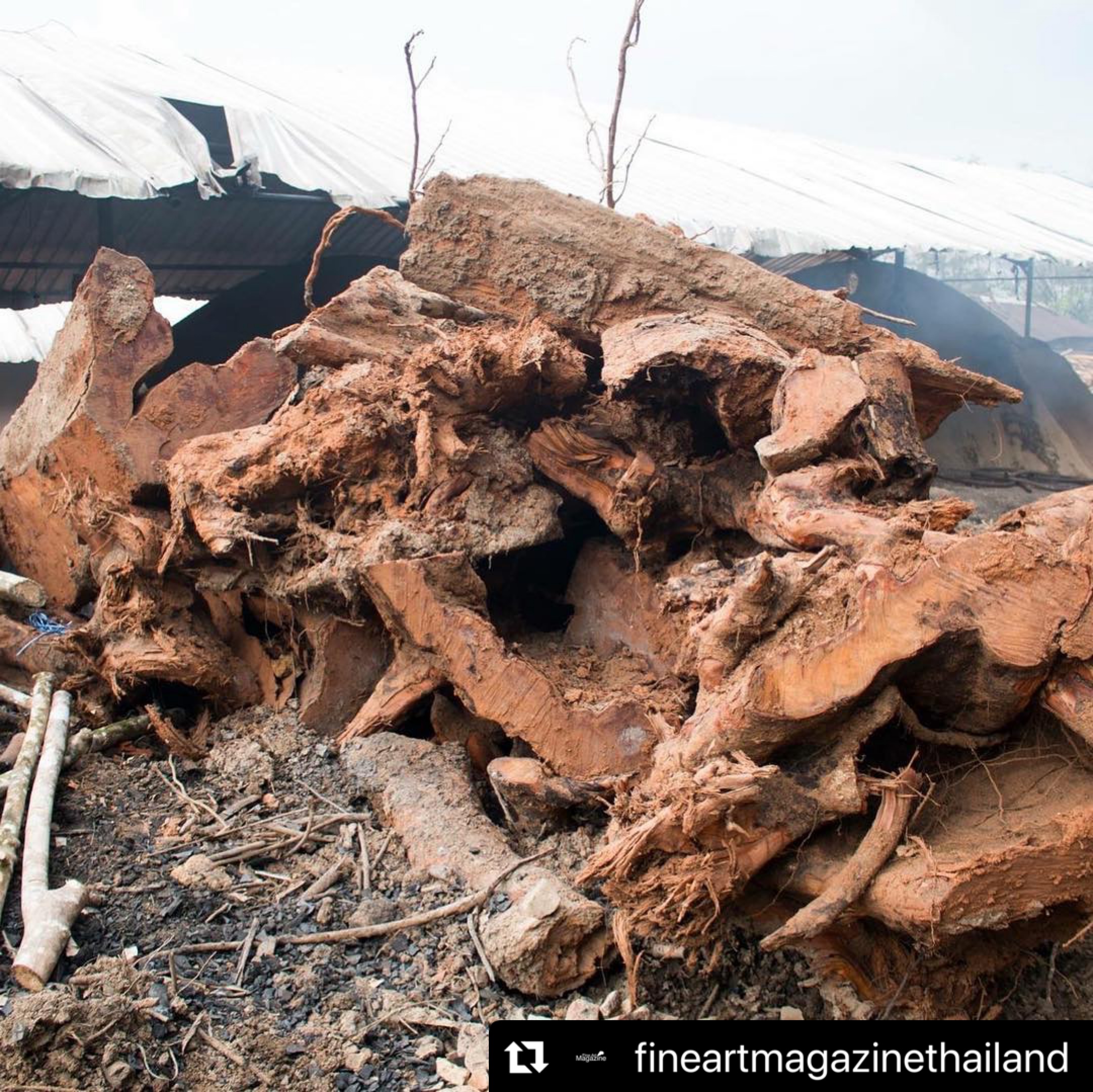
Richard STREITMATTER-TRAN & Visarnsak SAVANGKAEW
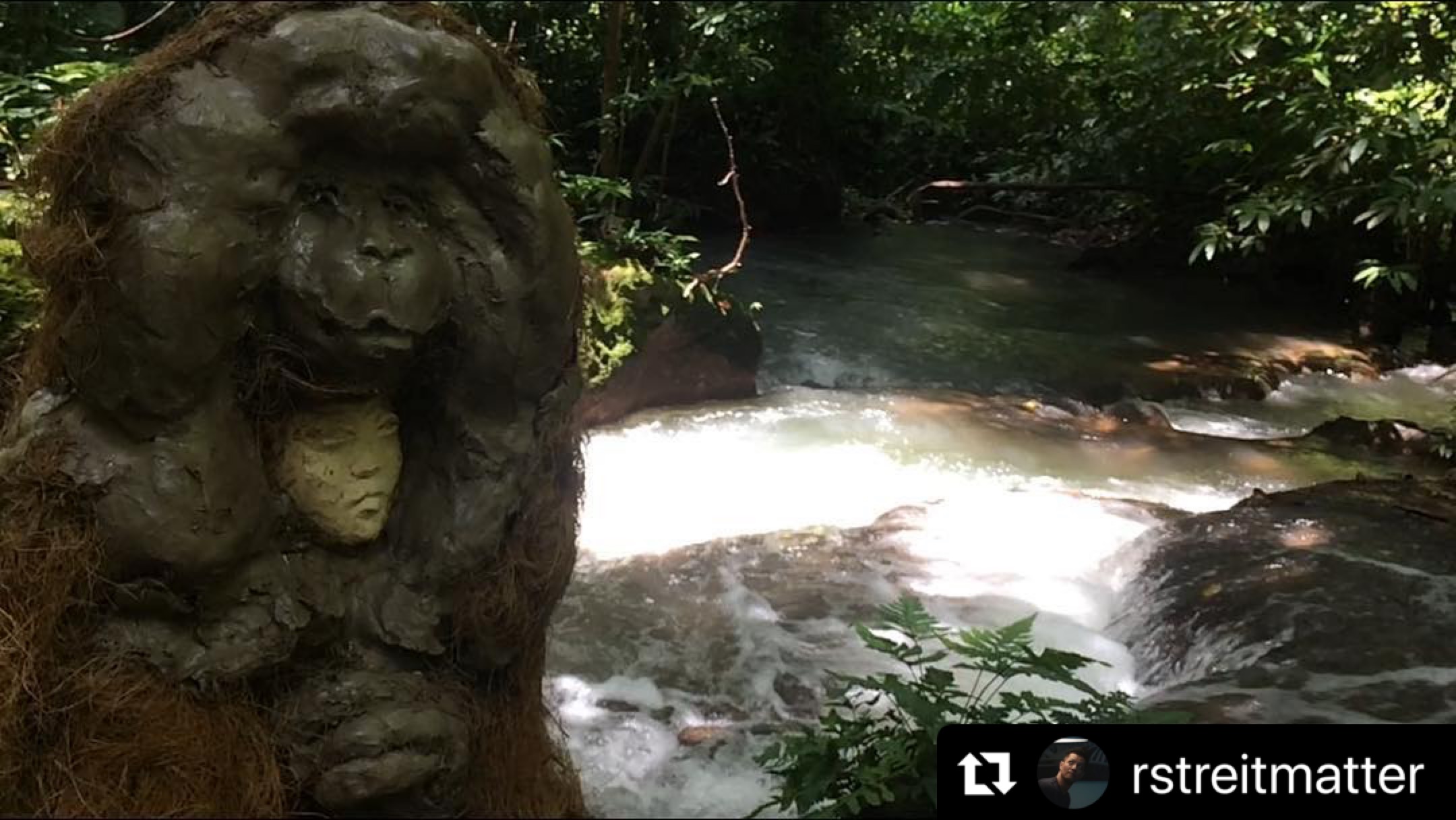
Richard Streitmatter-Tran has a wide-range of practices but his recent focus involves the investigation of materials through sculpture, painting, installation, and drawing. For Thailand Biennale, Streitmatter-Tran collaborates with a Krabi-based sculptor, Visarnsak Savangkaew, to explore the complexity and excitements of natural materials. Inspired by the mythologies of Manohara, the Kinnari who is the half woman, half bird heroine in Jataka tales, the two artists generated Anima. This work is a group of nesting sculptures in the shape of various animals that have at their core, figurines of the Kinnari goddess. These human/ animal hybrids reflect the important yet fragile relationship between humans and the animal world. As the sculptures stand by a waterfall in Krabi for the duration of the Thailand Biennale, the outer layers of the sculptures are expected to eventually peel and fall away due to the rain, wind, and sunlight, revealing the mythical Kinnari inside.
Rikuo UEDA
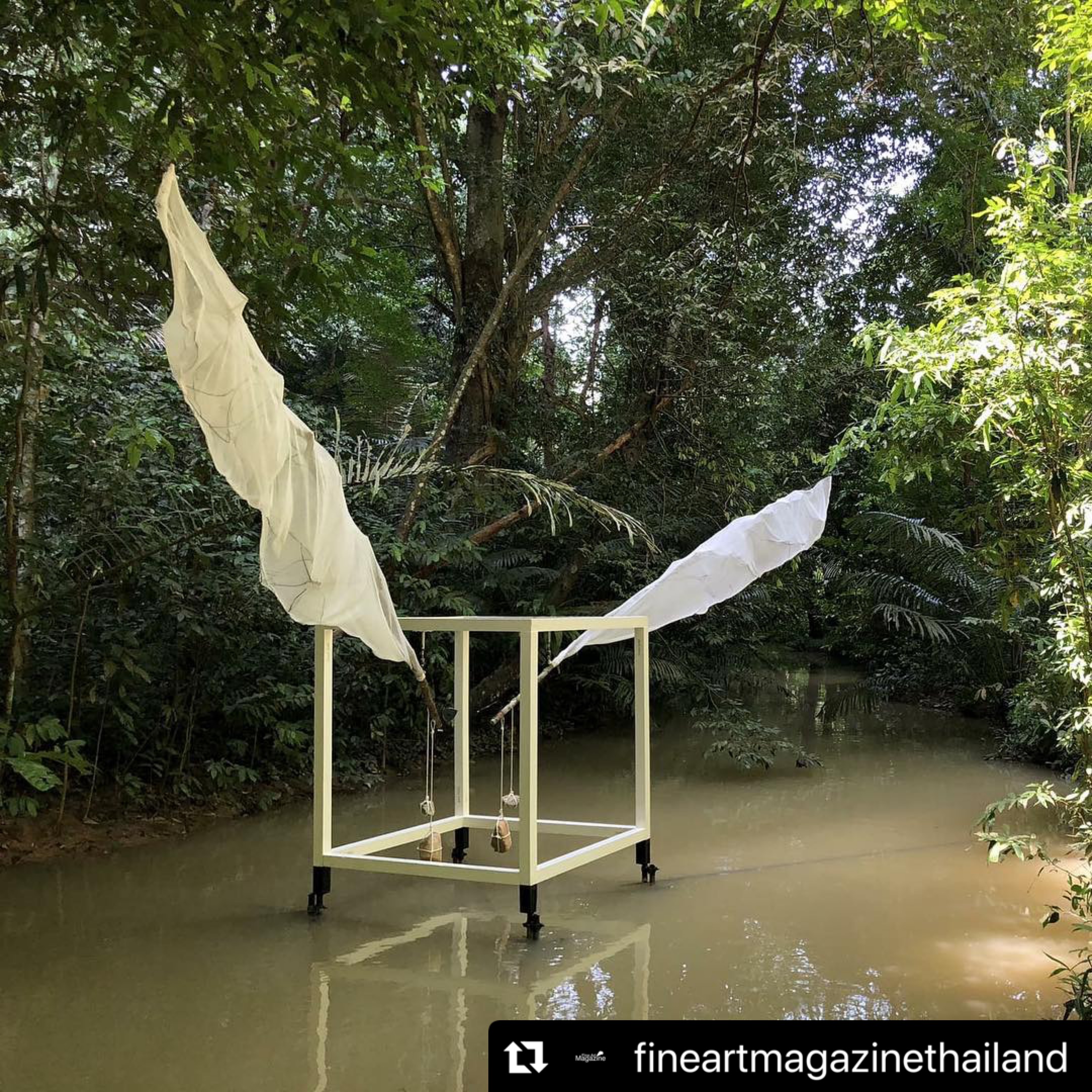
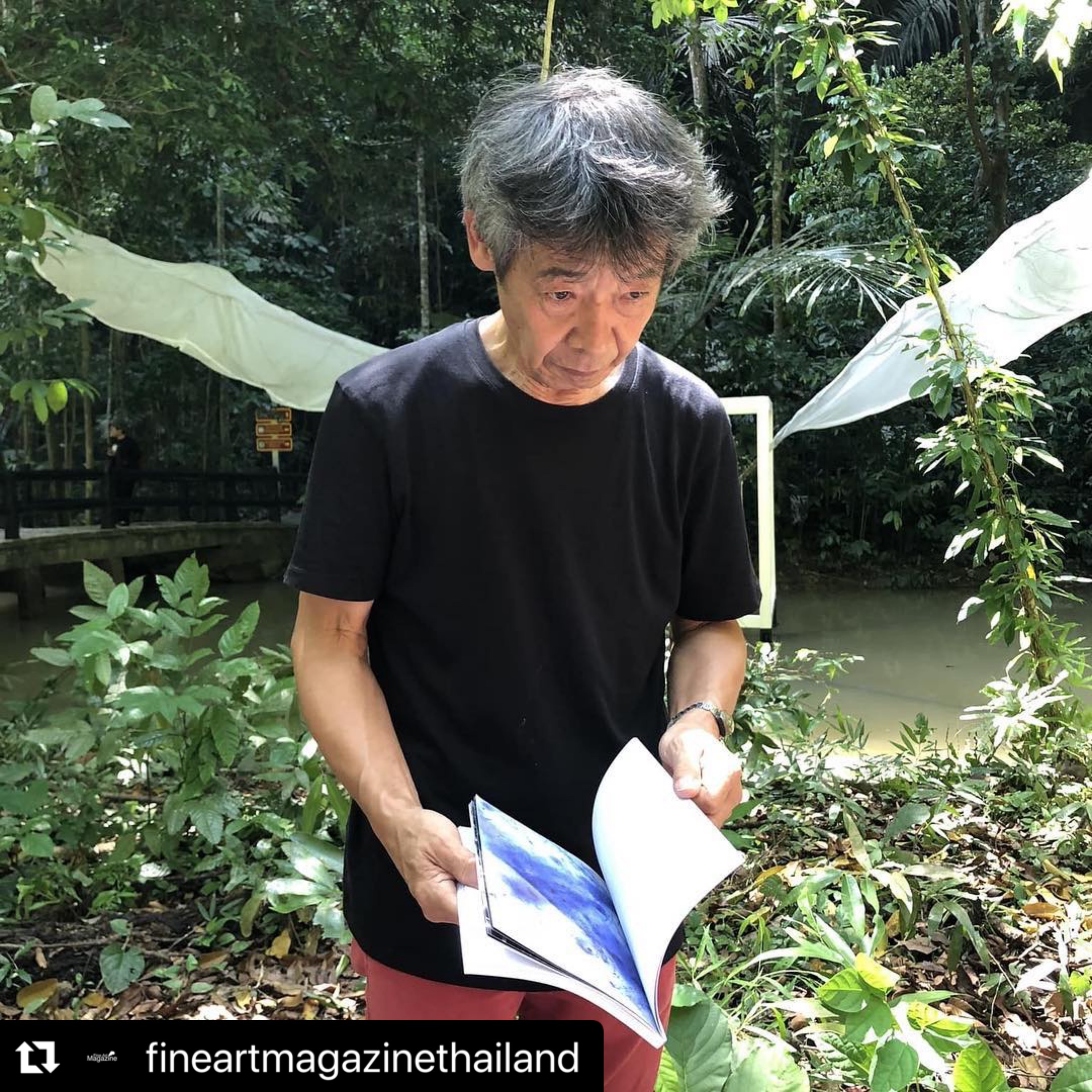
Rikuo Ueda is interested in the force of nature and the cosmic view of the world, especially in the secret world that quantum mechanics offers. Throughout his career, the artist is known for his unique practice of ‘wind drawing’. To achieve this, the artist sets up a very simple mechanism that lets nature create an artwork. On some occasions messages are also carried along with the wind. The artist feels that there seems to be no difference between life and death in quantum mechanics. This is a viewpoint shared by Buddhist and Vedic philosophies from thousand years ago. During the site visit in 2017, the artist drew a postcard using a garden leaf and the wind of Krabi. He sent the postcard to his wife, who had passed away. For the biennale, he sets up a wooden frame in the form of a house in one of the ponds at the Than Bok Khorani waterfall. During the four months of the exhibition, the wings receive wind from the waterfall and uses it to draw a reply from his wife on letter stationary. It will be written with the sound of Kinnaree plays.
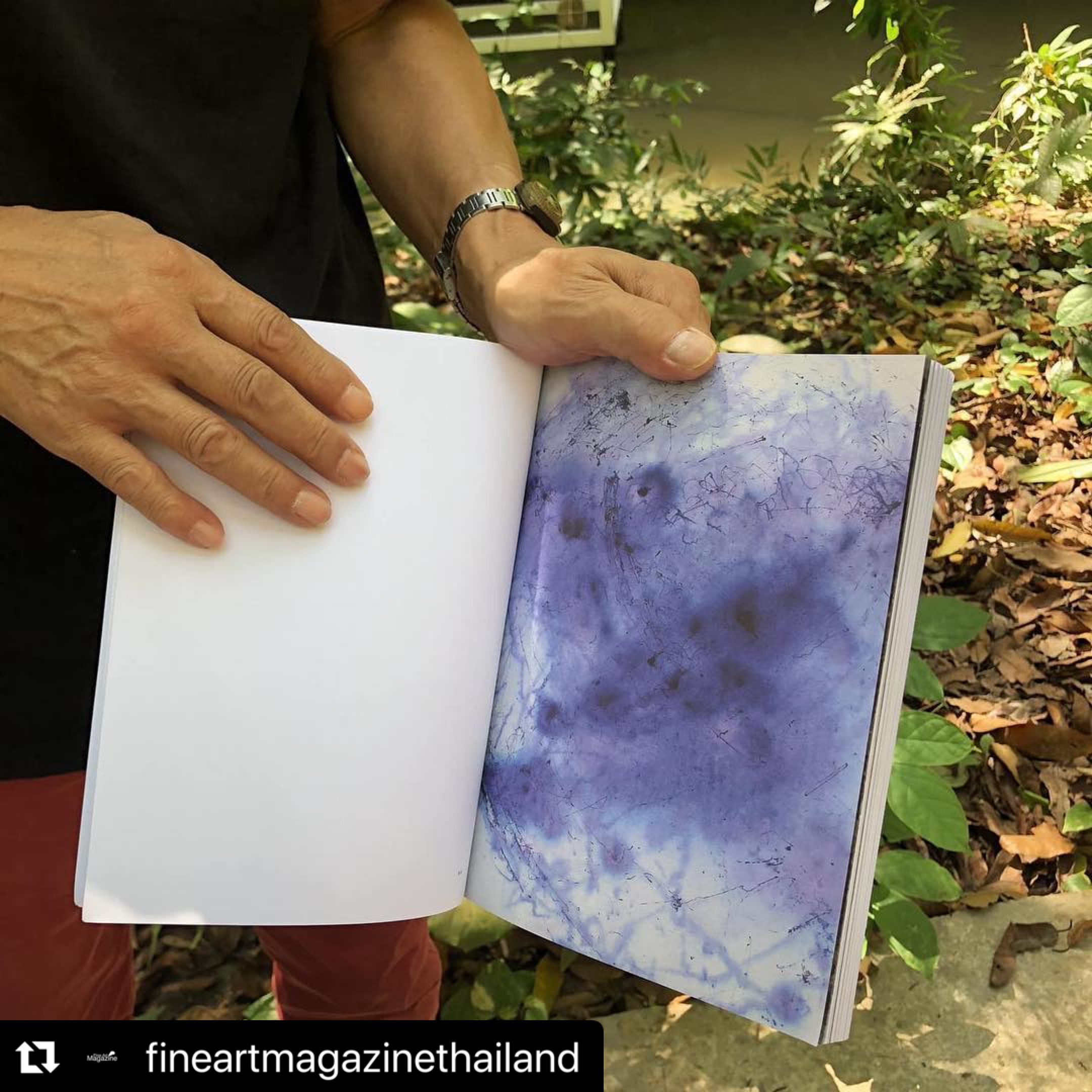
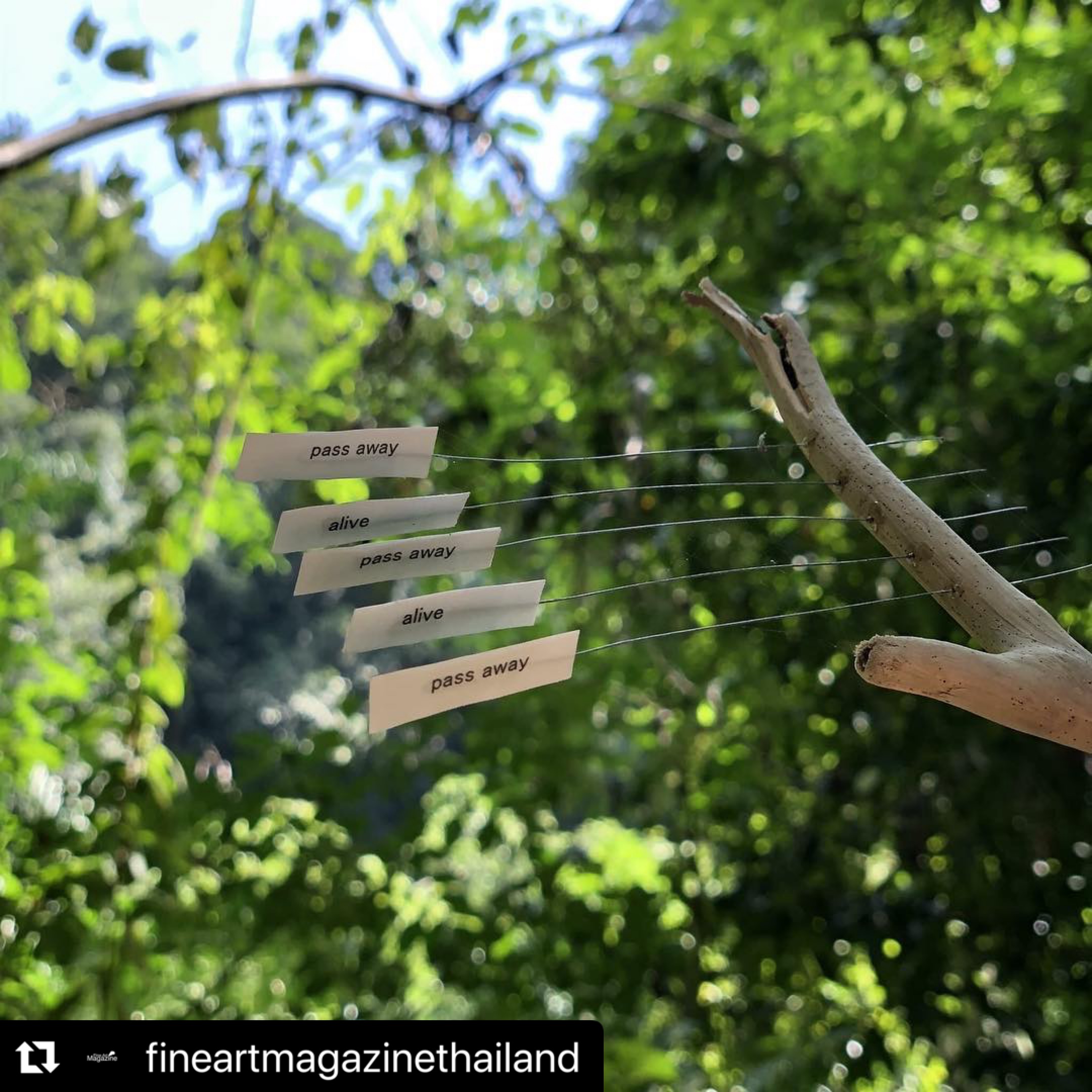
VERTICAL SUBMARINE
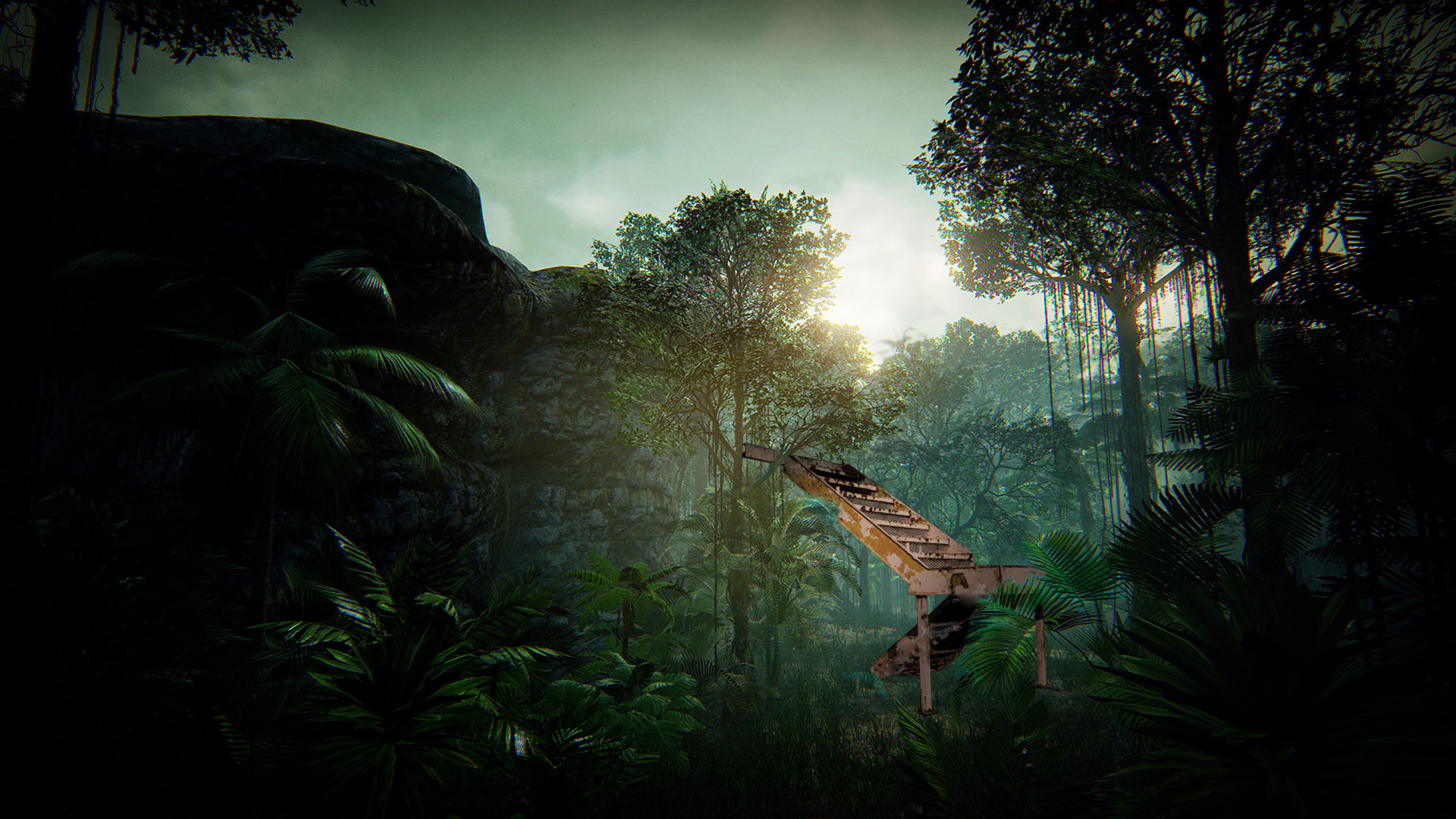
One of the aspects that is prominent in Vertical Submarine’s practice is their interest in creating a visual intervention that challenges the perspective of the viewer. Mirrors and copulation are abominable, since they both multiply the numbers of men… is as a labyrinth without physical walls or boundaries that takes a cue from the diverse path visitors can take to navigate their way to Than Bok Khorani Waterfall. The viewers will encounter two similarly abandoned bridges in seemingly identical settings and space. Through these repetitious encounters, the viewers would experience a sense of déjà vu, questioning if they had returned to where they were earlier. The abandoned bridges are marked by remnant imprints of Chinese papers reporting the disappearance in Sumatra during the end of World War II of the Chinese writer, Yu Dafu. The bridges are reminders of a forgotten historical event in Southeast Asia tropics and connects the fenced national park with its broader narrative.
WANG Sishun
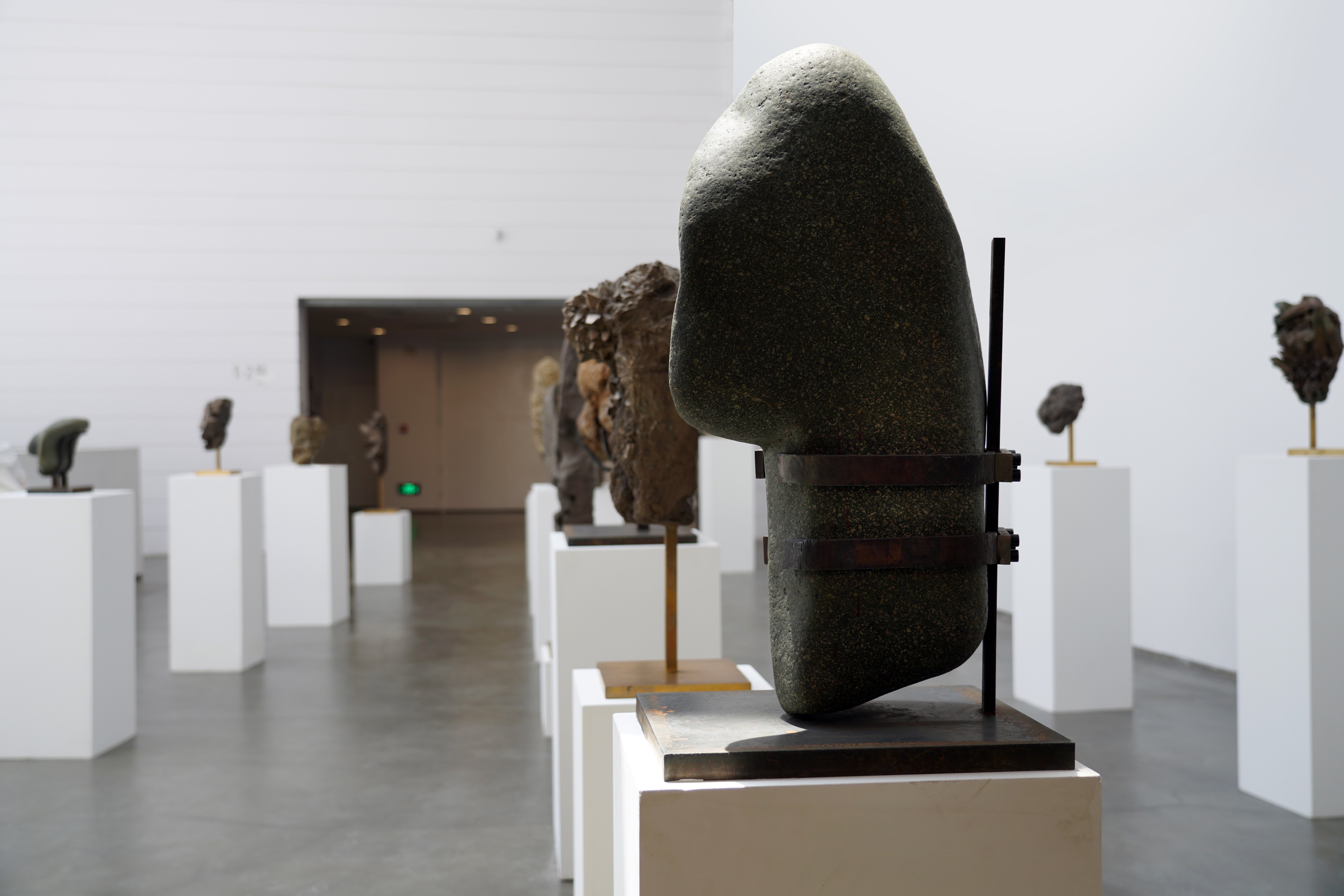
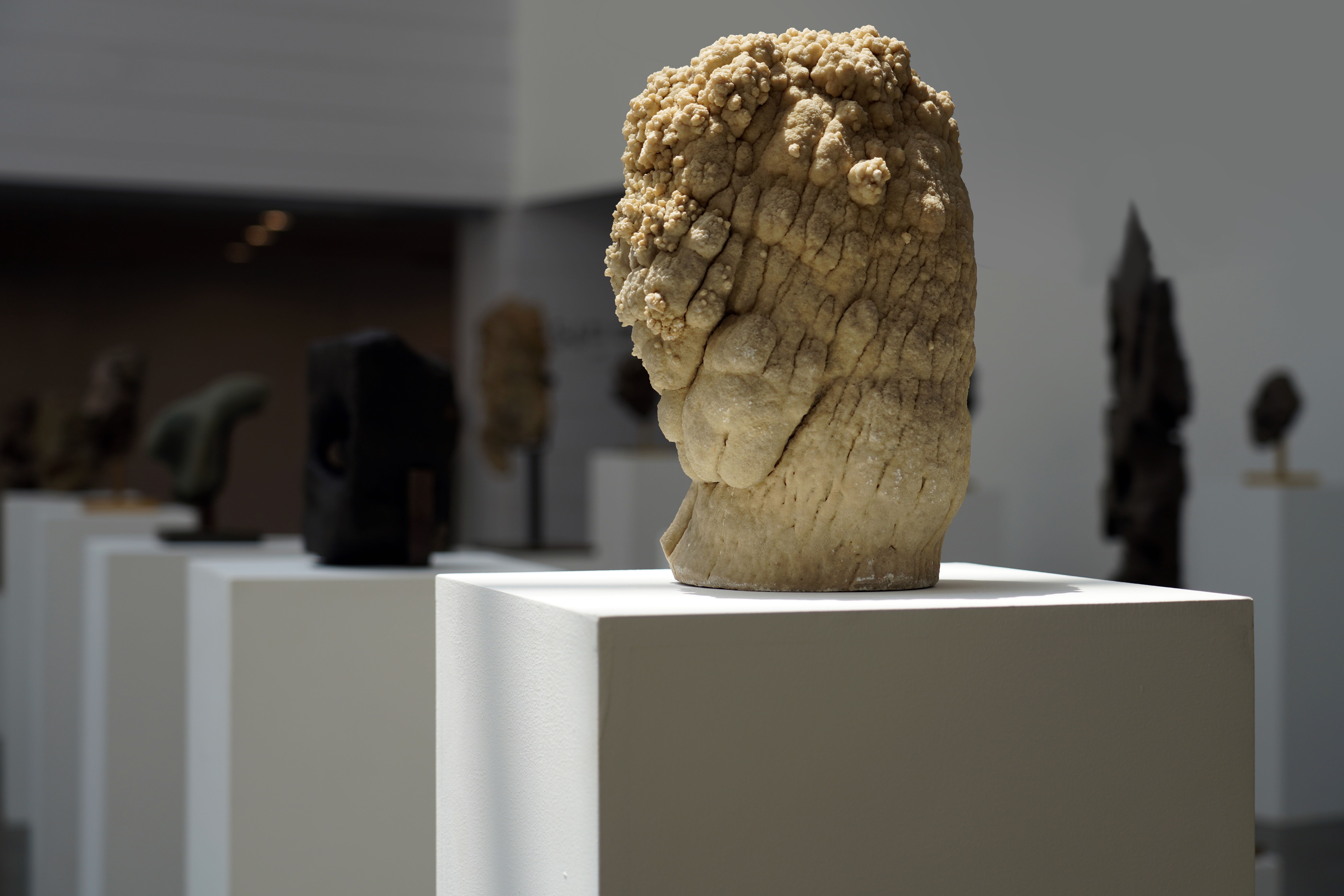
The metal sculpture, located at the entrance of the Than Bok Khorani National Park, reproduces one of the molten rocks on the uneven and coarse stone façade along the pathway. It is part of the artist’s series Apocalypse. Throughout the years, he has collected hundreds of stones from all over the world. These rocks are like portraits, which embody the human spirit, morality, faith, destiny and the intrinsic nature of all human beings. These stones, differing in sizes, shapes, colours and textures, resemble human lives: they both come from various worlds and locales, races and identities, past and future. Their own intrinsic nature and values, such as the sacred, the noble, the ugly, the evil. They blend and clash with each other. They are shaped by time and their own a fundamental vitality and power.
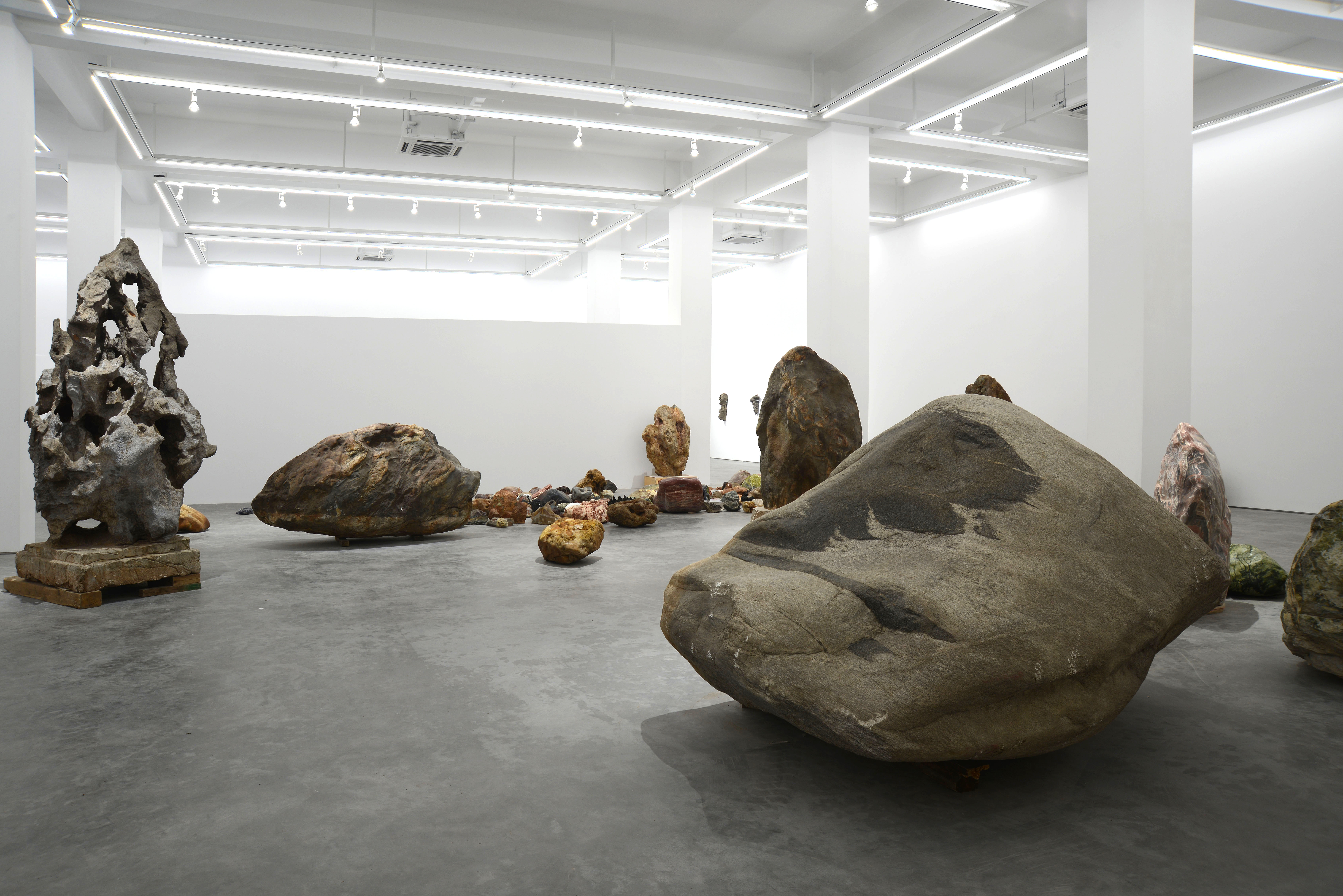
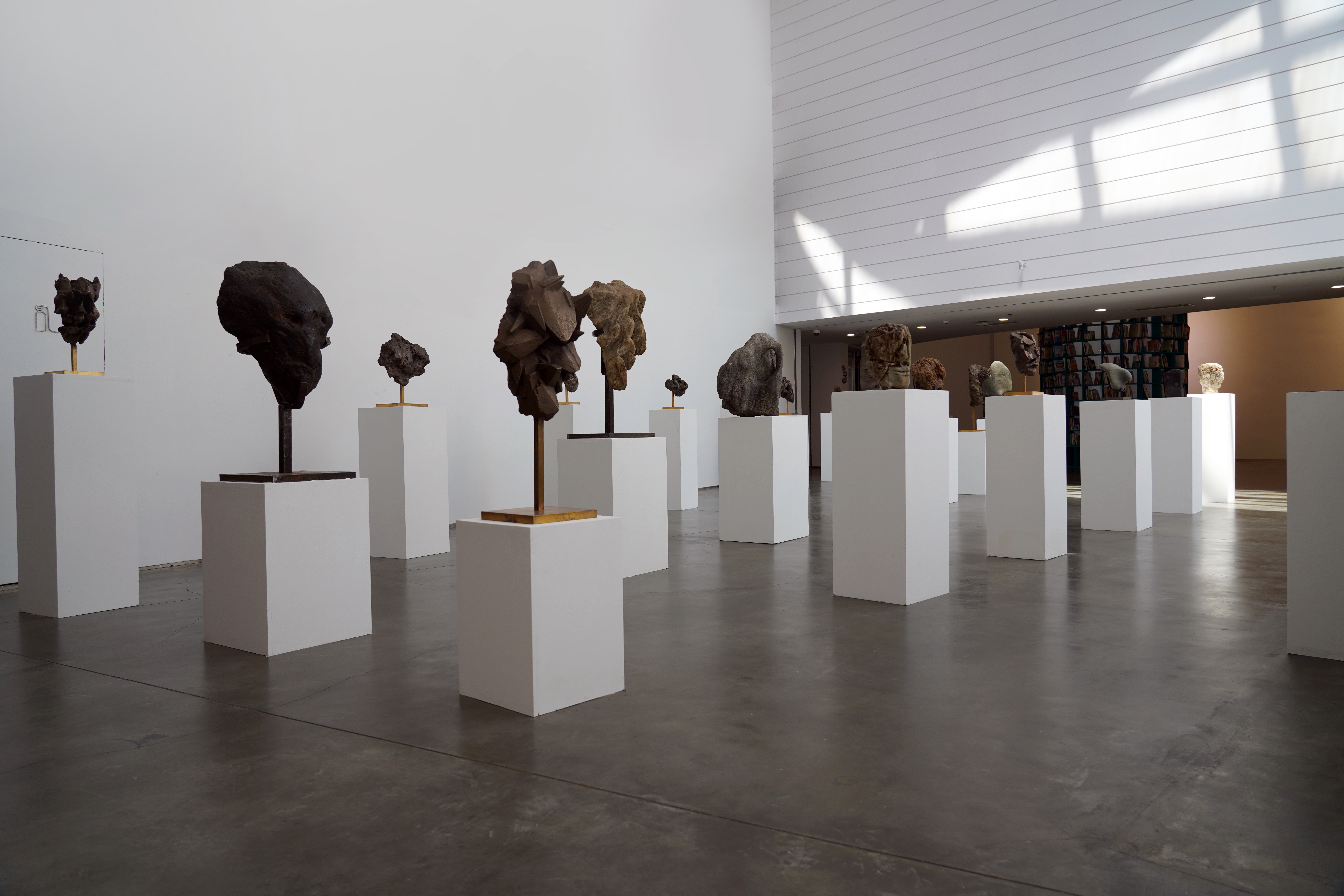
ZHENG Bo
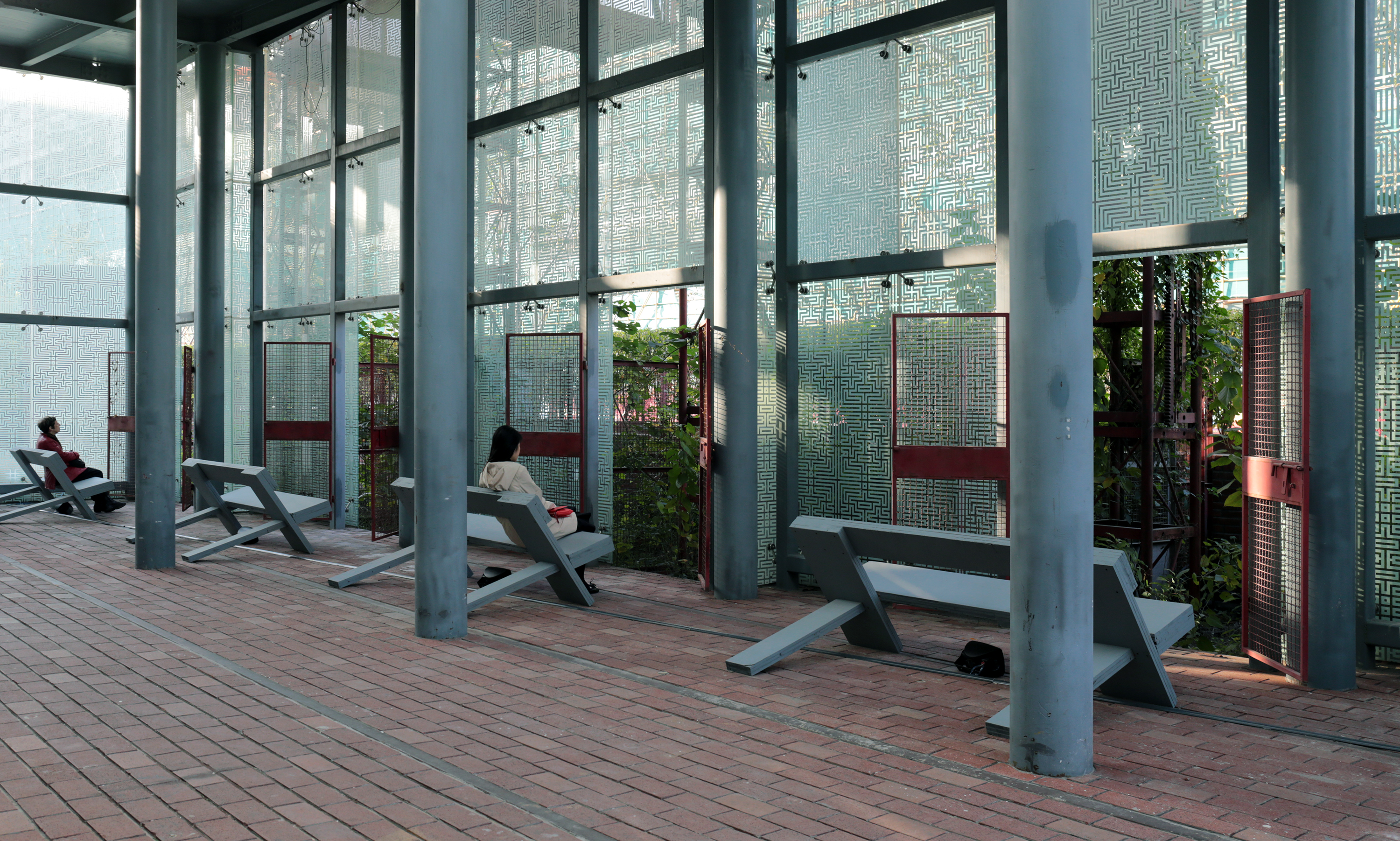
Working with a local organisation of orchid growers in the Ao luek district to create a botanical installation from local orchid species, Zheng Bo’s Life is hard. Why do we make it so easy? will thrive in Than Bok Khorani National Park during the four months of the exhibition period. The installation’s title is inspired by Jon Jondai’s famous talk Life is easy Why do we make it so hard? Jondai is a farmer and one of Thai’s activist for sustainable living. The artist modified Jon Jondai’s statement to point out another aspect of the ecological crisis. Mankind has made lives too easy while making the lives of other beings too difficult; life on earth is not easy and is supposed to be hard.
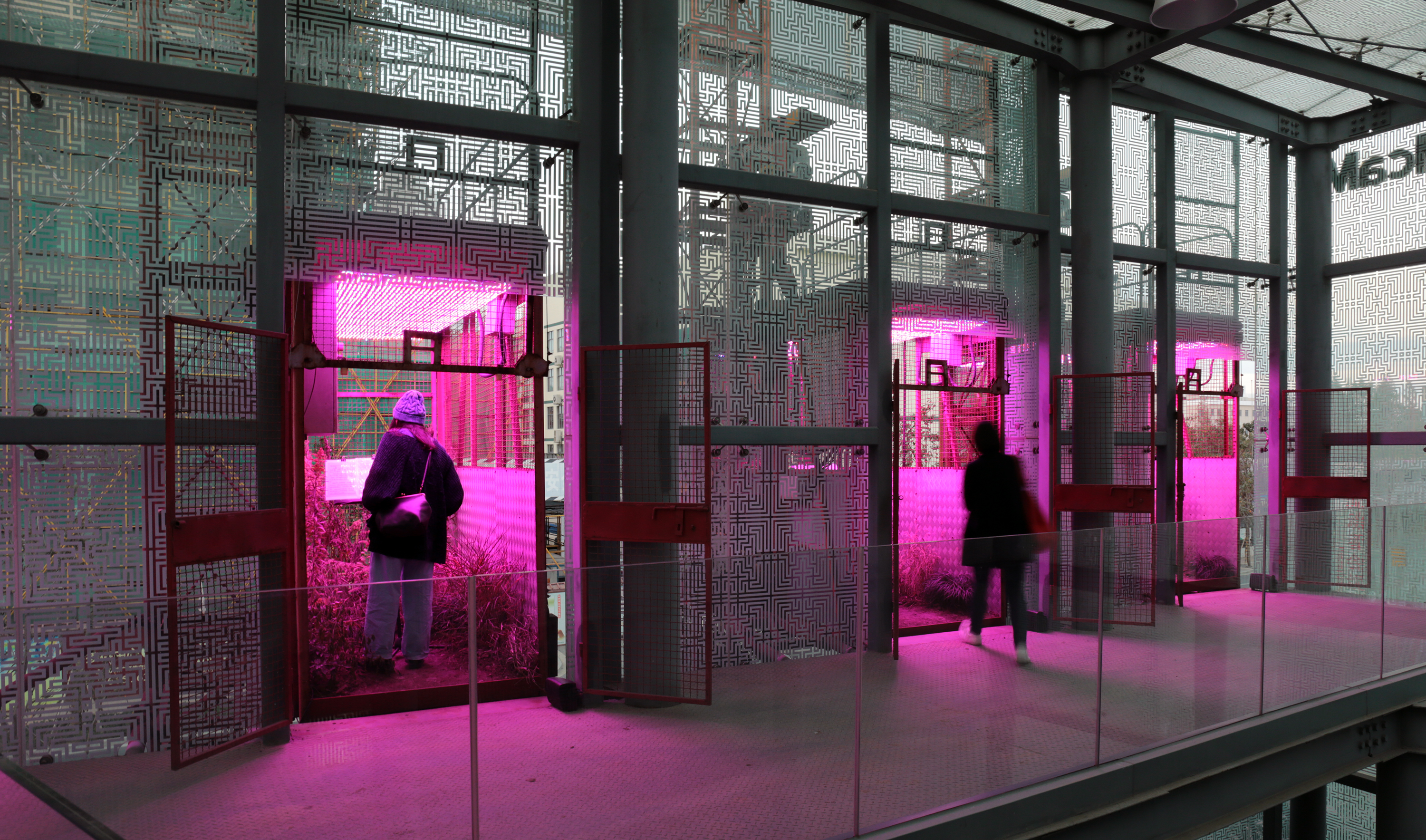
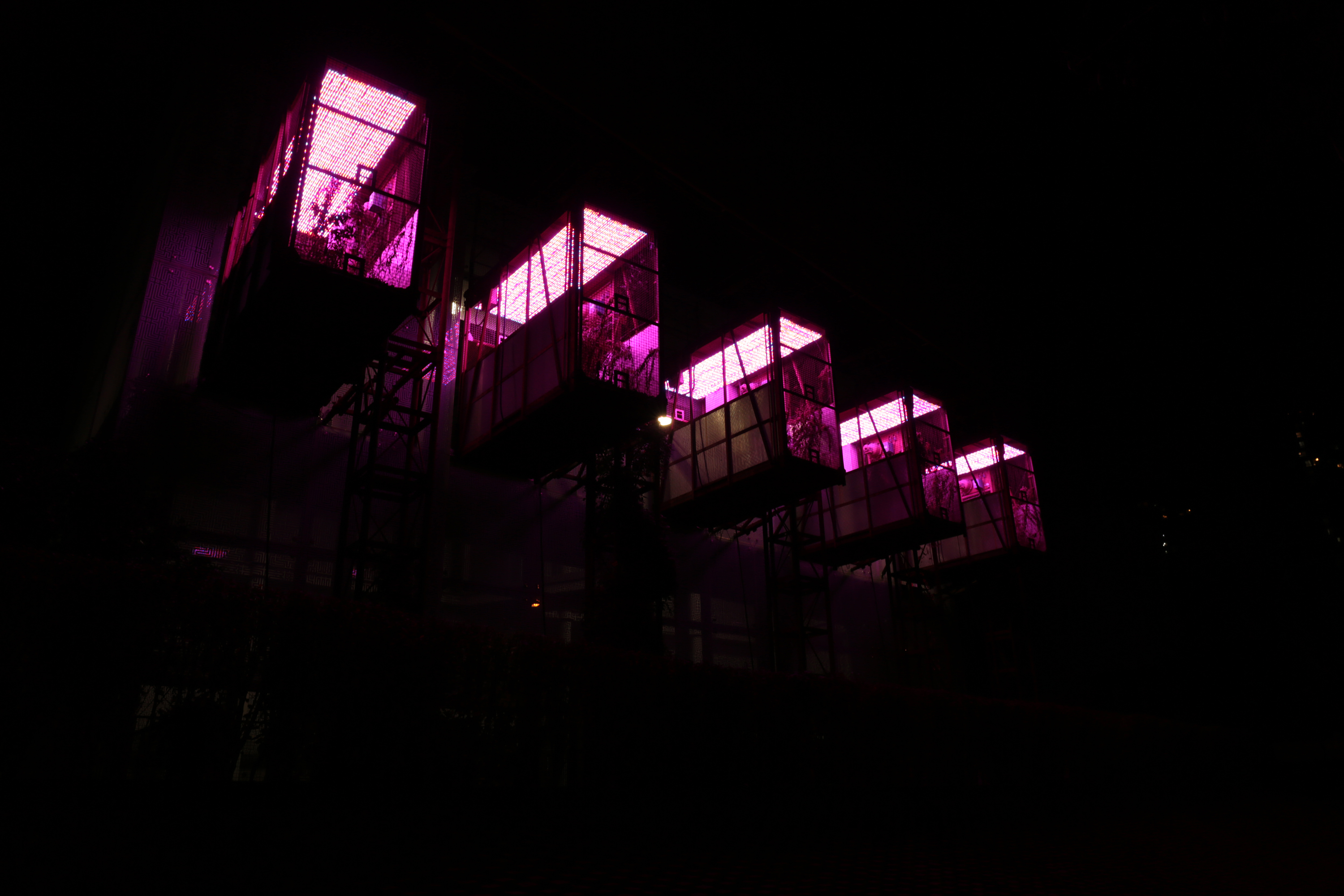
The first edition, Edge of the Wonderland, presents site-specifically commissioned work by 57 artists, including 50 artists (groups) from 25 countries and areas, invited through our curatorial research. Additionally, 3 artists (groups) were selected by the Jury Panel through the Artist Open Call and 4 National Artists of Thailand were recommended by OCAC. This Biennale encourages visual explorations, engenders a new way of thinking, and invites everyone to join the journey, an adventure, and to reflect on the relationship between art, nature and everyday life.
See More Detail : Click Here
Plan Your Trip : Click Here

